


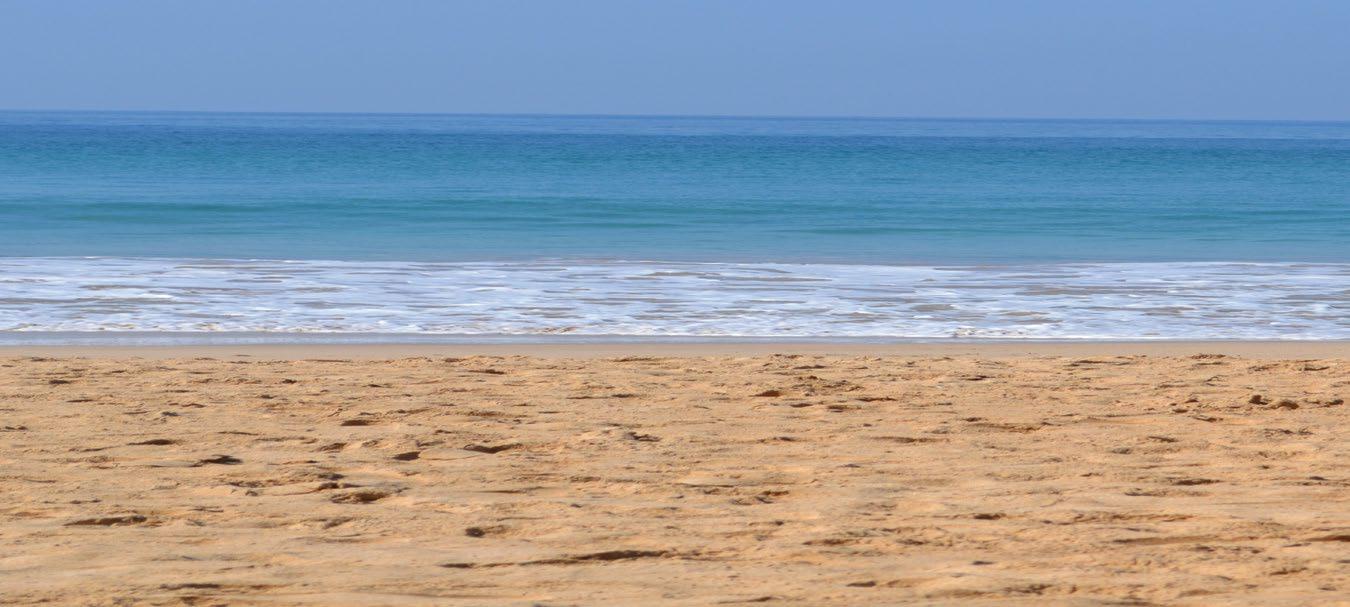
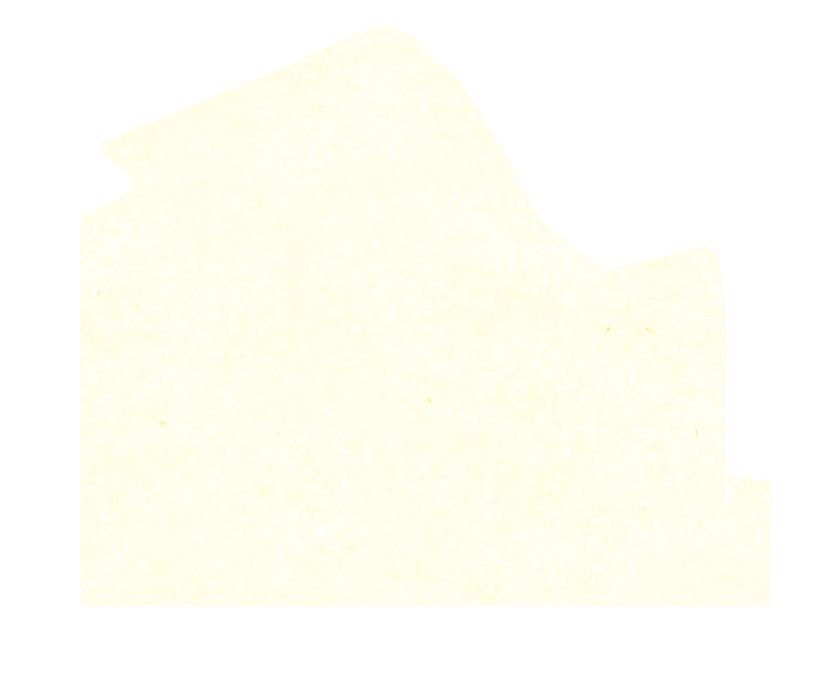
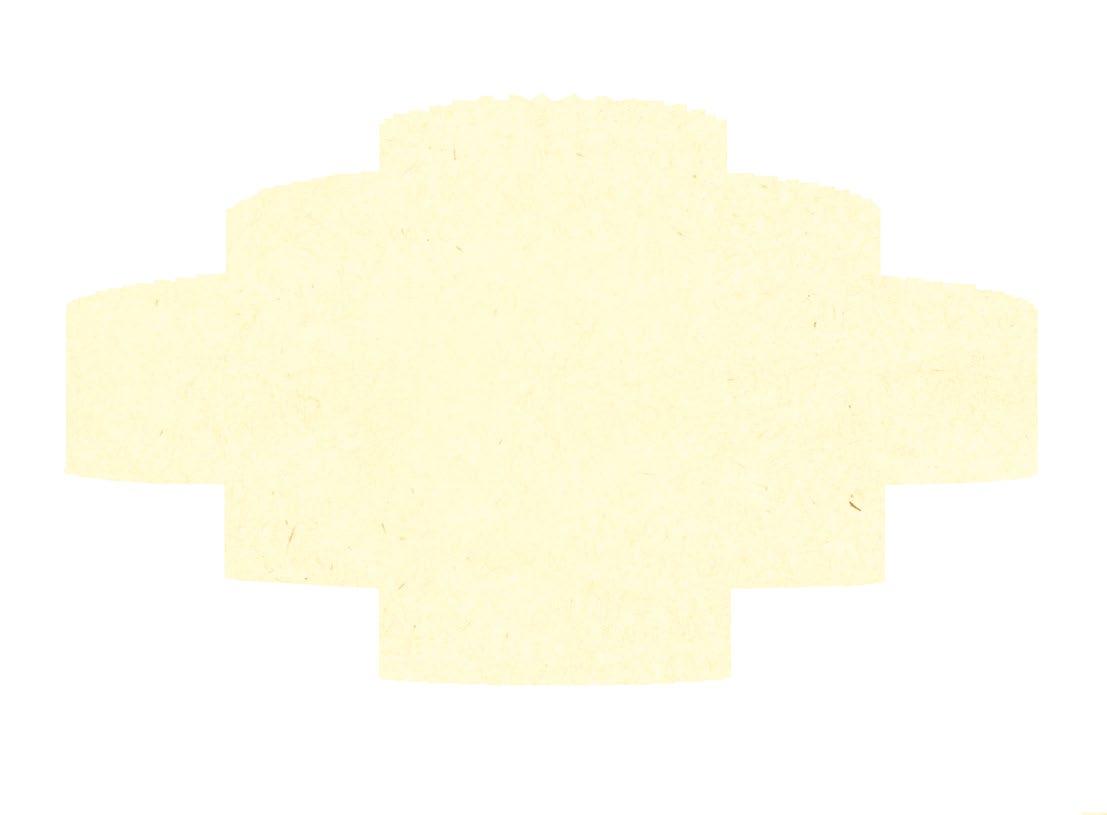
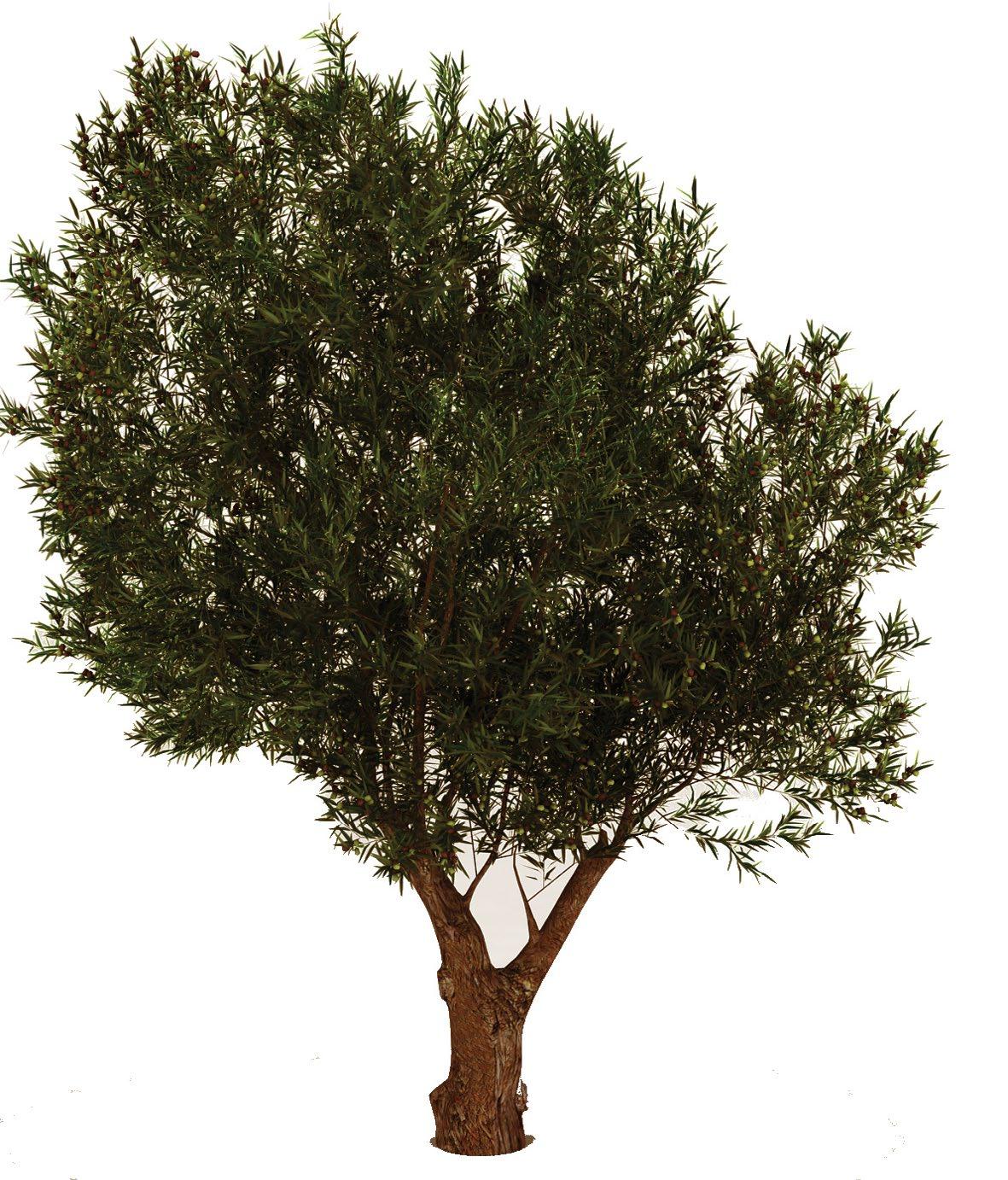
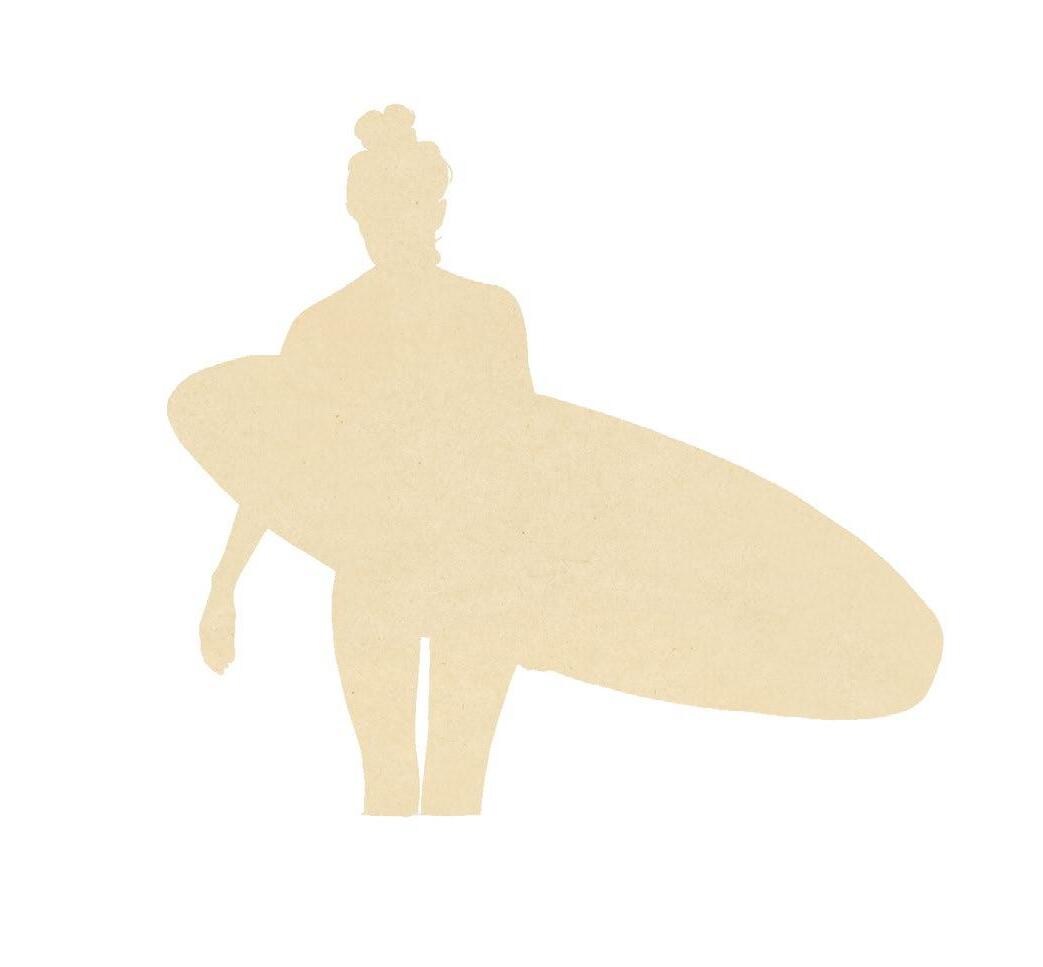
ISRAEL SPRING 6/2017
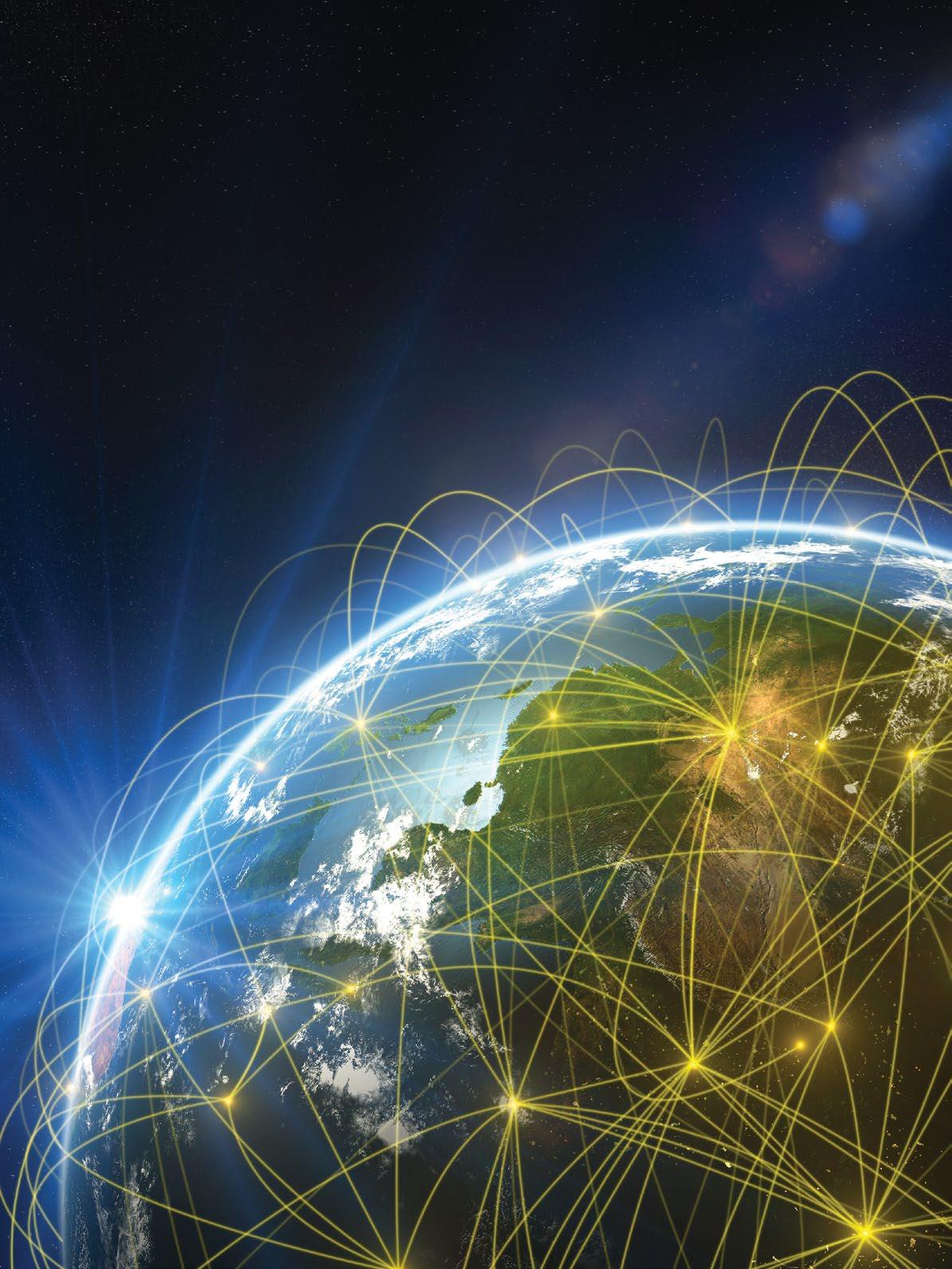
© 2017 EYGeorgia LLC. All Rights Reserved. Asking better questions leads to better answers, which create lasting legacies for the working world. ey.com/betterworkingworld #BetterQuestions What legacy will you create?
Israel is a unique country, old and new at the same time. Until 1948, it was present only on maps of the ancient world. It is an interWesting and diverse land. In this issue, we invite you to travel to Israel, a country that seems familiar but is still unknown.

We will tell you how the state of Israel was formed; how it managed to build airplanes at a time when food was rationed via tokens; what the ancient Hebrew traditions are; why they call Tel Aviv an imaginary city, a fairy tale city; how Israel became a technological leader; how it irrigated the desert, built a fishing industry there and created the most effective agriculture in the world on land that has no soil or water.
We’ll describe how Israel “discovered” fruit and vegetables that need less water, cultivated new species that thrive in the dessert and how performed the famous “Israeli miracle”. When travelling through Israel, it is hard to imagine that 69 years ago when the state was formed this country of 8 million people was full of mosquitos, swamps, a desert, two dead lakes and the dying Jordan river. It was a country with no natural resources, gold or oil.
The “Israeli miracle” has three pillars – use of cutting-edge technologies in many businesses; an immigration policy founded on the concept that “it is better to have many of the best”; and large sums of money invested in science and innovation. Becoming an idea hub is a challenge for any country. It means generating ideas from within the state and using concepts formed in other countries.
Israel is one of the biggest idea hubs in the world. More than 270 multinational companies have a base there. The second-largest Facebook research and development center is located here, as well as Microsoft, Google, Apple, Intel, Samsung, HP, Siemens, GE, Philips, Alcatel-Lucent, Cisco, Toshiba, Barclays, Hutchison and LG spark. These companies are among the world’s leaders in their industries and believe that Israel is an ideal country for them. Israel has one of the world’s largest high-tech ecosystems, with funding of 9 million.
This country can be proud of providing one of the most educated, industrious and multicultural spaces in the world. This multicultural environment creates flexible business ties between different industries and geographic locations. Israel has become a center of research and development, innovation and revolution.
Israel is not only one of the most popular destinations for religious tourists but also the best vacation spot for all travelers. It has beautiful sea resorts on the Mediterranean and Red Sea coastline in Caesarea and Eilat. It offers long sand beaches, red deserts, national parks in Galilee, and an unforgettable gastronomical experience via world-famous Israeli cuisine.
This young state has a centuries-old history, most of which is based on myth. Everything overlaps –truth and fiction, history and modernity – in one city, Jerusalem. This is the city of three religions, a holy place for Jews, Christians and Muslims. The Jerusalem temple was erected here, Christ was crucified here and Mohamed ascended to heaven from here.
EDITOR’S NOTE
1 VOYAGER 6/2017
=Jerusalem is a cradle of civilization, a key to the forces that push mankind forward. It is also a key to what is going on in Israel today. You witness a paradoxical modernity when you follow in King David’s footprints and the old Tsinor, following the water channels as far as Gihon Spring, where the city was founded. You may also enjoy a dessert in Arabic restaurants located in the old crusader temple, visit places holy for Christians and Jews and write a letter to god almighty.
In Tel Aviv, you realize the meaning of the term “city energy”. It is the busiest Israeli city and moves along to a fast rhythm. It is full of famous night clubs and has beautiful streets, a noisy coastline and much greenery. It is made up of the attitudes of the waiters in the cafes and traders in the markets; fashionable restaurants like those in London and New York, and a beautiful yacht port and sea sprinkled with surfers.
Tel Aviv is unusual in Israel because you can travel without fear. You are free to explore. The White City, as Tel Aviv is called, has more than 4,000 Bauhaus-style buildings. It is very friendly, tolerant and has broad horizons. It is mostly Jewish but very multicultural and rich, like Europe’s big cities.
Nobel laureate Shimon Peres believes that the biggest thing that Jewish people have contributed to the history of mankind is feeling of discontent and a constant desire for change. The
nation of Israel is a rock based on patriotism and perseverance, curiosity and inconstancy that is deeply rooted in its history and people.
Despite the constant problems, this county has one big advantage - a sense of higher purpose. Israelis have are strongly motivated, extreme self-confidence, and the so-called “chutzpah” to achieve the unexpected. It takes a lot of confidence to leave your comfort zone.
The Hebrew word “Chutzpah” has no literal translation in any language. It is an unearthly approach to a goal – as if nothing can stand between you and your wishes. “Chutzpah” is a talent of the few. For example, Abraham dared to argue with God when he heard about fate destined for Sodom and Gomorrah. Moses disputed with god to save his people even when they were sinful. King David was not afraid of Goliath, who persecuted Jews.
Contemporary Israel is an example of goals confidently reached.
Tea Skhirieli Editor-in-Chief

EDITOR’S NOTE
2 VOYAGER 6/2017

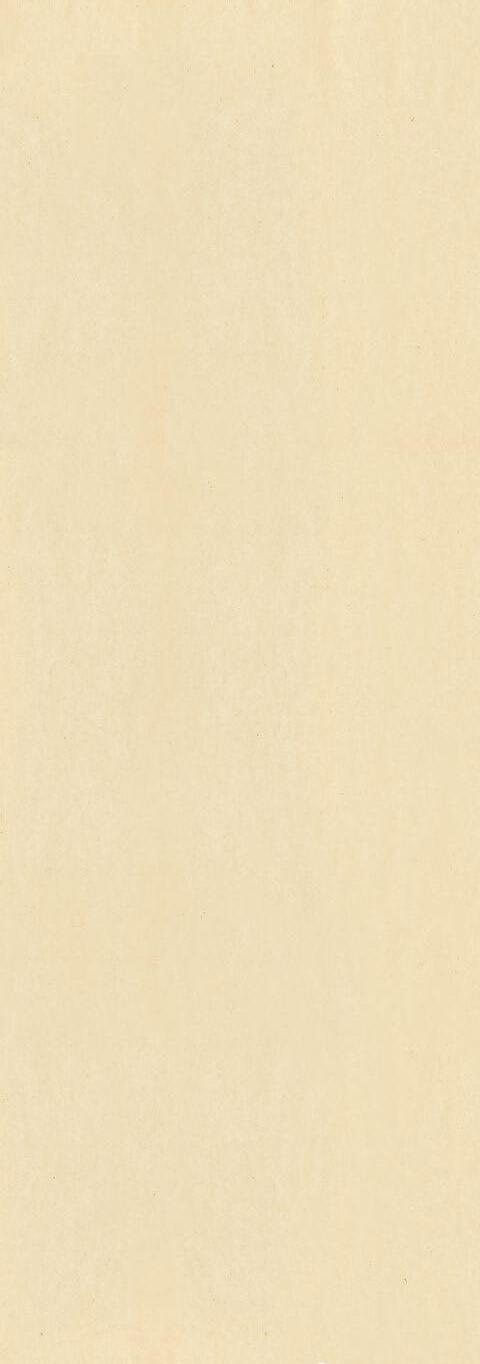
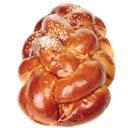







JERUSALEM HOTELS /MUSEUMS MACHANE YEHUDA MARKET RESTAURANTS / CAFES / BARS TEL AVIV HOTELS /MUSEUMS / SHOPPING BEHIND THE DIAMOND EXCHANGE DOOR RESTAURANTS / BARS/ NIGHT CLUBS HISTORY:THE “FOUNDING FATHERS” OF ISRAEL 58 TRADITION JUDAISM: DIVERSITY OF INTERPRETATION 66 ENCORE PERFORMANCE… 72 WHITE CITY 74 ZUBIN METHA AND HUBERMAN’S VIOLIN IN TSINANDALI 77 THE COUNTRY OF START-UPS 80 THE PROMISED DESERT 84 EAT, DRINK, DANCE THE NEW ISRAELI CUISINE 88 “L’CHAIM” TO LIFE! 96 SPORT: MACCABIAH GAMES, CHESS 100 CLOTHING FOR COLORFUL PEOPLE 102 MEDICAL TOURISM 106 THE PLACE WHERE THE WORLD BEGAN 110 CITIES MASADA/ TSFAT BETHLEHEM/ NAZARETH GALILEE / CAESAREA HAIFA/ NETANYA 10 / 32 36 / 57 114 / 126 TEL AVIV S L mogzaurisaTvis O O israelis saxelmwifo
Sadrevani
mkvdari
menora hamanTaSeni
almasis
zeTisxilis
xaredi halvis
Rvino
CONTENT 4 VOYAGER 6/2017
droSa
`cecxli da wyali~
albert ainStaini
zRvis kosmetika serfingis dafa
xala
birJa
mefe
solomonis beWedi warweriT `esec gaivlis~
SakSuka
xe
daxli bazarSi
bauhauzis
arqiteqtura Bruno House



Tbilisi, 35 I. Chavchavadze Ave | Tel: 032 2 25 26 42 | 032 2 23 25 61 E - m a i l: i nf o @la p ar is .ge | ww w .fa c e boo k. c o m / L a P ar i s 3 5 Mineral Makeup LA
RIS BEAUTY CENTER You can buy the best hair care products:
P
Editor-in-Chief
Tea Skhirieli
Art - Director
Nino Daraseli
Designer
Nino Kavelashvili
Illustrations by Maia Sumabdze
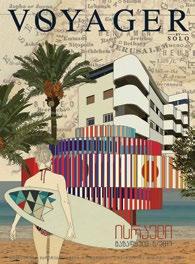
Translation by Lika Barabadze Photo - Shutterstock
6, 2017
Editor Salome Dadunashvili
Authors:
Aka Morchiladze
Margarita Antidze
Bidzina Baratashvili
Nikoloz Chkhaidze
Zaza Chiladze
Marina Kipshidze
Lasha Bughadze
Ciuka Kipshidze
Davit Sakvarelidze
Administrative Assitant
Giorgi Vasadze
Advertisement Manager
Nazi Goshadze
Publisher: LTD SOLO
Phone.: +995 32 2 44 44 00
ISSN: 2346-8130
Printed by:
Bauer Medien Productions & Handels Gmbh
Adress: Baumannstrasse 3/19, A – 1030 Vienna, Austria
e-mail: office@bauermedien.at www.bauermedien.at Advertising:
Project Manager / SOLO DIRECTOR
Eka Duchidze
Project Consultant
Nino Gegeshidze
SOLO Brand Manager

Keti Nikoleishvili
Print Management: Ctrl P
Address: Tbilisi 0162, 39, Tskneti Highway Phone: +995 597 95 55 01
+995 599 330 364 / Published material owned by LTD SOLO. Written Consent of the Company necessary for use of any material published in this magazine.

TBILISI SOLO LOUNGE MTASTMINDA 11 Chitadze Str.

TBILISI SOLO LOUNGE PALIASHVILI 23, Paliashvili Str.
TBILISI SOLO LOUNGE ABASHIDZE 70, Abashidze Str.
TBILISI SOLO LOUNGE TSINTSADZE 12, Tsintsadze Str.
TBILISI SOLO LOUNGE Chavchavadze 29, Chavchavadze Ave.
TBILISI SOLO LOUNGE KAZBEGI 24G Kazbegi Ave.
TBILISI SOLO LOUNGE KAZBEGI 25 Kazbegi Ave.
KUTAISI SOLO LOUNGE KUTAISI 5 Q. Tamar Str.
BATUMI SOLO LOUNGE Batumi 22 Rustaveli Ave.
TBILISI SOLO LOUNGE TSERETELI 73 Tsereteli Ave.
TELAVI SOLO LOUNGE Telavi 3 Cholokashvili Str.
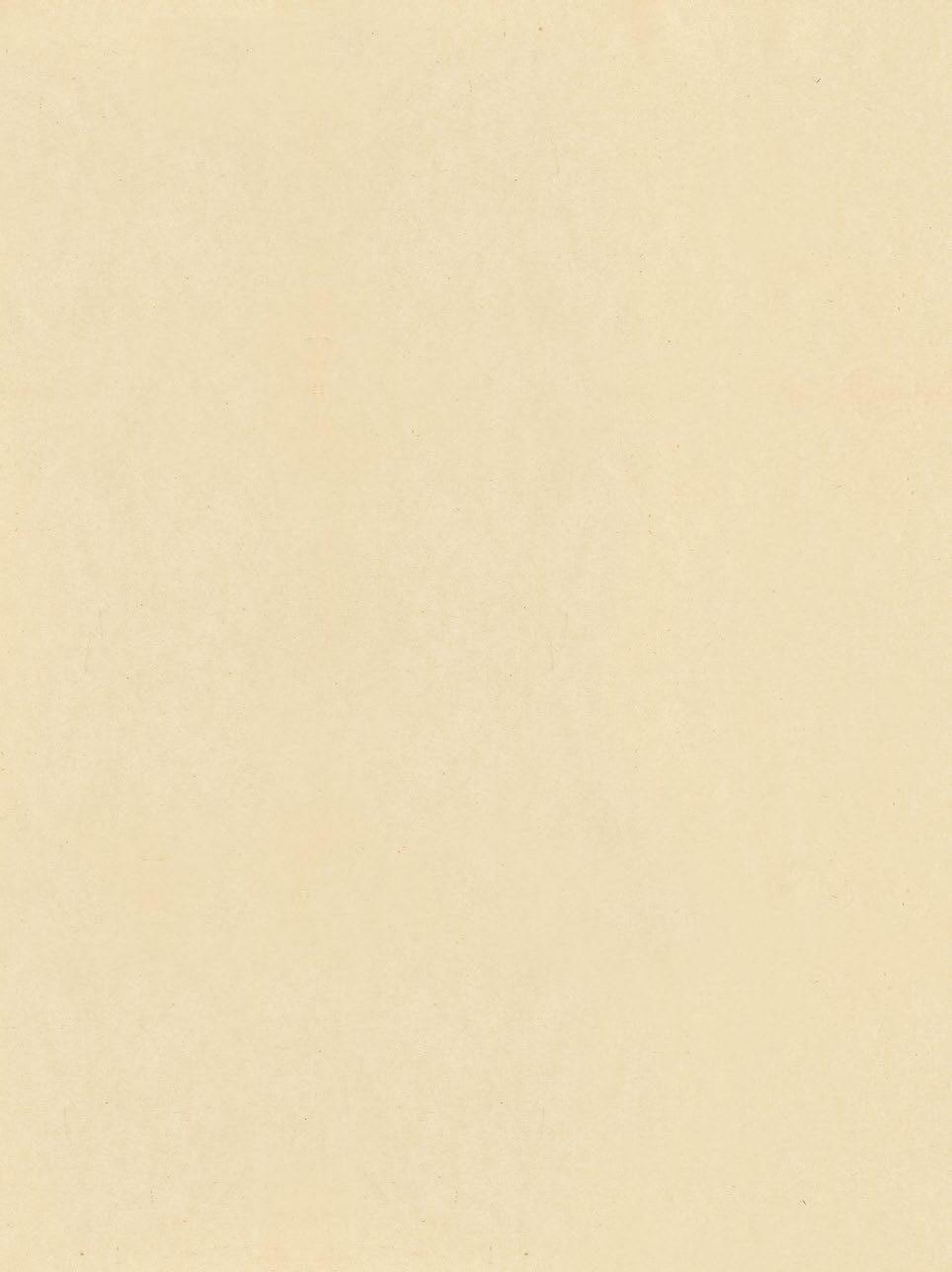
www.solo.ge Tel: +995 32 2 44 44 00

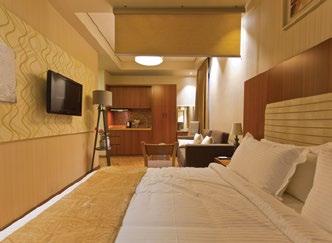


ALL-FURNISHED, PREMIUM CLASS, LUXURY APARTMENTS IN THE COAST LINE OF THE SEA, JUST 9 KM. AWAY FROM BATUMI +995 32 210 20 40 info@dreamland.ge | www.dreamland.ge - All-furnished apartments with household appliances - Apartments from $49 126 - Down payment 30% - From $499 monthly payment - Guaranteed income from rent - Free Services and Infrastructure
JERUSALEM

SALOME DADUNASHVILI
DARKNESS CAME FROM THE MEDITERRANEAN AND DESCENDED UPON THE CITY, SO HATED BY THE PROCURATOR. THE HANGING BRIDGES THAT CONNECTED THE TEMPLE TO THE ANTONIUS TOWER DISAPPEARED. DARKNESS CAME DOWN FROM ABOVE AND SWALLOWED THE WINGED GODS ON THE HIPPODROME, THE HASMONEAN PALACE, AND THE MARKET STALLS, SOUQS AND LAKES. YERUSHALEM, THE GREAT CITY, DISAPPEARED, AS IF IT HAD NEVER BEEN ON THE EARTH.
MIKHEIL BULGAKOV
Yerushalem disappeared, as if it had never been on the Earth. The temples with their golden roofs like dragon scales, the palaces and elephant-footed palms, hanging bridges and of course the lakes all disappeared a long time ago. Only memories of the city, as we want it to be, have remained; the city that we see in the memories inherited from others.
Jewish and Muslim guides wait for us in a small room built inside the Jaffa gate. They sell the memories of the city located on one kilometer to people of their own faith, or to the friends of their faith. They tell their own stories. This is the Jaffa gate, where, according to legend, cedars were brought from the Mediterranean to build the first and second Jewish temples. These temples have disappeared, along with Yerushalem.
People have been searching for it since its disappearance. They take shelter among centuries-old stones and assign numbers to the bricks of the wall.
They search for pieces of Jesus’ cross, just like the Franciscan monks. They find his footprints in various buildings, dating back to the first I or IV centuries. They have established 14 places of the
Savior’s passions – 9 canonical ones and 5 based on legends. They leave letters at the Wailing Wall, carry crosses up the Via Dolorosa, and worship the rock where Buraq put his magic foot before Mohamed’s ascension.
Truly, everyone has their own Jerusalem and everyone searches for Yerushalem.
Jerusalem’s asylums are full of people with holy city syndrome –people, who could not remain on the fragile border between the fiction and reality and continued their journey beyond the looking glass where everything is upside down and imps’ feet face backwards.
Those who want to be in the front row during the second coming fight for tombstones on the holy land. They don’t value anything earthly anymore. Meanwhile, I believe that the city wants to breathe, it needs air, and it is suffocating… the city is trying to reach the sky, chained to the magic mountain.
If you look down from the Mount of Olives, it looks like the city is ready to take off, as if it already floats in the sky, but people weigh it down with their cemeteries, sadness and anger, struggles and hate. They place small and large heavy tombstones to prevent it from flying away. This is the Jerusalem that is left to them. They can’t let go of it.
JERUSALEM – YERUSHALEM’S SHADOW AWAITS FREEDOM. IT IS LOST AND WANTS TO BE FOUND. SO WHAT ELSE IS THERE TO DO? YOU HAVE TO FIND YOUR OWN YERUSHALEM.
10 VOYAGER 6/2017
Everybody visits Jerusalem with their own pre-written history; stereotypes are so strong that people prefer to turn a blind eye rather than acknowledge them. Faithful Christians head towards the Savior’s tomb and the Via Dolorosa; Jewish people go to the Wailing Wall; Muslims, the Temple Mount where the Al-Aqsa Mosque and the Dome of the Rock (mausoleum) are located.

Atheists dig into the history and find out that David’s tower was built by Herod rather than David. Herod liked erecting structures. He even reconstructed the second Jewish temple. Contrary to popular belief, he is not to blame for the deaths of innocent babes either, since he had left this sinful land by that time.


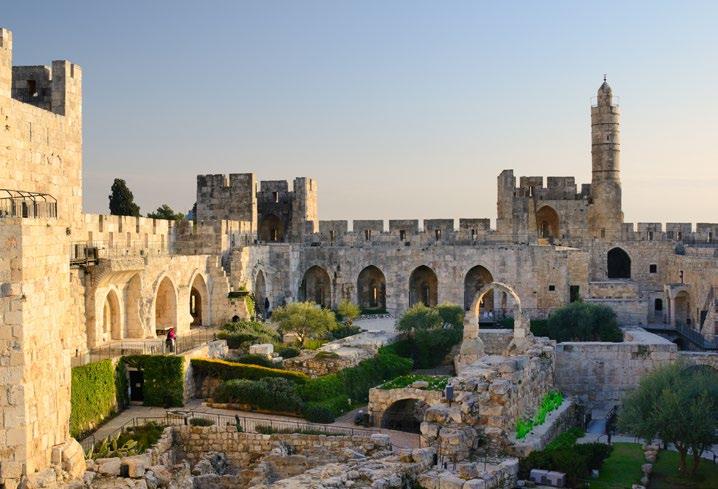
Does it matter which side you pick to enter Jerusalem from?! If you enter through the Lions’ Gate, you will come upon the Via Dolorosa, while the Golden Gate is locked and, according to the prophesy, will remain locked until the second coming. There are many gates: Sion, Damask, New, Herod’s, Flower and Jaffa – you will get lost in the city’s stone belly in any case. In the end, all of the streets will lead you to the temple where your god awaits you. Everybody talks about their god here, and you can’t move anywhere without hearing god’s name mentioned.
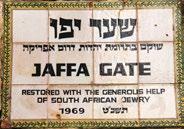
THIS CITY IS SO OLD THAT THE WEIGHT OF TIME CRUSHES YOU. EVERYTHING HERE BREATHES WITH HUMANKIND’S CHILDHOOD, WHEN THE AIR WAS CLEARER –ADAM’S DESCENDANTS; BACK WHEN GOD HAD MORE TIME TO TALK WITH HIS CHILDREN. HIS VOICE WAS NOT SILENCED BY THE SOUNDS OF 1,000 OF FACTORIES, TELECOMMUNICATION POLES AND THE WOES OF HUNGRY PEOPLE THAT HAVE OVERPOPULATED THE CONTINENTS. THE PLANET WAS EMPTY AND THIS WORLD WAS NEW –JUST UNWRAPPED FROM THE GIFT BOX.
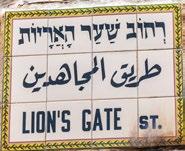
11 VOYAGER 6/2017
JERUSALEM
Jaffa Gate
Lion Gate
Jerusalem view from the Mount of Olives
David’s City Ruins
When King Solomon decided to build a temple financed by donations from all of the Israeli tribes, he chose Mount Moriah, a rock, on which to build it. The top of Mount Moriah was cut off and the first temple was built on the huge platform. The Arc of the Covenant was placed there. How could King Solomon foresee that the struggle for this rock would be an imperative concern for big part of humankind?
Nebuchadnezzar destroyed the first temple; the tablets bearing The Ten Commandments, and the Arc of the Covenant vanished forever. However, the temple mount survived. Jews grieved for the first temple and erected the second one – reconstructed by Herod and finally demolished by the Romans. The temple burned for 10 days and, according to the Hebrew calendar, fell down on the 9th day – the same day when the first temple fell down centuries ago. Eternal Jewish sorrow has grown on its foundation. Jewish people are now forced to pray at the west wall that used to surround the temple. They pray and grieve by the Wailing Wall for their Paradise Lost.
Many letters arrive to Jerusalem marked “to God”. Jews send them from all over the world. Nice people take these little pieces of paper, which contain people’s tribulations, dreams and requests, and put them in the cracks of the Wailing Wall. Some wishes stick to the wall tightly and await God’s answer; some drop to the ground but retain their value anyway. The fallen letters are carefully collected and burned separately, outside the city walls.
THE WAILING WALL is a holy place for every Jew; certain rituals have to be observed when approaching it. It is forbidden to come close to the Wall with pets, to use a cell phone in its vicinity on the Sabbath; smoking and taking photos are prohibited at all times. Special clothing is necessary: one’s shoulders and hands have to be covered; men need to cover their heads. Pilgrims wash their hands in special basins is part of the ritual. Water must be sprinkled twice on the right hand and then on the left.
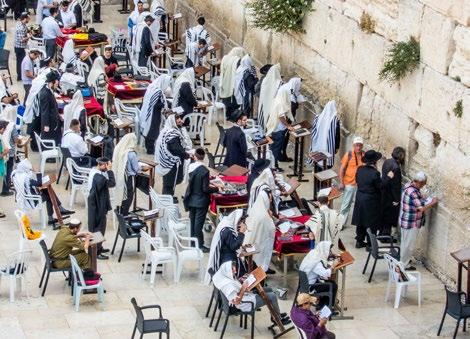

It is as if the air around the Wailing Wall hangs in thick clots; sounds are far away and reach you like distant memories. Time stretches indefinitely and the air has a strange shine to it.
Jews explain this phenomenon by the highest concentration of God per square meter. However, this is also the place of the highest concentration of people’s wishes, tribulations and dreams. Jews pray underneath the walls while Muslims pray on top.

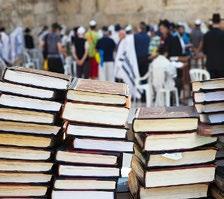

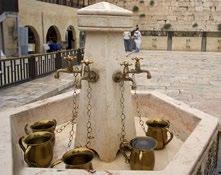
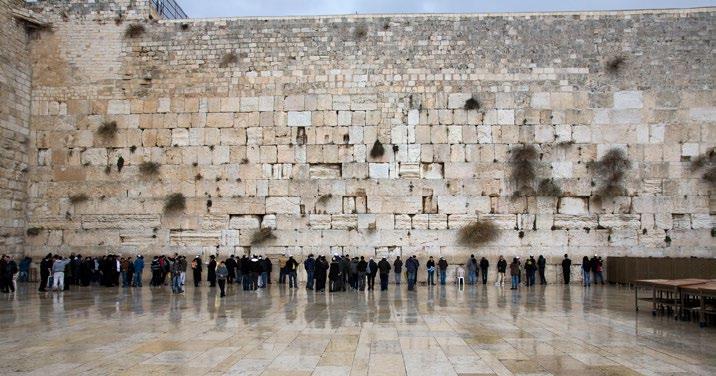
12 VOYAGER 6/2017
The Wailing Wall
AL-AQSA MOSQUE is one of the oldest mosques in the world. It overlooks the Wailing Wall. The so-called Dome of the Rock shines like a golden sun on the opposite side. This building is a mausoleum. It was built around the rock where Buraq rested after he took Mohamed on his journey through the night.
Al-Aqsa Mosque is the third holy place for Muslims, after Mecca and Medina. Non-Muslims may not enter the mosque or the mausoleum, though it possible to climb the Temple Rock via the hanging bridge that begins on the west wall. Hours of entry are 7-10 a.m. and 1:30-2:20 p.m. except on Fridays and Saturdays. Women should wear modest clothing and should preferably have their heads covered.
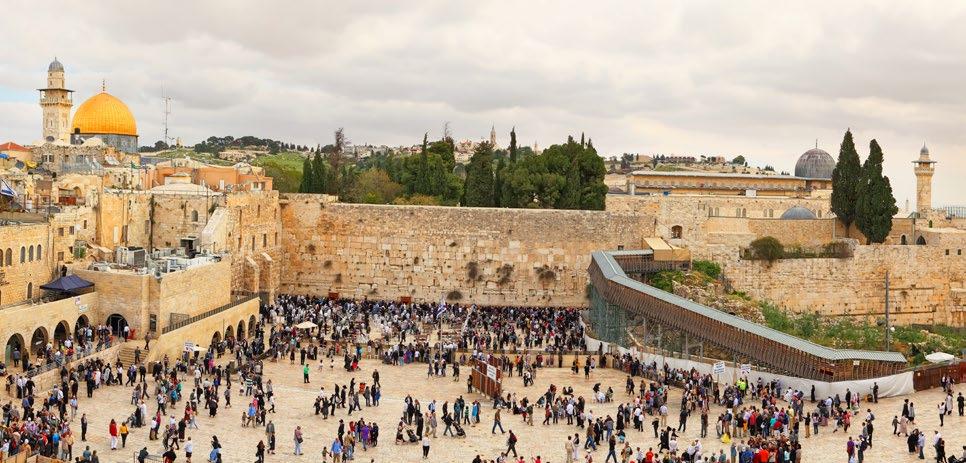
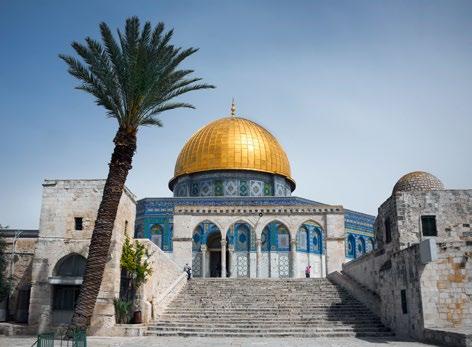
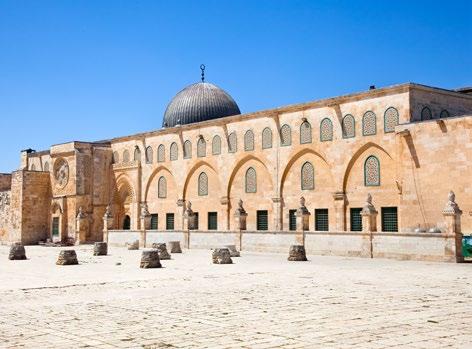
Arrive early at the Dome of the Rock as the queue may be quite long. Security controls make the process even lengthier. This is a standard procedure in Jerusalem and it gets especially strict at the holy Jewish and Muslim places. Take into consideration that even the slightest scent of alcohol may cause you to be disallowed entry. Cutting objects and cult symbols may not be taken inside (small crosses are allowed).
The Dome of the Rock is often seen in the media as a symbol of Jerusalem. In reality, it is a symbol of religious and territorial conflict. The golden dome is erected on the land that is the reason for the Jewish-Arab conflict . This is the so-called rock of the covenant. According to Hebrew tradition, this is the place where the world was created and where Abraham had to sacrifice his son, Isaac.
Two Jewish temples were erected here – one from 965 to 586 BC and the second from - 534 BC to 70 AD (over 604 years during the 1,000-year uninterrupted period when Jewish people served their one true God from this mountain). The Dome of the Rock is covered with quotations from the Quran to prove the advantage of Mohamed’s religion.
The beautiful stones that cover the dome’s walls were added later during the Turkish Sultan, Suleiman the Great.
13 VOYAGER 6/2017 JERUSALEM
Visit the Dome of the Rock and Al-Aqsa Mosque to see two Islamic structures that have one of the most distinct forms of architecture in the world.
Dome of the Rock Al-Aqsa
It is very difficult to live in Jerusalem. The city is suffering from constant disparity and it lives from truce to truce.


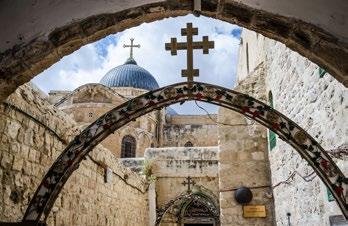
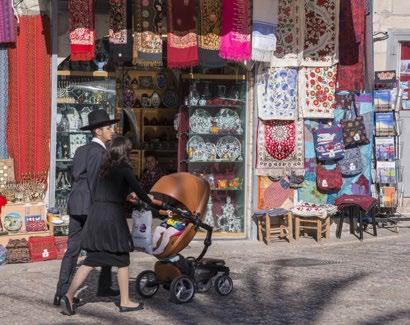
Soldiers with weapons stand at almost every station of the Via Dolorosa. Despite this, it is very pleasant to take a walk down these narrow, criss-crossing streets, just like in any eastern city.

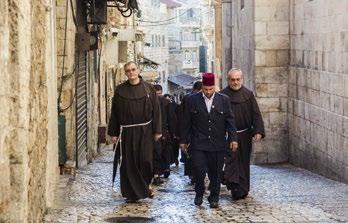
It seems impossible to find a peaceful street in the city where every hole in the
wall, every storage unit and every first floor is turned into shop fronts. However, one step to the right or to the left and you will find yourself in the infinite labyrinth of streets that look like stone wells.

Here you will smell food and hear neighbors chatting. The drying laundry will indicate the number of kids in a family. This is when you realize that you are in a real city and not in the midst of a historical-religious performance.
“My home is my castle” – Jerusalem dwellers take these words literally and the reason is obvious: one square kilometer is strictly separated and people pray to different gods in evert part. If the house’s walls carry a red and yellow moon and stars, it means that the owner is a Muslim who has returned from the Hajj, having prayed in the holy places, and now shows everyone via this colorful graffiti that his house and his castle is holier than it was before.
A Mezuzah is placed on every Jewish door – a box containing passages from the Torah, which people touch every time they come inside. Sometimes, the iron rod-clad windows display the flag of Israel. You will find yourself in the midst of streets that look like stone wells, if you enter the labyrinth opposite


David’s tower and follow the winding alleys. Follow the thread correctly to reach the free surface under the sky, somewhere on the top. The sky in Jerusalem is like one of its domes. The domes sparkle visibly when looked at from the roofs of the many houses.
This city has several layers; you can walk for kilometers in the underground labyrinths, get lost in the winding streets or go up onto the roofs and tour the district from above. There is life on the rooftops: children play soccer, the sun is shining, and the church domes sparkle with gold. Here you can sit down and forget what this city does not let you forget: what a man can do in the name of god. So much good that it makes the angels sing, and so much evil that it makes God shudder!
14 VOYAGER 6/2017
If you walk on somebody’s balcony by the Jewish seminary, you’ll notice pupils with Tefillins getting ready to pray with laces wrapped 7 times round their hand under the dome of sky. Tefillins are a set of small black leather boxes containing scrolls of parchment inscribed with verses from the Torah. Jews place the small boxes on their hand and head during prayer, bringing them
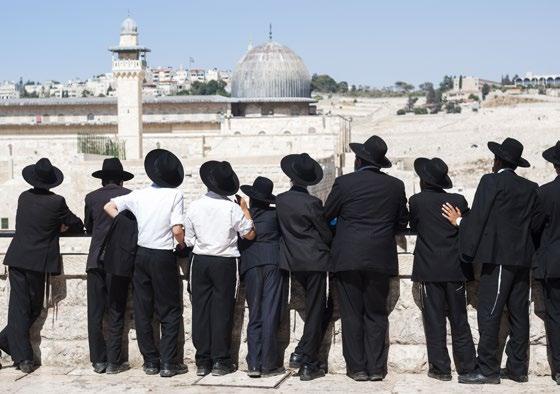
much closer to God. Pupils maintain this closeness all day long. The white tassels of their Tzitzits are raised by the wind and the blue sky is sewn into them instead of a colored dye, made of a special sea mollusk called a Hillazon. The blue thread is to remind Jews of the sky’s clarity. Here, on the rooftops, it is impossible to forget the sky.
of the Cross. Georgians maintained ownership of the Monastery of the Cross until the XVIII century. The Monastery of the Cross in Jerusalem is located in the elite district, Malkha, in the olive garden. Surrounded by a fence at least three or four-storeys high, the fortress complex houses up to 270 quarters and ancillary facilities. No foreign Georgian monastery holds as many Georgian inscriptions as the Monastery of the Cross.
The main temple pillars preserve the mural portrait of Shota Rustaveli (XII-XIII centuries). The author of the “Knight in the Tiger Skin” was depicted in the clothes of a secular nobleman. He wore a purple robe, a white and black Georgian fur hat and lifted his hands upwards in front of Maksime Agmsarebeli and John of Damascus. According to the inscription, the researchers believe that this was Rustaveli’s self-portrait. The fresco was preserved until 2004 when it was vandalized. It has since been restored. Most likely, the grave of the poet is located here as well.
THE MONASTERY OF THE CROSS _ According to tradition, the Biblical tree grew up here; the cross upon which Jesus Christ was crucified was made from this tree.
King Miriam purchased this land from the Byzantines in the IV century. He built a chapel. Vakhtang Gorgasali and his army entered Jerusalem in the V century, renovated the King Miriam’s cathedral and left 600 people in the Malkha village to guard it.
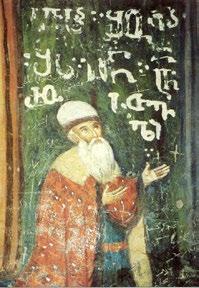

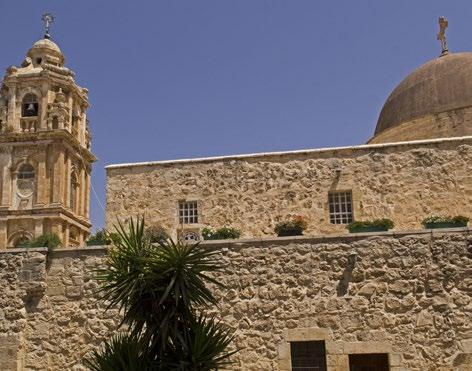

The monastery is the center of Georgian spirituality and religious and cultural activity. Over the centuries, monks here have been engaged in literacy, writing and enlightenment. Many hagiographic texts were foundhere, including "Grigol Khandzteli’s Life".
Shota Rustaveli, Arsen Iqaltoeli, Ephraim the Minor, Nicholas Gulaberisdze and many other holy fathers served in the Monastery
15 VOYAGER 6/2017 JERUSALEM
THE CHURCH OF THE HOLY SEPULCHRE is a holy place for Christians in Jerusalem. They believe that this is the place where Jesus Christ was crucified and then rose from the dead. The rock covered by the temple wing is considered to be Calvary.


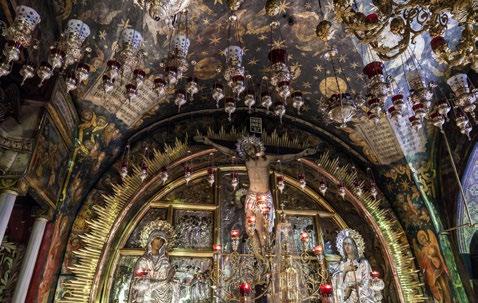



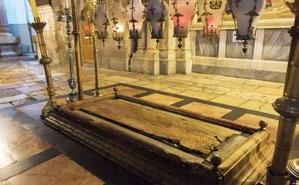
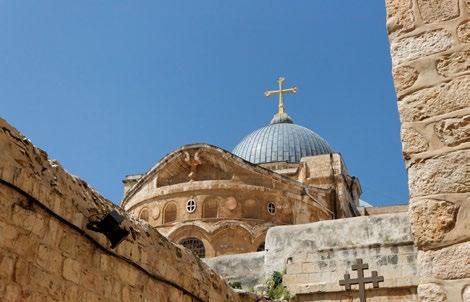
The temple’s square facade at first glance is small, but when entering inside, as if contrary to the laws of physics, it is quite large and fairly unstructured. This is because the temple area is owned by six different Christian confessions and has been transformed many times.
The main entrance to the temple has a shrine stone anointed with chrism, where the Savior's body was washed, after he was taken down from the cross. Christ's tomb was built by Emperor Constantine the Great in 325-335; it is a part of Mount Calvary. Today the Catholic, Armenian Gregorian, Greek, Syrian, Ethiopian and Coptic Orthodox churches own its territories.
Open in summer: 05.00 – 20.00; Open in winter: 04.00 – 19.00
The exit to CHRIST’S TOMB is low, so people have to bow their heads to enter it. The tomb is very narrow and the Greek guard lets only two or three worshipers in at a time. Four rows of candles are attached to the wall of the tomb.

Two staircases on the left of THE CHRISM STONE LEAD TO CALVARY . According to legend, this is the place where Christ was crucified. Round-cut silver disks are placed on the floor to signify the place where the cross was raised. Two black circles on the sides indicates the place of the crucifixion of two other prisoners. The grieving Virgin Mary icon is placed here as well. A small bell tower is placed beneath Calvary. Its floor has a crack as a result of the earthquake that followed the crucifixion of Christ. Christians measure the width of the crack each year as they believe that it is a sign of the coming apocalypse.
To avoid conflicts, the number of candles are distributed among the Christian confessions according to the agreement established in 852. 13 candles belong to the Catholics, 13 to the Armenians, while the rest go to the Orthodox Christians.
16 VOYAGER 6/2017
THE CHURCH OF THE HOLY SEPULCHRE
The Aedicule (Tomb of Jesus)
Calvary & the Crucifixion Altar
VIA DOLOROSATHE WAY TO CALVARY
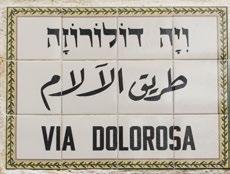
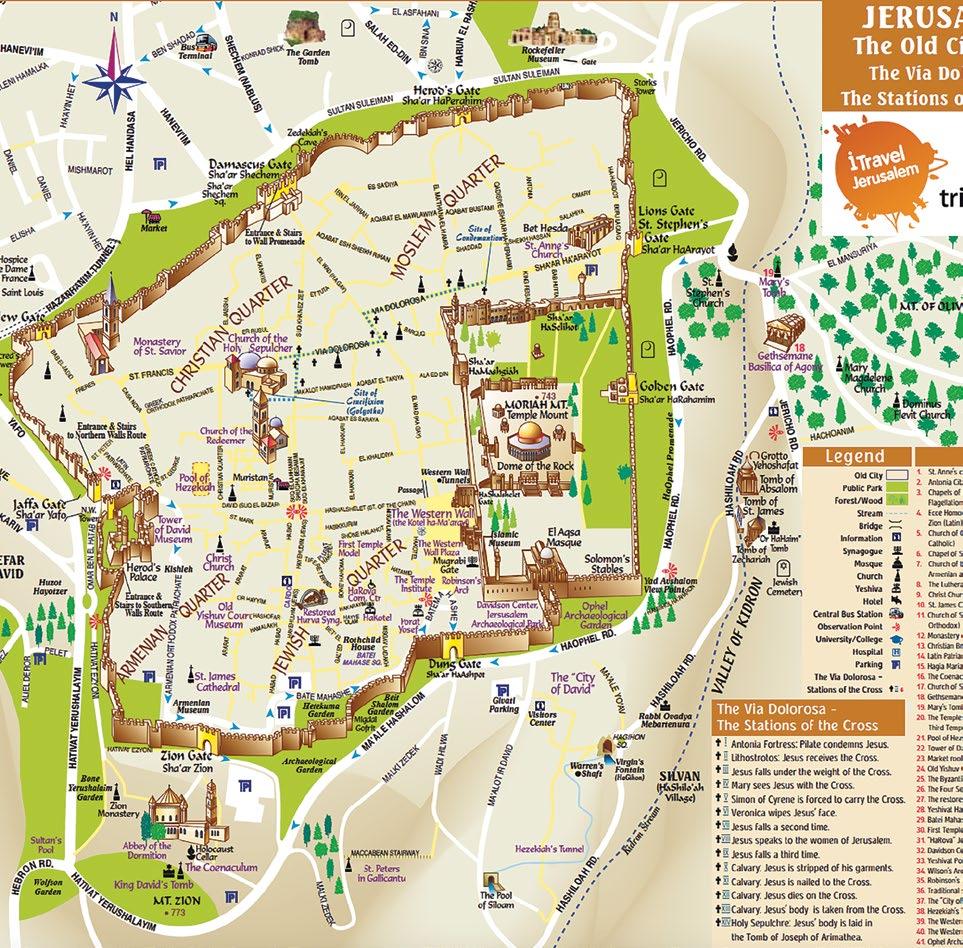
Nine Stations of the Cross:
I. Antonia Fortress - Trial by Pilate
II. Lithostrotos -Jesus took the cross
III. Jesus falls under the weight of the cross
IV. Mary encounters cross-bearing Jesus
V. Simon of Cyrene is forced to bear the cross
VI. St. Veronica gives Jesus the veil
VII. Jesus falls again
VIII. Jesus talks to the pious women of Jerusalem
IX. Jesus falls for a third time
X. Calvary – Jesus is stripped of his clothes
XI. Calvary - Jesus is crucified
XII. Calvary – Jesus dies on the cross
XIII. Calvary - Jesus' body is taken down from the cross
XIV. Tomb - Joseph of Arimathea buries Jesus’ crucified body in a tomb
THE MOUNT OF OLIVES in Jerusalem is the highest mountain/slope in the region and is adorned with flowers and lines of cypress tress. It is the best vantage point from which to appreciate the glory of Jerusalem. It overlooks the Dome of Rock, the Golden Gate that remains shut till the second coming, and Muslim and Jewish cemeteries. The worldly and otherworldly always go side by side in Jerusalem.
The Christian tradition holds that this is the place where the Savior descended from the mountain and where he ascended to heaven. The mystical setting of the Mount of Olives is protected by the ancient trees, though they have not witnessed Christ. However, olive trees have a unique ability to regrow and maybe these trees, which bring us much closer to something real and strong than the temples do, are their descendants.

17 VOYAGER 6/2017 JERUSALEM
I III IV VI IX X-XIV VII VIII II V
THE CHAPEL OF THE ASCENSION Is located at the highest point of the mountain, where the resurrected Savior appeared to the Apostles and then ascended into heaven.
A Christian woman, Pimenia, who was a Roman aristocrat, built the first place of worship in this place in 380. The modern chapel is smaller in size than the original. It contains an important relic for Christians – Christ’s footprint on the stone.
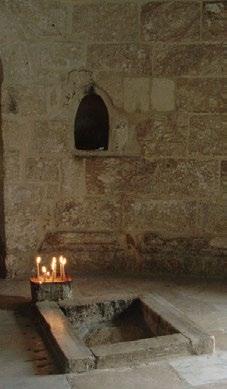
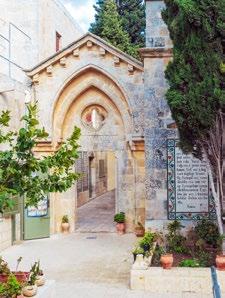
When the Sultan Saladin (Salah ad-Din Yusuf ibn Ayyub) saw a great number of Christian pilgrims in this place, he ordered that a mosque be built nearby so that Muslims too could have the opportunity to honor the holy Issa.

DOMINUS FLEVIT CHURCH , (“The Lord has wept") is built on the place where Christ felt concerned for the fate of Jerusalem and could not fight the tears.
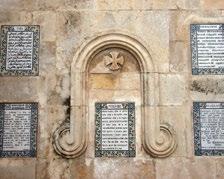
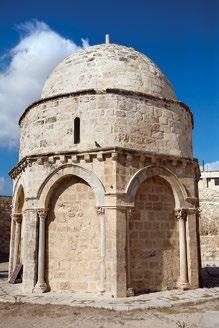
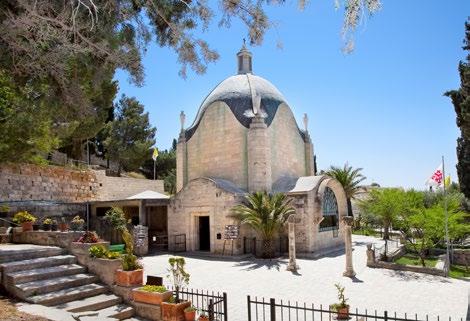
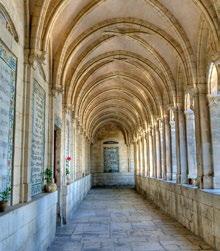
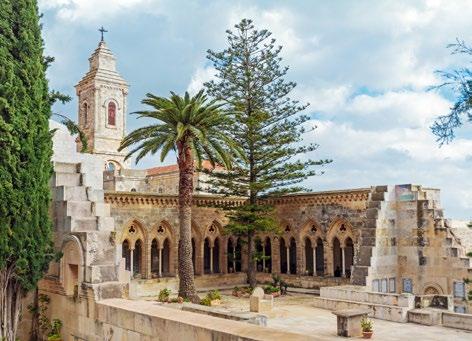
This area was purchased by the Franciscan monks in 1891. Later archaeological excavations have revealed the remains of a Byzantine basilica; a fragment of a mosaic floor is still pic-
turesque. The temple was built in 1955 by the architect Antonio Antonio Barluzzi. Despite the tradition, Barluzzi built an altar that faces west towards Jerusalem instead of east, as is tradition.
A panel of stained glass stands behind the altar rather than wall; when the faithful kneel in front of the altar to pray, they see the cross on top of Calvary.
THE CHURCH OF THE PATER NOSTER TEMPLE was built on top of the cave where Jesus taught his disciples how to pray. The Lord’s Prayer is inscribed on the walls in all of the world's languages, including Georgian. The biggest attraction of this area is the ruins of a temple built by Helena, Emperor Constantine's mother. Helena built the temple in 326 when she visited Jerusalem upon orders from her son to gather evidence of the material existence of Christ.
It is interesting that unlike his mother, Constantine only pledged his allegiance to Christianity (an official state religion) on his deathbed.
Grotto of Gethsemane is another holy place in Jerusalem, which belongs to the Franciscan monks. Christians venerate the cave as the place of the Last Supper. A 12th-century Byzantine mosaic is preserved on the floor of the cave. The dome features fragments of frescoes.
18 VOYAGER 6/2017
THE CHURCH OF THE SEPULCHRE OF SAINT MARY is under the hegemony of the Greek Church. It was built on top of the cave where the apostles buried St. Mary. The first church was built in 326 by order of Queen Helen. The faithful worship the first copy of an icon of St. Mary that was created by St. Luke in her lifetime. It is considered the primary source of all saints’ images.
The Architect Antonio Barluzzi accomplished a great deal in Jerusalem; his name is associated with a number of reconstructions, including the Calvary section of the Church of the Holy Sepulchre. In 1924, he built a temple in the GARDEN OF GETHSEMANE, funded by donations from Catholics all over the world, subsequently called THE TEMPLE OF ALL NATIONS. It is a symbol of Jerusalem’s mixed and multilayered nature. The temple was built upon the ruins of an abandoned shrine erected by the crusaders in 1345. Another layer of the Byzantine period was found during construction. It turned out that the Crusaders erected the shrine on the ruins of the IV AD Byzantine basilica, which was adorned with a fine mosaic floor.
Trade and religious souvenirs are an integral phenomenon of Jerusalem. No pilgrim leaves Jerusalem without a small souvenir. You may find the best souvenir shop on the Mount of Olives, near the Chapel of the Ascension of Christ. A variety of items awaits you – high-quality icons made in monasteries, jewelry, and Jerusalem’s stars that are traditionally worn by women, and amulets made of all kinds of material. There are always smaller crowds here compared to the old town shops.
MAXIM GIFT SHOP _ is located on the Mount of Olives, between the Church of the Pater Noster and the Chapel of the Ascension of Christ. Open: Sunday-Thursday 10.00-19.00; Friday 10.00-14.00.
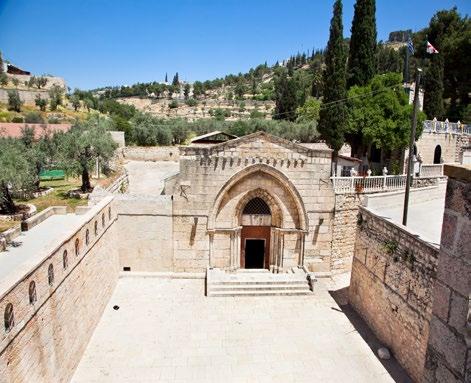
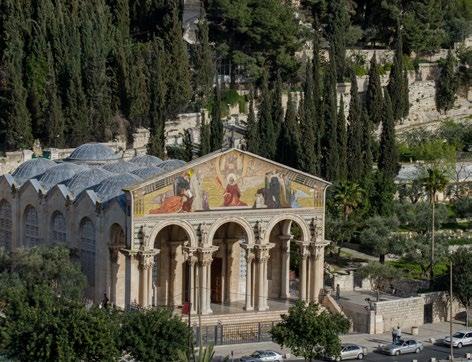
Jews place stones rather than flowers on tombstones as a symbol of eternal remembrance. The dazzling beauty of cut flowers turns into ashes in a few days while stones remain as a sign of eternal, indestructible love. You will encounter an ancient Jewish cemetery heavy with stones when you descend the mountain.
Some of the tombs here date back to the first Jewish temple period. It is also called the cemetery of prophets, since it is the final resting place of the prophets Zechariah and Malachi. According to legend, this city of the dead in the Kidron Valley will be the first to hear Ezekiel’s trumpet and will be resurrected. Nowhere else do stones seem so light.

The Basilica was destroyed during an earthquake in 746. Barluzzi kept the surviving parts of the mosaic. He placed a stone on the altar of the church, which, according to tradition, was the stone on which Christ prayed. The temple is dimly lit, since the events in Gethsemane took place at night.
This temple is a symbol of the most human acts performed by the Savior. This is a garden, where a human asked God to make his fate easier, in anticipation of the forthcoming betrayal and torture. This is where Judas kissed Christ. The garden that is holier than the temple is surrounded by an iron fence. Merciful olive trees do not recognize barriers built to protect them and warmly spread their blessed branches towards the faithful.

19 VOYAGER 6/2017
JERUSALEM
ISRAEL VISA-FREE TRAVEL RULES:
n The visa-free regime allows citizens of Georgia to pay short-term visits to Israel for different purposes: tourism, business, studying on short-term exchange programs/training courses, participating in cultural or scientific activities, receiving medical treatment, etc.
n Short-term visits imply that citizens have the right to remain on the territory of Israel from 1 to 90 days within six months. Accordingly, after the expiration of the date of their legal stay in Israel, Georgian citizens must leave the country. You can enter the territory of Israel after 90 days from the last entry. The visa-free regime with Israel does not give visitors the right to work or be employed.

WHAT PROCEDURES DO GEORGIAN CITIZENS GO THROUGH IN BEN GURION AIRPORT?

The border-control service representative may ask for the following documents to be presented from any Georgian citizen:
n Proof of purpose of travel (invitation or copy of person's residence permit; whom you are going to visit; hotel reservation or convincing proof that you will live with friends; confirmation of medical institution where you are planning to receive treatment; travel or medical insurance, etc.)
n Proof of the amount of finances necessary to cover the full period of your stay in Israel and to return to your country (cash, traveler’s checks or bank cards, etc.)
n A guarantee that you will return to your country: a two-way travel ticket (airline ticket, bus ticket within the country or other means of travel tickets, etc.).
Occasionally, the Border Service carries out additional interviews with citizens to define the exact purpose of their visit. Border-crossing procedures, including interviews, may last up to 3-4 hours, depending on the flow of passengers and available human resources of the immigration service.
Source: www.israel.mfa.gov.ge
ACCELERATED PROCESS TO ENTER/LEAVE ISRAEL
In order to avoid queues in Ben Gurion Airport, airport arrival and departure VIP Services offers an accelerated process. A VIP club representative meets the guests at the airport and takes care of their luggage, security screening, baggage examination and passport control from the very moment the plane lands or they enter the service hall (depending on what is included in your VIP package).
Price: 1-4 persons 125$, 5-19 persons –additional 16$ per person
VIP CLUB SERVICE – ARRIVAL IN ISRAEL
Services include being escorted from the aircraft to the exit hall and a rapid procedure after getting to the jet bridge. Passengers are transferred via personal mini-vans to an area where security screening and passport control is provided. Flight attendants escort passengers from the exit hall towards drivers waiting in their cars.
Price: 1-4 persons – 139$, 5-10 persons – additional 20$ per person
DON’T BE LATE FOR YOUR FLIGHT – ARRIVE AT THE AIRPORT THREE HOURS AHEAD OF YOUR BOARDING TIME, AS LUGGAGE AND DOCUMENTS ARE CHECKED THOROUGHLY AND STRICTLY.
Ben Gurion Airport Express & VIP Service Book on webpage: www.israelwelcome.com/vipservicereservation
20 VOYAGER 6/2017
TRAVEL
TRAVEL BY TAXI FROM BEN GURION AIRPORT: JERUSALEM 250 NIS (SATURDAY 300 NIS) TEL-AVIV CITY CENTER 250 NIS
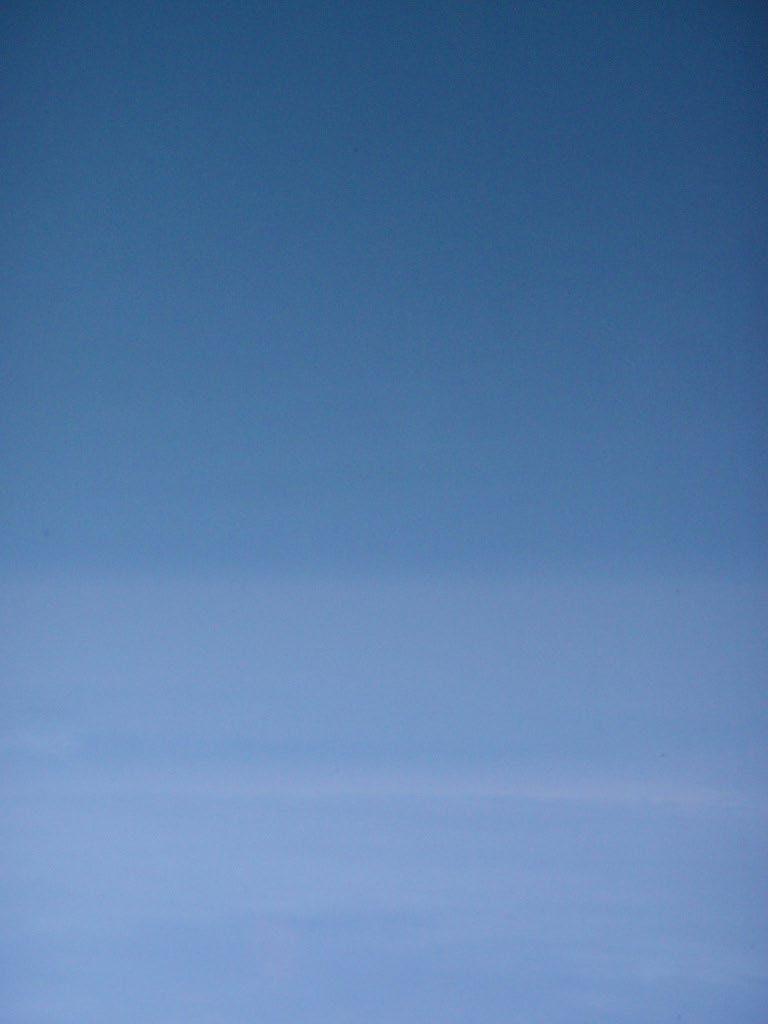
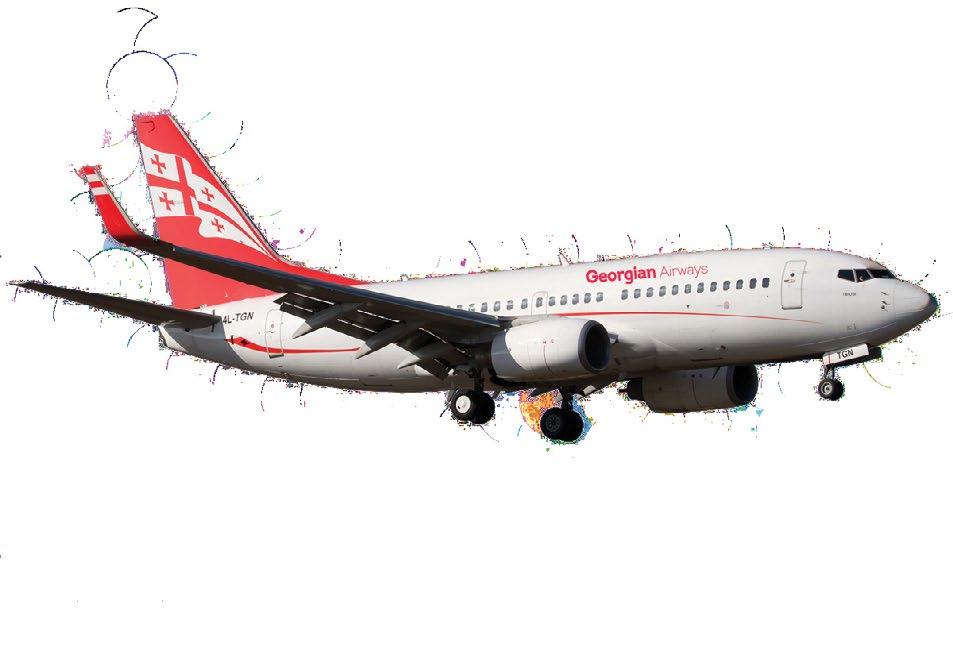
ALEGRA BOUTIQUE HOTEL
Five studio-type suites are infused with the romance and cultural context of Jerusalem. The design of Ayn Kerema is a symbiosis of oriental motifs and modern class. Three elegant suites are tailored to the taste of successful persons; here you may find a beautiful interior design, unique living conditions and wide beds for maximum relaxation and indulgence that is typical of Jerusalem houses.
If you are woken up by the appetizing scent of fresh bread, you know that it's the creation of Jerusalem’s culinary world’s rising star, Chef Amir. The city’s best breakfast and other meals await you in "Allegra"; they are prepared from fresh seasonal produce, blended with classic and modern methods and a Jerusalem touch.

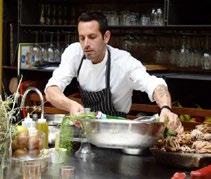
A wide selection of wine will allow you to enjoy the 150-year old garden’s views with a glass of wine.
Standard room price from: 180 $
Derech Hahachaiot 13, Jerusalem; www.hotelalegra.com
THE AMERICAN COLONY
This hotel, located between the eastern and western parts of Jerusalem, has existed for more than a century. Lodgers here have included Ingrid Bergman, Marc Chagall, Winston Churchill, Bob Dylan, Lawrence of Arabia (Thomas Edward Lawrence), and Uma Thurman. Some 95 rooms are spread over four historic buildings: the Main House, East House, Palm House and Cow Byre. The East House is distinguished by its arched ceiling and old, elegant rooms, while the top floor features penthouse-style rooms. Penthouse suites are decorated with spa bathrooms, while some rooms have their own terrace or patio.
The perfect inner garden is the best place to escape the chaos of the city. The romantic summer bar offers unique refreshing cocktails, while the oriental-style restaurant is known for its unique Saturday menu. Price: starting at 300 $
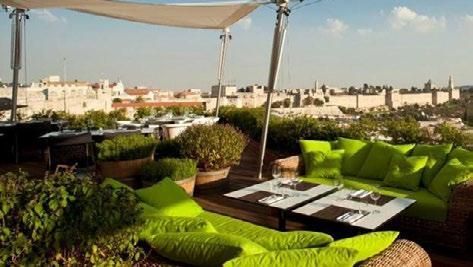
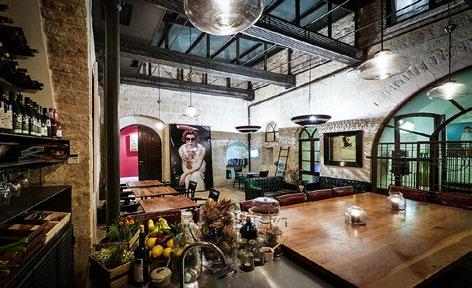

Louis Vincent st 1, Jerusalem; www.americancolony.com
MAMILLA
No other building reflects commitment towards modern design as much as the Hotel Mamilla, which opened in 2009. Located close to the business part of the city, the building overlooks the wall of the old city.
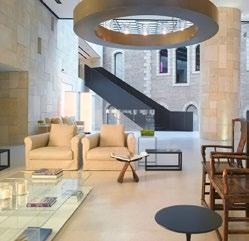
This 194-room hotel is surfaced in the local light-colored limestone.

Price: starting at 350 $
King Solomon st 11, Jerusalem www.mamillahotel.com
AKASHA WELLBEING CENTER ISRAEL'S BEST SPA CENTER OFFERS ITS CLIENTS YOGA, PILATES, SWIMMING POOL, A "HEALTH BAR" AND FRUIT JUICES ALONG WITH MASSAGES.
22 VOYAGER 6/2017
KING DAVID
This unique historic facility, built in the 1920s, has often accommodated various government leaders and well-known artists; it is on the list of the world's most legendary hotels. Another advantage of the hotel is its premier location at the nexus of the old and new town. The hotel offers green meadow gardens, tennis courts, a pool and a playground for children. An open swimming pool in Jerusalem’s’ most splendid garden with panoramic view is at guests' disposal.
The hotel has 233 rooms, each of which blends luxury and elegance. The new spa and fitness center provides an unconditional guarantee of high-quality exercise and health procedures. It promises a uniquely harmonious environment for its guests.
DAVID CITADEL
David Citadel provides the best view of the old city. It blends elements of traditional Jerusalem, oriental design and architecture. The famous architect-designer Piero Lisoni’s stunning design adorns the spacious lobby lounge.
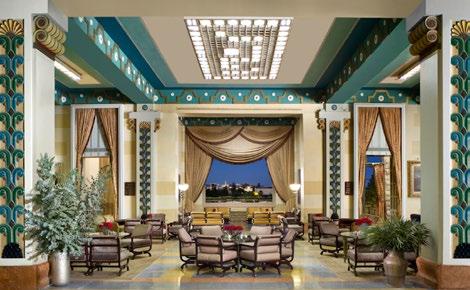
The gamma of classic dark green and raspberry is transformed into coral and pale green under the shining sun. The daily menu offers a wide variety of hot dishes, cold salads, sandwiches and drinks, prepared under the supervision of the hotel’s’ chef, Avi Turgeman.
The Seasons Restaurant offers an amazing breakfast, which contains locally produced cheeses, smoked fish and herring fillets, freshly made salads and other healthy foods.
Four restaurants are located on the territory of the hotel. The open-air restaurant, the King’s Garden, is especially popular - it offers delicious traditional Israeli dishes in a splendid environment.

Price: starting at 400 $
King David 23, Jerusalem; www.danhotels.com
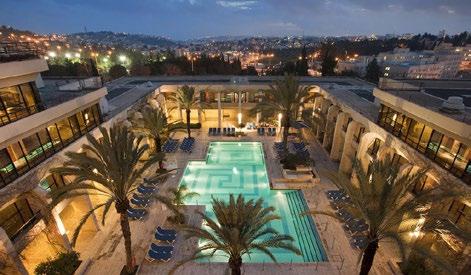
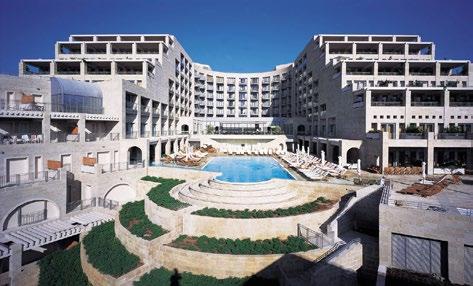
In the summer, you can enjoy this nourishing food on a beautiful terrace. We recommend that you visit this restaurant at least once to taste the delicious breakfast during your stay at the hotel.

Price: starting at 350 $; Traditional double room starting at : 500 $
King David st 7, Jerusalem; www.thedavidcitadel.com
DAN JERUSALEM
Dan Jerusalem is an excellent starting point to begin a journey into the desert, the Dead Sea and Masada. The hotel has 500 rooms and suites, several restaurants, bars and an open pool. Friendly staff will welcome you to the spa-center with its modern equipment; the spa offers a variety of health and cosmetic programs and a warm indoor pool. Receive a 5% discount if you book direct through the hotel’s webpage.
Price: starting at 150 $
Lehi st 32, Jerusalem
www.danhotels.com
23 VOYAGER 6/2017
HOTEL / JERUSALEM
EXHIBITS REFLECTING JEWISH HISTORY AND EVERYDAY CULTURE AND UNIQUE ARTIFACTS FROM ALL OVER THE WORLD ARE VERY INTERESTING.
ISRAEL MUSEUM
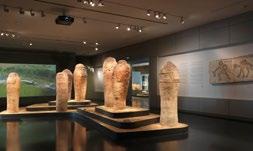
The country's largest museum is located on top of the Givat Ram Mountain. This complex includes offices, where visitors will see archeology, 20th century art, South American art, impressionist paintings etc. It also features a sculpture garden. The museum was founded in 1965 and owns prestigious encyclopedic collections - ranging from the prehistoric to modern art. The museum currently holds up to 500,000 exhibits. It represents an inexhaustible treasure trove of not only the world-recognized cultural heritage of Israel and the Middle East, but also of the entire planet.
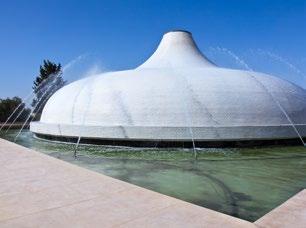
The Temple
The cathedral is a masterpiece of modern architecture, which exhibits the Dead Sea Scrolls manuscripts – one of the most significant archeological discoveries of the last one hundred years, and a national treasure of the state of Israel and the Jewish people. Exhibits include the X century, "Aleppo Codex," the oldest and most complete (before the discovery of the scrolls) edition of the Hebrew Bible Code.
The Second Temple Model

The model displays the architecture and topography of Jerusalem that existed in 66 BC. That was when the rebellion against
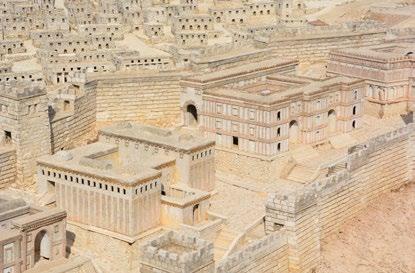
the Romans began, resulting in the demolition of the city and the temple. This model was originally built on the territory of the hotel "Goliland"; however, currently along with the book temple, it is the property of the museum complex. It is made to a scale of 1/50 and is spread over 1,000 km. Visitors can improve their understanding of the historic context of the second temple era, the history of dead sea manuscripts and everything that is related to Christ.
The Sculpture Garden
The unique concept of the garden was based on the idea of Japanese-American sculpture Isamo Noguchi. The space combines the features of the landscape of Israel and the beauty of Japanese Zen gardens. 50 works of European, American and
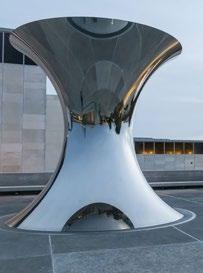
Israeli sculptors are arranged in a way that visitors can observe the development of modern sculpture from the end of the XIX century to the present day. The sculptures include Henry Moore’s famous "Backbone", Auguste Rodin's "Adam", and Robert Indiana's "Love". The diverse collection in the department of modern and contemporary art of the museum includes the works of Van Gogh, Pablo Picasso, Henry Moore, Francis Bacon, Alberto Giacometti, Joan Miró, Wassily Kandinsky, and Fernand Leger.
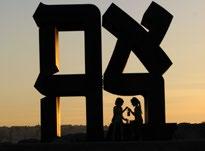
Every department of the Israeli Museum is open from Sunday until Wednesday from: – 10.00-17.00; Thursdays – 10.00-14.00; and on holidays – 10.00-17.00.
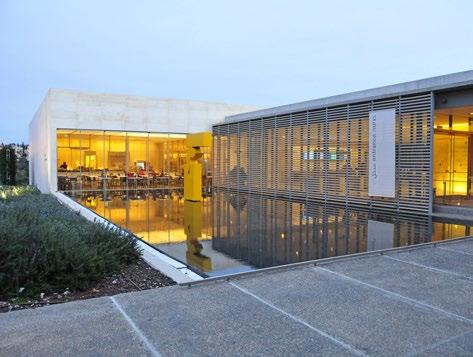
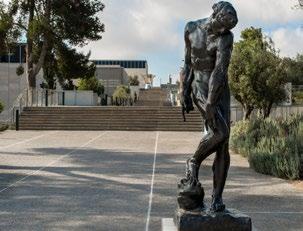

Ticket price: 54 NIS (Israeli new shekel)
Derech Ruppin 11
www.imj.org.il
24 VOYAGER 6/2017
Different exhibition spaces are dispersed in the middle of the building, while on the other side, at the end of the hill, the building is divided into two sides. From here, you'll see a dazzling view of the valley stretched below. The "names corridor" of the ten-meter-high cone-shaped hall is a commemoration of the three million Holocaust victims.
YAD VASHEM


The museum of history was reopened as the Yad Vashem Holocaust memorial in 2005. The architect of the complex was Moshe Sapdis, who has breathed new life into the 53-year old establishment. The 4,200 sq. m complex overlooks the ancient village of Ayn Kerema. A 180 meter-long concrete arch protrudes from the hilltop and is lit softly by a giant glass ceiling.
JERUSALEM MUSEUM FOR ISLAMIC ART

The Jerusalem museum of Islamic Art consists of unique items and rare collections. It presents exhibits from Egypt, Syria, Iraq, Turkey, Afghanistan, India, Iran and Spain, as well as the work of those European artists who have dedicated their works to the East, its nature, people and customs.
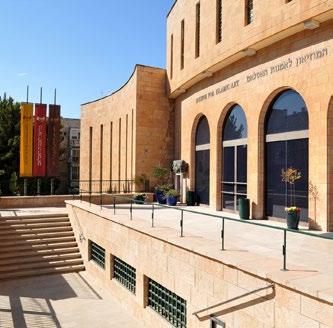
The ceramics, glass metal pieces, ritual objects, works of art, jewelry and ornamented carpets are presented during permanent or temporary exhibitions, which express the various directions of Islamic culture.
Open Monday to Wednesday : – 10.00-15.00; Thursday – 10.00-19.00; Friday and Monday –10.00-14.00; closed on Sunday.
Ticket price: 40 NIS
Hapalmach st 2, Jerusalem
www.islamicart.co.il
ROCKEFELLER ARCHAEOLOGICAL MUSEUM
The Rockefeller Museum exhibits a collection of archaeological findings; however, only a few people come here to see the vernissage, because the architecture of the building itself is a real jewel. The building was built in the XVII century and at different times was used as an olive oil distillery and a residential house. The Archaeological Museum includes more than 1,000 artifacts in chronological order, from the pre-historic era to the Ottoman Empire. Here you will see a 9,000-year-old statue from Jericho, Bronze Age gold jewels, etc. The museum is located at the border of the East and West of Jerusalem, in front of the old city walls, giving it a kind of symbolic look.
Open from Sunday to Wednesday : – 10.0015.00; Thursday – 10.00-14.00; Closed on holidays. Admission is free.
Sultan Suleiman st (Herod's Gate) 27 www.imjnet.org.il
BIBLE LANDS
The Bible Lands museum owns the richest collection of the Near East that opens the window to understanding the phenomena of the ancient cultures. It also depicts the interdependence amongst them.
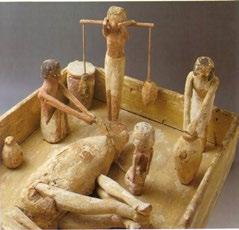
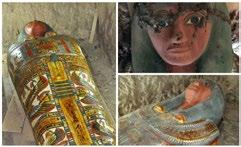
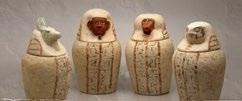
The exhibition is accompanied by maps, schemes and quotations from the Old Testament, which introduces us to the modes of life of ancient peoples, religious cults, etiquette and art. There is also a huge garden where plants from the Old Testament are grown. This is the only museum dedicated to this Biblical period and it researches the historical-cultural processes that existed at the dawn of civilization.
The Bible Lands Museum is a kind of time machine, allowing visitors to travel according to the Near East’s historic papers.
Open seven days a week from Sunday until Wednesday: –09.30-17.30; from Friday to Sunday, and on holidays –10.00-14.00; Closed on Jewish holidays.
Price: 44 NIS
Shmuel stefan Wise st 21, Museum Row, Jerusalem www.blmj.org
25 VOYAGER 6/2017
Har hazikaron, Ein Kerem; www.yadvashem.org
MUSEUM / JERUSALEM
Machane Yehuda Market
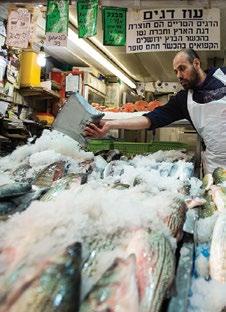
THEY SAY THAT IN THE EAST, ALL ROADS LEAD TO THE MARKET. MAYBE NOT ALL ROADS, BUT THE TRAVELER’S ROADS DEFINITELY LEAD TO THE MARKET, SINCE IT IS DIFFICULT TO FIND ANOTHER PLACE THAT REFLECTS THE REALITY OF THE CITY SO PRECISELY, QUICKLY AND INTERESTINGLY. EXPERIENCED TRAVELERS KNOW THIS AND ALWAYS LEAVE ONE DAY FOR MARKET EXPLORATION.
Jerusalem’s market is a famous phenomenon, not only for its history but also its mix of cultures, variety of items and colors.
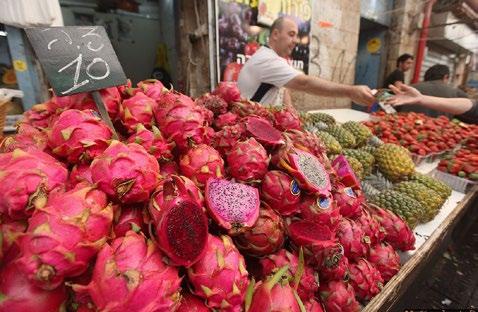
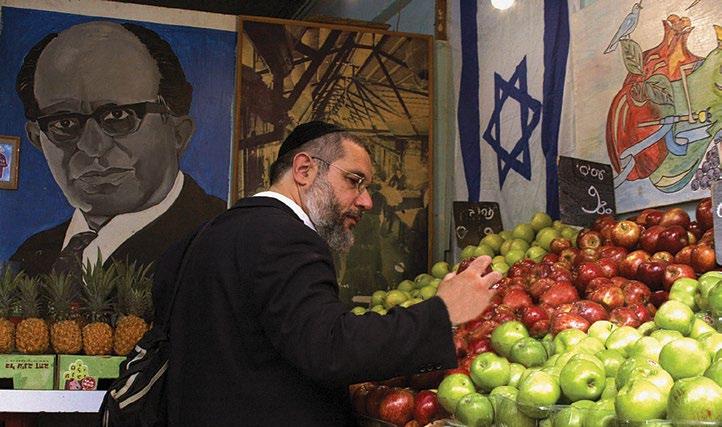
People claim that Machane Yehuda market is a symbol of Jerusalem. It is a distinctive place to buy small souvenirs. Prices are more affordable and bargaining is common.

Machane Yehuda market is symbol of Jerusalem, just like David’s tower or the West Wall. Jerusalem, tired from the religious conflict and discussions about heaven, rests in the mundane activities at this enormous space.
life here unites people of different beliefs and social statuses.
It is interesting that this place has become the face of modern Jerusalem; lively, smiling faces, open for everything new.
The market closed at night even 8 years ago. The closed down enormous empty space was bad for its reputation. This is when an artist, Solomon Souza, had the idea of painting graffiti over the closed doors and gained permission from 150 stores. The market became something of an artists’ gallery in several months. Seeing the increased attention, traders opened up several bars where they sold local beer.
After the stores close, the market hosts nightlife. This is how it achieved an impossible goal – it unites Jerusalem’s past and future, its multiple religions, youthful ideas and it turns into one of the most interesting and alive organisms in the city.
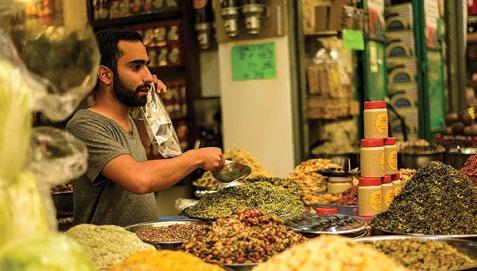
WWW.MACHNE.CO.IL
This is the official website of the market.
Here you can book different tours and walk through the market or bars with a professional. The tour price will be mailed to you.
26 VOYAGER 6/2017
MACHANE YEHUDA
MARKET HOUSES A DOZEN OF JERUSALEM’S BEST BARS AND RESTAURANTS. THESE PLACES ARE POPULAR FOR MEALS PREPARED USING LOCAL INGREDIENTS.

FRUITS OF THE JUNGLE
This is one of the first stores to sell exotic fruits all year round. Here you may discover not only raspberries and figs, but also lychees.
PILAS This family bakery has a long history. You’ll find a wide choice of cakes, and traditional desserts.
PEREG SPICES The store offers a wide selection of rare spices. In addition to certainspices, it also carries spice mixes and recipes for different dishes.
AZOURA This is another family-run business, currently run by the third generation. The store opened in 1920 and offers wonderful freshly-squeezed juices. Pomegranate, tangerine and apricot are Azoura’s trademark juices.
CRAVETHE STORE offers a new concept of Kosher. Even burritos are prepared in a kosher way. You can taste interesting kimchi and pastrami there.
CHATZOT means midnight. Here you can taste meat dishes in the late hours on Agrippa Street. It used to be a small shed; it has now expanded and became a favorite space in Jerusalem. We recommend trying the fried chicken.
AROMA ESPRESSO
This bar offers all kinds of high-quality coffee. The company owns a network of 125 cafes in Israel. This place has become an image of modern Jerusalem _ a living and smiling face, open for all.
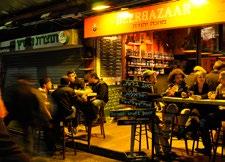
CAFÉ MIZRAHI
Café Mizrahi sits at the heart of the market. This is the cafe that started transforming Machane Yehuda market from a place to buy produce to the center of Jerusalem’s night life. It was a warehouse until 2001. Eli Mizrahi, whose family has owned several counters in the market, bought the place in 2002 and opened an espresso bar instead of another trading counter.
Later it became the most popular cafe in the market. That was the time when after the second Intifada, the market place was neglected and considered non-prestigious.. However, the cafe caused such a resonant response that other businessmen started opening cafes in the market area as well. This place will always remain an example of how a single initiative can lead to change.
BASHER FROMAGERIE
Eli Basher turned his small family business into a cheese empire, and now his cheese shop is famous all over Jerusalem among cheese and dairy lovers.
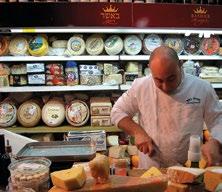
HAMOTZI
After winning the culinary show "Master Chef" three years ago, Ali Levi has made his dream come true and opened a restaurant on Agrippa Street. Levy is one of the most famous chefs in Israel and his kitchen offers interpretations of North African cuisine.
BEER BAZAAR
You’ll discover a beer market on the corner of the Ets Haim and Jaffa streets. Here you can buy more than 70 local beers. At night, beer market tables are placed in the street and the entire market becomes one big bar.

This is the center of Jerusalem's nightlife.

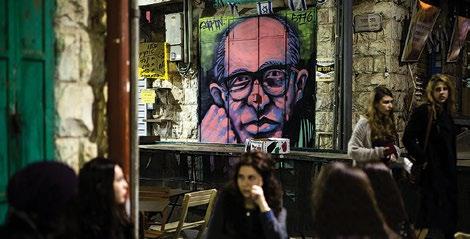
FISHENCHIPS
Shlom and Abraham returned from a trip with a business idea--they prepare fish and chips with fresh fish from their fathers’ fish shop.
Chef Mario Gain’s sauces crown his dishes.
27 VOYAGER 6/2017
IT IS INTERESTING THAT THIS PLACE HAS BECOME THE FACE OF MODERN JERUSALEM; LIVELY, SMILING FACES, OPEN FOR EVERYTHING NEW.
MARKET / JERUSALEM
TASTING AUTHENTIC CUISINE IS THE MOST INTERESTING THING FOR GOURMANDS TRAVELING IN ISRAEL. RESTAURANTS THAT HAVE THE ORIGINAL AUTHOR’S MENU ARE FULL ON WEDNESDAYS AND ESPECIALLY THURSDAY NIGHTS. I THEREFORE RECOMMEND YOU TO BOOK A PLACE IN ADVANCE, AT LEAST TWO WEEKS BEFORE YOUR DESIRED DATE.
You will encounter the so-called “open kitchens” in many of the famous restaurants. They are considered to be more interesting and “live” places. Here the kitchen is separated only with a counter and you can get to know the chef or barman, or entertain yourself by watching the work taking place in the kitchen. It is better to choose the chef’s menu in the author’s restaurant, which will likely consist of several notable dishes. This will allow you to better understand the concept of the chef and taste food that you can’t eat anywhere else. When ordering, you can specify which foods are not acceptable to you. The chef will take this into account.
Most restaurants in Israel traditionally work from Sunday till Thursday. They mainly close on Fridays after lunch (15.00-in) and reopen on Sundays for dinner (19.30-20.00).
It is common to leave a tip of 10-15% in restaurants and cafes.
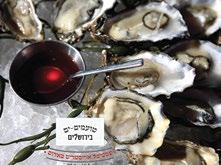
MACHNEYUDA
You definitely need to visit this place. This unforgettable, lively, progressive restaurant based on multi-ethnic traditions was created by three exceptionally talented chefs: Granite Asaf, Uri Navona and Yossi Elad. It is impossible to understand the rise in popularity of modern Israeli culinary dishes without tasting the dishes in this restaurant.
I advise you to trust your waiter (chef) – they will definitely choose something magical for you from their menu, which changes constantly and seasonally (definitely try the mushroom polenta). When booking in advance, it is better to choose the first floor of the restaurant; the most popular day is Thursday (from 21.00).
Open: Sunday-Thursday - 12.30-16.00, from 18.30 (till the last guest leaves); on Fridays from 11.30 until one and a half hours before Saturday begins. Opens one and a half hours after the end of Saturday.

Price: set menu (chef's choice) 265 NIS or 188 NIS (Two course meal and the glass of alcoholic beverage)

ADOM
This restaurant has long been a leader of Jerusalem's culinary scene. In different times, a few modern cuisine celebrity chefs have worked here. The restaurant today is led by the outstanding Assaf and Naomi Ritz, who developed a French-Israeli fusion of fish and meat.


Tartar from various fish, risotto with blue crab and delicious cocktails make an unforgettable impression.
Open: 12.00-02.00; Price: 152 NIS .
First station (former complex of Jerusalem’s first railway)
David Ramez st 4; Tel. +972 2 624 6242
TALBIYE
Several wonderful restaurants belong to the Machneyuda Group in London and Jerusalem. One of them is a kitchen and wine bar located under the Jerusalem theater, which offers unique breakfasts in the morning by the Machneyuda Group’s varied chefs.
Price: Breakfast _ 55 NIS; Supper _ 142 NIS
Chopin st 5; Tel. +972 2 581 1927
28 VOYAGER 6/2017
Beit Ya’Akov st 10; Tel. + 972 2 533 3442
ROOFTOP
This restaurant is famous for its location on a terrace of the boutique “Mamila” hotel, offering a breathtaking view of the city, which is unforgettable during sunset. Definitely taste the dishes prepared in clay oven a "tabun". The restaurant offers high-quality vegetables, fish and meat dishes from Europe, but you will enjoy delicious perch Shaurma as well.
Open: Sunday-Thursday – 18.00-23.00; Friday – 12.00-14.30; Saturday – 19.30-23.00; Price: 224 NIS Two course meal and the glass of alcoholic beverage
JACKO’S
Lots of small restaurants are located in the vicinity of the Jerusalem market, Mahane Yehuda. Among others, you must visit chef Zakai Huja’s cheerful place where you will remember for a long time the taste of any dish - salmon ceviche, corn-grazed calf asado or an ordinary hamburger.
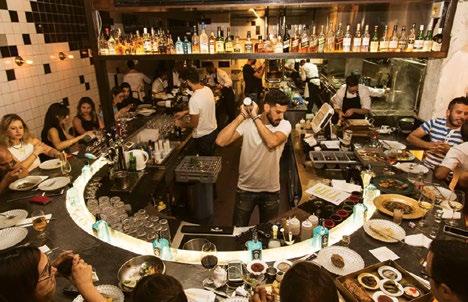
Open: Monday-Thursday – 18.00-01.00; Saturday – 21.00-01.00; Sunday – 18.00-01.00; Fridays closed.
Price: 177 NIS Two course meal and the glass of alcoholic beverage
CHAKRA
Since 2000, Eran Peres’ and Roger Moore's prestigious restaurant has been the favorite gathering place for locals. According to the chef’s concept, the Italian menu is represented with Jerusalem accents. For example, roasted beets with mozzarella; squid with lemon marinade and fresh coriander; eggplant fried on open fire with Tahini sauce.
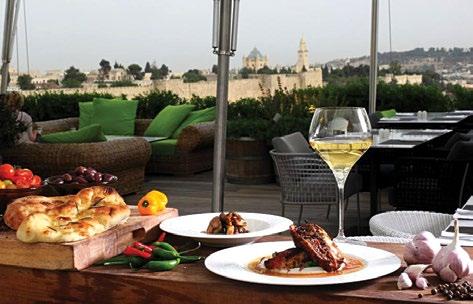
Open: Monday-Friday – from 18.00; Saturday – from 12.30 pm (until the last client) ;
Price: 225 NIS Two course meal and the glass of alcoholic beverage

King George st 41
Tel.+ 972 2 625 2733
MONA
Mona’s talented Chefs - Moshe Gamlieli and Itamar Navoni –offer a modern, European-Jerusalem mix. The inspiration for the menu comes from the seasonally changing products of the Mahane Yehuda market. We recommend that you taste the Tulu cheese ravioli, the daily fish tartar with lemongrass sauce or a Hangar steak.
Open: Sunday-Thursday 18.30 till the last client leaves; Friday: 12.30-16.30 and from 18.00 onwards. Saturday: from 12:30 till the last client leaves.
Price: 211 NIS Two course meal and the glass of alcoholic beverage

Hmuel Hanagid st 12
Tel.+972 2 622 2283
SATYA
This is an author restaurant of Ilan Garus, which was created under the influence of Mediterranean cuisine. The dishes are gently selected according to the strict peculiarities of seasonal products.
We recommend eating the chicken liver salad, a delicious seafood dish (pan-fried squid and shrimps), or ribs marinated in Japanese sauce for eight hours.
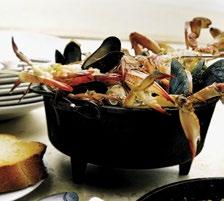
Open: 13.00-17.00; 19.00-01.00;
Price: 194 NIS Two course meal and the glass of alcoholic beverage
Keren HaYesod st 31 Tel.+972 2 650 6808
HAKETZAVIM
This meat dish restaurant is a follower of Middle Eastern culinary traditions. The owners are the current representatives of a long dynasty of professional butchers.
Here you will be offered only the best-quality fresh and skillfully prepared meat dishes – especially kebabs. This place is a real oasis for meat-lovers.
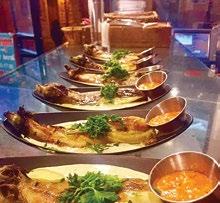
Open: Sunday-Thursday12.00-01.00;
Price: 155 NIS Two course meal and the glass of alcoholic beverage
Agripas st 34 Tel. +972 2 328 1891
29 VOYAGER 6/2017
Hashikma st 6; Tel. + 972 2 581 7178
RESTAURANT / JERUSALEM
Hotel Mamila; Shlomo ha-Melekh st 11; Tel.+ 972
2 5482230
AUSTRIAN HOSPICE
Historic building of Austrian hospice is located in the corner of Via Dolorosa and AL-Vada Street. The center for Austrian Catholic pilgrims was founded here 150 years ago. Today, this tradition is partially preserved and a hospice is turned into a hotel, which is open for pilgrims, as well as the usual travelers. Visit this area for its famed Viena cafe, where you can enjoy a real Viennese coffee from Julius Meinl and the famous strudel, Viennese schnitzel and other Austrian dishes. Hospice’s wooden door is usually locked, so you will have to ring the bell.
Open: every day - 10.00-23.00; Price: 140 NIS Two course meal and the glass of alcoholic beverage
Via Dolorosa 37; Tel. +972 2 6265800
NAFOURA JERUSALEM
There is the restaurant featuring traditional dishes in the Christian district, near the Jaffa gate. Here you can dine in a beautiful interior or in a very cozy, pleasant courtyard.
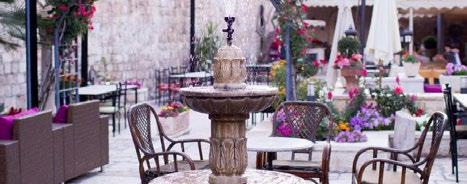
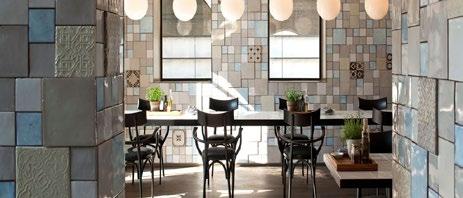
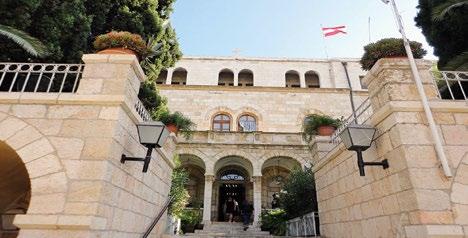
Open: every day except Sunday - 12.00-24.00 Price: 143 NIS Two course meal and the glass of alcoholic beverage
Latin Patriarchate Road 26; Tel. +972 2 6260034
ETZ CAFÉ AND SHRAGA
These two cafes are located side by side. Etz Café is known for its delicious variety of food, but this place has grown in popularity because the daily income is almost entirely transferred to the fund for homeless children. Shraga is a small artistic cafe where you can enjoy a good cup of coffee and delicious, hastily prepared sandwiches.
Open: Monday-Friday - 08.00-16.00; Saturday closed. Price: 75 NIS Yanai 3; Tel. +972 542489178
JAFFA GATE FALAFEL RESTAURANT & CAFE
This is the best place for falafel lovers. You can enjoy the most delicious falafel at the old city gate of Jaffa. Jaffa Gate Falafel is in the list of must-see places for travelers. Open 24 hours a day.

Corner of the Latin Patriarch Road
BANDORA
If you accidently come across Rehov Tiferet Street during the old city walk, know that according to the locals this place offers the best doner.
Rehov Tiferet 17; Tel. +972 50 4205649
CAFÉ KADOSH
This cafe, which has gained popularity, opened 41 years ago and is still owned by the family of the founders. Delicious pastries and fish marinades are prepared on the spot. The cafe is known for its broad choice of breakfasts. That’s why we advise you to make a reservation in advance.
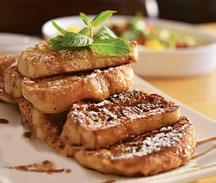
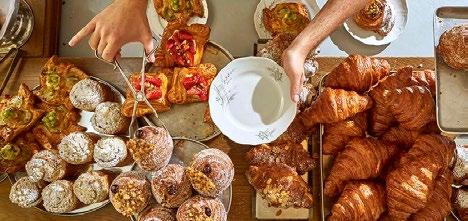
Shlomotzion HaMalka 6; Tel. +972 53 8094518
MAMILLA CAFÉ
A café situated Near the Hotel “Mamilla” has ideal terrace and a marvelous location on top of the shopping street. In addition, from 12.00 to 18.00 café offers a complementary glass of wine with the main dish, as a gift to its customers.
Open every day, except for Friday evening and Saturday morning. Price: 150 NIS Two course meal and the glass of alcoholic beverage
King Solomon st 11; Tel. +972 2 548 2230
30 VOYAGER 6/2017
CAFE / JERUSALEM
International Exhibition & Events EXHIBITION CALENDAR 2017
16-17 FEBRUARY
www.educationfair.ge
27-29 APRIL
www.tourismexpo.ge
16-19 MAY
www.buildexpo.ge
9-11 JUNE
www.winexpo.ge
11-13 OCTOBER
www.elcommexpo.ge
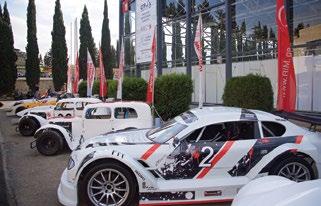
www.aquatherm.ge
IEFG – INTERNATIONAL EDUCATION FAIR GEORGIA
The 7th International Fair for High and Professional Education, Overseas Studies and Students’ Services
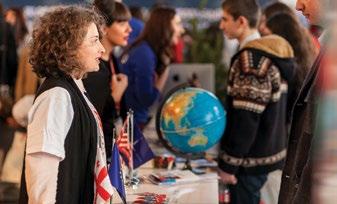
CTF’17 – C AUCASUS T OURISM FAIR
The 19th International Tourism Fair
CAUCASUS BUILD 2017
22nd International Exhibition for Building and Interiors
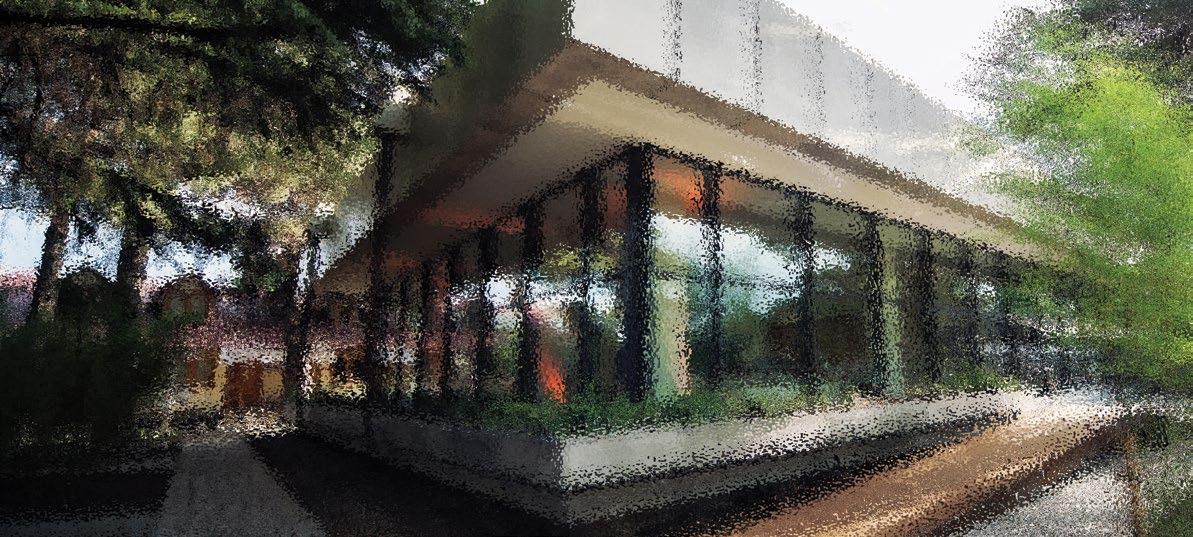
WINEXPO GEORGIA’17
10th International Wines and Spirits Fair
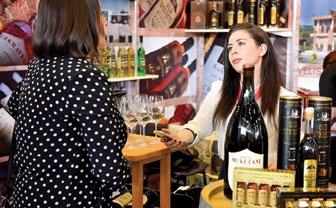
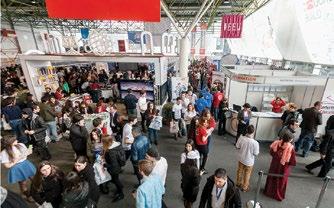
ELCOMM CAUCASUS 2017
the 4th International Exhibition for Power and Telecommunications
AQUATHERM TBILISI 2017
the 4th International Exhibition for HVAC
26-28 OCTOBER THF’17 – TBILISI HEALTH FORUM
www.thfexpo.ge
CAUCASUS HEALTHCARE – International Fair for Medical Technology and Equipment
TBILISI BEAUTY – International Fair for Aesthetic Medicine
TBILISI DENTAL SHOW – International Fair for Dentistry and Dental Equipment
20-22 NOVEMBER
www.agroexpo.ge
DECEMBER
www.bookexpo.ge
AGRO/FOOD/DRINK/TECH EXPO GEORGIA
The 17th International Exhibition for Agro, Food, Drink Products, Packaging and Processing Equipment
TBILISI BOOK DAYS 2017
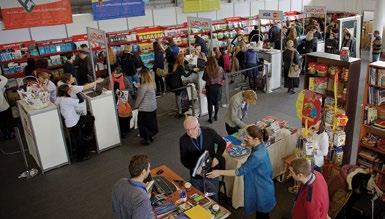
RECOMENDATION
OLD RAILWAY STATION
The urban area of XIX-century Jerusalem began to develop outside the walls. However, getting from Jaffa to Jerusalem was not easy. It took a 10-hour ride and the basic mode of transport was a camel. With the development of new technologies, construction of the first railway station commenced during the Ottoman Empire.
GATSBY
A whole adventure awaits you on the way to the bar –after passing through the mediocre entrance, you will find yourself in its sumptuous interior, reminiscent of the beginning of the XX century, furnished with bookshelves. If you have booked a place, the wall opens and you will appear in a world of magic cocktails in the era of American prohibition, surrounded by jazz and swing tunes.
ZUTA
Open: Monday-Friday – 18.0003.00; Sunday – 18.00-24.00; Price: starting at 38 NIS ("La Punta" _ chili pepper-filled tequila cocktail)
Hillel st 18; Tel. +972 54 8147143
This bar is located beside Yankale Turjeman’s famous restaurant "1868", distinguished by its classic cocktails prepared from the best beverages. We definitely recommend a classic Old Fashioned cocktail mixed with Knob Creek Rye bourbon. Open: Sunday-Thursday – from 18.00; Price: starting at 38 NIS per cocktail.
10, King David street; Tel. +972 072 328 1977

YUDALE
This bar is distinguished by its relaxed atmosphere, where you can taste delicious tapa appetizers and enjoy excellent cocktails. This bar is the property of the “Machneyuda” group. Their main restaurant is located on the opposite side of the street.
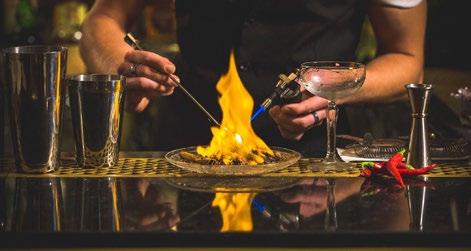
Open: Sunday-Thursday – from 18.30-till the last visitor; Friday11.30 to 03.00; Price: per cocktail 38 NIS.
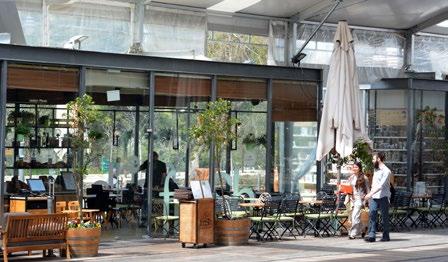
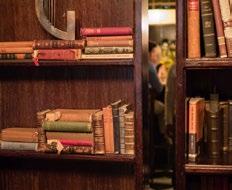
Beit Ya’akov st 11; Tel. + 972 2 5333442
The story of the building of the Jaffa-Jerusalem railway line is like a historical novel, but the main thing is that the story has a happy ending. The first train pulled into the station in Jerusalem on September 26, 1892 and the people were delighted. The festive mood continued for a long time because the station – the only public building built during the domination of the Ottoman Empire – has remained busy ever since.
Once the station became obsolete, it was conserved. It was later restored as a historical monument and, as a result, the territory of the station remains full of people to this day with a real buzz in the cafes, bars and restaurants.
Street vendors line up where the train used to pass by; they sell excellent pancakes and desserts.
There are a lot of interesting souvenir shops, as well as a great deal of space for children, making it perfect for family visits, especially considering the finest Israeli ice-cream is on offer there at Vaniglia. It should be noted that the station is open on the Sabbath.

32 VOYAGER 6/2017
BAR / JERUSALEM



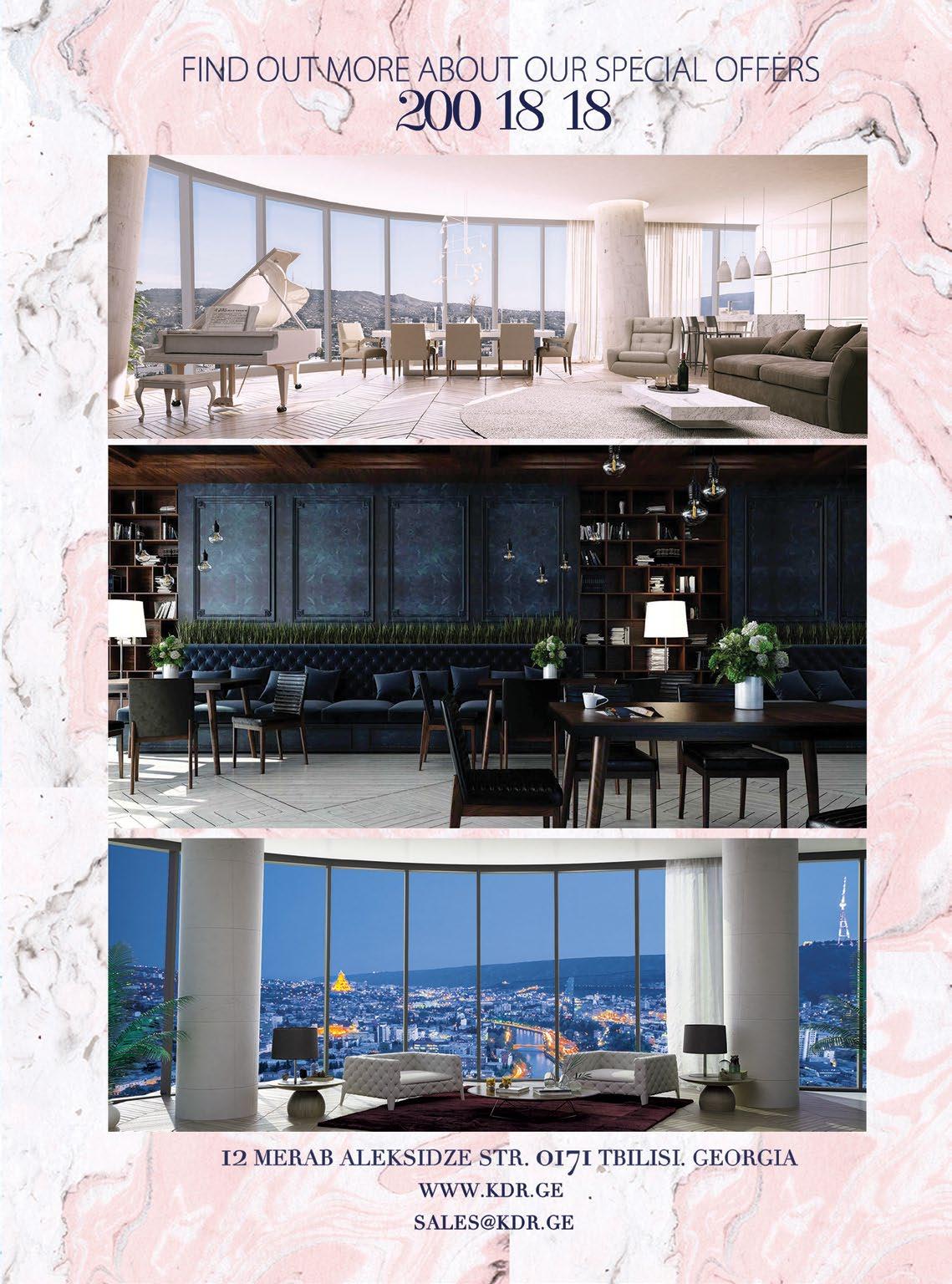
TEL AVIV
Tel Aviv features a beautiful 14-kilometer beach and local residents whose bodies are always tanned and faces smiling. It is a friendly and tolerant city, embodying progressive European approaches spiced up with Arabic and Levantine traditions.
At first glance, it appears that Tel Aviv is placed under a cover of indifference and discussions here only concern the culinary scene, art exhibitions and young designers.
In fact, this city was the first to deal with conflict in Israel. It was raised from the sand more than a century ago; it has maintained its courage, and always
TEA SKHIERELI
takes into account the views of its founders. Tel Aviv is mostly Jewish, though as rich and multicultural as European cities. Tel Aviv beats its own rhythm. Visitors have plenty of reasons to slow down here and enjoy their adventures.
An enviable urban phenomenon is one of the main advantages that most travelers think of when remembering Tel Aviv. They also recall coastal planning, secularity, gastronomic discoveries, commercial vision and cultural achievement. This modern city is one of the most sophisticated destinations on the world map.
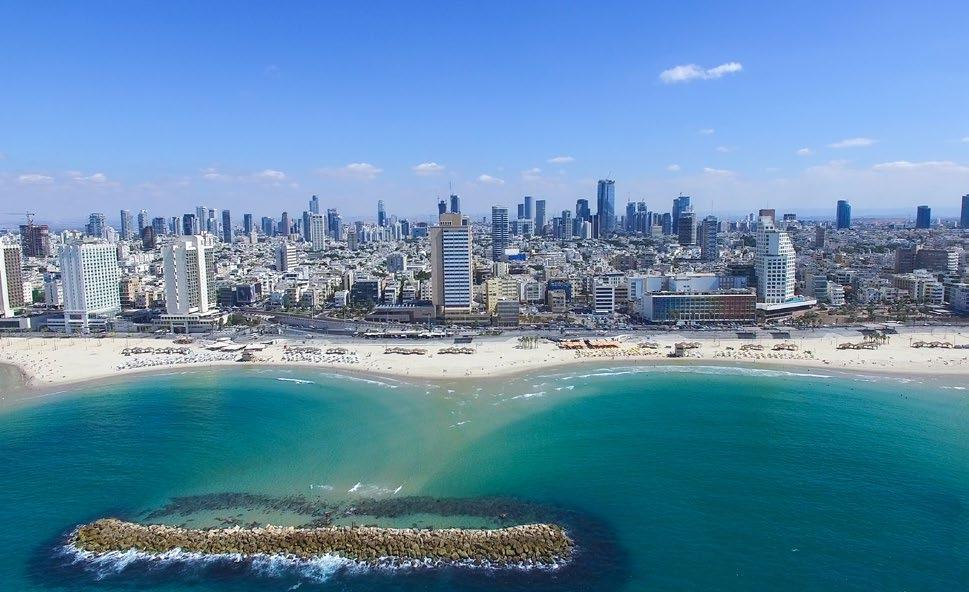
YAAKOV AGAM’S "FIRE AND WATER FOUNTAIN" IS LOCATED IN THE CENTER OF DIZENGOFF SQUARE. IT IS A MOVING KINETIC SCULPTURE AND CHANGES IN ACCORDANCE WITH THE VIEWER'S VANTAGE POINT AND ACQUIRES OPTICAL CHARACTERISTICS. IT ROTATES TO MUSICAL ACCOMPANIMENT AND SPRAYS WATER AT 11.00, 13.00, 19.00 AND 21.00. IT IS ILLUMINATED AT NIGHT.
TEL AVIV’S NORTHERN DISTRICTS ARE TRADITIONALLY INHABITED BY REPRESENTATIVES OF THE ELITE, WHILE THE SOUTHERN DISTRICTS ARE MORE ECLECTIC. THE FIRST IMMIGRANTS SETTLED IN DISTRICTS NEAR ROTHSCHILD BOULEVARD. ARABS AND JEWS TODAY TRY TO LIVE IN PEACE HERE. IN THE LAST DECADE, TEL AVIV HAS ESTABLISHED ITSELF AS THE CITY THAT NEVER STOPS, EVIDENCED BY ITS ABUNDANT CAFES AND NIGHT-LIFE.
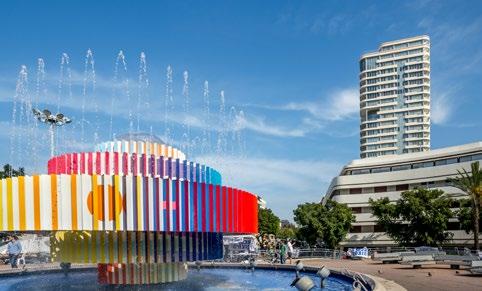
36 VOYAGER 6/2017
Fire and Water Fountain
JAFFA / YAFO

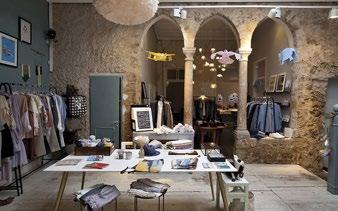

Tel Aviv's history starts from Jaffa. Old Jaffa was founded 3,000 years ago. It was one of the main ports of Israel. Jaffa is one of the oldest continuously inhabited cities in the world. This district in Tel Aviv is one of the oldest settlements, in which the war was unleashed over the centuries.
In 1909, 66 Jewish families established Tel Aviv’s "Ahuzat Bayit” (“homestead”) district in Jaffa. Until 1910, it was a Jaffa district, then it was renamed Tel Aviv (“Spring Hill"). Tel Aviv quickly grew and became the center of the Yishuv (the Jewish population in Palestine at that time).


11 well-known churches, monasteries and mosques are located in Jaffa, among them the church of St. Peter and Franciscan mon-
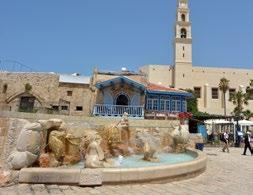
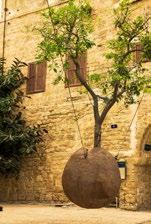


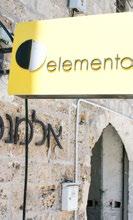
We also recommended that you try the world-famous Jaffa oranges. The 19th century Palestinian farmers grew distinctive species for their special taste.
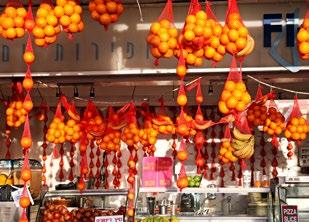
NOGA/ NEVEH TZEDEK
Noga is located between Tel Aviv and Jaffa. It is a creative hub. Aaron Shlush founded this first Jewish quarter as an "Oasis of justice" in Neveh, in Tzedek, in 1887. The settlement soon became a fashionable bohemian location. The creative elite of Israel resides here. The house-museums, high fashion boutiques, personal works and antique stalls are almost everywhere.
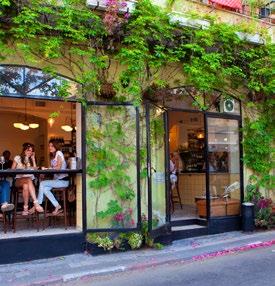
37 VOYAGER 6/2017 DISTRICT / TEL-AVIV
astery. Visit Jaffa’s flee market (Yefet), historical settlement and Ilana Goor museum (Mazel Dagim 4) – the house-museum of an Israeli sculptor and furniture master. Lunch at Dr Shakshuka’s café.
CYMBALISTA SYNAGOGUE
Mario Botta designed a synagogue building with two circular, 13-meter towers, which divide the structure into two functional spaces: a prayer space and a secular lecture hall. It is located on the campus of Tel Aviv University. It expresses the symbioses of different fields and tolerance. The temple features modest Bible story illustrations.
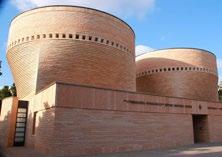
FLORENTINE
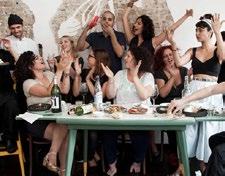
Florentine is often referred to as the Soho of Tel Aviv. It has an eclectic population. Traditionally, most of the dwellers were poor; now this place has gradually become the residence for the young and ambitious. Old Florentine buildings were transformed by artists in the 1990s into lively, fashionable spaces. Many bars, restaurants and shops, night clubs and live music venues are situated in abandoned warehouses or basements. The harmonious unity of poverty and wealth, hard work and fun, and permanence and transience is characteristic of Florentine.
ASIA HOUSE

"Asia House" is part of a sophisticated urban space - the amorphous message among the geometric brutality. Its creator and architect Mordechai Ben Horin claimed that the structure of the house was inspired by the waves. Ben Horin created a sculptural, wavy façade. Seven floors are hanging, serving as a ceiling of open corridors.
FIRST INTERNATIONAL BANK
Tower
_ Pei Cobb Freed designed a 132m high skyscraper, the tallest building in the country and first certified “green” structure. Five glass prisms create a terraced, asymmetrical skyscraper.

Rothschild Boulevard 40

Florentine has become an alternative culture center, where the night-life is booming. At night, it is revived and transforms seemingly ordinary places into entertainment spots; bars sell cheap drinks, and the sidewalks are full of people waiting for falafel and pizza. Florentine is one of Tel Aviv’s most popular districts.
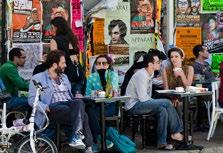
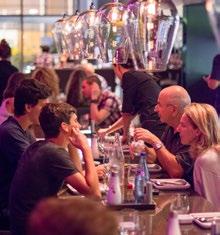
center of Tel Aviv. It begins at Neveh Tzedek, from the city's South-West district. The monument to the founders of the city stands almost in the middle of the street, opposite the houses in which the State of Israel was declared.
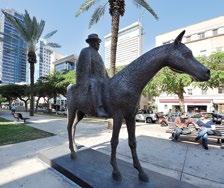


ROTHSCHILD BOULEVARD
Rothschild Boulevard is one of the biggest streets in the
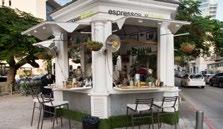
Tel Aviv’s first Mayor, Dizengoff lived here. Rothschild Boulevard is known for its concentration of financial institutions.
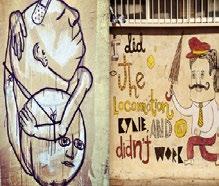

YOO TOWERS
The twin skyscrapers built by Philippe Starck formed the first skyscraper residential complex in Tel Aviv.
Mordechai Namir

38 VOYAGER 6/2017
Weizmann 4
TEL AVIV PORT
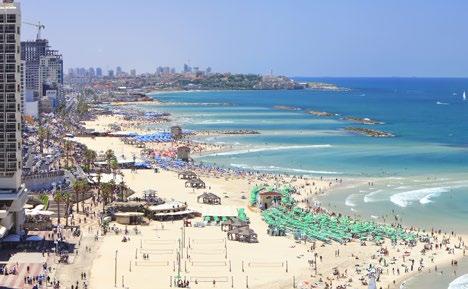

Tel Aviv's main harbor was built in 1930 and has been completely altered in recent years. Architect Tzadik Eliakim designed this multi-million dollar rebranding to awaken Tel Aviv Port in 2002 from its deep sleep. Its streets house high-class restaurants, trendy shops and night clubs. Free jazz concerts, antique and organic shops increase the port’s popularity.
AZRIELI CENTER

These triangular and square-shaped skyscrapers opened in 1998. In 2007, a circular-shaped building was added, which is the tallest in Tel Aviv. All three of them are connected to the shopping center.
By 2022,
will be
TAYELET
This six-kilometer seaside walking trail borders the western part of the city. Its wide pavements are decorated with palm trees, tinted alleys and food stalls. It’s the perfect place to jog, walk your dog, or take a stroll. This is the Miami of the Mediterranean.

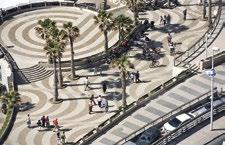
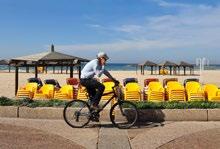
HAKIRYA
This building is Tel Aviv’s central military headquarters, which is known for its original "communications tower".

WEIZMANN HOUSE

Menachem Begin 132

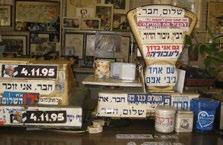
SHEINKIN _ This is a lifestyle rather than a street. It features many restaurants and Israeli designer boutiques and is especially crowded on Saturdays. Hamedina Square is located deep in the city and houses Gucci, Louis Vuitton, Versace, Escada, Armani and Furla stores. Democratic Gap and Tommy Hilfiger are in the neighborhood as well.
Israeli-German architect Eric Mendelsohn is known for his expressionistic "Einstein skyscraper" in Potsdam and modernist De La Warr Pavilion in Bexhill. He created a 25-room residence for the first President, Dr. Haim Weizmann. The house is distinguished by its classic proportions and symmetry. At its center is a hemi-cylindrical-shaped staircase. It opens up to a wonderful view of the gardens.
MAKE SURE TO LOOK FOR THE SO-CALLED “CRAZY HOUSE” (181 HAYARKON ST). ISRAELI ARCHITECTS CREATED THIS HUMOROUS COPY OF GAUDI’S ARCHITECTURAL MASTERPIECE IN THE 1980S.
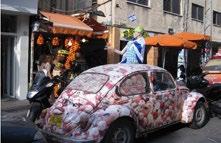
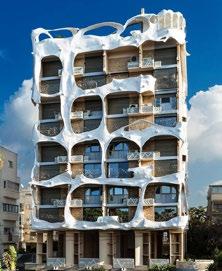
39 VOYAGER 6/2017
Herzl 234
Shaul Hamelech Boulevard
they
joined by skyscrapers designed by Moshe Tzur, which will be twice as tall.
DISTRICT / TEL-AVIV
THE NORMAN
Since opening in 2014, The Norman has become one of the favorite places of the city’s guests. The hotel is located in two pastel-colored buildings. Architect Yoav Messer renovated the buildings built in 1920 and added a penthouse floor with a bath house and terrace. The interior is designed by David D'almad, echoing the glamourous spirit of the 1920s. The library-bar designed in the style of the 1940s exceeds all expectations. There are 50 rooms, lounges, a rooftop pool, a sun deck, a restaurant and a cafe.

Price for double standard room: starting at 510 $

Nachmani 23/25
www.thenorman.com
HOTEL MONTEFIORE
This small hotel, built in the 1920s, features a facade that blends traditional and Levant ornaments – it is a true treasure. It contains twelve rooms, each dedicated to Israeli artists. You may taste Vietnamese cuisine, along with other dishes at the restaurant. Here you can enjoy the best wines and other beverages. Fun events are held in the evenings so you can’t refuse to dance.
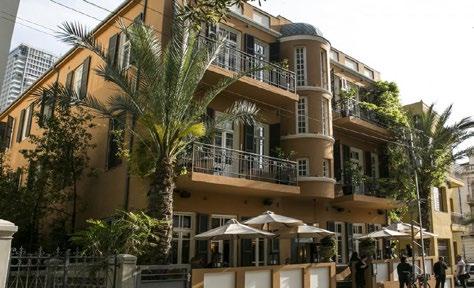
BROWN BEACH HOUSE
The hotel opened in 2015 and immediately became a coastline landmark. V studio architects outfitted it with retro-style glamour and turned it into an ideal space. 40 spacious rooms and a slightly yellow color will enchant you while the zigzagged carpets will make you dizzy. The neighboring Imperial Bar has the best cocktails in the area.
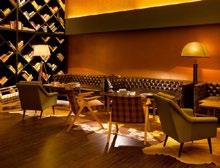
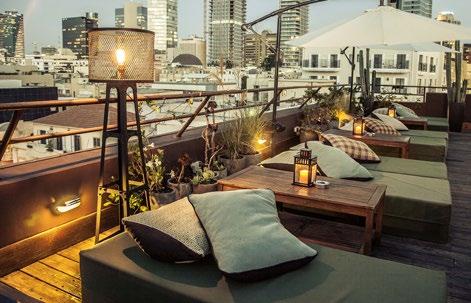
Price for double standard room: starting at 170 $ Hayarkon 64; brownhotels.com/beach/
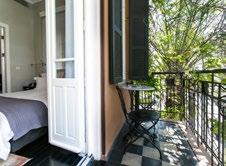
Price for double standard room: starting at 400 $


Montefiore 36
www.hotelmontefiore.co.il

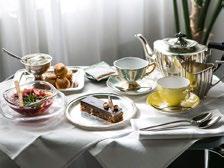
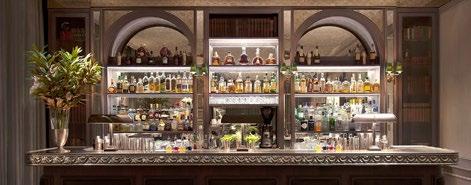
40 VOYAGER 6/2017
CARLTON TEL-AVIV
All 268 rooms and spacious suites of the Carlton Tel Aviv feature unique, sophisticated designs and comfortable furniture. Guests are guaranteed a good night’s sleep, a delicious meal, a good rest, relaxation and fun.

The pool on the roof of the hotel is on the 15th floor and offers a magnificent panoramic view. Located in a quiet oasis in the heart of Tel Aviv's noisiest district, you can find idyllic settings and fully relax.

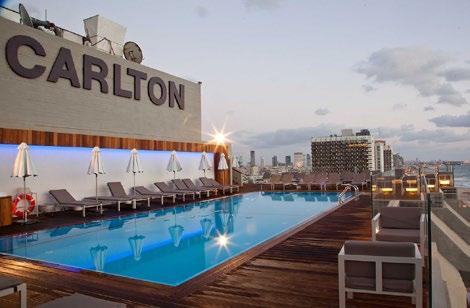
Carlton Tel Aviv's renovated spa and gym will appease your senses.
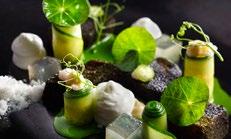
Exercising among the works of the famous contemporary sculptor David Gerstein and watching tidal waves on nine large monitors is truly impressive.
The hotel owns two restaurants, led by world-renowned chef Meir Adoni. One of them, BLUE SKY, is located on the roof of the hotel. Here you may taste fish or vegetarian dishes and enjoy an open view of the city.

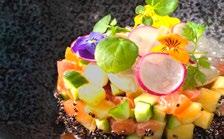
The restaurant features a sophisticated modern interior and is distinguished by a sense of luxury and romance. You can access the terrace and enjoy sea views and Tel Aviv’s vibrant atmosphere at the bar. Here you may taste lighter dishes, made with fresh, high-quality local and seasonal ingredients.

Open: Sunday to Thursday from 18.00 -23.00; Friday 10.00-14.00; Standard room price: 340$
Eliezer Peri st 10; www.carlton.co.il
NEVE TZEDEK HOTEL

This five-suite hotel was restored by two brothers. It stands out due to its elegant whitewashed interior design and eccentric Kitsch elements. There is also a three-level garden suite, which has a patio, as well as a roof suite, with a sun terrace and Jacuzzi. Enjoy breakfast nearby in the French bistro-style Lulu Kitchen. It is located in the city's most lucrative but crowded area. You will find many high-class restaurants and bars here.
Price for double standard room: 150 $ Deganya 4; www.mendelisthotel.com
41 VOYAGER 6/2017 HOTEL / TEL-AVIV
TEL AVIV MUSEUM OF ART



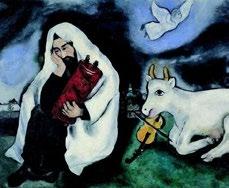

Preston Scott Cohen created a unique facade as an extraordinary example of the deployment of geometrical tiles, giving a special brilliance to Tel Aviv’s Art Museum. 457 tiles are perfectly situated around 27-meter spiral gallery, where Israel’s biggest contemporary and conceptual art collection is displayed.
The collection was accumulated over the last hundred years and brings together a diverse palette of Jewish art, as well as works of European artists from the Renaissance to the present day, including particularly interesting works of impressionists and modern works of American authors, and more than 20 drawings and engravings. The wide square in front of the museum is decorated with monumental structures.
Open: Monday, Wednesday and Friday – 10.00-18.00; Tuesday and Thursday – 10.00-21.00, Friday – 10.00-14.00; Closed on Sunday. Ticket price: 20 NIS
Shaul Hamelech Blvd 27 www.tamuseum.org.il
HELENA RUBINSTEIN PAVILION FOR CONTEMPORARY ART
The Helena Rubinstein Pavilion, a branch of Tel Aviv’s art museum, is located near the city center, next to the "Gamibisa" theatre and the "Geihal Tarbuti" Palace of Culture. A Contemporary art work exhibitions are held next to the Helena Rubinstein Pavilion Vernissage collection.

In fact, this part of the building attracts no less visitors than the exhibitions presented inside. Architect Preston Scott Cohen was able to create a unique futuristic-style structure, with unprecedented exhibition capacities, that can be used in single and multilevel spaces.
In general, the interior of the museum is tied together by a 26-meter vertical composition of a "falling light line", which surrounds the building like a spiral, and descends from one level to the other. Natural light pours in from the ceiling and atrium. Levels are connected by stairs and ramps, which are also directed spirally and remind us of the interior of the Guggenheim Museum.
The exterior of the building represents angled modules, created by 430 polished cement panels resembling folds.

Open: Monday, Wednesday and Friday – 10.00-18.00; Tuesday and Thursday – 10.00-21.00; Friday – 10.00-14.00; Closed on Sunday. Ticket price: 20 NIS
Tarsat Blvd 6; Tel. +972 0 3 5287196
42 VOYAGER 6/2017
DESIGN MUSEUM HOLON
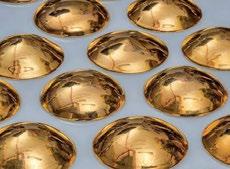
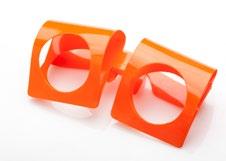



The first large-scale complex projected by Anglo-Israeli architect Ron Arad is located in the city of Holon, which is a 20-minute drive from Tel Aviv. It was opened in 2010 and represents an exhibition center for design, jewelry, textiles and furniture. Here you will find works of local and foreign artists. The design of the complex will impress you – a huge sculptural facade forms a shape of eight with a huge reddish steel "strip" on the side.
ERETZ MUSEUM
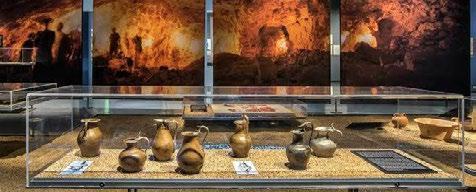
The name "land of Israel" accurately describes the essence of the museum - it portrays the whole country full of historical and cultural richness. The museum complex is a vast area created according to a typical Israeli landscape, where entertainment facilities and parks are scattered.
At the Tel Casillas archaeological excavations, you can see XII-century remains of a Philistine city, test your abilities in the planetarium as a novice astronomer and feel like a spacecraft passenger. Both elderly and young people will enjoy seeing a firefighter car, brought from New York, which is 80 years old and belonged to the first Israeli squad.
Here you can also visit a square which is decorated with old mosaics as well as the fist still device for olive oil, a solar clock, etc.
Opening hours: Sunday, including Wednesday and Friday – 10.00-16.00; Thursday – 10.00-20.00; Friday – 10.00-14.00

Ticket price: 52 NIS
www.dmh.org.il
ALON SEGEV GALLERY

By the end of 1880, Neve Tsedek was a district of writers and artists. Since then, the city has grown and the small houses and narrow streets of the district fell into a deep sleep. Exactly a century later, Neve Tsedek revived and presented itself as the city's most important cultural, culinary and shopping center.
Since 2009, the Alon Segevi gallery has moved here into a gloomy, cubic cement-facade building. The interior is fully in contrast with the exterior and you will see the works of leading Israeli artists over the white walls.
Rothschild Boulevard 6; www.alonsegevgallery.com
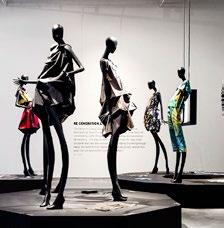
43 VOYAGER 6/2017 MUSEUM / TEL-AVIV
The complex is located in the residential area which is famous for its character and comic museum as well as Holon Mediateka.
Pinhas Eilon 8
Haim Levanon st 2, Ramat Aviv www.eretzmuseum.org.il
SHOPPING IN TEL AVIV IS A PLEASANT "BONUS". IF YOU WISH, YOU CAN TAKE HOME SOME REALLY GOOD ITEMS FROM THIS OASIS OF WELL-BEING IN THE MEDITERRANEAN SEA. YOU JUST NEED TO KNOW WHERE TO GO TO SHOP.

KIKAR HAMEDINA
Tel Aviv's famous Kikar Hamedina ("the Square") is the city's largest square and an exclusive Israeli shopping space. It is located in the northern part of Tel Aviv, with a large park in the middle, surrounded by elegant buildings built by the architect Oscar Niemeyer.
Luxurious boutiques are located on the first floor of residential buildings. You will find them on He Be'Iyar, the city's most crowded street. Here you may purchase the products of high fashion designers and the best brands of clothing, shoes and accessories, such as Escada, Miu, PAROSH, Saint Laurent, Alexander Wang, Balmain, Prada, Minna Parikka, Rene Caovilla, Chiara Ferragni, Ancient Greek Sandals, Oscar Tiye, Kenzo, Escada, Gianvito Rossi, Aquazzura, Sophia Webster, Jimmy Choo, Lanvin, Baldinini – and this is just a modest list.
Beauty salons, cozy cafes and art galleries are located here as well. Kikar Hamedina blends classic elegance and modern luxury, making your shopping trip in Tel Aviv unforgettable.
RAMAT AVIV
Here you can visit brand boutiques, such as Louis Vuitton, Carolina Herrera, H.stern, Steve Madden, and American Eagle. You may also purchase local brands, such as Dana Ashkenazi, Castro, Fox and Factory 54.
This shopping center is not large and you may also taste coffee and pastries there.
Open: Sunday-Thursday - 09.30-21.30; Friday - 08.00-16.00; Saturday after 1-23.00 pm
Einstein st 40; www.ramat-aviv-mall.co.il
SHARON BRUNSHER
After Sharon Brunsher established his own brand in 2005, his clothing has been known as the best style in Tel Aviv.
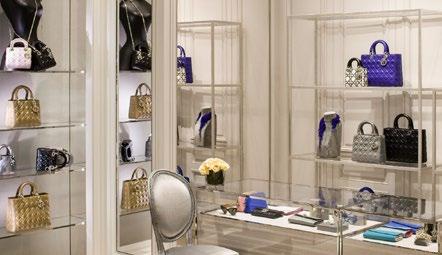
He owns four concept stores, each strikingly individual, offering what appears to be carelessly made and unpretentious clothes: T-shirts, knits, and cardigans, as well as the black, white and gray bedsheets.

Open: Sunday-Thursday - 10.00-19.30; Friday - 10.00-15.30
Amihad st 13; www.brunsher.com
ODED KASHI
Oded Kashi’s works are authentic, reflecting his family’s rich past; the history of Jews living in Azerbaijan continues on Hamedina.
Kashi’s creations could be described as exotic, inspiring, and breaking all of the rules and boundaries.
Heh B’Iyar 28
DAJ DARYA
Liat Topel creates jewelry exclusively for DAJ Darya. Its stands out due to its transitional color palette. The designer adapts a unique combination of Eastern Europe and the Middle East motifs.
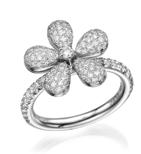
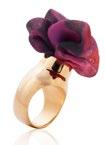
Open: Monday-Thursday: 10.00-19.00; Friday: 10.0015.00 DAJ Darya is located at the corner of Jabotinsky Street and Weizman Street.
www.dajdarya.com
FACTORY 54
These former port-storage facilities are now turned into fashionable restaurants, galleries and shops. This space houses everything from casual Castro to multi-brand Factory 54, where you will find Marc Jacobs, Paul Smith, Diesel, Neil Barrett—just like in European capitals, but slightly more expensive.
Old Port Hangar 9, Tel Aviv Old Port
44 VOYAGER 6/2017
HaTACHANA
This old railway station complex in Tel Aviv has become a center of art. Here you will see the Israeli brand boutique Sketch and find something in the interesting design store Soho, from engravings’ albums to acrylic rings for napkins. Behind the building you will discover Tel Aviv’s designer boutiques – Ronen Chen, Naama Bezalel and Ido Recanati.
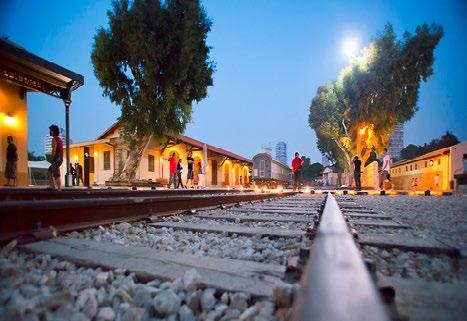
SKETCH
Sketch is a real discovery. Its leadinga designer Yossi Katsav created his own style while working for Castro, then while working as a men's clothing designer for DKNY in New York. He founded Sketch when he came home to Israel. Here, men can be dressed from head to foot.
A recent women's clothing line has elevated Sketch to a diverse, sophisticated brand.

Open: Sunday-Thursday
TALI’S WELL BEING
This eclectic concept store is found in the heart of Tel Aviv. It offers interior design items, fragrances, bath and body care products, jewelry, vegan delicacies, coffee and all kinds of juices.
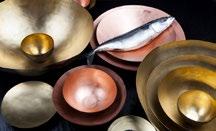
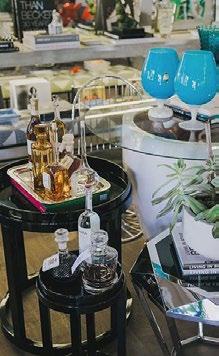
The newly-expanded food section is a real paradise for lovers of healthy food.
-10.00-20.00; Friday - 10.0016.00; Saturday - 10.00-21.00
Koifman 2; www.ysketch.com
HaTachana will dazzle you with its numerous cafes, restaurants and interesting boutiques in a historic setting. Israeli designers, artists and conceptual artists hold open-air shows every Thursday, from 7 pm to midnight. Exhibitions are accompanied by live music and DJs. Thursday does not end after midnight – then the Orbanic market begins, whose name is a synthesis of “urban” and "organic".
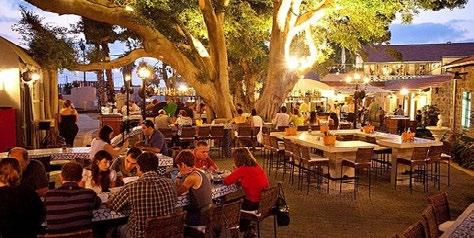
Open: every day – 10.00-22.00
www.hatachana.co.il
GAYA GAMES AND PUZZLE
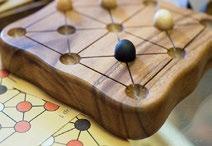
Since 1996, GAYA Enterprises has specialized in designing and developing hand-made puzzles and intellectual games, of an astonishing variety, made of all-natural wood. Uniquely designed games make perfect gifts for loved ones, and have the double advantage of being intellectually stimulating , as well as aesthetically interesting and pleasing, thus ensuring that they become the center of attention in any living room or office.

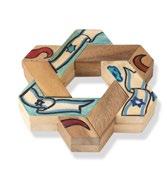
Ehad Ha’am 8 www.talisebbag.com

SETI BOUTIQUE
This boutique specializes in home decor and interior areas and offers very sophisticated, continuously updated collections from Europe and North America. SETI has become a symbol of uncompromising quality on the international market. Here you can purchase furniture, decorative items, lamps, linen, aromatic candles, textiles and books about art. All of it comes from such exclusive centers as Hamilton Conte, Pacific Connections, SKLO, Cire Trudon, L'Artisan and others.
Open: Sunday-Thursday - 10.00-20.00; Friday and holidays - 9.30-16.00
Shabazi 25; www.seti.co.il
45 VOYAGER 6/2017
SHOPPING / TEL-AVIV
INDIVIDUAL: CABINET DE PARFUMS
Situated in the middle of Neve Tsedek, this boutique offers more than 40 perfumes from the most prestigious firms. Individual: Cabinet de Parfums- no other perfume store in Israel carries such a range of fragrances. Here you will find fragrances from 15 perfume houses: celebrity perfumer Santi Burgas, Paul Vacher’s masterpiece Le Galion, the rich Acqua delle Langhe and the president’s favorite-Amuage.
Open: Monday-Friday - 10.00-19.00; Thursday - 9.00-15.00

Shabazi st 40 ; www.individual-parfum.com
RUBY STAR
Shirley Itzik founded this jewelry brand in 2000. Itzik finds its inspiration in history, whether it is Victorian-era equipment or mechanisms of Egyptian ornamentation. Timekiller was the firm's debut collection of jewelry and was basically made up of dismantled clock parts.
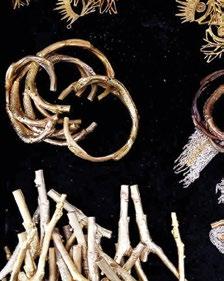
Timekiller was followed by a series of items in the Art Deco style, with gold and black onyx.
Open: Monday-Friday - 9.3017.30
CHOMER TOV
This gallery features decorative and functional unique designs, including jewelry. You can buy these items at Chomer Tov directly from its artists and avoid commission fees.
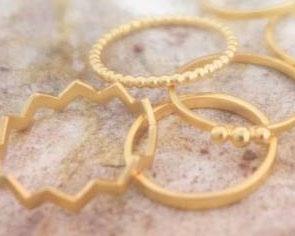
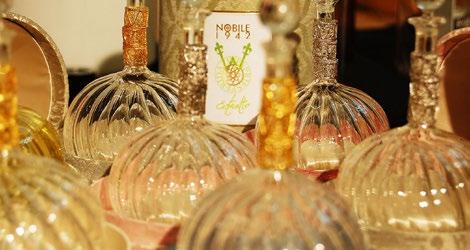

Open: Sunday-Thursday - 10.00-20.00; Friday - 10.0017.00 in summer; 10.00-16.00 in winter
Shabazi st 27
www.chomertov.co.il
Amihad st 13
www.rubystarstudio.com
THE STUDIO
Zur Alon, a famous contemporary jewelry designer, lives and works in Tel Aviv.

His creativity and new vision targets women that value simplicity and elegance. His works has a lot of devoted consumers at home and abroad.
The artist finds his inspiration in nature’s mysterious details and in his love for traveling; his style reflects the influence of colorful churches of the east and museums of Europe.
Open: Sunday-Thursday - 10.0019.00; Friday - 11.30-15.00
Shabazi st 21; www.zuralon.co.il
MAYA NEGRI
Shopping in Tel Aviv is the most exciting in the Neve Tzedek district. Maya Negri, an Israeli brand store, opened by the “entrance” to Rothschild Boulevard not so long ago. Costumers can visit the store for pants of different colors and textures, comfortable and wonderful summer cardigans and accessories.
Rothschild 1 Tower, Ahad Ha'am st 10
COMPLÉT
SHLOMIT
Shlomit creates unique jewelry and accessories for romantic people that value a modern, fashionable style. His creations are full of everyday life stills. Shlomit stops time and reflects them in jewels: a tiny bird on a tree branch, spring flowers, sharp lines and geometric figures of the urban horizon. All of these are made on gold and silver thin sheets with pearls, semi-precious stones, glass and wood materials. Shlomit also offers unique wedding apparel and accessories.
Open: Sunday-Thursday - 10.00-20.00; Friday - 10.0016.00; Saturday - 18.00-22.00
Shabazi st 21; www.shlomitofir.com
Complét’s “White Specks Silk Scarf” is an ideal accessory. It can be used as a hair clip or to adorn a handbag. This is the best choice for giving your summer wardrobe a sophisticated touch. Complét was founded by designers Sivan Moshkovitz and Leonora Fuhrer. This is a high-quality, print-focused accessories brand.
46 VOYAGER 6/2017
ELEMENTO
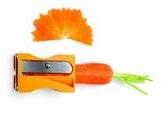
This store made the first steps in Rothschild Boulevard before it moved to the historic Ottoman-era building in Jaffa. It features the work of Yossi Goldberg and his team. They work in a retro style, reminiscent of the 1960-1970s. The items are made using high-quality materials.
The store’s collections include beds, sofas, office furniture, lighting and carpets decorated with graphic ornaments such a Goldberg's famous ensemble of hand-blown glass. Its simple, lime-whitewashed hall creates an atmosphere of individualism. Distinctive furniture is placed in sections where the walls are covered with medieval-inspired art, geometric forms and photos.
Open: Sunday-Thursday - 10.00-19.00; Friday - 9.00-14.30
Hazorfim st 15; www.elemento-design.com
ASUFA
Asufa is a perfect place if you are looking to buy a souvenir, or just want to browse the works of Israeli designers. It's not a shop or an exhibition. The collection of designs is really impressive. Here you can buy humorous gifts, jewelry and decorative home art.

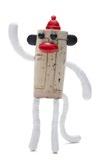
Asufa is difficult to characterize; its main charm is that it is surprisingly eclectic. You will fall in love with this place.
Those who would like to taste real shopping in the city should visit old Jaffa. The flea market is saturated with an ancient atmosphere and countless tiny boutiques that will dazzle you. You will find the 13-room, multi-brand store Numero 13 on Shabazi Street. Definitely check out Boutique 77 for women's clothing. It is located at number 40 on the same street.
Many Israeli designers’ unique creations are gathered under one roof. Visiting the store might be a bit “dangerous" because you might be tempted to buy many items and as a result there might not be space left in your suitcase for anything else.

Open: Sunday-Thursday '10.00-22.00, Friday 10.00-15.00
Yehuda mi-Ragusa st 8; www.asufadesign.com

SOHO 100% DESIGN SHOP
BALAGAN
Tel Aviv brand Balagan provides high-quality leather products. You will find everything that you need here, for example,allerina slippers by AVIR. Each item is made by a local designer, thus expressing the spirit of the city's art.

Shvil Hamifal st 5, Level 1 www.balaganstudio.com
PAPIER

Find inspiration in Papier’s alphabetic notebooks. The sophisticated design and high-quality striped sheets are perfect for your great ideas. Papier is a unique, paper-based print, text and graphic design shop.


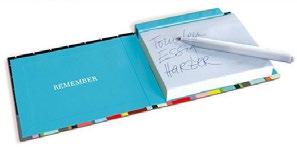
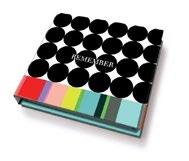
Sderot
David HaMelech 1
The SOHO store is designed as a space that creates the perception of aesthetics and takes you on a journey where unique and innovative items are completely available. The store carries a wide variety of different categories of design works: decorative items, kitchen and cooking accessories, handbags and jewelry, distinctive design gadgets, spa products, office supplies, and children's goods.
SOHO features a wide variety of works by contemporary Israeli designers.
Open: Monday-Friday - 9.0018.00
Hangar 12
www.sohodesignshop.com
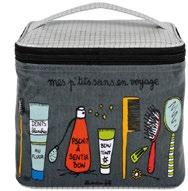
47 VOYAGER 6/2017 SHOPPING / TEL-AVIV
Behind the Diamond Exchange Door

THE BEST DIAMONDS FOR THE JEWELRY HOUSES ARE CHOSEN HERE; RAW DIAMONDS ARE APPRAISED AND MULTI-MILLION TRANSACTIONS SIGNED, INCLUDING THOSE WITH PRIVATE CLIENTS WHO WISH TO STAY ANONYMOUS.
Israel Diamond Exchange, a private company, is one of the largest and most advanced centers providing services for processing and trading diamonds. The company is located in four building complexes in Ramat Gan (Israel).
Israel is one of the leading centers of the world in diamond trade and production. Israeli diamond companies process a substantial volume of raw materials. Its precious stone polishing is considered to be one of the best in the world, and requires the most difficult of diamond-processing technologies. Many of them were created in Israel: laser machines, automated polishing equipment and computer-aided design systems are now used everywhere in the world.
ISRAEL'S BUDGET RECEIVES MAXIMUM INCOME FROM THE DIAMOND INDUSTRY. THE ISRAEL DIAMOND EXCHANGE’S ANNUAL TURNOVER IS 10 BILLION DOLLARS. ISRAEL IS THE WORLD LEADER IN THIS FIELD AND IS STEADILY INCREASING ITS NUMBER OF TRANSACTIONS PER ANNUM.
Israel's diamond exchange (IDE) was founded in 1937 and now comprises 3,000 members. They follow the material’s production, import, export and trade.
The exchange creates a comfortable and safe environment to conduct transactions. This applies both to the trading floor as well as the private exchange offices of members.
IDE's huge trading floor has two halls (one for raw diamonds, second for cut diamonds). The total area is 2.5 thousand sq.m. Hundreds of trading transactions take place among diamond sellers and buyers, who come from all over the world to Israel.
IF YOU WANT TO BUY A DIAMOND AT THE IDE, WE RECOMMEND CONTACTING ONE OF THE COMPANIES IN THE NETWORK, BECAUSE NO ONE CAN VISIT THE EXCHANGE WITHOUT A COMPANY PASS. FOREIGNERS MAY BUY DIAMONDS WITHOUT TAXATION IN ISRAEL. WHETHER YOU ARE CARRYING THE GEMS WITH YOU OR ORDERING THEM VIA THE IDE’S TRANSPORT FIRM, ANY ISRAELI COMPANY IS OBLIGED TO GO THROUGH A COMPLEX EXPORT PROCEDURE WITHIN THE CUSTOMS DEPARTMENT. AFTER THIS PROCEDURE, YOU WILL RECEIVE A SEALED STAMPED ENVELOPE FROM ISRAELI CUSTOMS AND WILL ABLE TO LEAVE THE COUNTRY WITH YOUR PURCHASE EASILY.

48 VOYAGER 6/2017
NINO LURSMANASHVILI
“Mazal and Bracha”
“Mazal and Bracha” is the traditional phrase used by the diamond industry when closing a deal. The expression is accompanied by a handshake and is articulated (in Hebrew) by diamond merchants all over the world. This unique code is used not only in the circle of diamond dealers in Israel but also in the US, China, India and the Arab countries.
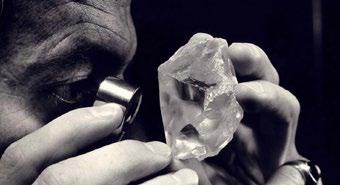
Diamonds of any size, shape and quality may be purchased here, be they small, medium, large, round, extravagantly original in shape or of a special cut, processed by Israel or other diamond-cutters, white diamonds or natural diamonds of various other color. Israeli jewelers can purchase any type of gem any time.
Diamonds are one of the leading export products of Israel. Today, the country is not only the largest exporter of diamonds in the world but also one of the largest centers of the uncut diamond trade. About a third of the world’s uncut diamonds are imported to Israel, go to the Exchange, and then reach the world's markets. Israel is a major exporter of diamonds to the US – the world's largest consumer of diamonds.
HARRY OPPENHEIMER DIAMOND MUSEUM
This museum, which is located in the Israeli diamond center in Ramat Gan, celebrated its 70th anniversary in 2007. Visitors are offered a fascinating virtual journey into the world of diamonds: exhibitions, interactive boards, video and multi-media, information about diamonds and, specifically, the Israeli diamond industry history and the road that a diamond undertakes from the ground to jewelry.
The Israeli diamond industry's share in the country's payment balance is 800 million dollars per year. Some 20,000 families receive an income from the diamond industry. The IDE complex is annually used by 330,000 people, including foreign buyers.

The Israel Diamond Exchange satisfies all guarantees concerning buying or selling precious stones. Significant discounts attract potential customers. The fact that the highest quality products are guaranteed, and that the diamonds are legal and certified is a big plus in the exchange’s favor. It houses several hundred large and small-size jewelry shops.
DC This is one of Israel's largest jewelry companies, which not only sells ready-made jewels but also offers uncut diamonds. DC cooperates with several jewelry polishers
EDIAMONDS _
This company sells finished jewelry and also demonstrates cutting and polishing of raw diamonds in front of its clients, so they have the opportunity to take part in the creation of a piece of pieces of jewelry that they have chosen. They can determine the size and shape of the diamond and make the necessary corrections to complete their product design and color.
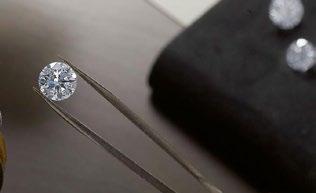

D&A JEWELRY-
This company's products are unique works of art. D & A Jewelry is one of Israel's oldest jewelry firms. It operates in the majority of European States and in the US. Customers can renew products that they buy here are any time. They also receive a lifetime guarantee and certificate, which confirms the quality of the gem.
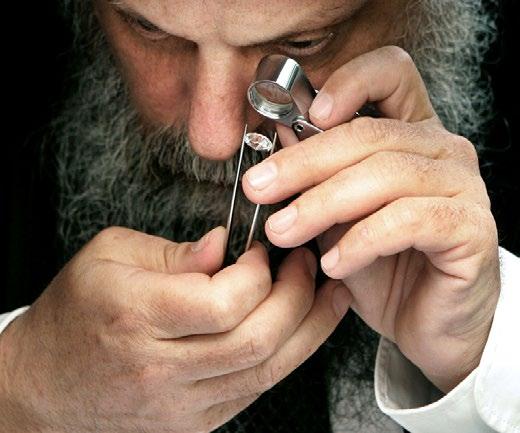
49 VOYAGER 6/2017
...............................
...............................
SHOPPING / TEL-AVIV
Zabutinsky st 1, Ramat Gan
SHUK HaNAMAL
"Shuk Hanamal" is Israel’s main roofed market and is located in a beautiful port of Tel Aviv. Here you can buy fresh daily and seasonal products and the best ingredients from the region and around the world. Specialized stores and stalls offer seasonal fruits and vegetables from good, clean & fair small and medium-sized entrepreneurs.
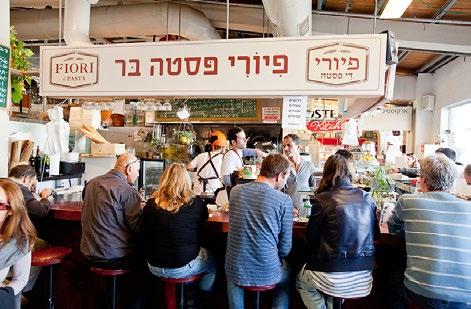
Here you can find fruit and vegetables, fish, meat, kosher wine, Italian coffee and ice cream, freshly-squeezed juice, cheese and American-style deli products. You can also buy freshly baked pastry, instantly made pasta, Italian and Spanish canned goods, olive varieties, local olive oil, honey, Halva and Tahini. You can also browse the kitchen equipment store for professional cooks; visit a restaurant with a demonstration kitchen; and a culinary workshop center.


With the enchanting view of the sea in the background, the stores and stalls offer plenty of dining space, bars and restaurants, where you will be able to stop for a bite or have dinner. A culinary celebration takes place here each Friday morning and Tuesday evening.
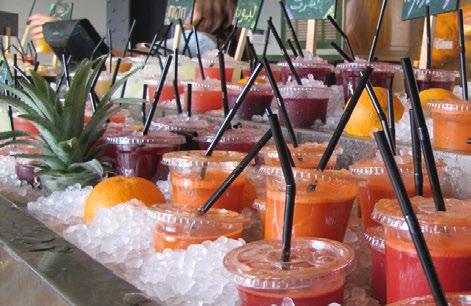
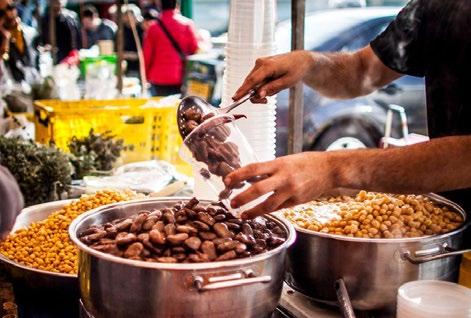

Hangar 12, Tel Aviv Port www.shukhanamal.co.il
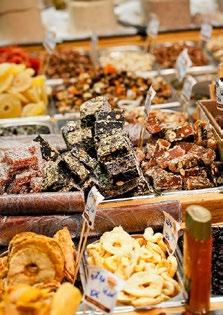
50 VOYAGER 6/2017
SARONA MARKET
With its 91 shops, restaurants, and other stalls, the "Sarona" Center has established itself as Israel's most distinguished culinary complex. Different kinds of cheese from various countries, top-quality Balsamicos from Italy, fresh seafood from the Atlantic, French champagne and oriental spices with local products, fruits and vegetables from Emek Hepper and Aravi, sheep and calves from the Golan Heights and fish from Mediterranean, local and foreign wines, beers, chocolate and many other delicious confections are all represented in this modern and innovative urban environment.
Gourmands will be able to taste dishes of well-known Israeli chefs that have long become legendary. You can also taste the best local produce achievements, such as Fauchon Paris’ products, Bashar Fromagerie's cheese and Halva Kingdom's Halva.


The combination of local and international, classic and modern, urban and pastoral creates a rare and special environment.
Here you will find the best ingredients to prepare food, eat a three-course dinner, do some fun shopping, try delicious
Sarona Market operates seven days a week: Sun-Thurs: 09:00-23:00; Friday: 08:00-18:00 Saturday: 09:00-23:00

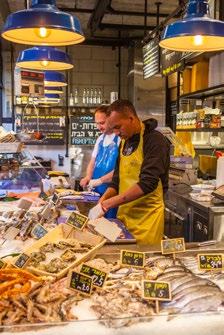
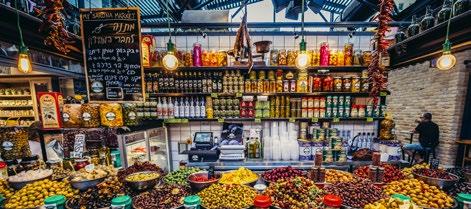
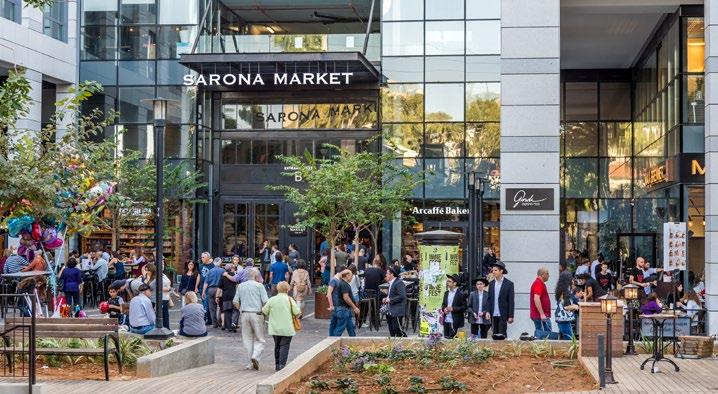
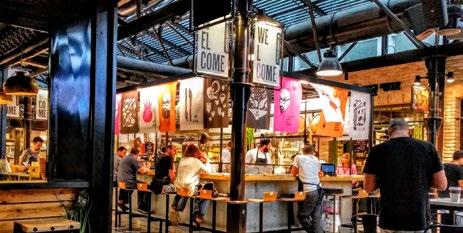
Kalman Magen 3; www.saronamarket.co.il
French snacks with Italian espresso and read a book or have a glass of wine with the best variety of sausages. You can also taste freshly made olive oil and various types of cheese and learn from farmers about differences between species of organic tomato.
Due to its excellent service, reasonable prices and diversity, you will always remember shopping in "Sarona".
51 VOYAGER 6/2017 MARKET / TEL-AVIV
TEL AVIV KITCHEN RULES
As soon as the oriental purple evening shadows condense and a salty sea-breeze starts blowing, you can smell amazing aromas sneaking through the blinking, warm, illuminated glass galleries of the restaurants on the streets of Tel Aviv.
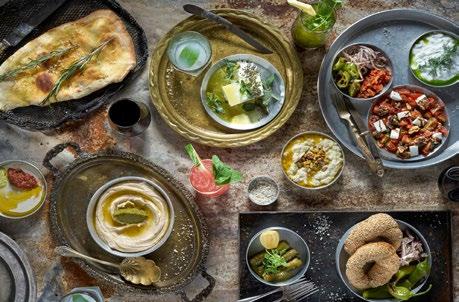
The spice-saturated, warm and ancient air, full of hope remembering long-forgotten scents, irritate the nose and make people feel drunk and dizzy as they delve into the whirlpool of fruits, vegetables, sea creatures, four-legged animals and sweets. Israel's new generation of chefs reign on the threshold of this world.
Spending evenings in restaurants is very popular in Israel, especially in Tel Aviv. This is not surprising, because the choice is vast and diverse. All good restaurants are funky, fun and delightful. Dinner that starts after 8pm lasts until 2 am and ends with dancing on the tables. Waiters are also actively involved in these activities.
They do their job perfectly and manage to provide a solid service as well as entertain their guests without undue familiarity. Another tradition is that the waiters will often drink a small glass to toast you and encourage you in such way that you may soon find yourself on top of the table voluntarily.
Open kitchens are very common in popular restaurants. You give customers the opportunity to watch a real-life culinary show, which is why everyone tries to get a seat at the bar. This is not surprising, if we take into account the increased
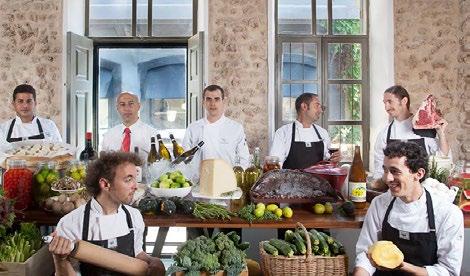
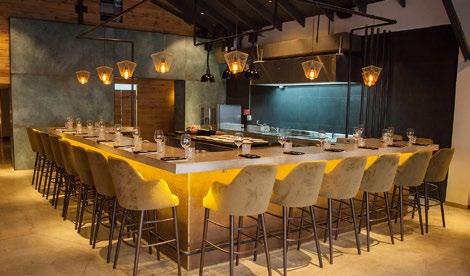
popularity of chefs. This is a really great bonus for those who are interested in the world of cooking and watching how food is prepared. Most of what you see in these kitchens is better than any TV show.
Very often the whole restaurant is full of boxes of products. Fresh fruits and vegetables are drawn from the local market or restaurant-supplier Kibbutz farms. Everything is displayed on the outside so that you see what products are going into your food.
After a blissful and delicious evening comes a wonderful morning, and the restaurants filled for breakfast. Breakfast culture is very developed in Tel Aviv. You can eat all kinds of breakfast dishes in the cafes located in the center; however, a bagel with cream cheese and red fish is at the top of the list of dishes to try.
POPINA
The unique menu of San Pellegrino group chef, Orel Kimchi, is divided into six categories, according to food preparation technologies: smoked, steamed, stewed, baked, pan-fried and prepared on a low fire. Each category is accompanied by a corresponding cocktail. Think about which taste brings you the most pleasure and boldly choose a category - it will be an unforgettable culinary adventure.
Open: Sunday-Friday 18:00-01:00; Saturday – 12.00-15.00/ 18.00-01.00; Price: tasting menu 280 NIS; 192 NIS (Two course meal and the glass of alcoholic beverage)
Ahad Haam st 3; Tel. + 972 3 5757477
We recommend visiting the young but highly talented chef Raz Rahavis restaurant for those who are attracted to a true culinary adventure. The restaurant’s modern interior seats only 18 guests around the kitchen counter and service is delivered in two stages. Here you definitely need to book in advance. Raz Rahav does not have a traditional menu. Nine dishes, inspired by different ingredients, are prepared daily and this is a truly memorable performance.
Open: Monday-Friday from – 19:00- or from 21:30; Price: set menu (chef's choice) 280 NIS
Tirsta st 17, Jaffa; Tel. + 972 3 5566774
52 VOYAGER 6/2017
OCD
HaSALON
The legendary restaurant of Israel’s most eccentric chef, Eyal Shani, is open only two days a week. Dinner here is quite expensive, but the pleasure is unforgettable. You can also sit in the bar. The restaurant is transformed at 10 pm - the music gets louder, the lights dim, and the restaurant employees begin to dance on the tables.
MIZNON
Another successful restaurant that specializes in delicious Israeli pita sandwiches, with different fillings prepared by successful local young chefs.

Open: 12.00-00.00; Price: 80 NIS
Ibn Gabriol 23; Tel. + 972 3 7168977
TZFON ABRAXAS
This restaurant of Eyal Shani has a more democratic menu. You can taste the chef's famous signature dish – oven-stewed cauliflower, pizza and fried shrimps on an individual pan. Open: 12.0002.00; Price: 180 NIS (Two course meal and the glass of alcoholic beverage)

Lilienblum 40; Tel. +972 3 5166660
The main credo of Eyal Shani’s cuisine is that it is prepared using only the highest-quality ingredients in the most optimal and poetic ways possible. The menu changes every day and each dish is unique. The restaurant is located just outside the city center, so a taxi is advised.
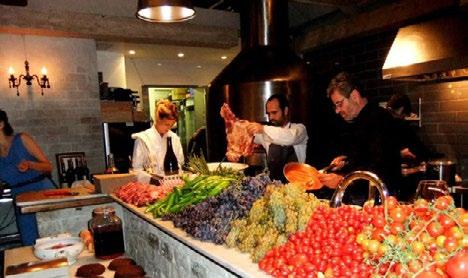
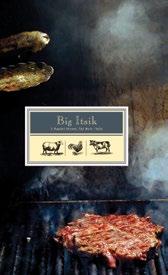
Open: Wednesday and Thursday - from 19: 00 until the last guest leaves; Price: set menu (chef's choice) 250 NIS
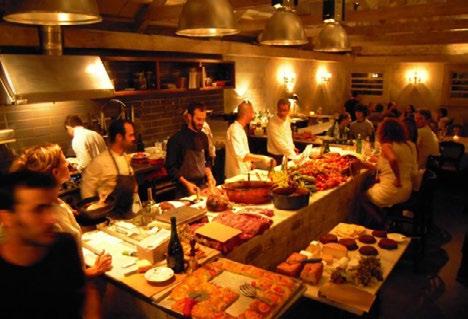
Maavar Yabok 8; Tel. + 972 52 7035888
SALON ROMANO
This is also another amazingly stylish gastro bar of Eyal Shani, where you can taste delicious dishes, including the chef's unique French fries. The secret lies in the preparation of the flavor: this triple-cooked delicacy is cooled in a special refrigerator and to obtain its ideal combination of a crunchy skin and a fluffy center.
Open: 20.00-04.00
Derech Romano 9; Tel. + 972 3 5566774
ITZIK HaGADOL
This is Tel Aviv’s best meat restaurant, where you can enjoy the distinctive taste of a variety of steaks and kebabs. A dinner for two here will cost you about 300 shekels.
Open: Sunday-Thursday – 11.30-23.30; Closed on Fridays.; Price: 250 NIS (Two course meal and the glass of alcoholic beverage)
David Raziel st 3; Tel. + 972 57 9438970

53 VOYAGER 6/2017 RESTAURANT / TEL-AVIV
KITCHEN MARKET

The Yossi Sheetrit restaurant is located in an ideal place – on the top of a modern farm market. Hence, the ingredients are of the highest quality. In the evening, you can enjoy watching the sunset from the beach and taste the very talented chef’s classic “fusion” dishes that are delicious and beautifully decorated. In short, you can spend an ideal evening here.
Price: 221 NIS (Two course meal and the glass of alcoholic beverage)
Hangar st 12, TLV Port; Tel. + 972 3 5566774
CAFE EUROPA / ROTHSCHILD 12 / SOCIAL CLUB
Three of the most popular, cult café-restaurants in the city are located on one of Tel Aviv’s main streets, Rothschild Boulevard, which is perfect not only for the warm weather. You can entertain yourself with the most pleasant of activities – watching interesting, extravagant people.
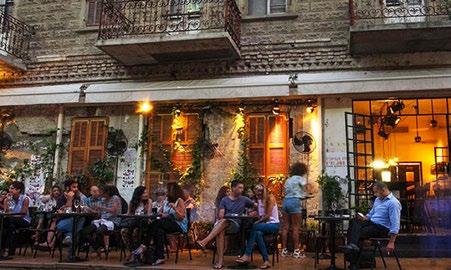


These institutions are known for their European bistro-type, amazingly delicious cuisine, excellent cocktails and menu All three of them are very crowded places, and if you want to eat on the terrace, it is best to book a place in advance.
Price: 130 NIS (Two course meal and the glass of alcoholic beverage)
MESSA
Here you will come across the remarkable, high-level, Mediterranean-inspired kitchen and impressive interior of Chef Moshe Aviv. It is a popular place for fish, as well as meat dishes. Try the fried squid with lemon sauce; the sea perch and onion ravioli; or the softest steak grilled on an open fire.
Open: 12.00- 15.30 / 19.00-23.00; Price: 260 NIS (Two course meal and the glass of alcoholic beverage)
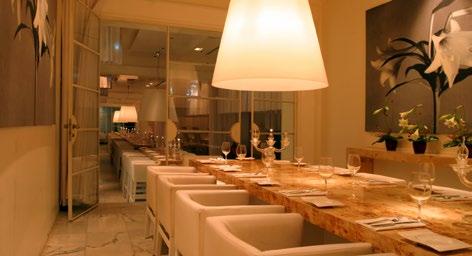
Ha’Arba st 19; Tel. + 972 3 6856859
CAFE EUROPA Rothschild Blvd 9b + 972 3 5259987
SHILA
ROTHSCHILD 12 Rothschild Blvd 12 + 972 3 5106430
SOCIAL CLUB Rothschild Blvd 45 + 972 3 5601114
Chef Sharon Cohen opened a fish restaurant near the Hilton Hotel 10 years ago and it is still popular. It is recommended for those who love tartar, carpaccio, squid, grilled crabs and lobsters. Dishes are prepared from high-quality seafood.
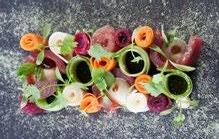
Price: 230 NIS (Two course meal and the glass of alcoholic beverage)
Ben Yehuda 182; Tel. +972 3 5221224
54 VOYAGER 6/2017
BOTANIKA
At Botanika, you will be offered high-quality alcoholic drinks in the Scandinavian-inspired interior. The founder’s concept is based on the perception that alcohol is the main ingredient of any cocktail, and the rest only flavors – auxiliary elements. Chef Yossi Asrapia’s fine restaurant is located nearby. In his opinion, any high-quality ingredient that is the focal point of a dish (vegetables, fish or meat) does not need extra cooking - this is truly Scandinavian minimalism.

Open: 18:00-02:00; Price: 100 NIS (One course meal and the glass of alcoholic beverage)
Botanika hotel; Hayarkon st 78; Tel. + 972 3 9330339
SPICEHOUSE
Located on at the Imperial Hotel, the 17th best bar in the world hosts some of the most famous baristas in the city. The interior design is inspired by early-twentieth-century colonial Asia. The jazz and swing styles of the same period drift guests into a distant world. The cocktail menu is totally unique and is divided into different taste categories, such as fruity, bitter, spicy, aged, toned, exotic, smoked, etc. The baristas will give you advice. Cocktails are half price during happy hour. Open: 18:00-20:00
Price: 100 NIS (One course meal and the glass of alcoholic beverage)
Dizengoff st 117 Tel. + 972 54 2286200
BELLBOY BAR
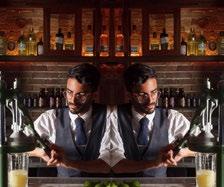
This excellent facility is located at the Berdichevsky Hotel.
This creative bar offers you a huge variety of cocktails, prepared with the aroma of unusual herbal ingredients.
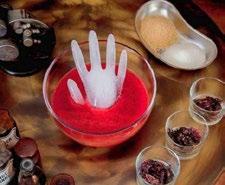



Burgundy velvet curtains, leather sofas, marble copper counters, yellow lamps – the local media have hailed this bar as “Israel’s best and most original.”
Price: 100 NIS (One course meal and the glass of alcoholic beverage)
Berdichevsky 14; Tel. + 972 3 7289213
ARIA
One of the favorite gathering places for Tel Aviv’s successful and famous people comprises two floors. The talented chef working on the second floor, Gai Gamzum, has created an amazingly interesting menu inspired by Syrian, Egyptian, Italian, Spanish and Japanese cuisine elements.
We recommend that you taste a variety of fish ceviche; red tuna sashimi; veal ribs; gupta in dough; and all kinds of meat steaks.
Price: 115 NIS (One course meal and the glass of alcoholic beverage)
Nahalat Binyamin 66; Tel. + 972 3 5296054
IMPERIAL CRAFT COCKTAIL BAR
Located on at the Imperial Hotel, the 17th best bar in the world hosts some of the most famous baristas in the city. The interior design is inspired by early-twentieth-century colonial Asia. The jazz and swing styles of the same period drift guests into a distant world. The cocktail menu is totally unique and is divided into different taste categories, such as fruity, bitter, spicy, aged, toned, exotic, smoked, etc. The baristas will give you advice. Cocktails are half price during happy hour. Open: 18:00-20:00 Price: 105NIS (One course meal and the glass of alcoholic beverage)
Ha’Yarkon st 66; Tel. + 972 3 2649464
DOUBLE STANDARD
This is another very cozy bar owned by the Spicehouse company, which boasts a pleasant terrace where you can sip unforgettable cocktails as well as take them home with you in bespoke bottles. In addition, you can purchase professional bartender accessories.
The bar is also famous for its exquisite appetizers. A buy one get one free offer is in place during happy hour (18:00-20:00).
Open: 18: 00- 03:00
Price: 142 NIS (One course meal and the glass of alcoholic beverage)
Dizengoff st 247; Tel. + 972 3 5550966
55 VOYAGER 6/2017 RESTAURANT / BAR / TEL-AVIV
THE BLOCK
This club is a gathering place for electronic music lovers where local as well as invited DJs perform.

Salame 157
THE CAT AND THE DOG
This is a place you can visit after all of the other bars close. It has an amazing sound system and many top DJs work here.
Carlebach 23
SOLO CLUB
The club is equipped with an amazing lighting and sound system in a huge space. Popular dance music is carefully selected to fit the tastes of people with diverse preferences.
Yehuda Halevi st 46;
THE PENGUIN CLUB
This is one of the best, high-end techno-music clubs in Israel, and a gathering place of representatives of the truly “underground” music.
Yehuda Halevi st 43
CLARA
Located at the coast in an open space, the famous club attracts people of all ages - those who want to enjoy good cuisine with fun background music and spend summer nights surrounded by beautiful people.
Koifman st 11 / Dolphinarium
BREAKFAST + MILK CLUB
Listen to the techno and house music offered by DJs and you will dance until sunrise.
Rothschild 6
COMMENTS
In a country where the price of a cocktail in a bar is 50 shekels, and dinner costs 150 shekels per person, a service fee of 10% is the minimum that the waiter or bartender is expecting. Thus, if your receipt says you have to pay 600 shekels, you can’t leave 20 or 50 shekels as a tip, thinking that it is enough. It is recommended to leave a minimum of 60 shekels even you didn’t like the service. However, if the staff served you well, then of course, they expect more from you.
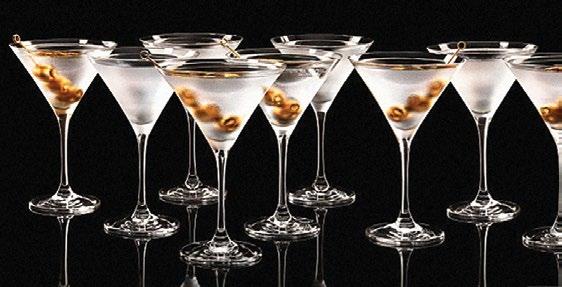
Only in extreme cases, when the service was really bad (I hope you don’t end up in such a situation), can you leave a place without tipping.
A whole army of young waiters and barmen arrive every night to work, to earn money for studying and to cover their living expenses. In Israel, young members of the family, regardless of household income, are employed as servers: working is considered to be a privilege, hence, being a server isn’t in any case shameful. However, very few tourists know that in most facilities, such staff are not paid.
Foreigners are often surprised when the suggested tip is indicated on the receipts.
Israelis themselves have almost all gone through "a service stage", so it does not surprise them when they are asked to automatically charge their accounts with 12-15%. The tip that you pay will be distributed among all of the other shift members. That is why very often you will be served by several of them. Being served is one of the biggest pluses in Israel. Servers are characterized by their special kindness and attention and always want to know if you have liked the food, drink and service on offer.
The same rules apply to night clubs and bars: if you do not want to be left without attention, pay for it. And do not worry if you do not have cash – tips can easily be charged to your card.
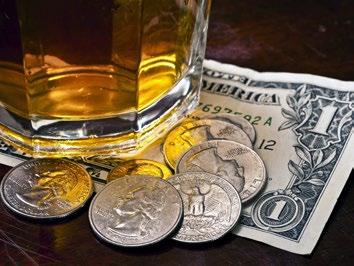
56 VOYAGER 6/2017
CLUB / TEL-AVIV
SOUVENIRS FROM ISRAEL
Israel is a real gold mine of relics for Christian believers.
Icons _ Pilgrims take icons home from Israel, featuring images of the "Holy Family" on canvas, wood, stone or engravings. You may purchase these replica icons at any church or souvenir shop.
A Menorah _ is a metal candlestick featuring seven candles with clay and glass lamps, which represents the ancient symbol of protection of the old Judaic and Jewish traditions. The seven candles represent seven planets, the seven churches of Asia Minor and the seven days in which the world was created.
Hamsa (hand hameshis) _ hamsa is also known as the "Yad ha-hamesh" ("fives’ hand") in Judaism or "Miriam's hand" (after the name of the sister of Moses and Aaron). Hamsa is also linked with the five books of the Torah.
CULINARY SOUVENIRS
Dates _ lovers of natural desserts will appreciate Israeli giant palm dates. Majahol and Geglet Nuri are especially tasty.
Coffee with Cardamom _ After tasting Israeli cardamom coffee (especially the cardamom mix) you will definitely want
to buy some and bring it home. Search the store shelves or the markets for this green packaging with a cardamom leaf illustration.
Holy olive oil _ scented oil with special additives for various ecclesiastical rituals.
Crosses and necklace icons _ Christians especially value artifacts sanctified in the Church of the Holy Sepulcher.

TRADITIONAL SOUVENIRS
If you want to buy anything national while traveling in Israel, pay attention to traditional Israeli gifts such as:
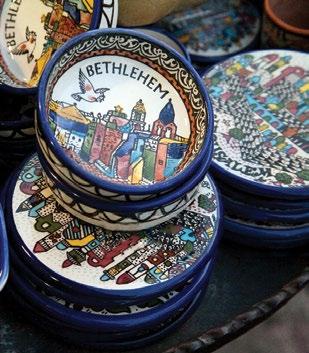
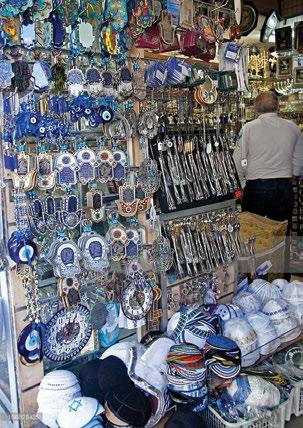
Magen David (Star of David) _ you can buy a lot of souvenirs with the six-spoked star image (key rings, cups, jewelry, magnets). Jewish people call this hexagram-shaped ancient symbol the "Shield of David," which sounds like “Magen David” in Hebrew. These triangles symbolize two elements: fire and water.
VAT REFUND
These are the regulations which are essential to ensure that you can reclaim any VAT charges when leaving Israel:
1. Israel's non-resident individuals are entitled to a VAT refund in the event that they do not have an Israeli passport and visit the country as tourists. If you do not want to stamp your passport when entering Israel, keep a special form given to you to present at VAT refund desks;
2. Refunds are only available on those products that are purchased at stores involved in the VAT refund program: In addition, a one-time purchase price for the invoice should exceed 400 Israeli Shekels;
King Solomon's Ring in medieval legends, Solomon's ring (Seal of Solomon) was a symbol of two equilat eral triangles placed on each other (Star of David), which was engraved on the legendary king’s ring. With its might, the King had power over genies and could speak to animals. The legend of the ring’s inscription is interesting as well.

According to one version, the king never took the ring off -- the inscription “this too shall pass” helped him in difficulties, and kept him awake during feasts. According to another version, three Jewish letters were inscribed on different sides of the ring: Gi'mel '(the 3rd letter of the alphabet), Zayed (the 7th letter) and Jud (the 10th letter); turning the ring resulted in forming the acronym, "This Too Shall Pass."
3. Goods must be bought for private purposes and in a quantity that is not considered as being for commercial purposes;
4. The purchased products must leave the territory of Israel;
5. The goods do not belong to food, beverage, or tobacco categories;
6. VAT refunding purchases must be contained in a sealed package, accompanied by a special VAT invoice, presented to the customs officer at the MILGRIM desk.
57 VOYAGER 6/2017
SOUVENIRS
THE “FOUNDING FATHERS” OF ISRAEL
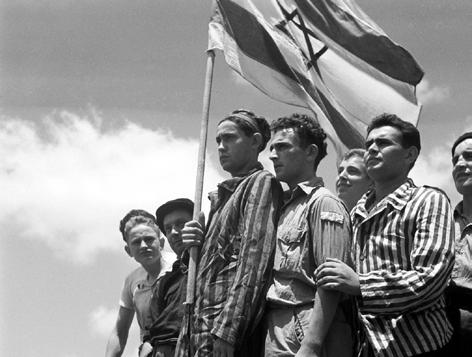
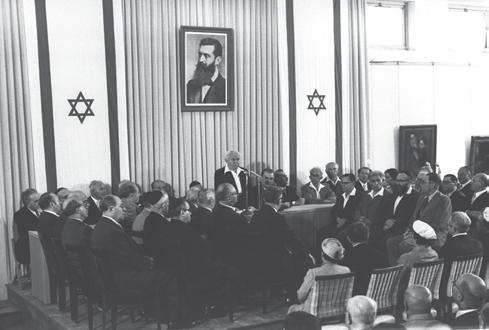 BIDZINA BARATASHVILI
BIDZINA BARATASHVILI
The number 3 has always been held sacred in the history of mankind
According to some folklore, the earth stands on 3 whales; in other, it stands on 3 elephants. In addition to the Christian Trinity, we, Georgians value an ideological concept as well: homeland, language, religion! Israel's modern history was created by its three "founding fathers":
Theodor Herzl, David Ben-Gurion, and Eliezer Ben-Yehuda.


Let's start with the ideology. Austrian-born Theodor Herzl (Binyamin Zeev Herzl, 1860-1904) was a playwright, novelist, journalist, public figure and the founder of political Zionism. Many Jews still mention his messianistic role, which he promoted. There is nothing wrong with it: if no one want to be a Messiah, no one ever become one! Great deeds are impossible without such am-
bitions. The result is evident--the state of Israel exists and is successfully going forward.
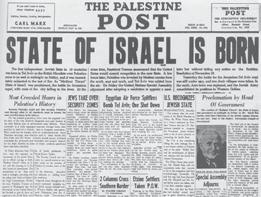
Herzl did not possess an exceptional literary talent, nor was he a distinctive philosopher. He accomplished most in journalism; his contemporaries noted that his essays were a pleasure to read. Per-

4 dro
HISTORY
1. Israel's Declaration of Independence;;
58 VOYAGER 6/2017
2. David Ben-Gurion declared the independence of the State of Israel; Tel Aviv, May 14, 1948.
haps that is why he was unlike most ideologists of that time. Herzl avoided preaching vague ideas. However, since childhood he had been obsessed with the idea of creating something very special, and did not settle until he reached his goal.
Many factors led to Herzl's success, most notably the strong financial position of his family. He did not need to worry about the means by which he might earn his daily bread; he had a lot of free time and was able to constantly travel and compare what challenges were common for Jews in different countries.
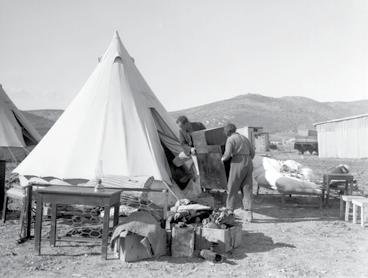
Herzl was a representative of the typical young Viennese bohemians. His biographer, Julius Schoeps, recalls: "He was a dandy, fond of Wagner operas, cafes and fashionable clothing". The "Father of Zionism" does not deny liking Lessing, Laube and other important figures; he also liked to play cards. He claimed that it was necessary to ventilate accumulated energy and emotions.

The famous Dreyfus case, which was discussed at the peak of Parisian anti-Jewish hysteria, was the main stimulus for the radical changes in Herzl’s life. His own failed literary attempts were an additional stimulus…
Material prosperity contributed to his good reputation; the journalist profession helped him gain organizational and motivational experience. Add an impressive appearance and you’ll understand why this young man evoked feelings of respect and boundless trust. Although Herzl did not accomplish anything in particular in his aforementioned professions, he accumulated a great deal of experience and looked immaculate at presidiums and forums; Herzl found a formula to success. As a response to the Dreyfus affair, he declared: "We can’t stay anywhere, we need our own country! It does not matter where, but we need a Jewish state!”
Thus, the main Zionist idea was formed, which Theodor refined in his fundamental work "The Jewish State" (1896).


Herzl was the first to mention the revival of the Jewish state; he immediately began introducing it into Jewish and Gentile mass consciousness and organized his ideas into a social movement. At the same time, he presented to Jews the ideology of special martyrdom and established an emotional and superficial explanation of anti-Semitism.
We’ve already mentioned Zionism’s easy-to-understand nature; however, other reasons contributed to its fast distribution as well. Let's start with the fact that Zionism disturbed none of the

ACCORDING TO ONE VERSION, THE NAME OF ISRAEL’S CAPITAL, TEL AVIV, IS CONNECTED TO HERZL. IN 1902, HERZL WROTE A SEMIFICTIONAL WORK CALLED "ALTNEULAND" IN GERMAN (“OLD NEW LAND”. HERZL WAS CONVINCED THAT GERMAN WOULD BE THE MAIN LANGUAGE OF ISRAEL). IT DESCRIBES A HAPPY JEWISH COUNTRY AFTER 50 YEARS. "OLD NEW LAND" WAS POETICALLY TRANSLATED IN HEBREW AS "TEL" (“THE OLD MOUND”, WHAT WAS AND IS NO MORE) AND "AVIV" (NEW/ SPRING)!
 1. Theodor Herzl; 2. The work "Altneuland" ("Old New Land");
3. Flag sketched by Herzl
Tel Aviv Pioneers, 60 families began construction of a new city in the sand.
1. Theodor Herzl; 2. The work "Altneuland" ("Old New Land");
3. Flag sketched by Herzl
Tel Aviv Pioneers, 60 families began construction of a new city in the sand.
59 VOYAGER 6/2017
then-existing states. Moreover, in the XIX century, the last period of European policy, Zionism was perceived quite naturally as a new form of colonization. Herzl did not oppose the ideological values already established in the Jewish community, and, at the same time, promised them the Jewish dream. The world's growing anti-Semitism was another contributing factor.
Theodor Herzl did not live to see his ideas come to fruition. He died of a cardiovascular disease in 1904, long before the State of Israel was declared. Herzelia is a city in modern Israel named after him. His body was moved to Mount Herzl in Jerusalem from Vienna, on August 1949. The Herzl Museum is nearby. His death is commemorated as the national Remembrance Day.
THEODOR HERZL FORETOLD EVENTS WITH ALMOST MATHEMATICAL PRECISION. DAVID BEN-GURION ANNOUNCED THE CREATION OF THE STATE OF ISRAEL ON MAY ON 14, 1948.
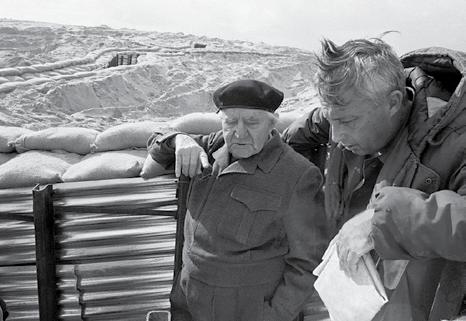
37 members of the Provisional Council of State signed the Declaration of Independence at the end of the honorary ceremony. Many do not know that the final text of the declaration was approved just an hour earlier prior to the signing. The police stopped the speeding car of the courier heading to the chancellery and ... it was not possible to put the declaration on paper, so the state figures had to sign an empty sheet of paper!
May 14 was on the Sabbath, a holy day for Jews – something which atheist Ben-Gurion planned well. On this day, the British mandate in Palestine ended as well. Everything happened so hastily that chairs were brought from the neighboring bars, while the microphone was brought from the shop.

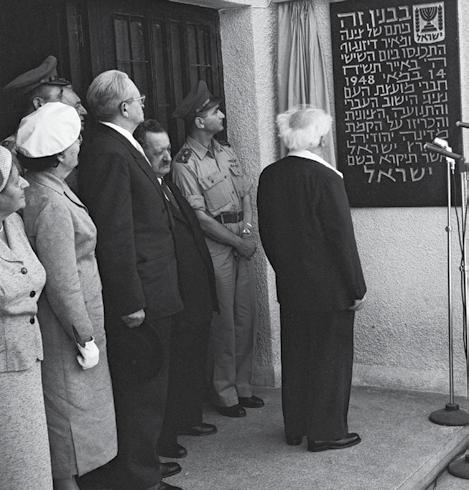
Ben-Gurion is a pseudonym of David Grun (1886-1973). He chose the name in honor of the Israeli army commander, Joseph Gurion.
This is a fact that is hard to imagine taking into consideration his biography and political weight: Israel's first prime minister, who returned to this post two more times, was only 150 cm tall. Writer Amos Oz was shocked when he first met the head of state. “I saw a remarkably short man as I walked into the office, who could not have been Ben-Gurion! “Father of the Nation" had to be a giant, who, like Atlas, is adjacent to the sky! "
David spent his early years in extreme poverty. The young man had to return to Russia from Palestine in 1908 to avoid paying a fine of 300 rubles for his father. David agreed to serve in the empire’s military service but soon fled the country and was considered a deserter in Tsarist Russia.
THIS SMALL MAN REALLY TRANSFORMED INTO GOLIATH WHEN HE WORKED ON IMPORTANT STATE ISSUES, FOR EXAMPLE, DURING THE "SIX-DAY WAR" AND EACH SUBSEQUENT POLITICAL CRISIS.
David Ben-Gurion, Israel's first prime minister.
HISTORY 60 VOYAGER 6/2017
THE PRIME MINISTER MANIFESTED ORIGINAL THINKING WHEN IN 1952 HE OFFERED THE PRESIDENCY OF ISRAEL TO ALBERT EINSTEIN!
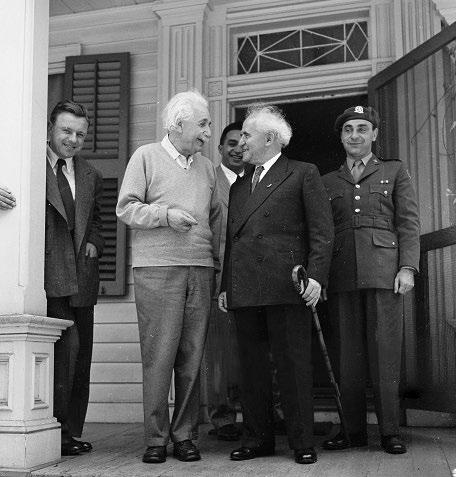
UNFORTUNATELY, THE ALLIANCE DID NOT WORK OUT: THE SCIENTIST NAMED HIS APOLITICAL VIEWS AND PROBLEMS WITH HUMAN RELATIONS AS THE REASON.
We could hardly hold back the laughter, while the Prime Minister was very pleased with it. "
Today not only one of the safest airport in the world and the Negev University bear his name, but the Jerusalem District Kiryat Ben-Gurion as well, where all of the big ministries are located.
Ben-Gurion was not a very religious man, but, in the interests of the state, left the institution of marriage to rabbis, freed the Orthodox from the army and declared Saturday a day off.
"I DO NOT GO TO THE SYNAGOGUE, BUT THE SYNAGOGUE, WHICH I DO NOT GO TO IS ORTHODOX!" SAID BEN-GURION. IN RESPONSE, THE ENGLISH PUBLICIST CHAIM BERMANT APTLY RESPONDED: "IT'S TRUE, BEN-GURION DID NOT BELIEVE IN GOD, BUT I THINK GOD BELIEVED IN BEN-GURION!"
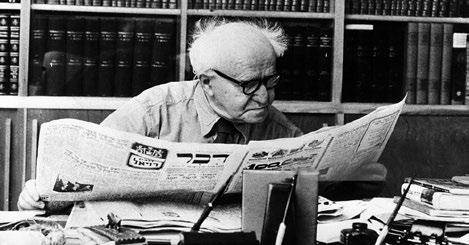
Grun Jr. failed to get a good education, yet when he became Ben-Gurion, he was able to study ancient Greek to satisfy his curiosity. He wanted to read Plato's writings in the original language also and later learned Latin as well, for the sake of Spinoza.
Towards the end of the 1950s, the first Israeli politician became an ultra-authoritarian leader, though he never recognized this fact.
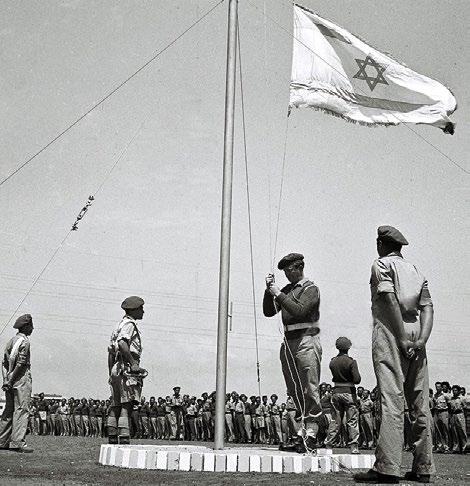
Another strange thing about his character was that unlike the vast majority of his compatriots, Ben-Gurion had absolutely no sense of humor. The country's next president (1969-1974), Golda Meir, remembers this episode in her memoirs: "Once, when someone in the party rebuked him for authoritarianism, the Prime Minister turned to his teammate, Naftali Peres and asked:
'Tell me, my friend, do you also think that I am running my party sessions undemocratically?” The minister, known for his intellect and eloquence, answered:
“David, I'm sure, that the party democratically tries to vote on any issue to please you!”
61 VOYAGER 6/2017
David Ben-Gurion and Albert Einstein
Finally, the nation's main distinguishing feature – language. They speak Hebrew in modern Israel. This is due to Zionism’s other father, Eliezer Ben-Yehuda.
The language has a three-thousand-year history; it was originally referred to as the language of the Old Testament. Then it was used for the conversational form of communication, but the suppression of the rebellion against the Romans in 135 AD led to a mass eviction of Jews from Jerusalem, and subsequently to the loss of the Hebrew language.
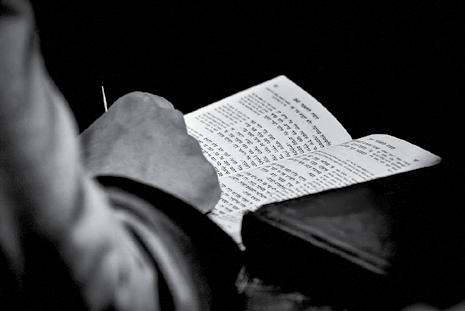
This lasted until the beginning of the XIX century, when Hebrew was only used for scientific treatises, law and medicine. Haskalah, the era of Jewish Enlightenment, became a turning point. Several newspapers were published in Hebrew in Eastern Europe and Eliezer Ben-Yehuda, the father of modern Hebrew, was born in yet another corner of the Russian Empire – the Vilna Governorate.
Against the wishes of his father who wanted him to receive a secular education in Paris, Ben-Yehuda became obsessed with the idea of moving to Palestine, which was further accelerated by the tuberculosis disease. In 1881, he was already living in the historical homeland and had changed his last name, Perelman, for the historic Ben-Yehuda.
Since 1880, he had worked a great deal in education. Hebrew became an official language to study; Ben-Yehuda also enriched it with neologisms and adjusted the language to suit modern requirements.
The popularization of the idea of Zionism in the world greatly contributed to the process. The first Zionist Congress and Herzl's ideology marked the beginning of the Jewish migration to Palestine from all over the world. The first wave included David Ben-Gurion, who gave a personal example to compatriots and asked them to serve the idea of a united nation of Israel. In search of a home, Jews came from all over the world: Yemen, Romania, Poland, Russia. They all built homes in their own styles and practiced different customs.
They needed something to unify them and stop the process of alienation. Ben-Yehuda believed that Hebrew was such a unifying factor and began to promote it.
BENYEHUDA CREATED THE 18-VOLUME DICTIONARY OF HEBREW.
Interestingly, Theodor Herzl did not know the Hebrew language and held a completely different position: "Everyone will retain the language, which they learned in their home country. Observe Switzerland, where there is no dominant language, and it does not prevent it from being a state!"
Conversely, Ben-Yehuda dedicated his whole life to the establishment of the Hebrew language. He founded the Hebrew Language Academy in 1920, which he led until his death.
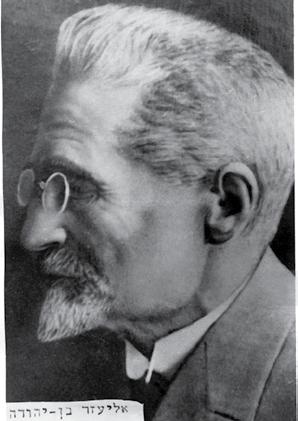
Ben-Yehuda was responsible for declaring Hebrew as one of the national languages of Palestine (along with Arabic and English). He achieved this as a result of difficult negotiations with the British High Commissioner, Herbert Samuel.
In 2012, the Israeli government marked Ben-Yehuda’s birthday as National Hebrew Day.
HEBREW IS THE MODERN JEWISH LANGUAGE. IT IS A REVIVED
LANGUAGE OF THE BIBLE, WHICH WAS DECLARED THE OFFICIAL LANGUAGE OF THE STATE OF ISRAEL
IN 1948. YIDDISH IS A WESTERN GERMAN LANGUAGE WITH HEBREW AND SLAVIC ELEMENTS WHICH STILL USES THE HEBREW ALPHABET.

HISTORY 62 VOYAGER 6/2017
POPULATION: 8 380 400
AVERAGE AGE : 29.6 THE AVERAGE LIFE EXPECTANCY : 82.154
ETHNIC GROUPS : JEWS 74,8% OTHERS 25,2% (ARABS 20,8%)
RELIGION : JEWS 74,8%, MUSLIMS 17.6%, CHRISTIANS 2%, DRUZE 1.6%, OTHERS 4%
ONLY 43% OF JEWS LIVE IN ISRAEL; MORE JEWS LIVE IN NEW YORK CITY (2 MILLION) THAN IN JERUSALEM AND HAIFA.
GDP: $299.416 BILLION*
GDP PER CAPITA $35 728 ISRAEL'S GDP HAS INCREASED BY 2.5 TIMES IN LAST 10 YEARS.
ISRAEL'S
BUDGET:
IT EMPLOYS THE MOST SCIENTISTS AND TECHNICIANS IN THE WORLD AT 145 PER 10 000 POPULATION.
ALBERT EINSTEIN, SIGMUND FREUD AND MARTIN BUBER FOUNDED THE HEBREW UNIVERSITY.
ISRAEL HAS THE HIGHEST RATIO OF UNIVERSITY DEGREE HOLDERS IN THE WORLD.
ISRAEL HAS THE SECOND HIGHEST NUMBER OF NEW BOOKS PRINTED PER CAPITA PER YEAR IN THE WORLD.
JERUSALEM IS THE CAPITAL AND LARGEST CITY; TEL AVIV IS THE ECONOMIC CENTER. S
ISRAEL IS A REPRESENTATIVE DEMOCRACY WITH A PARLIAMENTARY SYSTEM AND UNIVERSAL SUFFRAGE. S
OFFICIAL LANGUAGES: HEBREW AND ARABIC
DENSITY: 391 PEOPLE/KM2
CURRENCY: NEW SHEKEL (NIS)
TIME ZONE: (UTC +2:00)
MILITARY SERVICE IS COMPULSORY FOR JEWS: 18 YEAR-OLD MEN FOR 32 MONTHS; WOMEN FOR 24 MONTHS.
ISRAEL HAS ONE OF THE MOST LARGE-SCALE HIGH-TECH ECOSYSTEMS IN THE WORLD.
HIGH-TECH COMPANIES INCREASED THEIR TOTAL CAPITAL FROM $ 4.4 BILLION TO $ 9 BILLION LAST YEAR DUE TO INCREASED OVERSEAS SHARE OWNERSHIP AND OTHER COMPANIES PURCHASING OR MERGING WITH THEM (M&A, IPO ).
42.4% OF ISRAEL’S EXPORT PRODUCTS ARE HIGHTECH . ISRAEL IS ALSO THE LEADING EXPORTER OF INFORMATION TECHNOLOGY/ICT SERVICES. ICT SERVICES MAKE UP 62.7% OF TOTAL EXPORTS. *
www.data.worldbank.org/country/israel www.doingbusiness.org
STATISTICS 63 VOYAGER 6/2017
ISRAEL HAS THE WORLD'S LARGEST NUMBER OF STARTUP COMPANIES IN RELATION TO POPULATION. HEALTH CARE 7,8% DEFENSE 5,6% RESEARCH 4,2%
AREA: 20 770 KM2
FDI: $ 11,510 $11 510 MILLION IN 2016.
ISRAEL
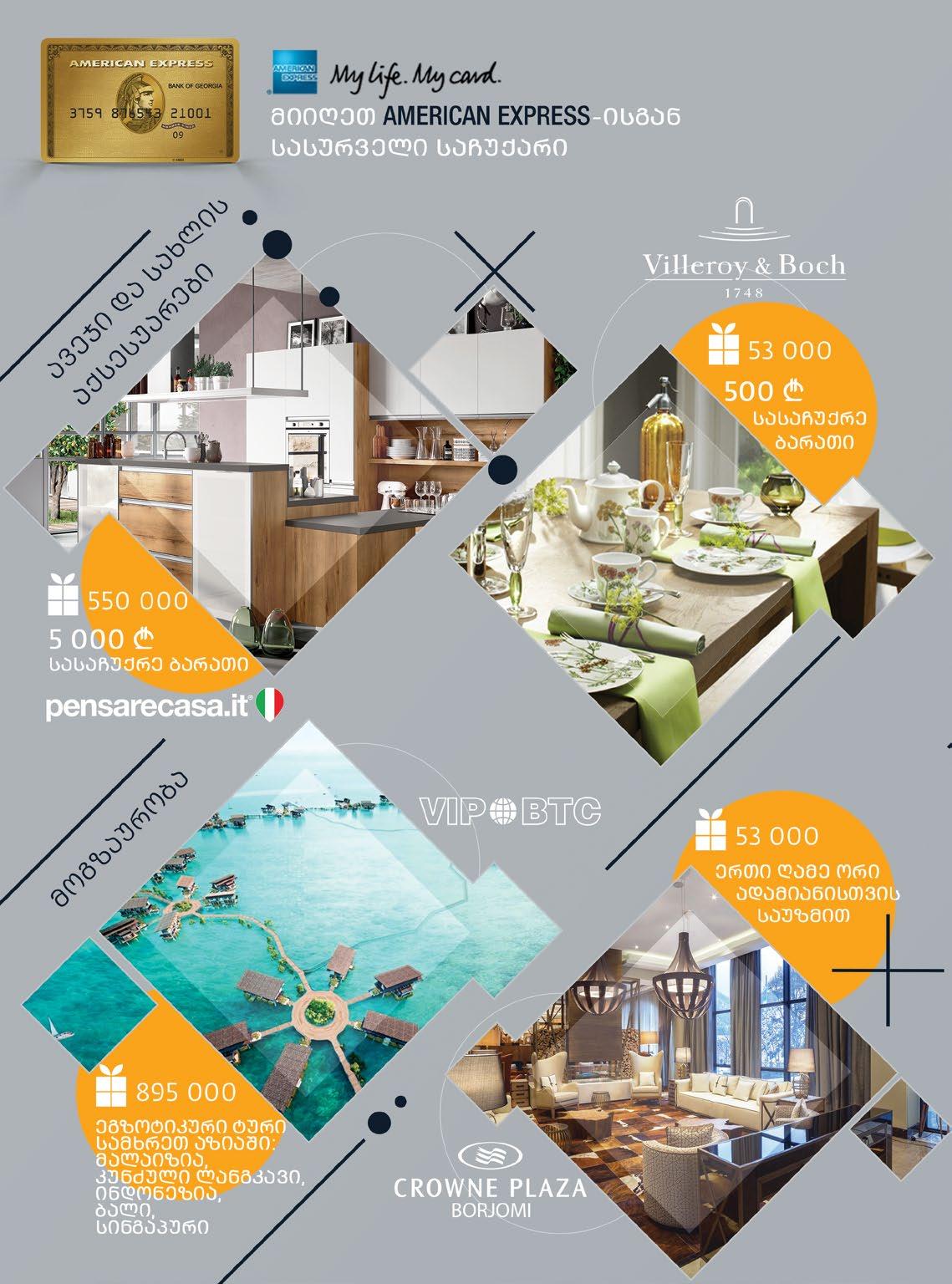

იერუსალიმი
JUDAIZM DIVERSITY OF INTERPRETATION
ACCORDING TO JUDAIC BELIEFS, THERE IS AN ETERNAL CREATOR, WHO CREATED THE UNIVERSE FROM NONENTITY. HE SEES HUMANS. HE RECOGNIZES EACH PERSON BY NAME, BLESSES THE GOOD AND PUNISHES THE WICKED; THERE IS A FINAL JUDGMENT, A MESSIAH AND THE RESURRECTION OF THE DEAD.
There are up to 14 million Jews in the world. Organized Jewish communities are located in more than 80 countries. The main groups within Judaism are: Orthodox, Conservative, Reformed, Hasidic, and the so-called Neturei Karta ("Guardians of the City").
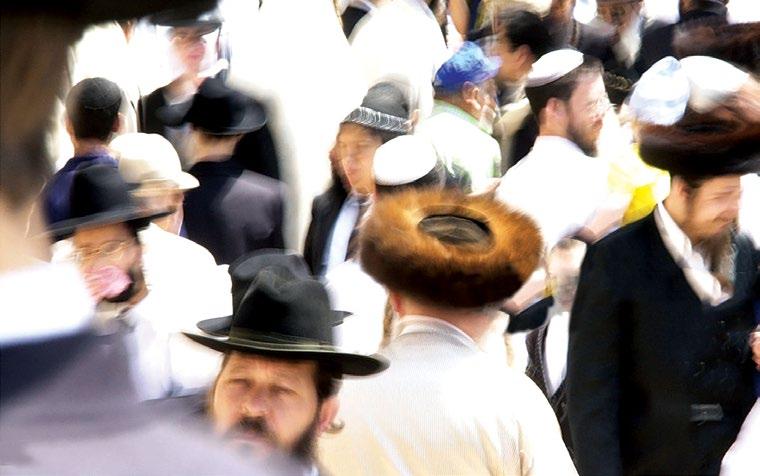
There is no single dogma in Judaism. Judaism’s movements vacillate between strict religious observance and secularity.
Orthodox movement considers its concept the sole bearer of the essence of Judaism. The Orthodox challenged the Reformists as early as the XIX century. The Orthodox movement was opposed to the secularization of Jews, the expansion of social, political and economic rights, and is against not only the European but also the Jewish Enlightenment (Haskalah). In their view, abolition of the Jewish ghettos would lead to rapid assimilation, and would ultimately jeopardize Judaism as a doctrine and as a way of life. That is why their leaders went as far as to refuse learning the local language of their country of residence.
Conservative Judaism emerged in the XIX century in Europe and the United States; Conservatives believed that Jews had to acquire Western culture and engage in public life, even if it resulted in changes to their Jewish religious life. Conservatives tried to combine traditions and reforms, but the fundamental principles and status of the Jewish liturgical language, observance of the holy-unclean categories, the eternal essence of Judaism and the sanctity of the Sabbath were left unchanged.
According to the new time reformists’ view, it is essential to adapt one’s beliefs (rituals) to the modern times – to change the Jewish status. The first step in the reform of the liturgy was carried out in Amsterdam; homilies starting being conducted in the Dutch language and antique prayers removed. Germany had become the center of reformism. Prayers regarding the expectation of the Messiah and the Jews’ status as God’s chosen people were removed. The reformist movement spread to Europe and the
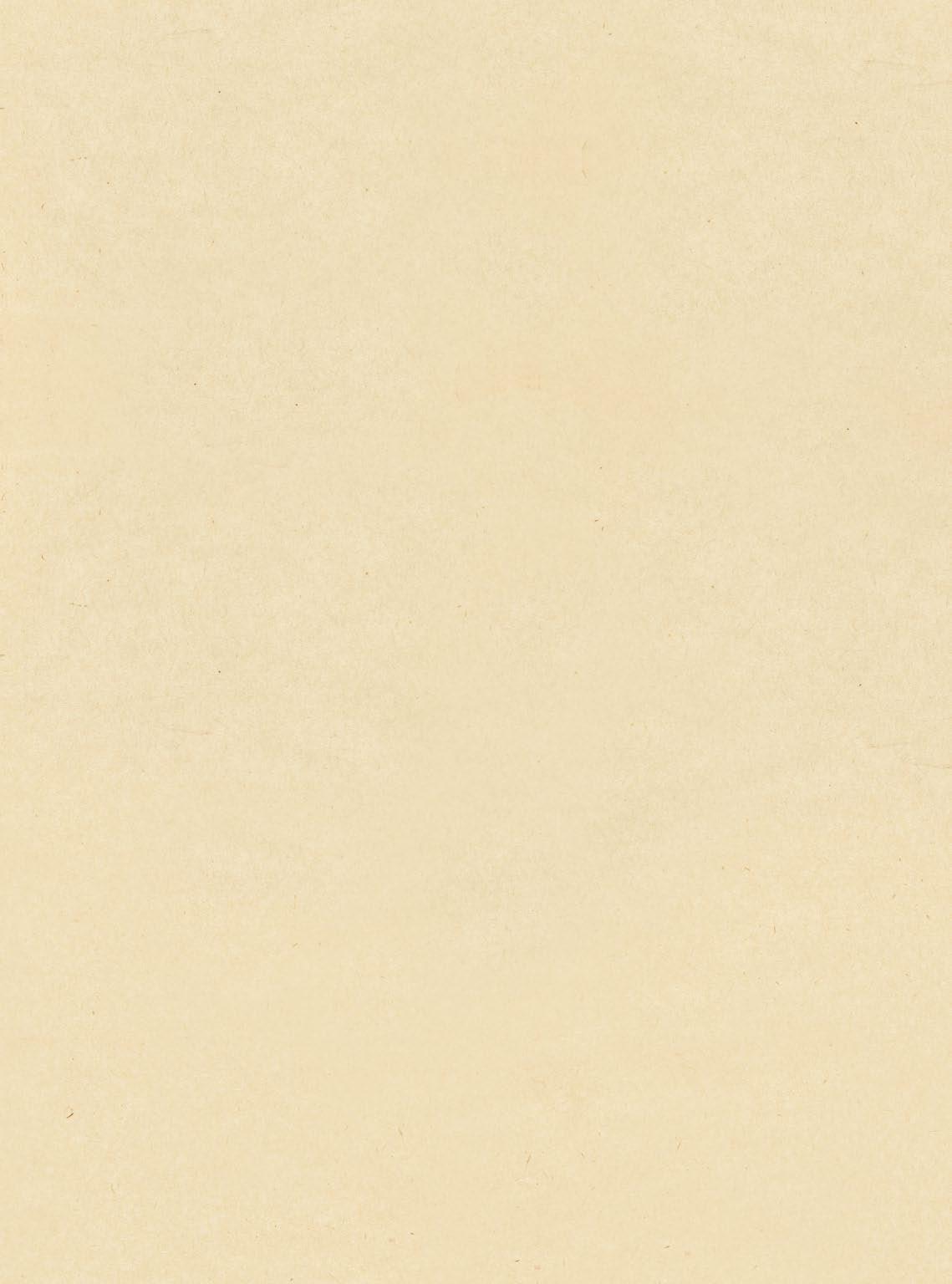
UK. Reformists demonstrated solidarity towards the State of Israel and the Torah, based on the fundamental truth that man is created in god's image – that is why everyone's life, regardless of their religion, is blessed.
Hasidism, a mystical reformist movement that originated in Eastern Europe in the XVIII century, moved to Israel. It now exists as an esoteric phenomenon. Initially, Hasidism was a reaction of poor, illiterate people against the literate wisdom of the Talmud. The founder Ben Eliezer (1700-1760) did not deny the Talmud or the thousand-year cultural traditions, but claimed that it is possible for people to discover the spark of God within: "God wants people to light this spark through their holy deeds ... whatever I have accomplished is due only to prayer and not to study of the Talmud."
The Hasid mystery discovered the uniqueness of each person. While the Talmud was like a wall defending Judaism, protecting it from spreading to other na-
TRADITIONS 66 VOYAGER 6/2017
MARINA KIPSHIDZE, NINO LURSMANASHVILI
tions, Hasidism claimed that each person was responsible for the protection of his/ her own beliefs. It urged people to know themselves; to use their abilities in God's service; and to be individually responsible to God for their own personality and to the whole world. Man should free the "divine spark" that is scattered everywhere and elevate it to a higher level until it reaches full unity with the creator and his creation.
By serving God, Hasidism brings closer the time of the Messiah. The personal salvation of the Jewish people and the entire human race is a necessary step toward salvation.
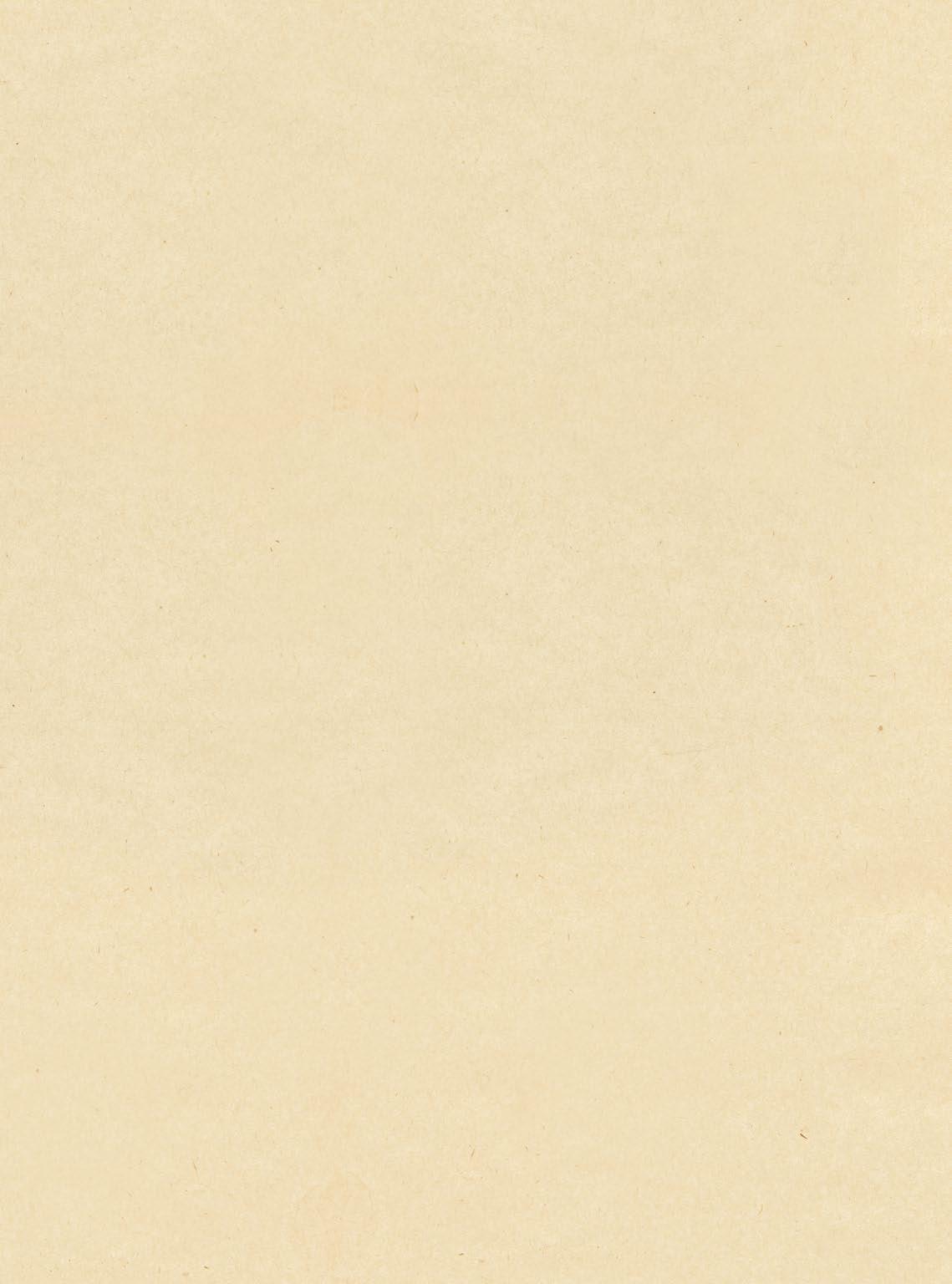
Neturei Karta ("Guardians of the City" –this is how the keepers of Talmud and Torah knowledge were called) are an ultra-orthodox Hasidic community con-


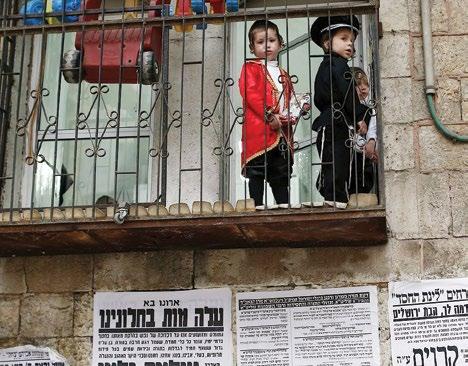
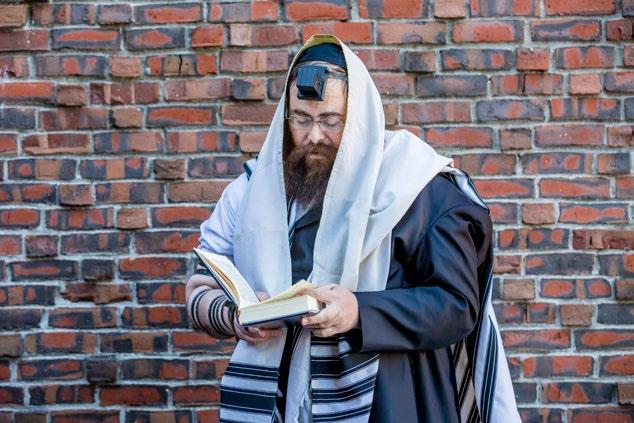
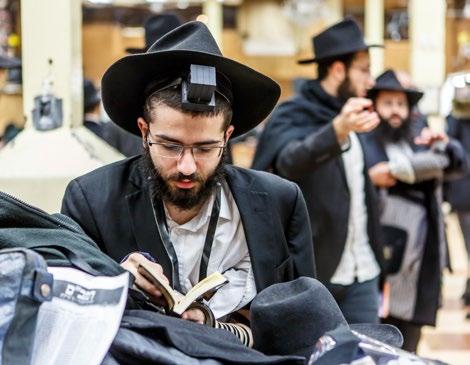
sisting of a few dozen families; these religious extremists live mainly in Jerusalem and their established city of Bnei Brak.
Neturei Karta condemns the creation of the state of Israel and does not recognize it, because it delays the Messiah's coming. Many of them do not recognize the Supreme Rabbis; refuse to accept the ID card from the state; and support the Palestinian liberation movement. They have denounced Israel's Independence Day as a day of mourning (demonstratively burning the Israeli flag).
Judaism is defined by the uniqueness of two contradictory ideas: the idea of a special nation and universalism. The Sabbath, the land of Israel, the Tanakh and the Messianic idea are the main theological and ethical tenets of all movements of Judaism.
67 VOYAGER 6/2017
WHO CAN BECOME JEWISH?
There are two ways to become Jewish: the first is by having a Jewish mother; the second is by undergoing giyur (a kind of religious baptism). It is a very difficult process. According to tradition, a potential proselyte (a person who aspires to a new religion) is talked out of making the step to test how resolute their decision is. The “seeker”, who is firm in his desire to convert, will experience a special religious ceremony. During giyur, men and women undergo a ritual cleansing in a pool called a mikveh.
WHAT ARE BRIS MILAH, BAR MITZVAH AND BAT MITZVAH?
The traditional Jewish ritual of circumcision comes from Abraham. According to the Bible, Abraham performed the first Bris Milah to honor God’s covenant when he was 99 years old. Jewish boys are circumcised on the eighth day after their birth. Bar-Mitzvah is the next important ritual in the Jewish life cycle (it literally means son of commandment). Boys read a chapter from the holy word (Torah) for the first time. A Bat-Mitzvah ritual for girls began at the end of the 19th century in liberal religious circles. Today it is held in most Jewish families.

HOW MANY COMMANDMENTS DO JEWISH PEOPLE KEEP?
The Decalogue – the 10 Biblical commandments set down by Moses – are world-famous. Jewish people keep 613 commandments. 365 of them are negative (the number of days in a year etc.), while the remaining 248 (the number of human body parts) are affirmative.
Non-Jewish descendants (the rest of humankind) should keep seven commandments: they must refrain from worshipping idols, condemning God, shedding blood, theft, and using meat cut from live animals. Also, it is imperative to create a just judiciary system.
WHAT IS PROHIBITED ON THE SABBATH?
According to the Bible, God created the world in six days and rested on the seventh. One cannot make fire, spread a tent, trim sheep, turn on electricity, open an umbrella (since it looks like a tent), shave, etc. on the Sabbath. Funerals are also prohibited. The Sabbath rule can be broken however to save one’s own life or that of another.
WHAT ARE THE TORAH AND THE TALMUD AND HOW ARE THEY DIFFERENT FROM THE BIBLE?
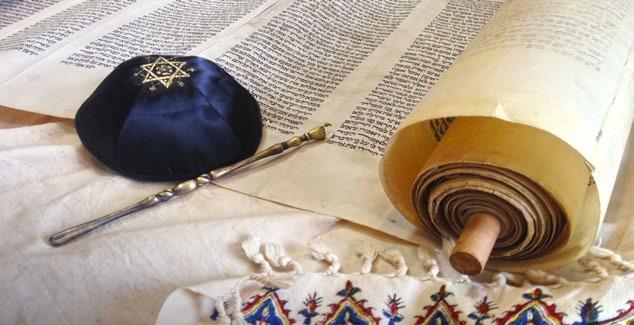

The Hebrew Bible is different from the Christian Bible. The Christian Bible consists of two parts – the Old Testament and
the New. The Old Testament (39 books) is identical to the Hebrew Bible, though the books are presented in a different order and some are edited differently.
Jewish people call their holy word the Tanakh (Tanakh is an acronym of the first Hebrew letter of each of the Masoretic Text's three traditional subdivisions).
Torah (teaching) is also mentioned as a holy word. It is used in several ways: this is the name for the first five books of the Bible (Moses’ books), and sometimes the whole of the Bible and Jewish law.
Talmud (learning) is a masterpiece of medieval Jewish thought. It includes legislative, ethical and ritual norms. Talmud texts unite discussions of respected wise men. It is several times bigger than the Bible.
The Lord gave the Torah to Moses on Mt. Sinai in written form, while the Talmud was passed on orally and recorded later.
HOW IS A SYNAGOGUE DIFFERENT FROM THE TEMPLE?
A synagogue (Greek for meeting) is a place for collective prayer, meetings and religious ceremonies. There are many synagogues in the world but there can only be one temple. However, there is no temple at the minute. The second one was destroyed by the Romans in 70 B.C. in order to crush the Jewish uprising. A synagogue is called a bet-k'neset in Hebrew (house of meeting), while the temple is called Beth Elohim (God’s house). Thus a “synagogue is for people”, while “the temple is for god”. Regular people could not walk into the temple: the priests performed rituals in it
while others waited in the courtyard. A rabbi (Hebrew for teacher) has the most important role in a synagogue. He is the religious leader of the community. Dreaming of resurrecting the temple destroyed by the Romans is an imperative idea of Judaism. This is why people cry at the Wailing Wall (the only part of the temple that has survived). The temple may only be built on the exact mountain where it previously stood - the Temple Mount. Muslim sanctities are located on the Temple Mount. Jews believe that the temple will be resurrected when the Messiah comes.
TRADITIONS
68 VOYAGER 6/2017
JEWISH HOLIDAYS
Jewish Holidays have a dual nature: they denote seasonal changes and historical events. Passover, Shavuot and Sukkot are the three main Jewish holidays of the year. The Mosaic Law called for a pilgrimage to the temple of Jerusalem and the offering of sacrifices during holidays.
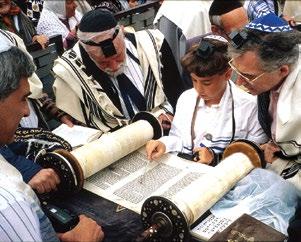

Passover commemorates the Jewish people’s exodus from Egypt. It is held for one week in the spring. The first and seventh days are non-working holidays. The main ritual involves eating unleavened bread, known as Matzo (in remembrance of the Jews’ slavery in Egypt).
Shavuot (weeks) is celebrated seven weeks after Passover, in the month of Sivan (May-June) and is dedicated to the beginning of the wheat harvest. At the same time, Shavuot is linked to receiving the Torah from the mountain of Sinai.
Sukkot (Feast of Tabernacles) holiday, begins on the 15th day of the Jewish New Year, and carries a twofold meaning: it celebrates harvest and commemorates the Israeli people who lived in tents when wandering in desert.
The New Year – Rosh Hashanah is celebrated in the first month of the Hebrew calendar, in the first two days of Tishrei (September-October). On these days, God judges people's actions over the past year, puts their names in the Book of Life and determines their fate for the coming year.
New Year's Days are followed by fasting and repentance for ten days, with the culmination of Yom Kippur, or the "day of atonement", when it is possible to change the New Year's verdict.
Hanukkah is celebrated in the month of Kislev (November-December), commemorating the renewal of the temple, offense of the temple by the Greeks (II BC) and remembrance of the miracle, where one day’s supply of holy oil burned for eight days in the temple. During Hanukkah, each candle of the candlestick (menorah) is lit up for the eight days.
Purim is celebrated on 14-15 Adar (February-March) to celebrate the survival of the Jews living in Persia in V BC. People have the right to drink an unlimited amount of wine. Purim is especially fun for children, because of the gifts, desserts and dressing up for the procession.
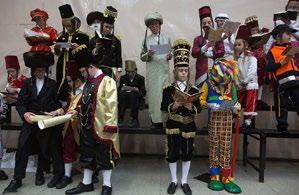
THE HEBREW CALENDAR
The Hebrew calendar is the official calendar of Israel (along with the Gregorian calendar) and is used to determine important Jewish dates.
The Jewish era is deemed to have started in 3,761 BC on 6/7 October: According to Jewish estimates, this was the date of the first new moon (the first new moon of the universe).

The Hebrew calendar is one of the most
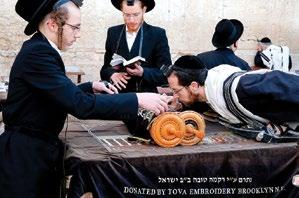

fluid in the world. There can be 12 or 13 months in a year (there are seven leap years in a 19-year cycle). Months always start with a new moon.
The duration of the Jewish year varies between 354, 355 and 353 days per year or, during leap years, 384, 385 and 383 days. The Hebrew calendar is solar-lunar calendar. Therefore, it holidays are "moving", but they are always in the same
season. Moreover, they fall under the same phase of the moon. For example, the first Passover is always in the spring during the full moon, starts on the 15th day of Nissan and lasts for seven days in Israel and eight days outside the country.
Passover is celebrated from 11 to 17 April this year.

69 VOYAGER 6/2017
JEWISH GARMENTS

OVER THE CENTURIES, JEWS HAVE LIVED IN DIFFERENT COUNTRIES AND HAVE BEEN FORCED TO WEAR CLOTHING OR ACCESSORIES THAT HAVE CONTRASTED WITH THE REST OF THE POPULATION.

JEWISH CLOTHING IS DEFINED BY THE HALAKHA. CLOTHES MUST HAVE A PLAIN COLOR, BE OF A CERTAIN LENGTH AND HAVE A BELT IN A CERTAIN PLACE. HATS ARE MANDATORY. CERTAIN BODY PARTS MUST BE COVERED AND JEWELRY KEPT TO A MINIMUM TO EXPRESS MODESTY. SIMPLE CLOTHING IS STRESSED. THESE RULES APPLY TO ALL ORTHODOX JEWS REGARDLESS OF GENDER..


KITTEL
The white garment is a linen coat that men wear during prayer at wedding ceremonies, Yom Kippur, Rosh Hashanah and the Passover feast.

Rekel is a type of coat worn mainly by Hasidic Jewish men during the Jewish work-week. Rekelech are generally made of a black or navy wool blend or of worsted wool, sold with corresponding pants and a belt.
Married men wear this wool covering during morning prayers, the reading of the Torah and Jewish holidays. Tallits are characterized by their woven straw and a fringed edge, which are attached to the four corners; the blue line is a symbol of a Jewish person’s responsibilities.
Tzitzit are specially knotted ritual fringes or tassels placed on different clothing, including Tallit.
A gartel is a belt used by Jewish men during prayer. Traditionally, it is the symbol of controlling one’s instincts. A gartel is distinguished by its simplicity – it is black or white color.
BEKISHE
Bekishe is a long coat, worn mainly on the Sabbath and Jewish holidays, or at weddings and other such events.
Tefellin are a set of small black leather boxes containing scrolls of parchment inscribed with verses from the Torah. It often features two leather boxes and their connecting ribbons. One of them is attached to an arm, and a cord is put around seven more, according to custom, on the left. Left-handed people put it on the right. The second box is fixed to the forehead. The boxes contain four written excerpts from the Torah. Teffelin is worn during the morning prayers.
TEFELLIN
GARTEL
TALLIT
REKEL
TRADITIONS 70 VOYAGER 6/2017
KIPPAH
A kippah is a brimless cap, usually made of cloth, traditionally worn by men, though women of Conservative Judaism wear it as well. A kippah is a religious symbol. It can be woven or made of velvet.
SPODIK
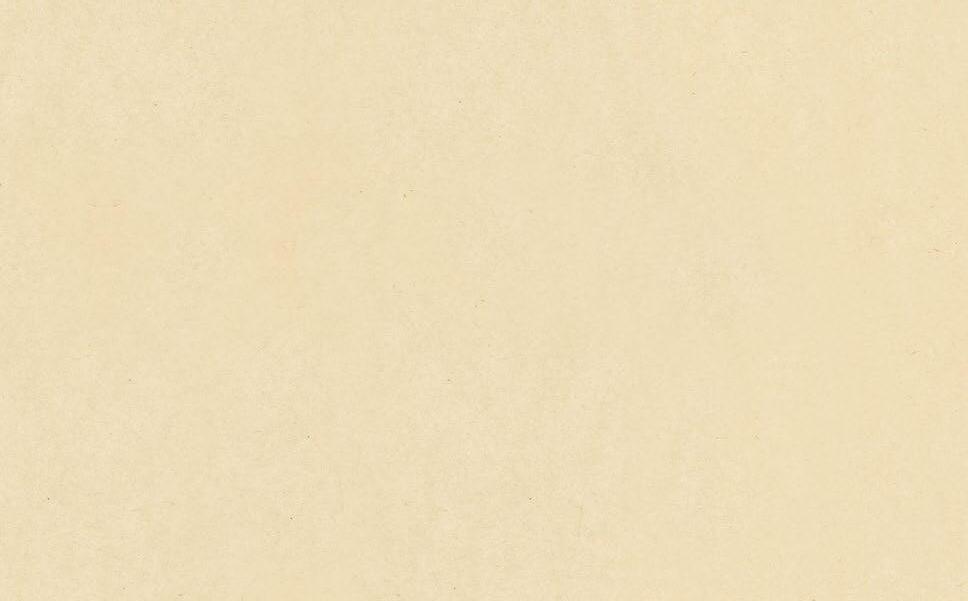
This is a tall fur hat, which looks like a shtreimel but is a different size. It is worn by Hasidic Jews of Polish origin. It is worn over a payot.
HOMBURG
After fur fell out of fashion in the XX century, Homburgs replaced fur hats. Jews wear traditional curls under their Homburg.
HEADGEAR
According to the Halakha, a married woman should cover her hair, so that the men around her know that she is married.
Traditionally, married women wear hats, wigs and berets of different ornaments and colors.
TICHEL
Jewish women wear a headscarf to observe the code of modesty. Tichels come in many varieties, having a very smooth texture, distinctive design and textile finishing.
Sheitel
A sheitel is a kind of wig that married Jewish women wear. It is an echo of the tradition, according to which women should be humble and keep their hair covered.
Shoes
Traditional Jews do not wear open-toed shoes; they wear socks with sandals
LUBAVITCHER
Lubvichers are a descendant of leather hats and fedoras. It is the most modern traditional Jewish hat.
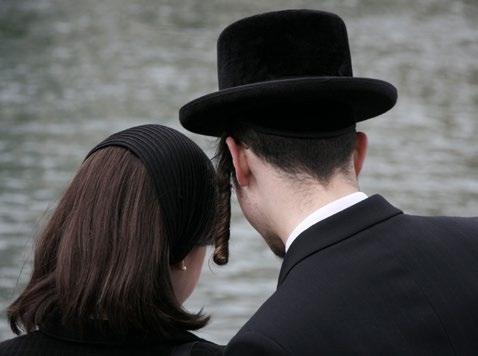

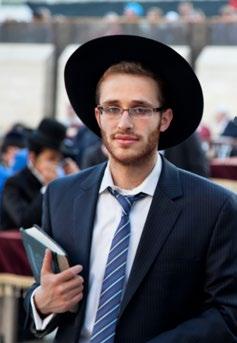
SHTREIMEL
This is a hat adorned with fur. Men mainly wear it after marriage, although in some communities it is a mandatory hat for bar mitzvah-aged boys.
According to the Halakha, men are not allowed to shave or cut their hair at their temples. It is due to this rule that they wear Orthodox curls (PAYOT)
According to the same tradition, is also unacceptable to shave one’s beard with a razor – only scissors and electric shavers are permitted
Clothes
Women wear clothes with three-quarter-length sleeves. Their clothes should not be tight around their body and a belt around the waist must be loose. Modesty laws also extend to simple colors.
Dresses
Traditionally, women have to wear skirts below the knee. Some women do not wear pants in the company of men.
Religious Garments
Women who observe the Sabbath traditions wear a white apron on Saturdays (to protect the sanctity of the reproductive organs); they wear modest clothing to the synagogue.
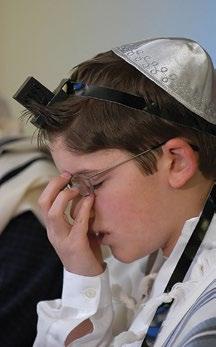

71 VOYAGER 6/2017
ENCORE PERFORMANCE…
Richard Wagner is probably the last person one thinks about when writing about Israel. However, I am interested not in the great German composer in this instance, but Daniel Barenboim, the selfless patriot of music, and his stance, as he bravely performed Wagner for the first time in Israel.
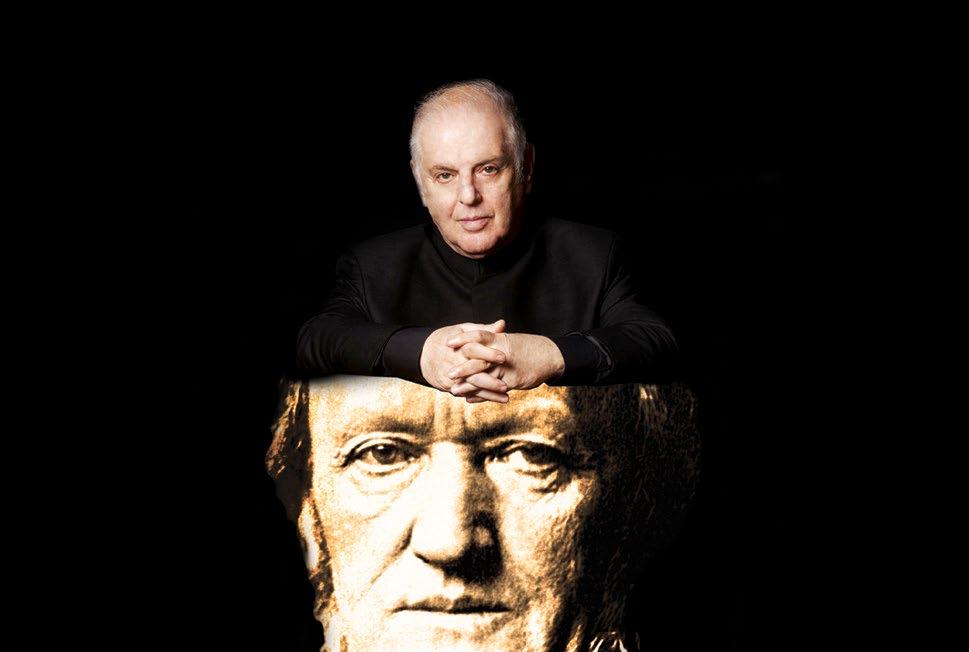
Wagner’s shameful anti-Semitism, apparent in his stupid article – “Judaism in Music”, is not the only reason why performing his music in Israel is a bad idea. Adolf Hitler, ideological falsifier, used Wagner’s music as the background for Nazism, hence the reason for the indirect restriction.
Richard Wagner has nothing to do with this – he died half a century before the Nazis. However, the Third Reich turned Wagner’s superhuman collection – with all its Sigmunds and Siegfrieds – into a propaganda tool; therefore, many people in Israel easily associate this music with the historic trauma of the twentieth century.
One of the tragicomic examples of Wagner’s ideology was “Valkyrie”, staged in Moscow. It happened before WWII, when Hitler and Stalin became friends for a while. Stalin had thought a lot about how he could arrange another pleasant event for
the “like-minded Addie”, in addition to the Molotov-Ribbentrop pact, and finally he chose the second opera from the “Ring of the Nibelung” cycle. Sergei Eisenstein, lowered to the ranks of ideology directors, staged “Valkyrie” in Moscow’s Grand Theatre. It was the most grandiose opera failure in history.
Wagner’s anti-Semitism is confusing. On one hand, it has to be considered as part of the nineteenth-century German tendency towards nationalism. On the other hand, it is the expression of an emotional, young and ambitious composer. He could not get over his Parisian “Tannhäuser” fiasco. Wagner deemed it unfair that the composer Meyerbeer, a Frenchman of Jewish origin, was responsible for the fiasco (Wagner thought of him as “my Salieri”). After Bismarck took Paris in 1871, Cosima, Wagner’s wife, wrote in her diary: “Germans revenged for the Parisian “Tannhäuser” failure!” Charles Baudelaire wrote to Wagner
STORY
LASHA BUGADZE
72 VOYAGER 6/2017
earlier and apologized for the French’s “deafness” and for their inability to appreciate “Tannhäuser”.
Several years ago, Daniel Barenboim attempted to perform the overture to “Tannhäuser” in Israel to overcome Wagner’s Jewish curse.
Barenboim was not the first musician of Jewish origin who had tried to free Wagner from the Nazi stigma. Yehudi Menuhin tried as well. He not only attempted to rehabilitate Wagner, but also Hebbel’s favorite conductor, the XX twentieth-century genius, Furtwängler. However, Barenboim was the first who was not afraid of his strict fellow citizens and tried to perform Wagner in Israel itself.
Daniel Barenboim deserves a Nobel peace prize. The orchestra that he developed – “West-East Divan” – is the professional and musical confirmation of practical peace. Barenboim was successful in hiring both Palestinian and Jewish musicians for his orchestra, bringing them together to create peaceful and harmonious unity in his ensemble.
If Barenboim were from Georgia, I am sure he would lead a Caucasian orchestra, void of conflicts and mutual frustration, where he would demonstrate a musical example of upset people who are open and free…
Many wrote about the scandalous Wagner “Israeli debut”, but mostly shortly or vaguely, making it hard to understand whether the taboo music was performed or not!
Norman Lebrekht is a gossipy man who knows music. He has written very interesting books about pragmatic crazy acts of musicians (for example, he wrote a book about Herbert von Karajan titled “Who Killed Classical Music?”). I often read this man’s blog and could not understand whether Barenboim was actually able to overcome this overt censorship. Just like others, Lebrekht kept saying that he did, but not fully…
Finally, I met Yossi Tal-Gan, thanks to Eka Mazmishvili. He was director of the festival in Israel which hosted the risky conductor’s attempt to perform Wagner. This amazing person told me in detail that Barenboim declared how he would perform Wagner when called for encore.
The director got very concerned; this information leaked to the press and right-wing politicians started the scandal while liberals admired Barenboim’s decision. The orchestra members got frightened (the paradox is that Barenboim visited Israel with Berlin’s Staatskapelle orchestra) with one of the ministers declaring: we live in a democratic country and cannot establish censorship, but tell Barenboim that he’s playing with fire; nobody here wants to enjoy the historically upsetting music...
It is a great paradox that Barenboim had visited Israel previously with Berlin’s Staatskapelle orchestra.
Following this, Barenboim involved another authority to rehabilitate Wagner in Israel – Placido Domingo, who confirmed that he would certainly participate in the concert. As this plan concerned the encore and not the official program (Wagner’s name would not be included in the program), the festival director hoped that the orchestra would not perform the official part of the program well enough for the audience to call on the conductor for an encore.
Nevertheless, the Staatskapelle performed so passionately that the listeners stomped their feet asking for more (with the hope and knowledge from media sources that Barenboim had prepared a grandiose scandal). Despite the fact that nationalists held posters saying “Shame to the traitor Barenboim” and “No to Wagner!”, the stubborn conductor told the audience that they would now perform Wagner because restrictions cause regression in society.
“We have to get rid of the limitations!” said the conductor and faced the frightened musicians, to hear the “Tannhäuser” main themes (by the way, Wagner was one of the first who faced the orchestra during performances. Before him, conductors either stood sideways or faced the public).
The hall exploded with the first sounds: some got up and rushed towards the exit, swearing angrily; some climbed on top of the stalls and yelled; some clapped encouragingly. One lady took of her shoe and threw it towards the stage; another yelled at the orchestra to continue playing - and this endless overture continued in such chaos that the conductor was probably the only one who actually heard the music…
The festival director kneeled backstage, his hands on his head, repeating the same phrase: “Couldn’t this man play some honest republican’s music – say, Beethoven – and perform this Wagner somewhere else, in some other country, at some other festival?!”
THE CONDUCTOR STAYED TRUE TO WAGNER UNTIL THE LAST NOTE, AND WHAT’S MOST IMPORTANT, STAYED TRUE TO HIS IDEAL OF FREEDOM. AFTER HE WAS DONE, BARENBOIM WENT BACKSTAGE, ACCOMPANIED BY THE AUDIENCE’S CHEERING, BARELY ALIVE. HE APPROACHED THE DIRECTOR, WHO WAS FEELING NOT MUCH BETTER, AND TOLD HIM SILENTLY BUT CONTENTLY: “YOU KNOW, WAGNER REALLY HATED PLAYING FOR ENCORES”.
73 VOYAGER 6/2017
THE WHITE CITY
The history of Tel Aviv, like that of Israel as a whole, is one of struggle, hard work and courage, especially of the pioneers, who were the first to arrive in their historical homeland from Europe. Their goal was to create an independent and egalitarian, socialist society. Among those immigrants, there were 200 passionate young architects, who came from Germany.
Most of those young architects, imbued with the ideas of international modernism, were graduates of the Bauhaus school. After several years of hard work, they were able to create a so-called "White City" – 4,000 buildings that comprise the historical center of Tel Aviv, and are protected by UNESCO. The buildings were
influenced by the styles of Bauhaus, Le Corbusier and Erich Mendelsohn.
The challenge is further complicated by the fact that the entire city had to be built on sand. You realize the whole "madness" and scale of the idea when you visit Tel Aviv and observe the city – you might think that you are in Los Angeles, Biarritz or Monte Carlo; and when you consider the geographical and political space you have arrived to, you are filed with indescribable awe.
Getting back to the construction of Tel Aviv: the flow of immigrants and new settlers never stopped during the city’s construc-
ARCHITECTURE
NIKA CHKHAIDZE
74 VOYAGER 6/2017
BAUHAUS SCHOOL IN WEIMAR, WHICH OPERATED IN 1919-1933, WAS FOUNDED BY WALTER GROPIUS. IN THE TIME THAT FOLLOWED, THE BAUHAUS STYLE BECAME ONE OF THE MOST IMPORTANT DIRECTIONS OF MODERN DESIGN, MODERNIST ARCHITECTURE AND ART. IT WAS STRONGLY INFLUENCED BY THE ENGLISH DESIGNER WILLIAM MORRIS, WHO THOUGHT THAT ART SHOULD INCORPORATE THE NEEDS OF SOCIETY, AND THAT ITS FORM SHOULD SERVE A FUNCTION.
BAUHAUS STYLE IS CHARACTERIZED BY THE REJECTION OF DECORATION AND ORNAMENT, BLENDING ARCHITECTURAL DESIGN WITH THE PURPOSE OF THE BUILDING AND RATIONAL UNDERSTANDING OF THE CONTENT.
tion. "Nothing will come out of here," said British colonial consul, one Winston Churchill. In 1920, he was a member of Urban Planning Commission that was working on the city regulations.
But Churchill was wrong: construction has never stopped since 1910 and Tel Aviv has become one of the most attractive destinations for Jewish emigrants with the city's population having grown from 2,000 to 35,000.
In 1925, the first mayor of Tel Aviv, Meir Dizengoff, hired the famous Scottish urbanist Patrick Geddes to create the city's Master Plan.

A follower of the "Garden City" movement, Geddes created a "development plan" based on his usual method, and decorated Tel Aviv with many beautiful boulevards,

parks and green spaces. All of these were united with the buildings and thus the "White City" was created.
Begin your tour of the city from the Dizengoff Square. When in Tel Aviv, I usually

stay in the Hotel Cinema. Despite the small rooms and noisy area, the hotel is attractive due to being an architectural legend. Its elegant "curves" and Art Deco interior attract different "dwellers". The Magidovitch brothers designed the hotel in 1939.
The pedestrian Dizengoff Square is very beautiful with its distinctive solution: elevated above the ground, it is protected from the traffic.
You will notice the immaculate, white residential block 100 meters up Hovevi Zion Street. Pinchas Hit constructed this building in 1935, inspired by Mendelsohn's "curves" and Le Corbusier’s geometry. The influence of the phenomenal German architect Erich Mendelsohn is evident.
The building occupies the entire block. If you walk up Dizengoff Street, you will see numerous cafes, bars and shops. This street is a local favorite area in which to re -
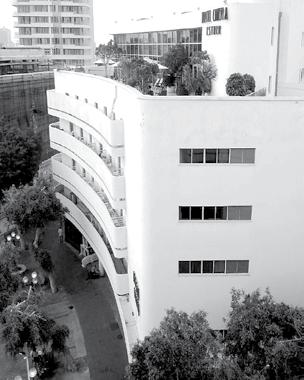 Zamenhof st 1, 1939. Arch. Yehuda Megidovitz
Derech Begin 35, 1935. Arch. Schlomo Liasowski & Jacob Orenstein
Dizengoff Square
Zamenhof st 1, 1939. Arch. Yehuda Megidovitz
Derech Begin 35, 1935. Arch. Schlomo Liasowski & Jacob Orenstein
Dizengoff Square
75 VOYAGER 6/2017
Nahalat Binyamin st 1, Poli House, 1933. Arch. Schlomo Liasowski
lax. As they say in Israel: ''Pray in Jerusalem, work in Haifa and live in Tel Aviv''.
Rothschild Boulevard is the Scottish author’s dream come true. This three-lane boulevard is the main axis of Geddes’ master plan. This is where the pulse of Tel Aviv beats.
The next destination on our route is Bruno House, located on Schtrie Street, near Rothschild Boulevard. The house, built

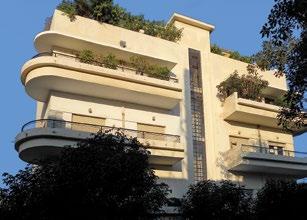
by Zeev Haller in 1935, has undoubtedly sculptural features; the sophisticated design and detail-oriented design is pleasant to the eye, as well as adapted to the specifics of the local climate.
Next, let’s turn onto March Street. Here one can notice the Leon Recanati house on the corner of Menachem Begin Road. This white house was constructed in 1936 by Shlomo Liaskovski and Jacob Orenstein. It is comprised of distinct

rectangular shapes, which causes amazing transformations of light and shadow, creating a very interesting sight.
Although there were many amendments and additions following the primary construction years, the ensemble still retains its originality. Functional buildings, with new aesthetics sans decor, are adapted to the local climatic conditions. All of that makes this ensemble unique in the world.
BAUHAUS FOUNDATION MUSEUM
I strongly recommend you to visit this museum. This area in the Bialik park is the best representation of Tel-Aviv style Bauhaus. You will find the best posters, books on architecture and distinct souvenirs in the museum gift shop.
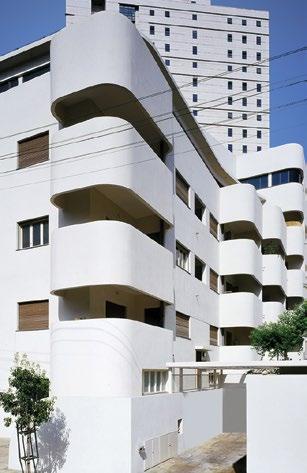
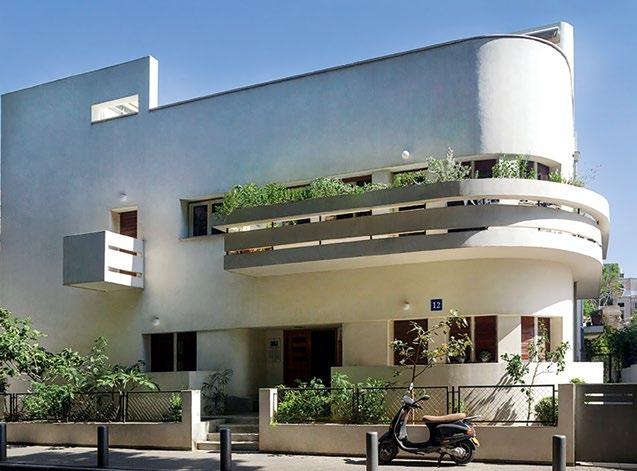
I also recommend touring "White City" with a licensed guide to visit the most charming and exotic places of Tel Aviv. You may buy an audio guide, and explore the city on your own as well.
Open: Thursday – 10.00-19.30; Friday – 10.00-14.30; Saturday – 10.00-19.30;
Price: 60 NIS
Bialik 21; www.bauhaus-center.com
Dizengoff st 77, Tel Aviv; Tel. +972 3 522 0249
ARCHITECTURE
Strauss st 3, 1933. Bruno House, Arch. Ze'ev Haller Levanda st 56, 1934. Ship House, Arch. Shimeon Levy
Emile Zola st 17, 1935. Arch. H.Sima & A. Glick
Idelson st 25,1931. Arch. Richard Kauffmann
76 VOYAGER 6/2017
Lilienblum st 12, 1933. Avraham Soskin House, Arch. Zeev Rechter
ZUBIN MEHTA AND HUBERMAN’S VIOLIN IN TSINANDALI
DAVID SAKVARELIDZE
I travelled to Tel Aviv for the first time on December 25, 1996. I wanted to visit the playwright Hanoch Levin as I was asked by the Rustaveli theatre to stage one of his plays. I was about to direct my first play on the big stage and wanted to fully prepare myself. Theater and literature critics called Hanoch Levin a “living genius”. His plays are truly wonderful. I had an appointment with him on the second day of my trip at the Cameri Theater of Tel Aviv.
Tel Aviv is an interesting theatre city. The theatres in order of their importance are Habima Theater (the national theatre); the Cameri Theater, which emphasizes internal Israeli conflicts; the Beit Lessen theatre group, which stages contemporary American plays in different locations; the new Gesher Theater, which was founded by Russian emigrants; the interesting Arab-Hebrew Theater, which unites Jewish and Arab participants; the Tmuna Theater, which is an avant-garde establishment with many projects running; and finally the Tzavta Theater, which is famous for its productions, concerts and musicals in the English language.
Hanoch Levin made a lasting impression on me. He became my guide in Israel. I learned about Tel Aviv through his plays and characters. It was like discovering Georgia through the works of David Kldiashvili.
Hanoch Levin wrote music for his plays as well. He advised me to attend one important concert. Some of the world’s greatest musicians, among them Itzhak Perlman, Daniel
Barenboim, Yefim Bronfman and Shlomo Mintz, were holding a gala concert to mark the 60th anniversary of the Israeli Philharmonic Orchestra. Zubin Mehta, the musical director of the orchestra, conducted the concert. The anniversary also marked Mehta’s 60th birthday.
An interesting story about the founder of the orchestra:
Jewish musicians in Germany were asked to leave orchestras soon after Adolf Hitler came to power, the Berlin Philharmonic being a prime example. Bronislaw Huberman had an idea to gather these musicians. He was excited by the new Zionist ideas and wanted to found an orchestra in the Promised Land.
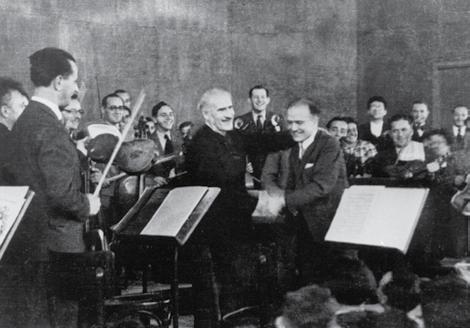
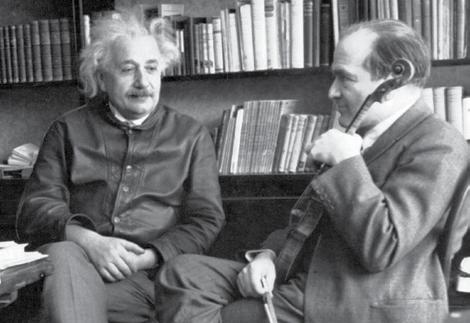
Huberman was one of the greatest musician’s in history. I would go so far as to call him a musical “saint”. He was born in Czestochowa, Poland and started attending violin lessons from an early age. He was a boy genius – a virtuoso. Little Bronislaw was such a divine being that when Count Vladislav Zamoiski listened to him, he was amazed and gave him a Stradivarius violin as a present from his private family collection.
Bronislaw Huberman was so excited with the idea of creating an orchestra in Palestine that he started looking for allies all over the world. He held 42 concerts in the US to raise money. Sadly, the musician’s Stradivarius from Vla-
Albert Einstein and Bronislaw Huberman
MUSIC 77 VOYAGER 6/2017
Bronislaw Huberman and Arturo Toscanini
dislav Zamoiski was stolen during one of these tours, at Carnegie Hall.
Huberman asked Albert Einstein Bronislaw Huberman was so excited with the idea of creating an orchestra in Palestine that he started looking for allies all over the world. He held 42 concerts in the US to raise money. Sadly, the musician’s Stradivarius from Vladislav Zamoiski was stolen during one of these tours, at Carnegie Hall. for help setting up new ensemble. Einstein held a party in the Waldorf Astoria hotel to raise the necessary funds and soon presented Huberman with 80,000 USD. This was enough to start an orchestra.
One curious incident took place: the orchestra sent their permanent Israeli immigration documents to the leader of the “Israel Agency”, David Ben-Gurion, who later became the founder of the state. In a purely political move, Ben-Gurion rejected the applications – he wished to see more workers than musicians in Israel.
Huberman received the necessary documentation from the British government, with the aid of Chaim Weizmann, President of the Zionist Organization. He took 73 musicians from Europe to Palestine. Their ship arrived at the Jaffa port.
The musicians were selected through auditions. Huberman turned his back to the musicians to choose them based only on their performance quality. Those musicians who were not hired were very upset at the prospect of having to remain in fascist Germany. After a difficult selection process, Huberman saved 800 people from the Nazi Germany and brought them to Palestine.

At the same time, Adolf Hitler summoned Arturo Toscanini to conduct several operas for the Wagner Festival. Toscanini refused the official offer. The great maestro condemned Hitler and his policy towards Jewish people.
Afterwards, Huberman asked Toscanini to conduct the Palestine Orchestra. Toscanini agreed and the first concert was held on December 26, 1936. The orchestra traveled throughout the Middle East in its first decade. Unfortunately, Huberman was involved in an accident in Sumatra, Indonesia, and although he survived, his fingers were fingers, leaving him unable to play. Nevertheless, the orchestra continued its successful work. Huberman passed away in 1947.
Ben-Gurion renamed the Palestine Orchestra the Israel Philharmonic Orchestra. It was later led by a 29-year-old conductor, Leonard Bernstein.
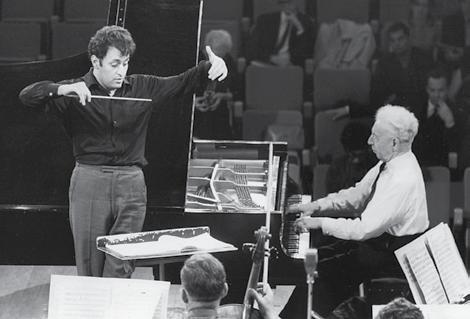
ZUBIN MEHTA
In 1968, the Orchestra invited Zubin Mehta from Bombay to be its leader. He is the most revered conductor of modern times. Mehta grew up in a musical family – his father was the founder of Bombay Philharmonic Orchestra. Mehta had led the most prominent orchestras and theaters in the world, including the Montreal, Los Angeles, New York, Vienna, and Munich philharmonic orchestras. Now he leads the Maggio Musicale Fiorentione in Florence, the San Carlo Opera in Napoli and the Israel Philharmonic Orchestra. Zubin Mehta is the most famous conductor on Earth.
Those who don’t enjoy classical music as much will still probably remember the “Three Tenors” concert that took place in Rome, in 1990. Zubin Mehta was the conductor of that unforgettable concert by Placido Domingo, Jose Carreras and Luciano Pavarotti.
Hanoch Levin invited me to attend this anniversary concert. I rushed to get a ticket but, of course, there were none available. Even if I could find tickets, I would have been unable to afford them as I was only 26 years old and did not have that much money. I stood by the entrance and looked on as the audience walked in. I stood there so angry that I could not attend this historic moment.
MUSIC
Zubin Mehta and Arthur Rubinstein
78 VOYAGER 6/2017
Bronislaw Huberman
Time passed. My play proved to be successful. Unfortunately, Hanoch Levin passed away several years later. Last year, the Israel Philharmonic Orchestra and Maestro Zubin Mehta turned 80 years old. Maestro Mehta asked Khatia Buniatashvili to be the soloist singer for the concert. I then became friendly with the orchestra’s leadership. Khatia sent me tickets to the concert and I flew to Tel Aviv in April 2016.
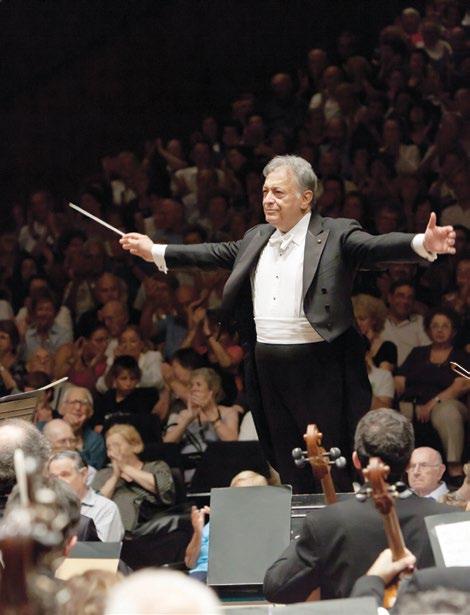
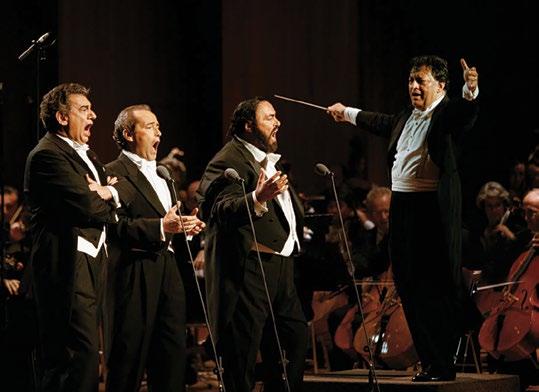
The concert was immensely successful. We were asked to attend a celebratory event afterwards.
The Israel Philharmonic Orchestra and Maestro Zubin Mehta will visit Georgia in September 2017 and hold a concert in the “Chavchavadze Museum” gardens. Together with the general director of the orchestra, we have founded a festival and musical academy.
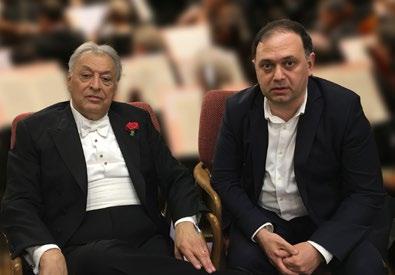
Gidon Kremer, Lisa Batiashvili, the baroque ensemble "Didero", Eliso Varseladze, the chamber orchestra "Kremerata Baltica", Hugo Desman, Alice Sara Ott, Khatia Buniatashvili and many other interesting musicians will perform at the festival. Joshua Bell, the famous violinist, held a concert there last year and told the audience about Huberman’s lost Stradivarius.
A prisoner died in one of America’s prisons in 1987. He shared a secret with his wife on his deathbed: he stole Huberman’s Stradivarius from Carnegie Hall. He was a young, unlucky musician at that time, who played at bars and cafes. His wife told the story to the police and the violin was sold at auction for 1 million dollars. By law, the prisoner’s
wife received USD 250,000. One famous violinist who performed in a quartet bought the instrument though sold it later.
Joshua Bell held a concert in London’s Albert Hall in 2014. He went to a famous music shop to buy new strings. The shop offered him Huberman’s violin. “I knew it was my violin, the moment I touched it”. Bell bought the instrument for 4 million dollars. That was the violin that he played in Tsinandali Chavchavadze museum.
Zubin Mehta and the Israel Philharmonic Orchestra
The Three Tenors
Zubin Mehta and David Sakhvarelidze
79 VOYAGER 6/2017
HE ISRAEL PHILHARMONIC ORCHESTRA AND MAESTRO ZUBIN MEHTA WILL VISIT GEORGIA IN SEPTEMBER 2017 AND HOLD A CONCERT IN THE “CHAVCHAVADZE MUSEUM” GARDENS.
THE COUNTRY OF STARTUP S
NINO LURSMANASHVILI
In the past, many Israeli entrepreneurs hoped that they could sell at least one bike to the Chinese; now their dream is to create a start-up and sell it to the Americans. High-tech constitutes 42.4% of Israel’s exports.
Science is a universal language that connects nations and cultures. Israel's technological achievement gives it a special status on the international stage, and Israeli scientists have gained unprecedented acclaim in the world. Their achievements are appreciated via Nobel and Turing prizes, Fields Medals and other prestigious awards.

Zionist leaders, including Israel's first Prime Minister David Ben-Gurion, the first president, Dr. Chaim Weizmann and the rest of the Israeli population have long considered scientific research an important part of their activities and the main cornerstone of the state of Israel. Before the state of Israel was announced, Israeli scientists – Albert Einstein, Martin Buber, Sigmund Freud, Aaron Aaronson and others – envisaged the establishment of scientific institutions and research centers as a vital national and economic priority.
There are nine universities and 66 higher education institutions in the country. Haifa’s "Teknion"
and Jerusalem’s "Hebrew University" are on the list of the world's most prestigious universities. Israel is one of the ten member states of the prestigious "Space Club". The work of these institutions includes developing, producing and sending satellites into space and then managing them. Israel is among the top 8 countries that can launch satellites into space independently.
Israel’s "high tech" history starts from the beginning of the 1950s, with then-small firms producing equipment and means of civil communication.
THE COUNTRY HAS THE HIGHEST NUMBER OF SCIENTIFIC DEGREE HOLDERS IN THE WORLD: 1.7 TIMES MORE THAN THE SECONDPLACE HOLDER, THE US, AND TWICE AS MANY AS JAPAN.
4 dro
OUT OF ALL THE NATURAL RESOURCES, WE ONLY HAVE JEWISH BRAINS, BUT THIS IS THE ONLY RESOURCE THAT IS TRULY INEXHAUSTIBLE”
SCIENCE
DAVID BEN-GURION , FIRST PRIME MINISTER OF ISRAEL.
80 VOYAGER 6/2017
ISRAEL CURRENTLY EXPORTS 10
241 MILLION DOLLARS’ WORTH OF HIGH TECH PRODUCTS –A SUM THAT COMPRISES 42.4% OF ITS ENTIRE EXPORTS.
Like other countries, Israel's war gave it a strong push to develop its technology. In a few years, two technological revolutions had taken place: the first, in 1967, after the six-day war, and the second in 1973 after the "Judgment Day" war. This is when the national industry of military production developed, including Israel's aviation industry (IAI), the division of development of weapons systems ("Raphael") and others.
Israel’s industries and laboratories carried out large-scale projects such as missile systems, telecommunications systems, fighter jets, "Merkava" tanks and missile ships.
From the 1970s, the departments of world tech giants have opened there, one after the other, such as Motorola, IBM, Intel, Microsoft, Cisco, Texas Instruments and others.
The "Motorola" cell phone was created in the company’s Israeli branch, as well as Microsoft’s Windows NT and ХР operating systems.
Intel also opened its first research center outside the United States in Haifa in 1974. It had five employees back then. Now the company has eight scientific and production centers in Israel, which have developed and produced a number of high-tech products: Pentium MMX, Pentium 4, Celeron, Itanium and chips for a variety of purposes. Israel’s Intel facilities now employ a total of 6,000 people and exports products to the tune of 2 billion dollars per annum.
The third technological revolution in Israel took place in the 1990s and coincided with the boom of the world informational technologies.
Israel's investment attractiveness is ensured by its qualified staff who have received their education in the country's high level educational institutions. Hence, the country has managed to attract billions of dollars of investment into science and industry.
Thousands of new firms were founded in a couple of years; these companies became the world leaders in most high-technology fields. Clearly, today's world would be inconceivable without things that were created by the efforts of Israe -

li scientists, programmers and researchers: IP phone, file compression technology (ZIP), USB carriers and ICQ. The latter’s new instant technology of internet connectivity quickly became popular all over the world, and brought to its four young developers hundreds of millions of dollars.
Along with thousands of small and medium-sized firms in Israel, powerful multi-purpose transnational high-tech companies were established too, such as Check Point, Commverse, Amdocs and many others. They have branches in many other countries as well.

The Israeli "Silicon Valley" stretches from Haifa to Beer Sheva. New cities with scientific and industrial firms were created within this space, where tens of thousands of specialists are employed.
Israel’s computer industry is world-leading. HighTech Centers, which are located in Raanana, Nethaniah, Petakhtikva, Herzliya, Haifa and in Rishon LeZion give new operating programs to the world every year.
The Weizmann Institute of Israel is in the Top 20 higher education institutes in the world for computers and technology and constantly churns out new computer geniuses.
ISRAEL’S ECONOMY INVESTS HEAVILY IN HIGH-TECH SECTORS. SUCH A STRATEGY IS THE BEST GUARANTEE OF THE COUNTRY'S FUTURE DEVELOPMENT.
Scarcity of mineral resources, small areas and difficult foreign policy situations in Israel always fostered non-standard creative solutions, so no wonder that part of Israel's scientific research institutions – Teknion, the Hebrew University in Jerusalem, and the Scientific Institute in Rehovot – were created in “kibbutzes” (agricultural communes).
The potential of these scientific research centers was huge, because during the 1930-40s, thousands of highly-qualified engineers and scientists that fled from Europe and the Nazis worked here. In the 1990s, they were complemented by highly-qualified personnel from the former Soviet Union.
As a result, Israel now has the most engineers in the world, the highest number of professionals with a university degree, and the highest number of scientific publications per capita.
In 2002, the Rehovot Weizmann Institute researchers presented a molecular computing machine, which consisted of DNA ferments and molecules (instead of silicon micro-chips used commonly).
The world's smallest DNA computer can diagnose malignant cancer at the cellular level.
The world's first USB Flash Memory was invented by the employers of M-Systems. In 1999, the US signed a patent on it; in September 2000, the USB device itself appeared and was called DiskOnKey.
At first, a USB had 8 MB of memory and was worth $50. In 2006, M-Systems corporation was absorbed by SanDisk, who paid $1.55 billion for the purchase. eVigilo Mobile's service provides mass warnings to the population during emergency situations. eVigilo's system allows users to send SMS in mass quantities to the mobile phones under the covering zone of its cellular antennas (base numbers are not necessary). In addition, the system can turn on televisions, radios, land lines and stationary sirens to warn the public.

81 VOYAGER 6/2017
ISRAEL RANKS NUMBER ONE IN THE WORLD FOR FUNDS ALLOCATED TO RESEARCH AND DEVELOPMENT (R & D) (4.7% OF GDP) AND IS ONE OF THE LEADING NATIONS IN TERMS OF VENTURE CAPITAL ACCESSIBILITY. THE INDUSTRY, TRADE AND LABOR MINISTRY ANNUALLY ALLOCATES MORE THAN $400 MILLION TO VARIOUS RESEARCH PROJECTS, INCLUDING START-UPS..
Technology start-up companies are concentrated in Israel and, in this regard, second only to Silicon Valley in the US. Israel is therefore called a country of start-ups.
Israel maintains a leading position and creates new technologies in different areas, whether it is information and communication technologies, water supply and purification systems, natural sciences or national security.
One of the country’s priority areas is defense and security. Through the efforts of Israeli technologies, today the country is among the world leaders in the field of defense technology.
Israel's Ben-Gurion Airport is not accidently called the most peaceful airport in the world. That is why in the US alone, more than 40 airports are equipped with security systems from Israel.
CHECK POINT – IT WORLD SECURITY STANDARD MOBILEYE - SAFETY MANAGEMENT SYSTEM
In 1993, 25-year-old graduate Gil Shved from an elite unit of the Dahali 8200 Israeli Defense Army founded Check Point Company with two partners.
"Check Point" processes security supply software and hardware systems, including firewalls and virtual private network organization facilities. Today the company has 2,200 employees worldwide and more than 100,000 clients.
The main components of this driver-assistance system include a digital camera and a microprocessor, which are fixed under the windshield. The images captured by the camera are transferred to the processor in digital form, which processes the information in real time, making it possible to determine the distance between the car and an object in front. The algorithm does not have optical, laser or radio radiation, so the end-use information is delivered through special software.
In 1993, Israeli company INDIGO presented the E-Print 1000 – the first color printing machine. The company established in 1977 by Beni Laden was purchased by HP in 2002 for $830 million.
In 2016, start-up company STOREDOT started serial production of equipment that could charge a Samsung Galaxy smartphone in 30 seconds. The price for the charging device is $60.
POWERMAT – a wireless charging device for iPhones was created by Israeli Powermat Technology. The innovation is in the case charger and the additional charger that doubles the gadget’s independent operation.
INTEL 8088, 80386 PROCESSORS ALGORITHM LZW FACEBOOK.COM
In 1974, Israel became the first place outside the US where Intel opened an R&D center. The Processor 8088 was created in the Intel branch of Haifa in 1980. This was the beginning of a new era of technology. Consecutive Intel breakthroughs happened in Israel: the Jerusalem branch presented the 80386 – the first 32-bit processor in the world for the IBM PC platform. Today the Intel Corporation of Israel employs 6,000 people.
The algorithm of Lempel-Ziv Uelch is a universal algorithm that zips data without any loss, which was created by researchers from “Teknion”, Lempel and Ziv as well as the American scientist Terry Uelch, and had the best coefficient at the time.
In 1987, the algorithm became the standard part of GIF visual format; today, standard PDFs also contain this algorithm.
In 2013, American company Facebook purchased Israeli high-tech company Face.com for $100 million. The latter has created a face-recognition program for photos uploaded to the internet.
Face.com also scans millions of photos uploaded to the internet and finds those faces, which are already on the net. If the face found by the program has a registered profile on Facebook, it adds profile information to the photo.
82 VOYAGER 6/2017
SCIENCE
NAVIGATION SERVICE WAZE "SUPERCONDENSATOR" ELBIT
In June 2013, Google purchased the Israeli start-up Wase for $1.1 billion – a mobile navigation app where the information is entirely delivered by its users. Through the app, it is possible to watch the situation on roads, to give references for optimal routes, to get to know the location of speed detection radars, to receive or give information to other users about changes in road conditions and to locate obstacles and police posts.
This wireless trolleybus developed by the Israeli defense industry was at first designed for self-defense purposes; however, it is highly likely that it may bring about a revolution in the transport sector across the world. A trolleybus or tram equipped with a “supercondensator” only connects to the electric network at scheduled stops while collecting passengers. This not only reduces the costs of the transport but also reduces pollution.
SILENTIUM is the world leader in the active suppression of noise. It has developed noisereduction technology – silence-in-a-chip. This is a chip, microphone and speaker set that creates a sound directed against noise waves, suppressing the sound.
LUMIO is a vertical keyboard that can be optically projected onto any surface.
REGENCURE – this “wrapping paper” cures fractures and accelerates the bone-fracture healing process.
A Haifa research group has created nano fibers through nanotechnology, whose two external sizes (e.g. width and thickness) are substantially smaller than the third (length) and is located in nano-diapasons. It is 1,000 times slimmer than a human hair.
PREPEX
Israeli start-up company
PrePex created a device which carries out circumcision without surgical intervention.
The World Health Organization recommends this method and thousands of people have utilized it already.
With PrePex, the procedure is done without anesthesia and blood and does not require medical supervision.
COPAXONE _ The first drug to treat multiple scleroses was developed by pharmaceutical company TEVA.
MEDIGUS – The world’s smallest video camera created by medical company Medigus (0.99 mm) is used to diagnose gastro-enterological reflux diseases.
REWALK – This exoskeleton, created by a paralyzed Jew, gives lower-limb-paralyzed patients to chance to walk independently.
ICECURE – FREEZING OF TUMORS ELMINDA
This method is used by Israeli company IceCure from 2013 to treat smallsize breast tumors. The method is as follows: liquid nitrogen is implanted into the problematic tissue, which at first freezes the tumor at -170 C; after returning to normal body temperature, it no longer presents a threat to the body.
The 15-minute procedure is painless and does not require analgesics.
This company is a real revolution in treating brain diseases. Method Brain Networks Activation is based on technology and is designed to diagnose the patient and control the brain disease under the supervision of a neurologist. BNA can support the treatment of diseases such as Parkinson’s, migraines, depression, drug abuse and chronic pain syndrome.
HERON – an unmanned reconnaissance aircraft. In 2014, a new generation of unmanned aircrafts was created in Israel – the Super Heron HF. The machines can stay in the air for up to 50 hours, reach speeds of 280 km/h and transport 500 kg of cargo. The following is worth mentioning in the military field: LAVI – fighters; GUARDIUM – unmanned patrolling cars; PROTECTOR USV – unmanned boats; MUSIC-infrared systems; personal air defense systems to actively protect aircrafts; and CAMERO – a radar system that penetrates through walls.
PYTHAGORAS SOLAR – this company has created windows with rims and built-in solar batteries that are more energy-efficient than other solar panels.
Within the arena of alternative energy sources, LEVIATHAN ENERGY has created an energy-efficient, silent wind turbine called Wind Tulip, which resembles urban sculptures. These wind turbines now stand in Israel as well as in the cities of Europe and USA.
OLA MUNDO – this is the world's first application to interact with people with Autistic Spectrum Disorder. Ola Mundo (Spanish for "Hello, world") is an application, which instantly transmits a message using symbols to people who face challenges writing and speaking.
PERHAPS ONLY IN ISRAEL COULD THE AIRPORT ORGANIZE AN EXHIBITION REFLECTING THE HISTORY OF SCIENTIFIC, TECHNOLOGICAL AND INNOVATIVE DEVELOPMENT. HERE YOU CAN SEE THE IRON DOME, THE DRUG COPAXONE, FLASH MEMORY CARDS, THE NAVIGATION APPLICATION SERVICE WAZE, DRIP IRRIGATION SYSTEMS, CHERRY TOMATOES, ETC.
"SAFE TRAVELS! WE WISH YOU A SAFE RETURN TO OUR WONDERFUL AND BEAUTIFUL COUNTRY” - THAT IS HOW ISRAEL SAYS GOODBYE TO ITS VISITORS.
83 VOYAGER 6/2017
THE PROMISED DESERT
Israel is the only country on earth where people have conquered the desert, where there are more forests in this century than the last. If agriculture in the rest of the world is means for feeding the people, for Israel it is an ideological movement.
In 1890, a fruit garden was built by Zionist Jews in the city of Jaffa through donations from philanthropist Moshe Montefiore; At that time, Israel did not exist, and Palestine was under a British mandate. Jews migrated to buy land and develop agriculture, with the idea that a people should live and work in their homeland.
An unprecedented amount of work was required to pacify the wetlands in the north and deserts in the south. People worked hard, and the land eventually “surrendered” and delivered its first crop. However, the soil needed something revolutionary. This was accomplished by botanist-agronomist Aaron Aaronson, a graduate of prestigious agricultural university Grignon. In Upper Galilee, he discovered the oldest wild wheat variety ever identified.
AGRICULTURE MAINTENANCE IS CONSIDERED EFFECTIVE IF A FARMER CAN FEED 30-50 PEOPLE. IN ISRAEL, THE FIGURE REACHES 95. THE SECTOR SUPPLIES THE COUNTRY WITH 92% OF WHAT IS NEEDED, ALTHOUGH ONLY A FIFTH OF THE LAND IS SUITABLE FOR AGRICULTURE.

With the help of wealthy Americans, the Jewish National Fund purchased land in Atlit, where Aaronson started mapping soils and creating planting plans. Crops appeared on barren land. In 1948, when the State of Israel was established, the organization that had started from scratch now owned vast lands in Palestine,

TEA SKHIERELI
ECONOMIC 84 VOYAGER 6/2017
OF LAND, WATER AND SUN, ISRAEL HAD ONLY THE LATTER. SINCE THE 19TH CENTURY, THE COUNTRY HAS BEEN TRYING TO CREATE AN AGRICULTURAL ENVIRONMENT THAT IS INDEPENDENT OF NATURAL CONDITIONS, AND THIS HAS BEEN ACHIEVED THROUGH ENORMOUS EFFORT.
which was 54% of the entire territory of Israel. It was not just an agricultural but also a political task - the settlements, forests and cultivated fields determined the boundaries of the state of Israel.
The first kibbutz (Degania), first University (Jerusalem), first city (Tel Aviv) and a new forest (gertsli) were created. The Fund gave agricultural lands to the state and large-scale work commenced, including systems for competitive agriculture, supplying water and local produce to a growing population and protecting residents from desert attacks.
At the end of the 19th century, the first Aliyah immigration –25,000 people – created the first agricultural settlements. Called Moshavot, these were later transformed into cities. The second Aliyah (1904-1914) created the first kibbutz, the Israeli agrarian phenomenon whereby the land and working tools all were collective property.
Of land, water and sun, Israel had only the latter. Since the 19th century, the country has been trying to create an agricultural environment that is independent of natural conditions, and this has been achieved through enormous effort.

Remarkable Achievements
• Some 30 times more crops are harvested in Israel per hectare (500 tons) than in Mediterranean countries.
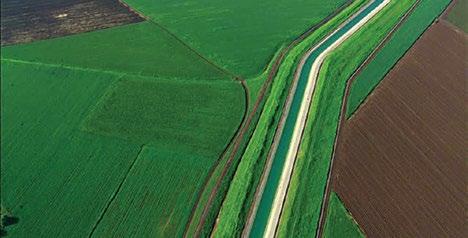
• 24 new products were brought to Israel in 1980, 98 in 1986, and today’s number is 300.
• Israel supplies 60-70% of the European spice market, 32 types of herbs (it has no direct competitors), and 200 species of flowers (third in the world). Tomato seeds producing 2-metre-high bushes that can branch up to 400 metres, are exported as well.
76% OF ISRAELI AGRICULTURAL PRODUCE IS SOLD IN THE EUROPEAN UNION, WHICH POINTS TO ITS HIGH QUALITY.
• Israel is a large mango and avocado exporter. 40 varieties of mangoes are grown, and one dunam (roughly 1,000 square metres) can grow up to 3 tons. Centenarian dominion of oranges is now taken over by lime, pomelo and kumquat (Chinese orange), respectively.
• Breeders cultivate seedless and black watermelons, saucer-shaped zucchini, red bananas, cold-resistant avocados, early grapes, watermelon and pumpkin trees and hanging melons.
• Cherry tomatoes were created by Israeli experts. Only Israel produces its seeds.
• Israel also created the melon “cage”, which is popular in Europe, as well as non-seasonal grapes and fruits.
• Strawberries are grown in "hanging gardens" that function like automated factories with climate control and drip irrigation systems.
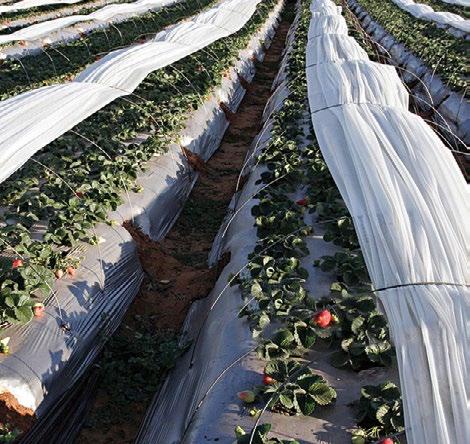
85 VOYAGER 6/2017
ISRAEL IS A LEADER IN SOLAR ENERGY DEVELOPMENT. THE COUNTRY HAS THE LEADING POSITION IN THE WORLD IN TERMS OF RATE OF SOLAR ENERGY USAGE. SOLAR BATTERIES ARE USED IN MORE THAN 85% OF FARMS.
AGRICULTURAL PRODUCTS COMPRISE 5% OF GDP AND 5.6% OF THE TOTAL EXPORTS. 50,000 PEOPLE ARE EMPLOYED IN THIS FIELD (INCLUDING FOREIGNERS AND SEASONAL WORKERS), WHICH IS 2% OF THE COUNTRY'S WORKERS.
Young people from kibbutz were sent to Europe to study, advanced technologies were introduced, and unique tools and methods were invented that are now sold all over the world. Israel harvests its crops two or three times per year.
This country is a world leader in exporting fresh produce and agricultural technologies. The sector is fully computerized. Greenhouses are being built, and huge water reservoirs supply dry regions. The main produce includes zucchini, tomatoes, cucumbers, peppers, grapes, strawberries, bananas, avocados, kiwi, mangoes, citrus fruit, peaches, cereals, flowers, and cotton. Since 1948, the tomato harvest has increased 17 fold, cucumber 8 fold, potato 20 fold, beef 60 fold, and dairy products 16 fold.
Stretched grid color above plants increases the volume of fruit. Different cultures react to different colors of net. This discovery has been introduced in many countries.
Israel has innovatively tackled crop resistance without harmful chemicals. The EU discourages air transportation of produce because it is expensive. Israeli scientists have created species that can be stored for a long time without pesticides and retain moisture.

"WE RETURN WATER TO NATURE WITH LOVE"
Israel's agricultural miracle was created by intellectuals - drip irrigation, water treatment and water reuse – has resulted in three-quarters of the country’s wastewater being cleaned and used to irrigate 40% of the land. In 1987, the world's largest water treatment plant, Saffron, was built.

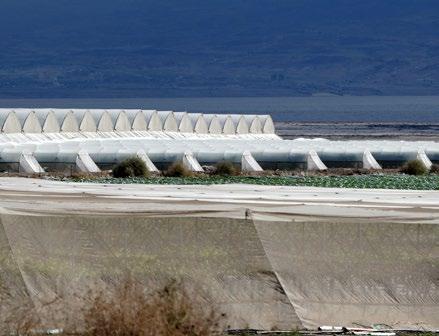
Water from this plant reaches the valleys of the Negev desert. The harvest has increased 5 fold in the last 30 years, though water consumption has not changed thanks to sub surface drip irrigation. The water consumption effectiveness rate is 85%. Infrastructure specialists say: "we return water to nature with love." Today, Israeli scientists are trying to increase the quantity of drinking water and want to lower the cost of fresh water.
FISHING IN THE DESERT – HEARING ABOUT THIS TECHNOLOGY, YOU MAY BE REMINDED OF THE BIBLE STORY ABOUT THE LOAVES AND FISHES. ISRAELI COMPANY GFA CLAIMS THAT YOU CAN BREED FISH EVERYWHERE, EVEN IN THE DESERT. THE SYSTEM IS NOT DEPENDENT ON ELECTRICITY AND WATER AVAILABILITY. SPECIALLY-BRED BACTERIA CLEAN THE WATER, SO THERE IS NO NEED TO CHANGE THE WATER IN THE RESERVOIR.
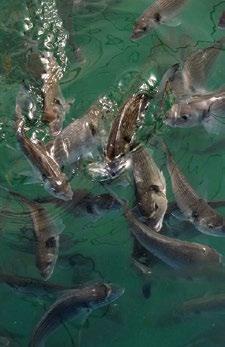
ECONOMIC 86 VOYAGER 6/2017
FACTS
• Israeli farmers can change the taste of fruits and vegetables and neutralize or enhance taste through hybridization and natural inoculation rather than via genetic modification.

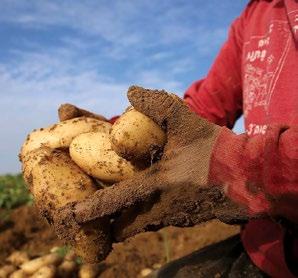

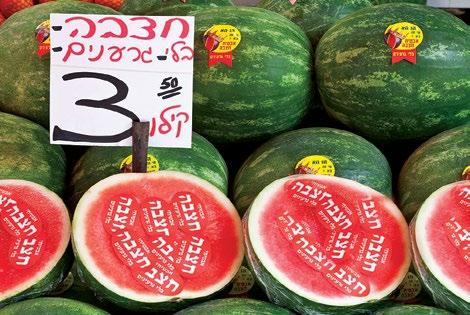

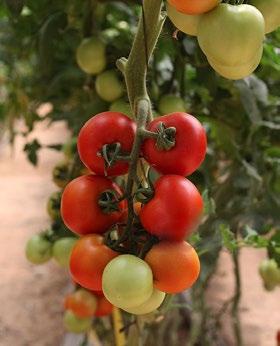
• Produce is classified by photo technology and computers. 32 photos of the produce are taken, and a computer determines the size, maturity, degree of damage etc.
• Dates and almonds are harvested via a special combination method.
• State subsidies to farmers represent up to 40% of purchased production - irrigation systems, harvesting equipment and software don’t cost much for farmers.
• A special machine harvests grapes; the loss is only 1-1.5% (hand picking – 10%).
• Hen oviposition is improved by use of colorful toys. Toy hens are hanged in the hen houses so that chickens peck dolls instead of fellow hens, hence fewer hens die and more eggs are produced.
COWS TAKE COLD SHOWERS. THIS "SHOWER" INCREASES THEIR APPETITE AND IMPROVES YIELDS. 1 COW IN ISRAEL GIVES 12.5 TONS OF MILK PER YEAR (GERMANY – 8.5-9 TONS, THE UNITED STATES - 10 TONS)
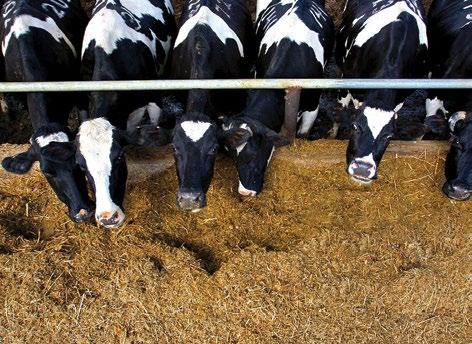
• Insect control is based on selective methods that combat only harmful insects and microorganisms, while useful ones are multiplied. Special oils are used for this purpose.
The cherry tomato variety Tomaccio bears a small fruit that weighs 10-30g and is extremely durable. This tomato was developed in 1973 by the scientists of the Hebrew University via project Hazera Genetics. The goal was to slow the maturing of tomatoes in a hot climate. Scientists identified a genetic combination that helps slow ripening and developed a method to use the genes to develop cherry tomatoes.
TO IMPROVE THE STORAGE LONGEVITY OF POTATOES, OILS ARE USED ON SPROUTS.
87 VOYAGER 6/2017
EAT, DRINK, PRAY
Restaurant Machneyuda opened in Jerusalem 7 years ago, close to the market with similar name-Mahane Yehuda. The founding 3 chefs are now celebrities. Their venture was pretty risky, since investors thought that the place is not suitable for a high-class restaurant. Mahane Yehuda market was not considered to be a nice place – it closed down in the evening, leaving behind empty stalls and rotten vegetables scattered on the floor. Despite this circumstance, chefs Assaf Grani, Yossi Elad and Uri Navon insisted on opening Machneyuda on that location. The restaurant became phenomenally successful.
Even after seven years, customers are prepared to stand in line for hours to obtain a table, which only comes free occasionally. Despite the princely prices, the restaurant is full for both lunch and dinner.
If you want to dine here, you either have to reserve a table at least two weeks in advance, or share the fate of people in the queue.
Diners come here even from Tel Aviv. In seven years, the restaurant has opened four additional restaurants in Jerusalem, two in London and its own catering company.
All restaurants opened by this chef have their own style, though Machneyuda is still the most important due to the unique, lively and interesting atmosphere.
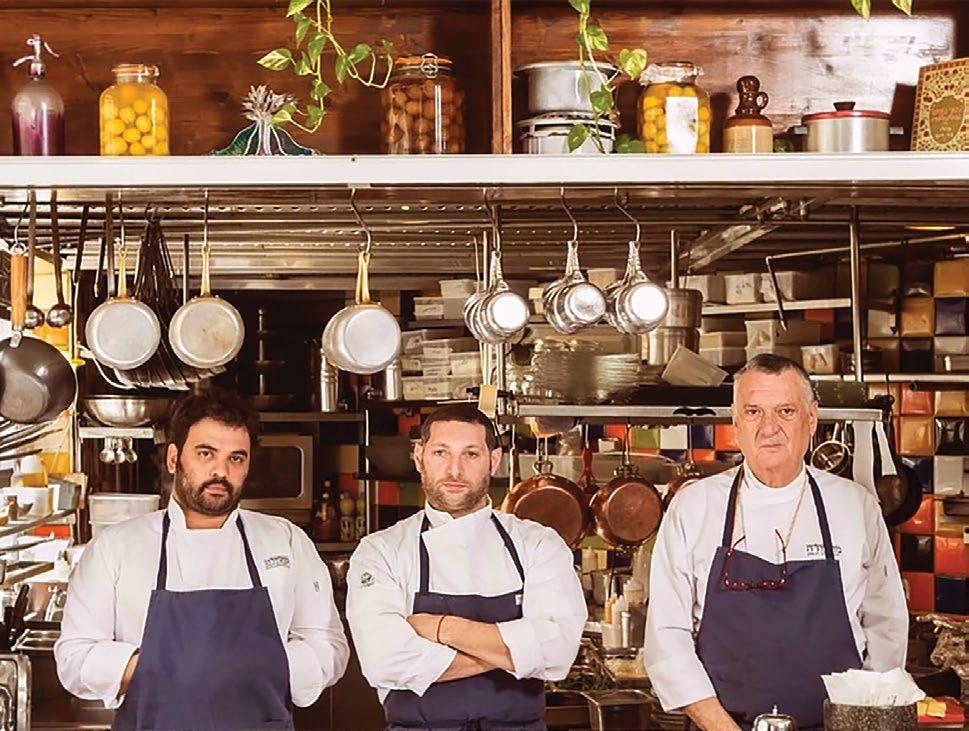
CHIEF
SALOME DADUNASHVILI
88 VOYAGER 6/2017
A girl who looked like Amy Winehouse looked at me critically; interview or no interview, a table for three in Machneyuda, with no reservations – that’s the holy of holies. I don’t know what affected her, perhaps my flu-suffering nose, but her look softened and “Amy” started looking at her book. The final verdict was: “I can’t sit you by the bar, a table is available only for 2 hours, wait here for now”.
Machneyuda is very narrow. That’s good because it is always interesting to see what the other patrons are having. We didn’t even dream of sitting by the bar, since that’s where you can see how Chef Yossi Elad does his magic. I was to interview him later. I did sit close to wonderful vegetables, tiny potatoes and carrots that arrived in the restaurant from the morning market. Vegetable gazing is a delightful way to spend your time while waiting for a meal.
The restaurant filled up right after opening and it became noisy. The joy of waiting for tasty food was accompanied by happy personnel and the smell of fresh produce in wooden boxes. More and more boxes were brought in…I started to think that there wouldn’t be any space left for the people, though nobody seemed to be worried about that: waiters and cooks were dancing. Guests sat contently, preparing to dance as well.
THE NEXT TWO HOURS WERE INCREDIBLE FOR MY TASTE BUDS, WHICH BEGAN A DANCE OF THEIR OWN, ALONG WITH THE WAITERS, COOKS AND DINERS. THE FOOD WAS DAZZLINGLY GOOD. I TRIED TO GUESS THE TASTE, AS IF IT WERE AN AROMA OF SOMETHING I’D KNOWN, BUT THE PLEASURE WAS SO IMMENSE THAT THE BRAIN REFUSED TO THINK LOGICALLY.
LEMON TART THAT I TASTED ON THAT COLD DAY IN THE CORNER OF JERUSALEM MARKET IS THE BEST THING THAT HAS RESULTED FROM THE 1000-YEAR RELATIONSHIP BETWEEN A MAN AND A LEMON.
I had a wonderful salad with tahini and goose breast and amazing fish, while the famous Machneyuda polenta with truffles was the pinnacle of taste. And when I thought that I’d tasted everything, they brought the dessert. What can I say?! The lemon tart that I tasted on that cold day in the corner of Jerusalem market was the best thing that has resulted from the 1,000-year relationship between man and lemons. I don’t even mention the cheesecake. I will regret till the day I die that I could not finish that one last piece.
It is perfectly understandable that people are willing to spend hours in line, drive for an hour, or fly for five hours to go to Machneyuda. It is a real miracle, which seems effortlessly performed by the dancing people.
Yossi Elad appeared at my table, like a big, gentle and sad storm cloud. He listened to my compliments with a polite smile, though I could tell he was pleased.
Why did you decide to open a restaurant here, since this market was not a popular place in Jerusalem at that time?
That’s true. We wanted to open a restaurant that was located close to the ingredients. We wanted to supply fresh produce daily and prepare food from the ingredients we’d find in the market. It was difficult to fulfil that idea.

Now this is a restaurant located behind the second stall in market, where people dance until the morning. There was nothing here then, except the traders. We had to fight for our idea, which turned out to be fruitful. We helped the market grow and the market helped us grow.
The food that you prepare… what can we call it? Where do you get the inspiration?

This is cuisine from all the countries that people left to come to Israel. My mother is Jewish and my father is Kurd, so I’ve been eat-

89 VOYAGER 6/2017
ing Jewish, Kurd, Lebanese, Arabic, and Turkish food since childhood. These dishes unite us. Have you heard about the humus diplomacy? People who live here have more things in common than things to fight over. We unite everything and create something new. Diners dance here till 2 in the morning every night, not only because they ate well but because we create an environment that unites people.
Everybody does seem very pleased...
Yes, that’s true. Robert de Niro, Madonna, U2 and many celebrities have been here. Everybody sits side by side, the produce is brought from the market and everybody dances tougher. This is our concept.
There are more religious regulations in Jerusalem than in Tel Aviv, though your restaurant does not take them into account?
Yes, that’s true. We want to be free from any religion. People of all kinds of backgrounds work here. We’re chefs first and foremost and coming up with new dishes is our life. We can’t refuse any ingredients-that would limit our scope.
EVERYBODY HAS FREEDOM OF CHOICE. THIS IS OUR VERSION: WE ARE INTERESTED IN EVERY CUISINE. WE HAVE A VERY POPULAR KHACHAPURI NEARBY. THAT’S YOUR NATIONAL DISH. I LIKE IT VERY MUCH. I HAVE TASTED OTHER GEORGIAN DISHES AS WELL AND ONE DAY I MIGHT COME UP WITH SOMETHING INSPIRED BY A GEORGIAN TASTE. THE WORLD IS BIG AND DIVERSE.
THE NEW ISRAELI CUISINE

In the last few years, Israeli chefs have managed to create an independent phenomenon called the new Israeli cuisine.


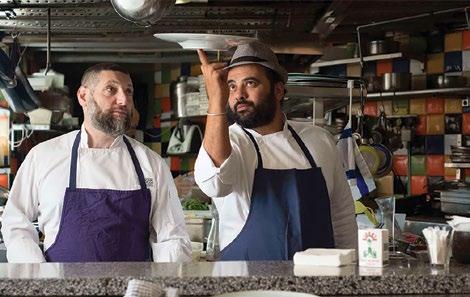

The new cuisine does not take into consideration religious restrictions, thus food is prepared from any ingredient; the menu is not kosher. Vegetable dishes are the most popular. The cooking is elevated to an art form, so don’t be surprised when an ordinary, trivial cauliflower suddenly turns into a real culinary discovery.
The new Israeli cuisine is as diverse as the cultures that have gathered in this land. People who arrived in Israel from all over the world brought with them the culinary traditions of their own countries and mixed it with the culinary diversity that characterized the Middle East.
Meze is a traditional dish that is offered in any traditional restaurant. It is colorful and interesting. It is definitely worth trying, because then you can value the chef’s different interpretations.
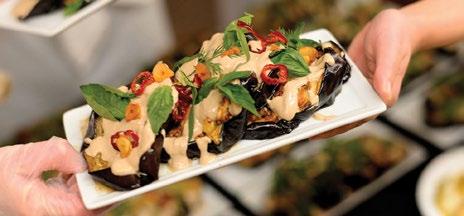
Traditionally, many small dishes are placed on the table, along with falafel and pita. All the ingredients, be they yogurt or pickle salad, eggplant with tomatoes, smoked eggplant paste or the famous humus, form an ideal combination with pita and falafel.

CHIEF
90 VOYAGER 6/2017
THE NEW GENERATION OF CHEFS FROM ISRAEL OFFER THE WORLD A NOVEL APPROACH TO FOOD AND IT SEEMS THAT THE WORLD IS SATISFIED. THE SIMPLEST, BUT AT THE SAME TIME, SURPRISINGLY SOPHISTICATED DISHES ARE PREPARED FROM THE FRESH INGREDIENTS AND VEGETABLES ARE OF PARAMOUNT IMPORTANCE. MORE AND MORE TOURISTS ARRIVE IN ISRAEL TO VISIT NOT ONLY THE HISTORIC SIGHTS, BUT WELL-KNOWN RESTAURANTS AS WELL.
EYAL SHANI
Celebrity chef Eyal Shani is considered a pioneer of the new Israeli cuisine. He has a couple of restaurants in Tel Aviv, where reservations are necessary. His restaurants, The Salon, Tzfon Abraxas and the more accessible Miznon, are always full.

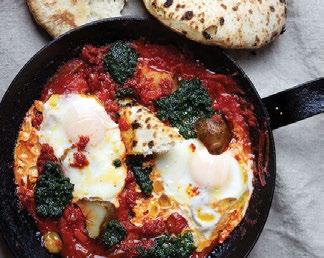
Eyal Shani has a free and creative style. All of his restaurants have an open kitchen where miracles happen. The chef is not above cutting the vegetables at the bar counter and chatting with the clients.
His trademark is cauliflower baked on coals, served wrapped in brown paper. Eyal Shani restaurants like to present food in a hastily wrapped paper, as if a trader has passed a freshly prepared dish from his counter; however, the quality that these restaurants offer is truly exclusive.
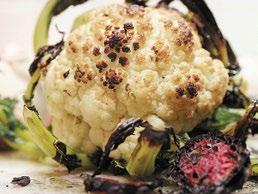
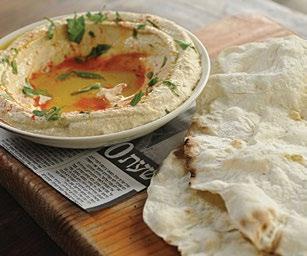
YOTAM OTTOLENGHI
Yotam Ottolenghi was one of the first to promote the new Israeli cuisine cooking. He was born in Jerusalem, into a family of teachers. He dedicated his life to studying literature and became interested in cooking later, when he moved to Amsterdam and London to study.
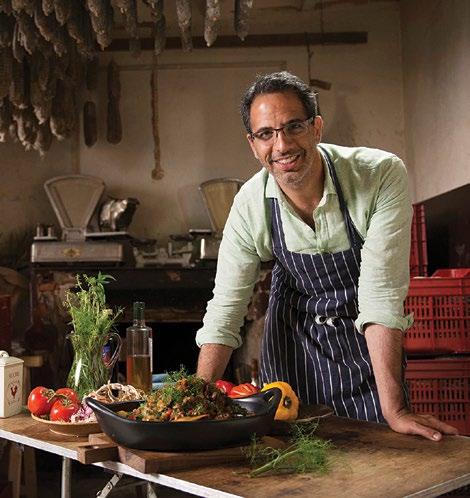
After spending six months in London's prestigious culinary school, Le Cordon Bleu, he began working in many restaurants and soon he and his partners Sammi Tamimi and Noam Bar opened a “Gourmet" store in London, which became very popular.

Today Ottolenghi is the author of several books and a TV show host. You have to reserve a table in his restaurant long in advance. Ottolenghi has had a grand love affair with vegetables. His dishes are fascinating, interesting, bold and saturated with all the flavors of the Middle East.
Despite recognition as a vegetarian guru, he loves to work with meat and fish, which is why he sometimes upsets vegetarians and has to defend himself. His Nopi restaurant is one of the most popular destinations in London.
91 VOYAGER 6/2017
ISRAELI CUISINE IS AS DIVERSE AS ITS POPULATION. THE PHENOMENON OF ISRAELI CUISINE STARTED JUST 60 YEARS AGO AND IS STILL EVOLVING BASED ON LOCAL CULINARY TRADITIONS AND INGREDIENTS. MANY PEOPLE FROM WESTERN EUROPE, NORTH AFRICA, THE MIDDLE EAST AND CIS COUNTRIES HAVE COME TO ISRAEL OVER THE YEARS, BRINGING OLD JEWISH COOKING TRADITIONS PRESERVED FOR CENTURIES.

TAHINI
Tahini is an Arabic sauce made from roasted sesame seeds. The first mention of tahini dates from 4,000 years ago. Today, all cuisines, including Chinese, use tahini. It is a component of many Israeli dishes.
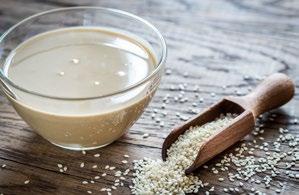
HUMUS
Humus is a pea paste first mentioned in a 13th century recipe from Cairo. Peas are boiled, pureed and raw tahini is added. Humus is served with olive oil, parsley and spices. It is very popular in Israel, since the strict religious regulations allow its consumption with meat and dairy.

Traditionally, it can also be offered as a separate appetizer, with various vegetables or wrapped in pita. It can be added to other dishes as a dressing.
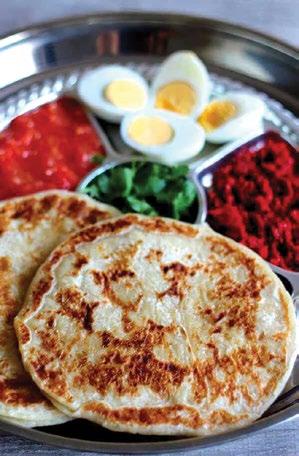
Canned humus is sold in grocery stores, but fresh humus is much tastier.
FALAFEL
Israel is a Mediterranean and Western-type country that reacts to everything that goes on in the wider world and incorporates the latest trends in culinary fashion. Mediterranean cuisine, influenced by Israeli cuisine, is rich in vegetables and fruits, olive oil, fish, greens and legumes. Part of the Israeli population is Arabic, and the Arabic influence is apparent in many dishes, including humus, tahini, and falafel.
Ashkenazi (Eastern European) and Sephardic traditional cuisine combines in Israel. Sephardic Jews lived mostly in Spain, Italy and North Africa for hundreds of years and have introduced exotic spices and vegetable cultures into a local cuisine such as couscous, mafrum, shakshouka and a khraime. Mizrachi Jews, who migrated from the Middle East, introduced Arabic, Persian, Yemenite and Ottoman cuisine trends. The Ashkenazy brought with them many traditional recipes such as for bagels, Regel krusha and matzah brei.
Falafel is made of varieties of beans, minced and fried. The dish has Egyptian roots. Falafel is a staple of the Oriental kitchen due to its crisp coating and distinctive flavors. It is enjoyed wrapped in pita, with lettuce leaves and pickles, dressed with tahini or humus. Falafel is consumed not only during Lent but sometimes several times a day, all season long.
KIBBEH
Kibbeh comes from Ottoman cuisine. Fried mince meat and bulgur (cracked wheat) are formed into elongated balls and enjoyed in soup and with vegetables.
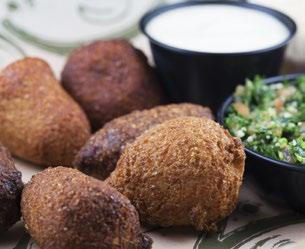
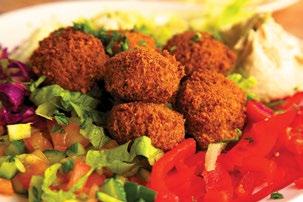
MALAWACH
Malawach was brought to Israel by Yemeni Jewish immigrants. It is a thin, fried puff pastry, usually served with a chopped tomato, shredded cheese and adjika.
Schug is a sauce made with addition of green or red jalapeno peppers and is amazingly fragrant.
92 VOYAGER 6/2017
SHAKSHOUKA
Shakshuka is a popular breakfast dish of fried eggs, tomato, green onion and peppers. Individual portions are served in cast iron pans.
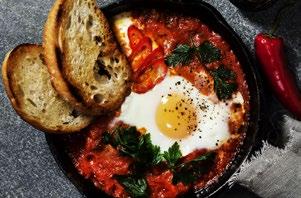
North African immigrants brought this dish with them to Israel. You can start your morning with this rich dish.
SABICH
Sabich sandwiches are among the stars of Israeli street cuisine, brought by Iraqi Jews. At first, they were served as a Saturday morning breakfast. Since religious regulations prohibit cooking breakfast in the morning, sabich was a perfect choice.
The following ingredients were placed in pre-cut pita bread: fried eggplant, boiled potatoes, boiled eggs, tahini sauce, fresh herbs and humus. This sandwich has been one of the most popular elements of Israeli cuisine since 1960, and the best eateries serving it attract long lines of customers, both local and travelers.

SHAWARMA
CHOLENT
Cholent is a traditional Jewish dish. Meat and other ingredients are simmered on Friday night on a low heat (sometimes for 12 hours) to eat for lunch on Saturday.
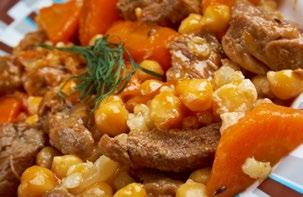
This centuries-old dish and its recipe is subject to a regulation according to which the Jewish community cannot cook on Saturdays.
Many traditional Jewish families serve it as Saturday's main dish and then eat it during religious rituals, though secular families enjoy cholent as well. The dish is served at wedding receptions and during religious holiday feasts.
GEFILTE FISH
Gefilte is a fish meal brought to the Israeli kitchen by Ashkenazi Jews from Eastern Europe. This is a legendary cold appetizer made of a variety of white fish fillets.

Israeli Shawarma is made of lamb or turkey meat. A piece of meat is vertically attached to a rotating spit and cooks slowly. The outer layer is cut for each plate and placed in pita or wrapped in lavash with vegetables, tahini, humus or chips. It is served with pickles.
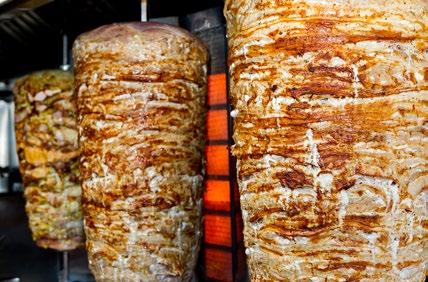

KOSHER CUISINE
Kosher cuisine means separate cooking and consumption of dairy and meat produce. At least two hours should pass between meals.
Pork is forbidden, since only animal species that both chew the cud and have cloven hooves are allowed. Poultry is allowed too. Only fish with scales can be consumed, thus forbidding seafood.
BABA GHANOUSH
Baba Ghanoush is a dish influenced by Ottoman cuisine. Smoked eggplant with lemon juice or mayonnaise is the main ingredient of this appetizer.
Muslim religious regulations are similar to Jewish dietary restrictions, but everything that is haram (religiously permissible for Muslims) is not kosher, although everything kosher is haram. This topic is a subject of many jokes in Israel. Similar restrictions apply to food in restaurants. Tel Aviv's popular new restaurants do not follow these instructions.
93 VOYAGER 6/2017 GASTRONOMY
RESEARCH OF ISRAEL'S TRADITIONAL PASTRY AND BAKED GOODS LEADS US TO HISTORY AND BIBLICAL LEGENDS. EACH PASTRY IS NOT ONLY A SWEET DELIGHT IN THIS COUNTRY BUT ALSO A SYMBOL OF A RELIGIOUS HOLIDAY AND CARRIES A DEEPER MEANING.
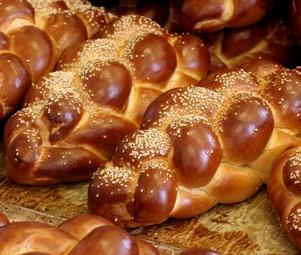
CHALLAH
Challah is a delicious traditional rolled bread, crunchy on the outside and sweet and airy on the inside.
MATZA
Matzo is a flatbread made of salt, wheat flour and water. Matzo flour is an integral part of Jewish rituals. Jews eat Matzo during Passover because it is forbidden to eat leavened bread.
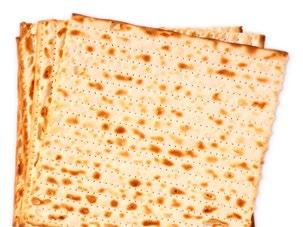
Matzo is sprinkled with boiling water, eggs are added to the mixture, then the bread is baked and enjoyed. Matzo can be eaten in various ways, for example used instead of rice with meat and vegetable dishes and for baking cakes and pies.
CHAROSET
Jewish families traditionally prepare charoset for Passover. The apple-walnut paste of honey and a variety of dried fruit is spread on matzo. There are a few recipes including a variety of dried apples, walnuts and almonds.

Traditionally, it is enjoyed on the onset of the Sabbath ritual or other holiday feasts. It is made without dairy products. A small piece of dough brought as an offering to the temple was also called challah.
It was baked and consumed by priestsonly they had the right to do so
BOUREKAS
This delicious pie is made of puff pastry. Its contents are diverse and vary depending on the chef’s country of origin. Bourekas come in diverse shapes and sizes.
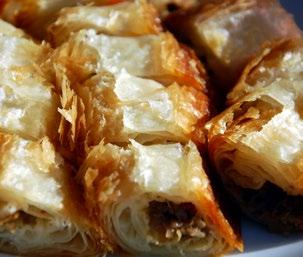
They’re stuffed with cheese, potato, mushrooms and spinach. Burekas’ shapes give a hint on their content: square ones have potato filling, and round ones have cheese.
LEKACH
Honey cake lekach is the main symbol of the Hebrew New Year (Rosh Hashanah). It is believed that if there is plenty of this cake on the table, next year will be a good one. In addition to honey cakes and fragrant spices, tea or coffee is added to achieve an impressive dark color.
PITA
Pita is a double layered “pocket” bread found in Middle Eastern and Mediterranean traditional cuisine. It is sometimes baked without additional ingredients, and sometimes sesame or Roman coriander seeds are added.
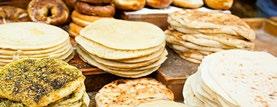

BABKA

Pita bread is a very convenient snack. It may be dipped in different sauces. Laffa is a soft, pita-like bread used to contain meat or falafel.
Babka is made in many European countries, but the Israeli one is special – it is a rolled puff pastry with chocolate and cinnamon filling. Babka is sprinkled with powdered sugar or chocolate drops. In Israel, it is often called Shmarim Cake, meaning ‘yeast cake’.
94 VOYAGER 6/2017
Pita has different culinary functions – it can hold a falafel and all kinds of meat or salads.
SUFGANIYOT
Sufganiyot is served during Hanukkah. It is prepared with a lot of vegetable oil, which is considered a symbol of Hanukkah, and this is the main ingredient in holiday dishes.
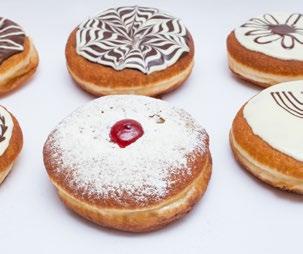
According to legend, the Hanukkah miracle happened when a little amount of olive oil burned for eight days to illuminate the temple.
KUGEL YERUSHALMI
Jerusalem Kugel is an Israeli version of a traditional English pudding, garnished with caramelized sugar and black pepper. It was prepared by the Ashkenazi Jews.

Kugel is baked on a very low heat all night long and served on Saturday morning after visiting the synagogue.
RUGELACH
Rugelach was brought by Ashkenazi Jews and is one of the few Israeli pastries not connected to any holiday. However, these little curls of dough adorn every feast.
You may enjoy Rugelach in any season, on any day. It is especially popular on Saturdays and Hanukkah. Traditionally, rugelach is made from dough with sour cream, but cottage cheese or melted cheese dough have become popular recently.
The filling includes raisins, walnuts, poppy seeds, cinnamon, chocolate or jam. Rugelach may even be an ancestor of croissants.
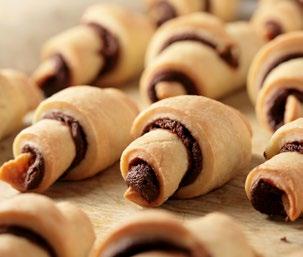
HAMANTASCHEN
TU BI’SHVAT CAKE
This delicious sweet pastry is made for another Jewish holiday, Tu bi'Shvat (New Year of Trees). The Bible tells us that the trees, which saw how God gave the New Year, asked the Lord to establish such a celebration for them too. It is an environmental awareness day in modern Israel and many trees are planted on Tu bi'Shvat, followed by the consumption of fresh and dried fruit snacks. Dried fruit is also used for baking traditional cakes.
KANAFEH
Kanafeh holds its own among the world's most wonderful and delicious desserts. It is made of cheese and dough covered with sweet syrup. It is sprinkled with rose water or orange blossom extract and a few drops of crushed pistachios.
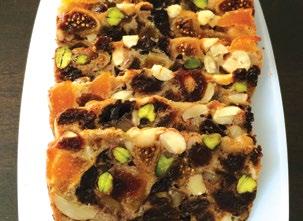
Kanafeh has a crisp surface, making it a desirable snack. It is mainly prepared by Arabs living in the country and so is considered a dessert of Arabic origin.

HALVAH
Halvah is an ideal dessert for vegans. Israeli Halvah includes tahini, glucose, sugar, vanilla and flower root extracts, making this recipe unique. Visit Halva Kingdom in Machane Yehuda market for the best halvah in Jerusalem.
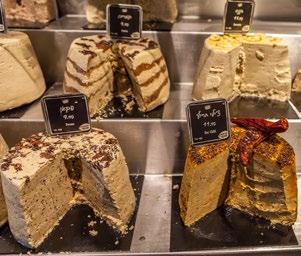
Halva Kingdom prepares halvah according to the Moroccan recipe.
This triangular cake is a necessary attribute of Purim celebration. It has poppy seeds, nuts or fruit filling. Hamantaschen means ‘pockets of Amman’, and its second name, ‘oznei Amman’ means ‘Amman’s ears’. According to ancient tradition, criminals had their ears cut off before hanging. The Persian prince Amman was punished this way, and the bible tells us that he tried to kill all Jews living in the Persian Empire. Purim celebrates the Jewish people that escaped this fate.
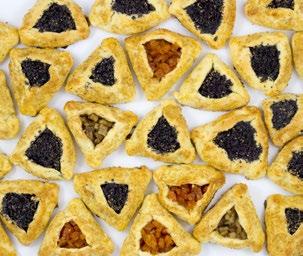
95 VOYAGER 6/2017 GASTRONOMY
"L'CHAIM" TO LIFE!
The history of wine in Israel can be traced back to biblical times. The Torah and Talmud are full of oenological references. Wine is the most frequently mentioned beverage in the Torah (141 times). The story of Noah is the first to mention wine. Following the flood, Noah was the first to plant a vineyard, make wine and experience intoxication. (Gen. 9: 20-21).
WHEN THE JEWS LEFT EGYPT, MOSES SENT SPIES AHEAD AND THEY BROUGHT HIM THE VINE AS A PROOF THAT THE LAND OF ISRAEL WAS ALREADY NEAR. GRAPEVINES ARE MENTIONED SPECIFICALLY IN THE BLESSING OF ISRAEL BY GOD. GRAPES ARE ONE OF THE SEVEN BLESSED FRUITS OF THE LAND OF ISRAEL.

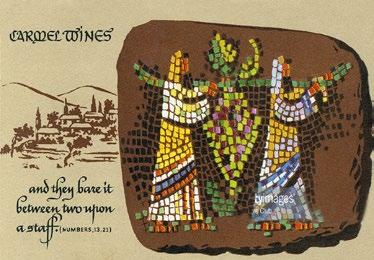
TEA SKHIERELI
A REAL REVOLUTION HAS HAPPENED IN ISRAELI WINE MAKING IN THE LAST 15 YEARS. THE PRODUCT RANGE HAS CHANGED COMPLETELY; WINE MAKING HAS GAINED RESONANCE WITH THE PUBLIC.

Wine was exported from Israel to Egypt and was the favorite drink of the pharaohs. In the 7th century, when the Arabs conquered Palestine, wine making was banned. It was restored in Israel only in the 19th century.
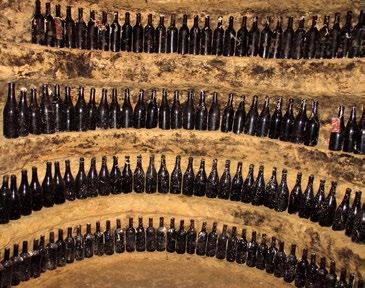
The Jewish Settlement carried out by Baron Edmond de Rothschild in the 19th century revived wine making in Israel. In the Baron's view, wine would become the economic support of the new settlers. Rothschild had two goals: to revive Israel and wine making (his family still owns wine businesses - Chateau Lafitte and Mouton-Rothschild).
In 1882, he founded the Carmel-Mizrahi, which dominated the Israeli wine industry until the 1990s. To date, Israel's oldest wine maker, Carmel Winery is the largest wine producer in the country (75%), exporting to 40 countries.
IN 2016, ISRAELI WINE EXPORTS TO MORE THAN 40 COUNTRIES IN FIVE CONTINENTS AMOUNTED TO $40 MILLION. TEN YEARS AGO, THIS FIGURE WAS ONLY $8 MILLION. THE MAIN EXPORT COUNTRIES ARE THE US, FRANCE, GREAT BRITAIN, CANADA, POLAND, GERMANY, AND THE NETHERLANDS
WINE
Fragment of a synagogue facade. IV-V AD; Capernaum, Galilee
Carmel wines’ logo depicts biblical scenes.
96 VOYAGER 6/2017
„ THE WINE REVOLUTION “
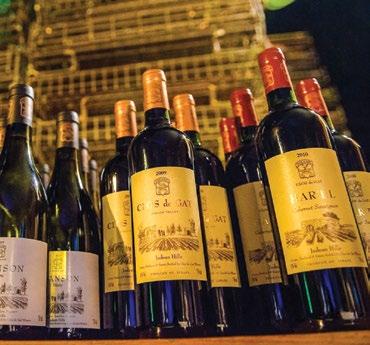
Until the 1960s, Jewish wines were not properly appreciated. They were perceived as low-quality and very sweet. The turning point came in the 1960s and 1970s, and Israel became a leading global wine making.
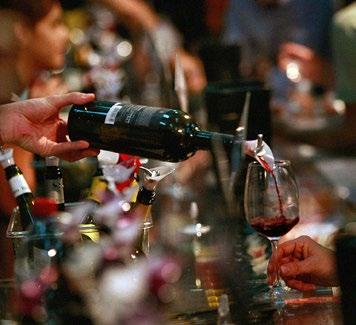
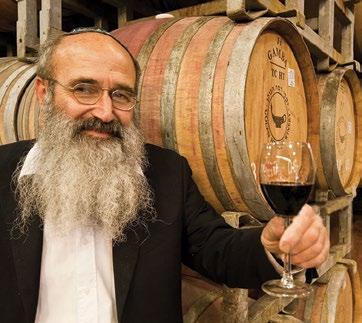
The so-called Wine Revolution (1972) is directly related to Israel’s victory in the 1967 Six-Day War, which brought the country into possession of the Golan Heights. University of California Professor Houpe, who visited Israel at that time, expressed the view that the volcanic, basalt soil of Golan would be ideal for winemaking.
Indeed, the Golan Heights Winery was much admired for its new products (1983) and completely changed the face of Israeli winemaking. The winery sent specialists to study in California, imported vine seedlings, and improved technologies. They realized that the old varieties (Grenache, Malbec, Semione) did not adapt well to Israel's environment and started cultivating Cabernet Sauvignon, Merlot, Chardonnay and other French grape varieties.
„BOUTIQUE WINEMAKING“
Along with large-scale production in Israel, young enthusiasts have developed small-scale, high-quality boutique family wineries. Wine from these terroirs with their unique combination of soil, climate and geographical location is sold across all continents.
Today, the small wineries continue to develop. Driven by competition, the wine makers have adopted new technologies, are consulting experienced specialists, and study cool mountain soils. If previously most Israeli wines were sweet dessert wines, currently dry wines prevail and attract the interest of wine lovers from all around the world.
„THE TOP 5 BOUTIQUE WINERIES“:
1. Margalit Winery, Caesarea/Upper Galillee
2. Clos de Gat, Ayalon Valley
3. Domaine Du Castel, Judean Hills
4. Katlav, Judean Hills
5. Tzora, Judean Hills
THE MARKET SHARE OF SWEET WINE IS 20%, WHEREAS IN 1982 IT WAS 86%.
WINE PRODUCTION AND CONSUMPTION SAW A GREAT IMPACT FROM THE LIBERALIZATION OF THE ECONOMY AND WESTERNIZATION OF SOCIETY IN ISRAEL, WHICH BEGAN IN 1970S AND PEAKED IN THE 1990S WITH THE HIGH-TECH BOOM AND IMPROVEMENT OF LIVING STANDARDS. A NEW CLASS OF CONNOISSEURS WAS FORMED, ESPECIALLY IN TEL AVIV.
IMPORTS CONTRIBUTE TO 20% OF TURNOVER. THESE ARE MAINLY ITALIAN, CHILEAN, ARGENTINE AND FRENCH WINES. PER CAPITA ANNUAL WINE CONSUMPTION IS 5 LITERS, BUT INTEREST IN DRY WINES KEEPS RISING DAILY.
63% OF WINE CONSUMED IN ISRAEL IS RED, 16% IS WHITE, 8% IS SPARKLING, 2% IS ROSÉ, 11% IS MUSCAT OR SIMILAR SWEET DESSERT WINES.
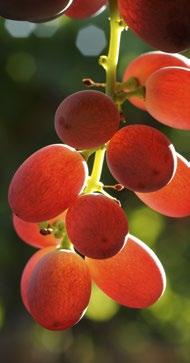
GRAPE VARIETIES
Traditional varieties like Carignan (17% of total production) and Colombard (4%) are used to produce relatively cheap wine. Expensive wines are made from Bordeaux and Mediterranean varieties such as Cabernet Sauvignon (18%), Merlot (13%), Chardonnay (3%), Sauvignon Blanc (2%), Petit Verdi (5%), Syrah (7%), and Muscat of Alexandria (4%).
In recent years, wines made from Muscat Canelli, White Riesling, Pinot Noir, Tempranillo, Barbera, and Nebbiolo have become especially popular.
97 VOYAGER 6/2017
KOSHER WINE
Certain rules must be respected when making Kosher wine. It can be made only by religious Jews who observe Shabbat.
They do not use any animal ingredients, no harvest is collected for three years after the grape has been planted, and non-believers must not touch the wine press or even the wine barrel.
Kosher wine can be sweet as well as dry, and can be made even in non-kosher factories.
THE TOTAL AREA OF VINEYARDS IN ISRAEL IS NOT THAT LARGE AT 5,500 HECTARES. MOST OF THIS AREA HAS A MEDITERRANEAN CLIMATE, WITH LONG HOT SUMMERS AND SHORT WINTERS. HISTORICAL AUTOCHTHONOUS VARIETIES HAVE NOT BEEN PRESERVED, AS OPPOSED TO IN TURKEY AND LEBANON.


THE HARVEST BEGINS IN AUGUST AND CONTINUOUS UNTIL THE BEGINNING OF OCTOBER. GRAPES ARE HANDPICKED IN MANY OF THE VINEYARDS.


THE BEST HARVEST YEARS ARE: 2014, 2013, 2012, 2008, 2005, 2004, 2003, 2000, 1997, 1995, 1993, 1990, 1989, 1985, 1979, 1976.
WINE REGIONS
There is no controlled wine region system in Israel, but there are five major big territories, each divided into sub-regions.
GALILEE (Galil Region in Hebrew) – Galilee, the northern region, is the most suitable area for winemaking with its cool climate, high altitude and fertile, hard and dry soils with basalt. The region is divided into Upper and Lower Galilee, Tabor Mountain and the Golan Heights
SAMARIA (Shomron) – Samaria is located by the seaside, south of Haifa. Here lie the largest vineyards, including Carmel Mizrahi lands. Mediterranean winds and the Carmel mountain range result in the great fertility of this area.
SAMSON (Shimshon) – Samson, or Gush Dan, is the central coastal region between the Jerusalem mountains and the coast, including the Rishon Lezion and Rehovot plateaus. The local soils are rich with clay.
JUDEAN HILLS (Harey Yehuda) – The mountain region of Judea surrounds Jerusalem (including Judea and Samaria), it has an ideal altitude, optimal climate and soil rich with clay and limestone. It is known for sweet wines but in recent times has started making wines of various types.
NEGEV (Hanegev) – Negev is a semi-desert. Ten years ago, no one would have thought that this place would become a leading winemaking region, but it has, all due to its irrigation system.
Share of wine production by regions : GALILEE – 41; SAMSON –27; SHOMRON – 17; JUDEAN HILLS – 10; NEGEV – 5.
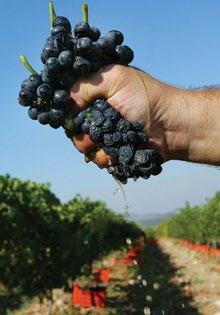
SHVO WINERY
Shvo vineyards are located in northern Israel, upper Galilee and Gush Halav at an altitude of 800 meters above sea level on mountain slopes. The Mediterranean wind, variable climate and bio fertilizers yield high-quality wine.
SHVO ADOM RED
This red wine is a mix of Syrah, Mourvedre, Barbera and Grenache grapes. Each variety gives the wine an outstanding and unique flavor that is fruity and woody with green notes. Price: 35$

SHVO CHENIN BLANC
This wine is fermented for 12 months. It is a dry, full bodied white wine, and its distinct taste has aromas of roasted pumpkin seeds, honey and walnut and a well-balanced natural sourness. Price: 35$

RECOMMENDATION
WINE
98 VOYAGER 6/2017
HERZL
The Herzl Brewery in Jerusalem is probably one of the most modest enterprises in this field in Israel. It was founded to compete with leading producers and for this purpose the brewers created a product with a distinctive taste in contrast with the more mainstream brands.
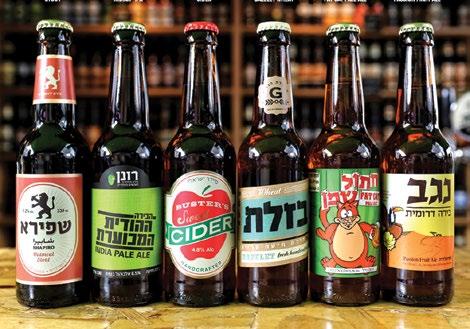
In the spring of 2016, the brewery stated that its beer is made from the same recipe as it was used in the times of the Christ.
Hasadna 5, Jerusalem
SHAPIRO
Shapiro beer, widely available in Jerusalem pubs and alcohol stores, is becoming popular in Tel-Aviv as well. Shapiro company produces pure beer without the use of aromatic additives such as orange peel and parsley. Jerusalem beer lovers appreciate this and are very proud of their local brand.
Beit Shemesh, Jerusalem
JEM’S BEER FACTORY
This enterprise started when its founder Jeremy gave up a job in the White House to pursue a long-held dream to return to Israel and started brewing beer there. Together with his partner, a lawyer, Dan, who also returned from the US, he opened a brewery that became successful through hard work, modern technology and most importantly, the love of beer.
Originally opened in the industrial district of Tel Aviv, this enterprise already has four new branches, and their products maintain the highest level of brewing quality and loyalty to cultural traditions.
COMMENTS
BEER BAZAAR (Shuk HaCarmel, Tel Aviv)

The BB TLV beer pub in the Carmel market is always full of young and older beer lovers. Beer Bazaar has a great choice of local and foreign beers.
GOLAN
This brewery uses fresh water from Golan streams in its production, which gives their beer a unique flavor. Archaeological studies confirm that this drink has been brewed in the Golan Heights since antiquity. The founders had this very goal – to restore ancient traditions – when they launched their brewery in 2006.
The local beer is served only on tap, without any preservatives or pasteurization.
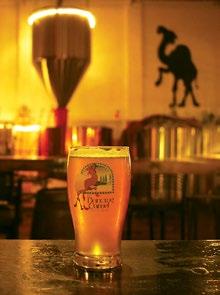
Rambam 1,
Tel
Aviv Yishkon st 36, Tel Aviv
PORTER AND SONS (Sarona, Tel Aviv)
Porter and Sons is located in Sarona market. It is reminiscent of a traditional English Pub and a great place to try 17 varieties of artisan beers. The sociable staff will gladly guide you through the maze of the beer varieties.
Ha’Arbaa st 14, Tel Aviv
THE DANCING CAMEL
The small Dancing Camel Brewing Company opened in 2005. It is the only brewery in Tel Aviv and is located in a former grain warehouse built in 1933. The owners aim to produce truly local beer, for which they use components that are characteristic of Israel in flavor and aroma. Each branded beer, with a distinct name for each variety, has such local flavours as date, honey or mint.
Hata’asiya 12, Tel Aviv
BEER
A LARGE RANGE OF BEERS IS PRODUCED AROUND THE COUNTRY. THESE INCLUDE:
Raoul Wallenberg st 20; Ramat Hachayal, Tel Aviv
99 VOYAGER 6/2017
MACCABIAH
Today, Israel is the Jewish intergovernmental center for sport. The Maccabiah Games (“Jewish Olympics”) have been held in Israel since 1932 – 20 years prior to the country’s accession to the NOC. The Georgian national team participates on a regular basis.
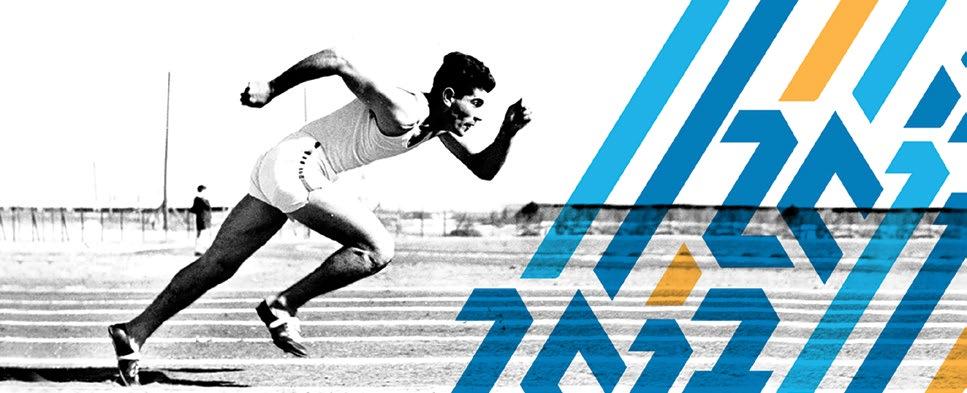
As in many other areas, Jews have chosen a different, original path in the development of sports. Arriving in modern Israel - especially Tel Aviv – you will definitely think that Israelis are the most faithful followers of a healthy lifestyle in the world. From early morning till late evening, you will meet people of all ages that are constantly working out on the streets and shores and have turned exercises into an integral part of their way of life.
This is especially surprising considering that the Jewish people were originally completely ignorant of sport. Jews have strongly rejected participation in the ancient Olympic Games and other sporting competitions because it meant performing sacrifices to the pagan gods. The capture by the Seleucid dynasty has further aggravated the situation of the Jews, who preached about the beauty of the human body and a healthy sporting cult. During the Roman Era, King Herod built several sports arenas in Judea but this made no mark on the general attitude of the people.
Even now, ultra-orthodox Jews perceive sports as Hellenistic heresy and strongly object to its popularization.
The first change in the viewpoint began in the medieval period. Maimonid repeated the antique thesis that a healthy spirit can only exist in a healthy body. From the XVIII century onwards, the first great Jewish athletes appeared. Dr. Uriel Simri recalls Daniel Mendoza, who was the favorite boxer of the then Prince of Wales. Mendoza was the undefeated English champion in the years 1792-95. He happened to be of Portuguese-Jewish descent.
An indelible mark was left in their respective sport disciplines by Lipman Pike, who became the first Jewish professional baseball player, and Canadian Luis Rubinstein, who won the unofficial figure skating championship in 1890.
Maimonid doctrine in the XX century was developed by Rabbi Avraham Yitzhak Cook, which led to the Macchabian movement and the establishment of sports associations. Before that, in 1898, Dr. Max Nordaum announced in Paris the necessity of "muscular Judaism". The first Jewish Gymnastics Club ("bar-kokhva") was founded in Berlin.
The first sporting disciplines where Jewish teams (under the name of Palestine) took part were football (the 1934 and 1938 World Cup qualifiers) and chess (international contests). The Palestinian Olympic Committee was founded in 1933, one year before Palestine hosted the first Maccabiah Games where 500 athletes from 23 countries participated. Three years later, the competition was held again, and this time called the “Alia Maccabiah Games” because most of the people that came from Europe decided to stay in their historical homeland!
The Maccabiah Games respect almost all of the rituals of the International Olympic Games - the pompous opening and closing ceremonies, the traditional parades and the "Maccabian village". International representation at the games is impressive; at the 19th Maccabiah Games, 76 nations sent delegations, and the US delegation totaled 1,106 athletes! Interestingly, athletes from Arab countries also initially attended the Maccabiah Games; however, the escalation of the political process not only led to a boycott by the Arabs but also Israel's inclusion in European regional sports associations.
In different years, various Olympic or world champions have participated in the Maccabiah Games. This includes the American swimmer and 33-time world-record holder Mark Spitz, who managed to win 10 gold medals at the Maccabiah Games before his triumph in the 1968 and 1972 games in Mexico and Munich (9 gold medals). He finished his career in Munich in protest at the anti-Israeli terrorist act. In 1985, the Maccabiah Games were officially opened by Spitz; in 2005, he was chosen to be a flagman for the US delegation.
SPORT
100 VOYAGER 6/2017
BIDZINA BARATASHVILI
CHESS
The number of Jewish players in the history of chess is so high that it could be considered a "Jewish sport". Wilhelm Steinitz, a Jew, was announced as the first world champion in chess in 1886; since then, his fellow believers have remained dominant in the sport.
Out of 14 world champions so far, 8 have been of Jewish origin: Steinitz, Lasker, Mikhail Butvinik, Michael Tull, Boris Spassky (from his mother’s side), Bobby Fischer (mother’s side), Garry Kasparov (Weinstein) and Vladimir Kramnik.
Jewish people didn’t invent chess; it originates from India. The game was first moved to Persia and later to Europe by Khazars and immediately came under Jewish protection.
The Spanish-born Jewish thinker Moshe Sparadi (1062-1106) named the art of chess as one of the seven sciences recommended to knights. The famous Jewish philosopher Moses Maimonid (1135-1204) forbade his compatriots from playing chess for money; this clearly demonstrates how widespread chess was among Jews.
This dominance in chess naturally led to the appearance of a specific form of anti-Semitism. Steinitz faced it, when he heard a defeated player say:
- You are not a chess player, you are a Jew!
- You are neither one, nor the other! – answered the champion.
Steinlitz later wrote a pamphlet: "My answer to anti-Semites in Vienna and everywhere else…” and a book titled "Jews in chess."
Alexander Alekhine, the world champion who lived in occupied Paris, published a letter in a newspaper in 1941 titled "Aryan and Jewish Chess", which devastated Steinitz, Lasker, Rubinstein, Yanovsky, Fine, Flor, Nimtsovich, Shlekhter and others. He, as a “true Ariel”, despised the Jewish style of playing and considered Lasker to be the last Jewish champion.
The apotheosis of absurdity occurred during the World XI Chess Olympiad incident when, just before the game with Israel, the captain of the Soviet national team Alexander Kotov "imagined" that Efim Geller and David Bronshtein could not play to “their full capacity”!
Kotov removed both Israelis from the list and himself lost to the Jewish master Aloni. That was the only game that the Soviet team lost that year. The era of the reign of Anatoli Karpov was also marked with scandalous developments.
• Wayward Jew Bobby Fischer refused to play with him and bowed to the title without a fight;
• Viktor Korchnoi got so tired of the pressure from officials that he immigrated to Switzerland;
• Finally, Weinstein’s turn came in the late autumn of 1984, when he competed under the name Garry Kasparov.
In January 1992, a Baku-based champion revealed the “leak” story carried out by the Soviet secret service, which made it a 0-5 score after 27 matches (the game went to 6). Kasparov then put stricter protection measures in place and won in three consecutive matches. Tired and exhausted, Karpov felt that the end was coming, when on February 15, 1985, the match ended without a winner being declared due to the alleged health problems of the champion!
In the same year, Kasparov accused the Soviet federation of anti-Semitism in the pages of the German magazine "Spiegel". He miraculously escaped disqualification and on November 9 finally defeated his rival with a score of 13-11. This made the 22-year-old Kasparov the world's youngest and 13th champion!
Despite of all kinds of resistance, players of Jewish origin managed to prove their unique viability in chess and are deservedly considered to be the “trend setters” of the sport's most intelligent form.
Jewish athletes have been just one step away from glory in their many attempts for the championship crown: Zigbert Container, David Yanovsky, Akiba Rubinstein, Aron Nimzovich, Miguel Najdorf, Salo Flor, Samuel Reshevski, David Bronshtein and others.
OUT OF 14 WORLD CHAMPIONS SO FAR, 8 HAVE BEEN OF JEWISH ORIGIN: STEINITZ, LASKER, MIKHAIL BUTVINIK, MICHAEL TULL, BORIS SPASSKY (FROM HIS MOTHER’S SIDE), BOBBY FISCHER (MOTHER’S SIDE), GARRY KASPAROV (WEINSTEIN) AND VLADIMIR KRAMNIK.
No player competing as an Israeli citizen has ever won the championship; however, one can still find top-level chess players from the country, for example Ilia Smirin and Leonid Judasin. Some even have Georgian origins: the 72-year-old Roman Dzindzichashvili is the former winner of the prestigious Hastings tournament. He was a champion in his historical homeland, and he participated in two Olympic Games under its name. He played with the US team during one Olympic contest.
The new generation might remember him for his cameo role in the movie "Bobby Fischer's Footsteps."
101 VOYAGER 6/2017
CLOTHING FOR COLORFUL PEOPLE
MAYA BASH - A DESIGNER WHO KNOWS WHAT “LOVE” MEANS
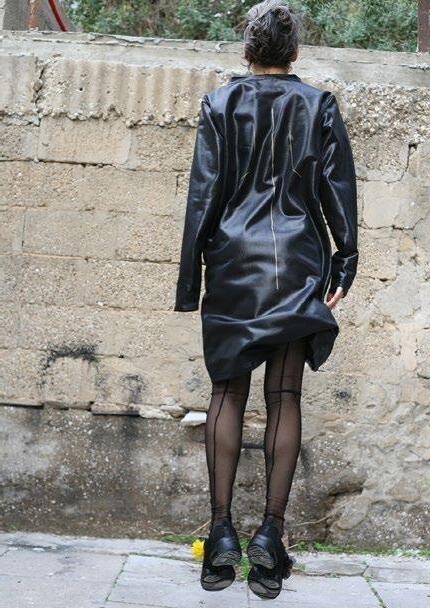
MAYA OFTEN USES
GEORGIAN FONTS IN HER DESIGNS. NIKA MACHAIDZE AND TUSIA BERIDZE WERE RESPONSIBLE FOR GETTING THE WORD „სიყვარული“(LOVE) ON HER T-SHIRTS. THEY MET EACH OTHER DURING FILMING AND BECAME FRIENDS. MAYA HAS HAD SPECIAL ATTITUDE TOWARDS GEORGIA SINCE THEN. AS MAYA WAS SEARCHING FOR A PHOTOGRAPHER TO SHOOT HER AD CAMPAIGN, NIKA MACHAIDZE SHOWED HER DAVID MESKHI’S WORKS. DAVID MESKHI HAS PHOTOGRAPHED ALL OF MAYA’S SUBSEQUENT COLLECTIONS.
The winter weather in Tel Aviv is wonderful. Sometimes the city is cloaked in rain, and the wind mercilessly wipes the palm trees. I approached Maya Bash’s store and salon on one such stormy evening. A girl in pretty overalls daintily sat at the desktop with a computer at the back of the store. Maya’s Pippi Longstoking attitude and happy smile quickly wiped the wind and rain from my mind.
Maya Bash is one of the most successful young designers in Israel. When she and some of her colleagues chose one of Tel Aviv’s central streets as their residence, they became neighbors with each other and with the local homeless people. Today this is one of the most prestigious districts in Tel Aviv; it houses multiple designer stores.
Maya’s clothing is interesting and practical; due to its combination of Japanese fabric and unusual stitching, her apparel is popular among the intellectuals, artists and colorful people of Tel Aviv.
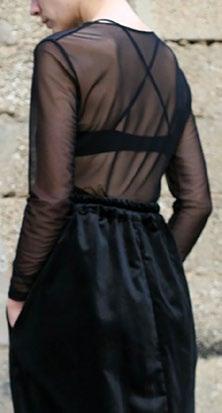


MODA
SALOME DADUNASHVILI
102 VOYAGER 6/2017
I AM A CHILD OF SOVIET EMIGRANTS, AND SINCE MY EARLY CHILDHOOD I HAVE BEEN USED TO HARD WORK AND COMPETING FOR MY PLACE UNDER THE SUN. I CAME TO ISRAEL WHEN I WAS 10. I WAS THE WORST-DRESSED ON MY SCHOOL. MY PARENTS WERE NEVER ABLE TO START WORKING IN THEIR PROFESSIONS, SINCE THEY HAD TO SUPPORT US.
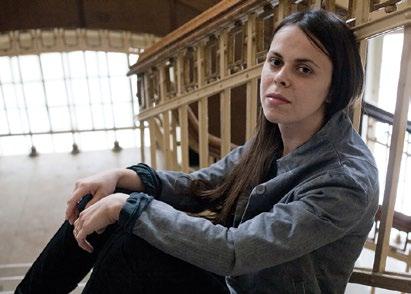
IT WAS EASIER FOR MY 18-YEAR-OLD SISTER—SHE STARTED LIVING INDEPENDENTLY. I WAS AFRAID THAT MY NEW SCHOOL AND NEW ENVIRONMENT WOULD NEVER ACCEPT ME, SO I WAS NEVER A WELL-BEHAVED STUDENT. THE ARMY CHANGED EVERYTHING; WE WERE ALL EQUAL THERE. THAT HELPED ME A LOT.
Why did you decide to become a designer?
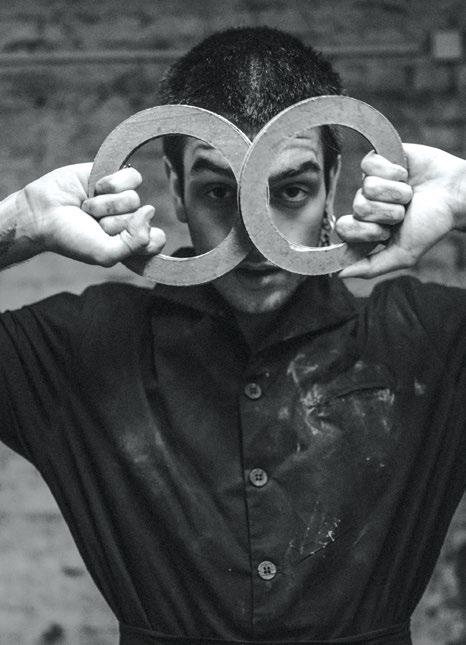
My parents bore the heavy burden of supporting us. They always told me to choose a profession that would guarantee a good income. Programmers were very much in demand at that time and I struggled and tried to catch up on my math but I just couldn’t… I understand now that it was so foreign to me that I opposed it, which is why I couldn’t study it.
It so happened that my boyfriend, who was a good programmer, got accepted into a well-paid position. He asked me: “Why are you struggling, maybe you should try doing something else…what do you really want to do?” That was the best question. I thought
about it and decided that I’d like to get involved with something to do with drawing. I have always enjoyed drawing, but I never paid attention to it. I applied to several universities. I was amazed to het accepted despite the tough competition. I finally discovered what I wanted to do.
Is it easy to manage your brand in Israel?
Who are your clients?
Fabric production has been shut down in Israel and no fabric factories operate here any longer. Everything is imported from Japan. The fashion industry is not very developed either – we have a fashion week, but it is difficult to find sponsors. Our country has other priorities. Production is costly and not everybody is able to pay a premium, so I try to remain in a specific price category (Maya’s store sells clothing for between USD 300-1500).
I serve clients of all ages. My favorite clients are 50-year-old women; they know their selves and their bodies best and are comfortable with their own self. If they find one pair of pants that suits them, they will buy five pairs in different colors (laughs). Young men are interesting as well; they come in and make quick decisions. My clothing is comfortable and created for confident people.
Interesting people live in Tel Aviv. They often say that Tel Aviv is different from the rest of Israel. For example, Israel is a separate country, where everything is based on faith and religious confessions, while everyone here lives as if religion does not concern them. It is a bit utopic – that’s what I love about it.
103 VOYAGER 6/2017
MY CLOTHING IS COMFORTABLE AND CREATED FOR CONFIDENT PEOPLE.
ISRAEL HAS SEVERAL GOOD DESIGN SCHOOLS SO ONE CAN RECEIVE A WONDERFUL EDUCATION IN FASHION.


MANY PEOPLE IN THIS COUNTRY CARRY SEVERAL LANGUAGES AND CULTURES. THE NEXT GENERATION, BORN AND RAISED IN ISRAEL, VIEWS THE WORLD DIFFERENTLY.
How did you create your brand?
When I finished studying, I interviewed at a big company. It was a British company that made clothing in Istanbul and then sent it all over the world. They needed quick-witted, hard-working employees. I was hired and travelled to Britain I really liked that work. I discovered my niche – sketching more than 100 ideas per day. They paid me well and for a while I thought that this is what I wanted to do. However, when they asked me to sign a long-term contract, I declined and came back to Israel.
This was very spontaneous decision, but I knew that something would work out. I came back, sat down and created several T-shirts. I did everything by hand, from scratch. I donned my T-shirts and visited Tel Aviv’s famous cafés, frequented by buyers from good stores. They ordered my T-shirts that same evening. I ran out so happy and started sewing, while orders piled up… so I decided to create my own brand. I have eight co-workers now. One of them is my mother – she knits well and helps me so much.
What attitude to Israeli people have towards fashion?

Israel has several good design schools so one can receive a wonderful education in fashion. Of course, it is difficult to have a business in our small country. Although some designers live abroad and have achieved great success. Many of those designers are in the jewelry industry.
I am very happy that I carry two cultures. My Soviet childhood, which made my life here so difficult when I arrived, now helps me. Many people in this country carry several languages and cultures. The next generation, born and raised in Israel, views the world differently. Everything is changing – our district is now so expensive that many small stores have left the area. However, we are here and we are working. Nothing is achieved without hard work and struggle.
BARZILAI
ST 5, TEL AVIV-YAFO WWW.MAYABASH.COM
MODA 104 VOYAGER 6/2017
INTERESTING PEOPLE LIVE IN TEL AVIV. THEY OFTEN SAY THAT TEL AVIV IS DIFFERENT FROM THE REST OF ISRAEL. FOR EXAMPLE, ISRAEL IS A SEPARATE COUNTRY, WHERE EVERYTHING IS BASED ON FAITH AND RELIGIOUS CONFESSIONS, WHILE EVERYONE HERE LIVES AS IF RELIGION DOES NOT CONCERN THEM. IT IS A BIT UTOPIC –THAT’S WHAT I LOVE ABOUT IT.
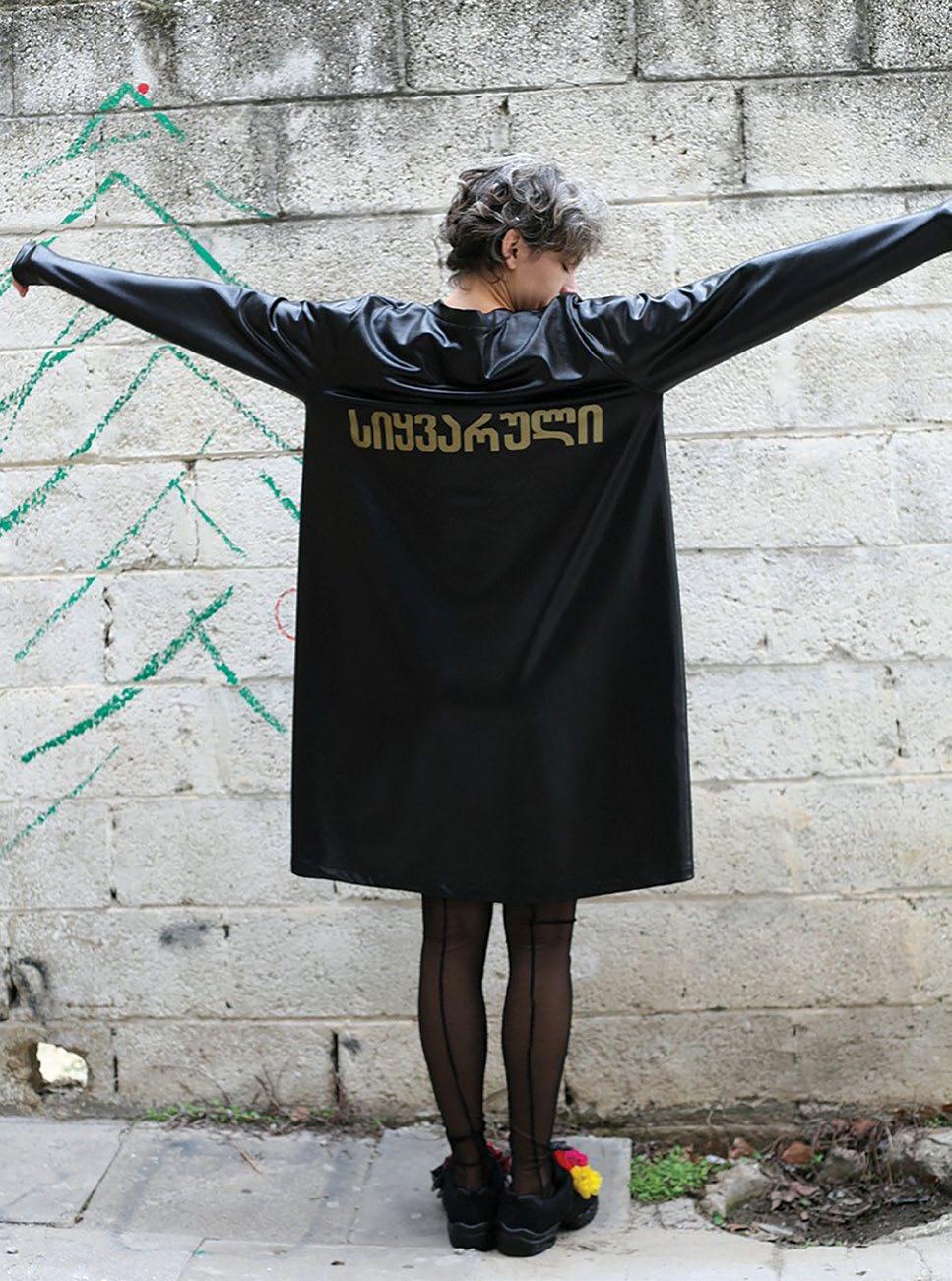
105 VOYAGER 6/2017
MEDICAL TOURISM
Israel is one of the most popular destinations for medical tourism This reflects the fact that Israeli medical institutions are traditionally acknowledged as among the best
ACCORDING TO ANNUALLY PUBLISHED RESEARCHES, ISRAEL IS AMONG THE TOP 25 COUNTRIES FOR MEDICAL TOURISM. LATELY, IT HAS BEEN AT THE TOP OF THE LIST. IT IS PARTICULARLY KNOWN FOR CANCER DIAGNOSIS AND TREATMENT.
THE HEIGHTENED INTEREST IS DUE NOT ONLY TO THE LATEST TECHNOLOGY AND HIGH-QUALITY SERVICES BUT ALSO BECAUSE THE SURVIVAL RATE OF CANCER PATIENTS IN ISRAEL IS BETTER THAN ANYWHERE ELSE IN THE WORLD.
According to Israel's Ministry of Health, 61 men among 100 cancer patients and 67 women among 100 cancer patients lead a full life five years after treatment. This is due to early detection, treatment and access to the latest technology.

Dr. Ron Apte of Ben-Gurion University is one of the leading specialists in cancer research in Israel. His studies of the human immune system and the interaction of cancer cells lay the groundwork for a new direction in the fight against cancer. The research is ongoing but has already revealed information on cancer cell behavior that could have a decisive role in combating the disease. No proper attention was paid to these issues before his research.
Here, we discuss the issue with Dr. Apte.
Dr. Apte, Israel is a very young nation, but people from all over the world come here for medical services. How do you explain the fact that healthcare is so advanced in your country?
106 VOYAGER 6/2017
MEDICINE
SALOME DADUNASHVILI
Medicine has saved Israel several times. You know that we had several waves of immigration. Educated people comprised the first wave, including many doctors. Hence, we had a very sound medical base back then.
More and more people came to Israel later and at one time, there were not enough doctors per capita. Doctors that arrived from the Soviet Union played an important role too. This was the last immigration wave and many good doctors came with it. They were representatives of the Soviet school, which was based on German school. Israel has a British–based system and all of them had to pass difficult qualification exams.
Many people come from all over the world, seeking medical aid, including many Jews. You probably know that the moment they step on this land, Jews have the same rights as the Israeli citizens, including almost free healthcare. Israel also has a number of clinics that provide high-quality service. This service is lot cheaper than in Germany or the US.
Israel purchases the latest medical technologies abroad. These are not cheap, and many countries can’t afford them. Israel is not a very wealthy county, though we have our priorities and healthcare is a priority.
You are one of the leading specialists in oncology and your research is very innovative. Please tell us about it.
























































































































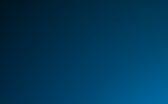






I do my research at Ben-Gurion University. The main topic is the human immune system and cancer cell interaction. This is a novel approach. Everyone studies oncological disease only by looking at the destroyed cells.













We raise a question never posed before: why doesn’t our immune system combat cancer cells? We know that the immune system attempts to destroy viruses and bacteria. Despite the fact that cancer cells are created within the body, they undergo genetic changes and logically the immune system should identify them as alien particles. However, that is not the case.
Ours inquiry led us to many discoveries. We found out that “smart” cancer cells “lie” to the immune system via chemical reactions. The cells that should combat the cancer cells end up strengthening and nurturing them. Thus, the main problem was to correct these “mistakes” made by the immune system.
Every therapy available today targets cancer cells; this includes radio or chemotherapy, which aim to localize or destroy cancer cells. The US finances all of our current research and uses the results. We have achieved quite a lot in our attempts to “wake up” the immune system.
Additionally, it is important to emphasize that there are numerous oncological diseases and that cancer cells are different. It all concerns cancer growth on one of the organs, but the thing is that sick cells develop in healthy tissue and use all the privileges, receiving oxygen and nutrients. They need this support for growth and proliferation.
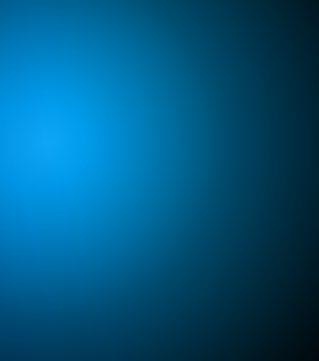
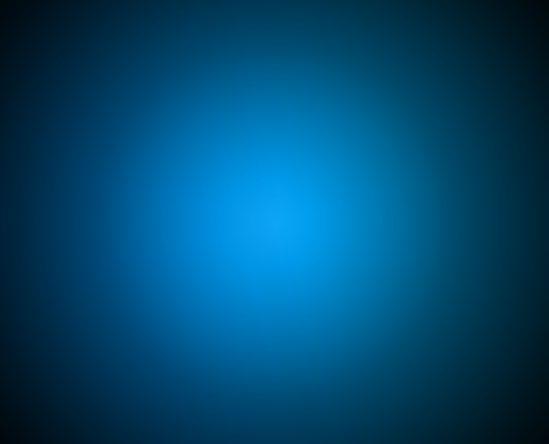
Since every oncological disease is different, treatment plans and achieved effects are different. We might have a very successful method in one type of oncological disease but achieve different results in other cases. Therefore, it is imperative to involve the immune system in the fight against cancer cells. The prevalence of oncological diseases is pretty high in Israel, though the number of successful treatments and full recovery is high as well.
Our biggest enemy in Israel is the sun. Nobody leaves the house without sunscreen. The sun activity results in high rate of skin cancer in Israel, though timely treatment and research for intervention help us discover this disease at an early stage. This is of paramount importance.




What kind of services does Israeli medicine offer patients?








































































































There is no condition that can’t be researched and treated in Israel. Oncological diseases receive the most attention, since we have accumulated lots of experience in this field. Many high-quality clinics offer variety of services in Israel. Treatment for non-citizens requires payment, thought the quality of provided services is very high. In addition, we offer new technologies and innovations.
MANY COME HERE FOR THE DIAGNOSTICS AND RETURN TO THEIR HOMELAND FOR TREATMENT. HIGH-QUALITY TECHNOLOGIES AND MEDICAL PERSONNEL ARE AVAILABLE TO THEM. HEALTHCARE IS A HUGE BUSINESS IN ISRAEL, AND WHEN BUSINESS INVOLVES LOTS OF MONEY, THE QUALITY HAS TO BE THE BEST, INCLUDING DOCTORS, TECHNOLOGY AND SERVICE. OFTEN, THE NON-FREE CLINICS OFFER SERVICES THAT ARE NOT AVAILABLE IN OTHER HOSPITALS.
107 VOYAGER 6/2017
The Dead Sea
The Dead Sea is a unique creation of nature. Its waters do not host any living organisms, hence it is called dead. The high temperatures and low humidity have caused a high concentration of salt in the water, which has created conditions unfit for life.
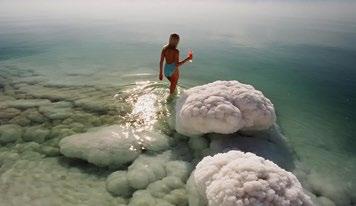
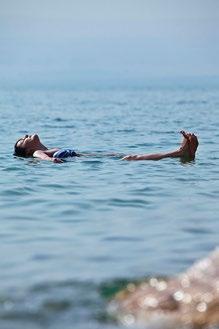

The Dead Sea is the lowest place on land on Earth; its water level is 405 meters below sea level. The therapeutic properties of these places had been well known for millennia and it is said that Queen Cleopatra herself enjoyed their benefits. The coastline is an open-air archaeological museum. According to the Bible, the legendary King David and Jesus Christ himself spent some time here. Sodom and Gomorra were also located here.
THE WATER IS VERY SALTY (33.7%) AND, IN FACT, CONTAINS THE WHOLE MENDELEEV SYSTEM, WHICH GIVES IT MANY THERAPEUTIC PROPERTIES. THE ROCKY AND DESERTED COASTLINE IS LINED WITH SELENIUM-RICH THERMAL SPRINGS AND THERAPEUTIC MUD.
The Dead Sea has more than ten beaches and most of them are public. They are mainly concentrated around the Ein Bokek and Hamei Zohar districts. Those who like active rest prefer the Ein Gedi oasis.
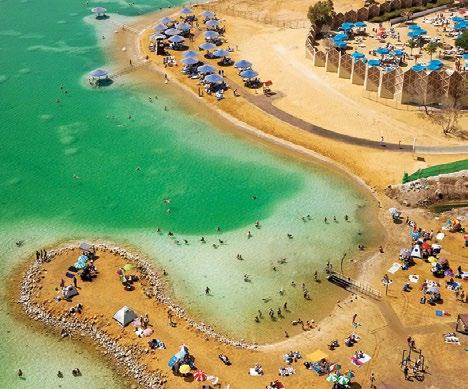
Sunlight here is mostly stripped of its negative components and you can easily spend eight hours a day in the sun. Swimming in the sea, on the other hand, is recommended for 2 or 3 hours a day maximum, with no more than 20 minutes per swim. It is advised to take a shower after each swim in the sea. You should not dive into the Dead Sea or touch your eyes with wet hands – the very salty water can cause a severe burning sensation.
January +20 +11 +20
February +22 +13 +18
March +25 +16 +21
April +29 +20 +24
May +34 +24 +30
June +37 +27 +32
July +39 +28 +35
August +38 +29 +35
September +37 +27 +33
Octomber +32 +24 +31
November +27 +18 +25
December +22 +13 +22
THE DEAD SEA BLACK MUD IS KNOWN AROUND THE WORLD, AS IT IS WIDELY USED IN MEDICINE AND COSMETOLOGY IN A VARIETY OF MASKS, BALMS, AND CREAMS.
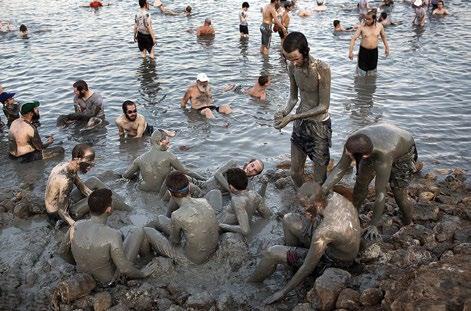
Being the most remote location from the sun, sun beams are filtered by an additional layer of air and lose their negative properties, which is why people with skin diseases can sunbathe here safely. The air on the Dead Sea coastline is very dry with no allergic impurities, and therefore has a positive effect on the bronchi and lungs.
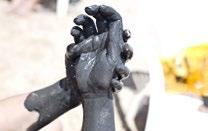
საშუალო
დღე ღამე წყალი
ტემპერატურა (0C)
MEDICINE 108 VOYAGER 6/2017
EIN GEDI IS A UNIQUE OASIS-PRESERVE LOCATED IN THE JUDEAN DESERT, ON THE WEST BANK OF THE DEAD SEA.
Autumn is the best period to visit Ein Gedi: the weather is good to view the beautiful landscapes of the Judean Desert.


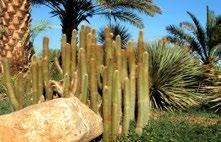
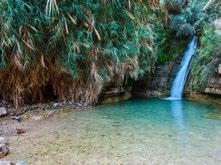
Settlements on Ein Gedi territory existed before the 7th century BC. It was an important supplier of figs, grapes, wine, spices and rare varieties of balms to other countries.
Kibbutz was founded in 1953. Apart from dates, it also produces mineral water in the Ein Gedi agricultural commune, which was known as far back as 3,000 years ago. Ein Gedi owns a medical complex on the coast of the Dead Sea, with sulfur baths and a beach.


DURING THE TOUR, YOU WILL NEED HEADWEAR, SUNSCREEN, DRINKING WATER, A SWIMMING SUIT, A TOWEL, AND COMFORTABLE SHOES FOR THE BEACH AND THE CITY TERRAIN.
IF YOU DECIDE TO SPEND A FEW DAYS AT THE DEAD SEA, WE RECOMMEND THAT YOU STAY AT THE EIN GEDI KIBBUTZ HOTEL NEARBY. THE HOTEL PROVIDES TOURISTS WITH A UNIQUE CHANCE TO STAY IN A REAL OASIS, ON THE TERRITORY OF A BEAUTIFUL BOTANICAL GARDEN. IT IS IN CLOSE PROXIMITY TO THE DEAD SEA, AND GUESTS CAN TAKE ADVANTAGE OF DIRECT PASSAGE TO THE BEACH.
FROM THE HOTEL ROOMS, YOU CAN ENJOY AMAZING VIEW OF VARIOUS STREAMS, MOUNTAINS, DESERTS AND THE LAKE. IT IS AN HOUR'S DRIVE FROM JERUSALEM.
ROOM PRICES START AT $150.
Apart from treatments, you can spend a wonderful vacation and relax in Israel's health centers.
Most of the recreation centers are concentrated around the Dead Sea and the Lake Kinneret. Visitors have the opportunity to undergo holistic procedures based on practices of modern European and natural Oriental Medicine.

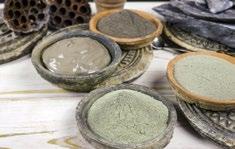

More than ten dermatological healthcare centers on the Dead Sea territory successfully treat skin diseases, arthropathy and chronic arthritis. Saturated with oxygen, the Dead Sea air provides treatment for the respiratory tract; the high atmospheric pressure decreases blood pressure for hypertonic patients. Many patients arrive for treatment of neurological diseases. You will be offered wellness procedures with mud baths and black clay wraps.
 A factory of the "Ahava" brand is located in the Ein Gedi kibbutz territory, producing cosmetic products from Dead Sea salts and minerals. It is considered the best place to buy body and skincare products.
A factory of the "Ahava" brand is located in the Ein Gedi kibbutz territory, producing cosmetic products from Dead Sea salts and minerals. It is considered the best place to buy body and skincare products.
RECOMMENDATION 109 VOYAGER 6/2017
THE CITY
AKA MORCHILADZE
This city, Jerusalem is so beautiful – a city unlike anything else. The people are different from everyone else too – their character is different. They look forwards. They are amazing. One writer who passed by Israel described it in such a simple and clear manner.
This characterization did not include anything that is usually attributed to Jerusalem: a holy place and crossing point of three religions, where sacraments are passed from hand to hand and people have looked for and found the Living God.

Few people worldwide don’t know that this is the city that was established by King David the psalmist and erected by King Solomon the wise. This is a place where everyone has arrived at one time or other and desired to stay forever in the presence of God. Prayer becomes tangible in this city and people discover that whatever they have looked for in the sky is right here on land between the Eleon, Zion and Calvary.
JERUSALEM IS THE CITY THAT HAS BEEN FOUGHT OVER FOR MILLENNIA –A HEAVEN ON EARTH. NO ONE TURNS AWAY FROM HEAVEN, EVEN IF THEY HAVE TO PASS THROUGH A HUNDRED HELLS TO GET THERE.
What we call Jerusalem is Old Jerusalem, or the Old City, where everything is squeezed together and visitors struggle to follow multiple and impressive images. The only thing that they can take away with them is the limitless word “God”. It is probably Jerusalem’s primary name. In Jerusalem, you see that the Tower of Babel really existed and that people may never be together but may exist side by side. It probably requires a lot of energy and kindness. God and people are everywhere in Jerusalem. One Muslim
CITY
110 VOYAGER 6/2017
family has held the keys to Jesus Christ’s grave since the time of Saladin for one simple reason – the Christians could not agree among themselves, and the great Sultan, who had even been in correspondence on the subject with Tamar, saw the necessity of an intermediary.
JERUSALEM BELONGS TO EVERYONE. EVERYONE BELIEVES THAT THEY ARE ENTITLED TO A PART OF THIS CITY. GOD BELONGS TO ALL, SO JERUSALEM BELONGS TO ALL AS WELL. HOWEVER, EARTHLY LIFE MAKES JERUSALEM A PLACE OF BATTLE, AND WHILE SOME ALWAYS HAVE SOMETHING HERE, OTHERS ARE FIGHTING TO OBTAIN IT.
It is not a fair fight. Some struggle for a small part that they regard as a path towards God; some defend what they have attained; some see it as their only motherland and cannot imagine it belonging to anybody else.
THERE IS ONLY ONE JERUSALEM. FIRST ROME, SECOND ROME, THIRD ROME; NEW YORK, OLD YORK, AND ALL OF THE REST SIMPLY DOES NOT APPLY TO JERUSALEM. HERE AND NOW. HERE AND FOREVER. DIFFERENT ATTITUDE IS INCOMPREHENSIBLE.
In Germany, a very popular yet simple souvenir has been sold by “Checkpoint Charlie” for 25 years – a piece of the Berlin Wall. Something similar is sold in Jerusalem but far removed from modern-life souvenirs.
It is said that anyone who has ever thought of God carries a little piece of Jerusalem in their heart. All such people have their own Jerusalem, and all faiths their own sanctity that originates in Jerusalem.
It is a perplexing thing. Calvary is the place where Adam and Eve lived after being banished from the Garden of Eden. A few pieces of a Soviet wall is ridiculous by comparison.
Every notice and wrath is denoted on posts. Here you can whisper at the Wailing Wall, there you can see the dome of the Al-Aqsa Mosque. Over there, a friend will lead you to the Armenian quarter, void of that storm that is heard in the city and the world that surrounds it.
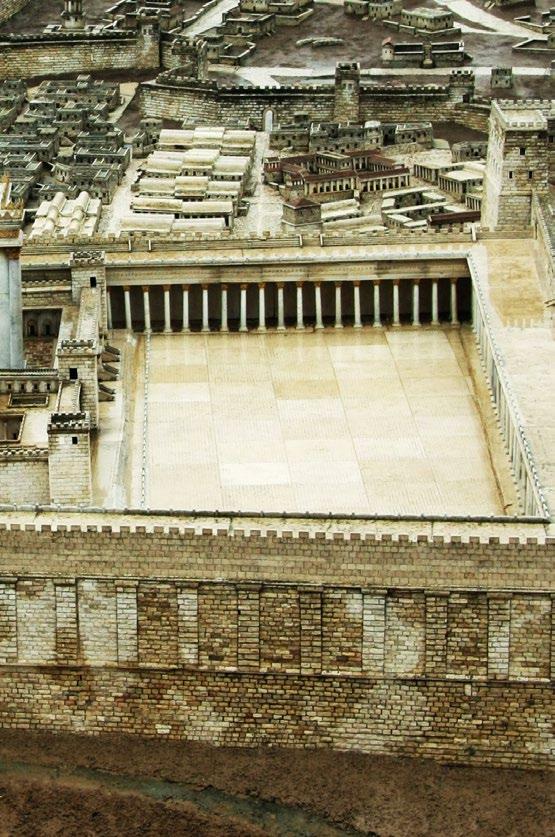
We remember how we stood on the road leading to Calvary 14 times; nine of these routes were where the Via Dolorosa crossed the Muslim quarter, while five were in the Christian quarter. It is unknown whether they would count it this way in other places. Everything is counted and graphed in Jerusalem – graphed since the time of the first Byzantines and then since the XII century, when Ricoldo da Monte Croce established the first routes towards Calvary.
Jerusalem has been being ruined by merciless wars and destruction for millennia. The first temple was destroyed, then the second temple; then the Romans walked all over the city, although that was a very minor page in its history, since its transformation to Aelia Capitolina was miniscule. However, the heart of the Jewish people had to be transformed into a provincial Roman town. Emperor Hadrian II considering restoring the temple to show his good will, though he was advised against it: he was told that such an act would lead to a Jewish uprising. However, the uprising started anyway, as did the war. Jerusalem’s history is limitless; limitless and deep; bottomless and vast.
Jerusalem is the capital of the State of Israel today and has been since its conception and the first wars. However, Jerusalem is not the capital of the Jewish nation. Status, plans, approaches,
111 VOYAGER 6/2017
partitions... East Jerusalem, West Jerusalem, UN declarations, approaches, attitudes, and of course the West Coast and autonomous Palestine.
WE CLING TO OUR TINY PART OF JERUSALEM, A SMALL CRUMB, WHILE THE MIGHTY WORLDS AND HISTORY OF JERUSALEM STANDS IN THE DISTANCE. IT HAS NO END.
Two anxious words – the “Middle East’ – have been imprinted forever in our minds by news headlines. The place where the universe originated is now in flames. Canaan is destroyed, so too Nineveh, which we now call Mosul, and Damascus, while Jerusalem has endured a thousand perils.
The big European players drew the last borders. This is not a place where borders are easy to draw, taking many things into account, not with a ruler and especially not by foreigners. No one will ever agree to that. They know very well what the ruler means in Jerusalem. Christians placed a ruler on the base of the split Calvary stone to help them measure the size of the gap and time left until the second coming. It shows us that the world can’t be united, just as the split stone can’t be made whole.
WE, GEORGIANS, HAVE ALWAYS HAD OUR OWN JERUSALEM. IT WAS MORE VISIBLE IN THE PAST; OUR OWN; SAFE AND DEFENDED. JUST LIKE THE “KNIGHT IN THE PANTHER’S SKIN” AND OTHER TALES, JERUSALEM WAS GEORGIA’S PILLAR AND IT DEFENDED IT WHEN IT COULD.
Jerusalem has always been a city passing from one set of hands to another. Big empires did not deem it an important point after the crusades were over, though they always took into account its uniqueness. Leaders of Egypt, Osman Sultans, Shahs and later Europe Empires in the east thought of it not only as a strategic point but also as a city that belongs to everyone and whose buildings carry the soul of their civilization. It may change its colors farther away, but this is how it is preserved in Jerusalem.
One of the pillar stories of Georgians is that of the constant defense of Georgian places in Jerusalem. The story of return is also important. It is well-depicted in the phrase always told in Georgia with contemporary, eternal, proud and invisible sadness: “We entered Jerusalem on horses, with unfolded banners”.
It means that others either had no right to do so, or had not deserved this right; prosaically, it means that others had not paid. This is a real story, dating back to Saladin and Tamar. This is what they say. Georgia did pay, since it was forbidden to enter Jerusalem (conquered by The Crusaders) on horses; the owners of religious buildings were often changed and people’s struggle for property disintegrated into chaos.
God got tired of this struggle, so leaders tried to deal with it. The story of our unfolded banners is recorded in European and Arabic works. However, Jerusalem was the city where you constantly needed to take care of and defend your own. The Shota Rustaveli fresco was preserved over centuries to this day and was vandalized in XXI century. The souvenir keychains of the fresco are being sold nearby nevertheless. Jerusalem is the city where God is by your side. This is why people think that God is like humans. They claim that he created humans in “His own image”. So, this scratching, painting over the writings and others small human stories, is one of the earthly traditions of this heavenly land, just like nudging through the crowds to stand in the Church of the Holy Sepulchre.
Georgians took care of their own Jerusalem. Jerusalem’s patriarch asked the King of Kakheti to help pay his debts. There are other stories like that also. Many pilgrims as well.
There’s one more interesting story with an unusual ending. It is a unique story that sounds like it is 300 years older than when it supposedly happened. Historians such as Beri Egnatashvili and Vakhushti, who heard it from Jerusalem’s Georgians, tell us that a famous Ottoman Sultan had trouble with some Persians and sent a message to the three Georgians kings, saying “I am surprised how you tolerate others sitting in your Jerusalem”.
This Sultan was probably Suleiman Kanuni, since he was the leader during the time of those Georgian kings. By Persians, he meant “others sitting in your Jerusalem”. His message excited young King Levan of Kakheti, the young King Bagrat of Imereti, and Giorgi, brother of David and grandfather of Simon, who became a monk and passed the throne to him.
All three of them got together with their men. The Ottoman Empire let them pass through their land and they came to Jerusalem’s walls. The people from atop of the walls cried down: who are you, men? If you’re guests, there are too many of you; if you’re enemies, there are too few of you. The kings asked them to come outside for a battle.
Georgians were never too few, especially in ancient times. They were well-trained in martial arts and it was difficult to distinguish between the nobility and the serfs.
How many of them approached Jerusalem’s gates? And which gates? Who knows. They say that the Georgian army destroyed the wall, went inside, took over the walls and towers, took Jerusalem and sent word to Suleiman Kanuni that they had saved whatever needed saving. He gave Georgians many places, including the Lord’s Tomb, Calvary and others. He also added some personal gifts on top of that. Europeans writing at the time also mentioned that Georgians held Calvary and other places in Jerusalem. Unfortunately, this journey of the three kings at that time was impossible and did not happen. At the period when the rule of these three kings coincided, Suleiman did not battle anyone in Jerusalem. He held the city. There are other features that make this story a fairy tale as well.
The thing is, though, so many later historians described the three kings’ attack. There was probably some kind of story, either writ-
CITY 112 VOYAGER 6/2017
ten or passed around among the nobility. The existence of such a saying is unusual. Both Vakhushti and Beri described the events that took place 200 years ago.
How and why did this tale originate? Maybe it reflected something else? Three wise men from the east, three kings, or something like that. But why? Who needed to make up stories about the attack? Who needed to make up a story about Georgian kings who not only never united for a common battle in a foreign land but who never managed to settle their own domestic disagreements?
Maybe this was one of Georgia’s chimeras – a desire to reach Jerusalem, a fairy tale that survived because it was so desired. It has lived for a long time, reaching our time in turn. The surprising thing is that Georgian kings did not need to attack; they took care of Georgian places in Jerusalem anyway. Whether they were wealthy or poor, they always sent money and treasure there.
This idea or legend of saving Jerusalem probably touched upon a dream. The dream of great old times. “Black times could not change a brave heart”.
What more likely happened was that during Suleiman Kanuni’s father’s time, Georgians and Ottomans fought together when the Sultan defeated the Mamluks and even took Palestine from them. Levan, Bagrat and Giorgi were not there, but others, like Meskhians were, and since the Georgians were under Ottoman rule at that time, they had to use their swords in Ottoman battles and therefore asked the Sultan for certain places in Jerusalem as their reward.
It was necessary to ask the new ruler of the city. This is probably how they got the places. Who knows, we can’t really understand old story-tellers. It is true that kings existed in XVI-century Jerusalem.
Old Georgian writers don’t mention Palestine and the places that Georgians held there. They don’t write much about how Georgia, now divided into many Georgias, supported its property in Palestine and Jerusalem. This is a huge, undocumented and eternally poor history.
JEWS HAVE REGARDED JERUSALEM AS THE HEART OF THEIR EXISTENCE FOR THREE MILLENNIA. ONE CANNOT SHARE A HEART – THIS IS WHY JERUSALEM IS A DIFFICULT CITY. IT HAS SEEN WAR. IN THE EAST, MANY BELIEVE THAT ISRAEL HAS ILLEGALLY OCCUPIED IT EVER SINCE THE FIVE-DAY WAR THAT ISRAEL LED AGAINST THE ARAB WORLD. THEY FOUGHT FOR EACH METER OF THEIR PROMISED LAND. THEY ARE STILL FIGHTING FOR IT.
David’s psalms are full of references to Jerusalem. Jewish people sing at the end of every Yom Kippur meal “Next year in Jerusalem” to honor the eternity of their destroyed and lost city.

“Next year in Jerusalem” is a song of great hope. Today, every Jewish person can go into the heart of their faith today in the city itself, but “Next year in Jerusalem” means not only entering the city but coming closer to an ideal – a unity of body and soul; approaching the temple; uniting earth and heaven within. Jerusalem is the heart where all of this should happen. We can’t list all of the rituals, thoughts and dreams about Jerusalem, but let’s just remember the psalm: “If I forget you, Jerusalem…”
Jerusalem is a holy city.
ONE OF THE PILLAR STORIES OF GEORGIANS IS THAT OF THE CONSTANT DEFENSE OF GEORGIAN PLACES IN JERUSALEM. THE STORY OF RETURN IS ALSO IMPORTANT. IT IS WELL-DEPICTED IN THE PHRASE ALWAYS TOLD IN GEORGIA WITH CONTEMPORARY, ETERNAL, PROUD AND INVISIBLE SADNESS: “WE ENTERED JERUSALEM ON HORSES, WITH UNFOLDED BANNERS”.
Sunni Muslims believe in three great sacred places: Mecca, Medina and the Al Aqsa mosque. The famous horse Al-Buraq took the prophet Mohamed to a faraway mountain for prayer on that famous night, and after he prayed, the skies opened and he entered heaven. Khalil Omar took Jerusalem after Mohamed’s accession, and built the Al Aqsa mosque on the place where Mohamed prayed. Before the Kaaba was constructed, Jerusalem was the qibla for Muslims. When they were in Mecca and Medina, Muslims faced Jerusalem during their prayers. Many believers moved to Jerusalem after Mohamed’s ascension.
This adventure is everlasting, just as the soul is. This city has no end either as its beginning came from God.
Jerusalem is so beautiful, unlike anywhere else. The people are unlike any others.
113 VOYAGER 6/2017
MASADA
MASADA WAS CHRONICLED BY TITUS FLAVIUS JOSEPHUS (JOSEPH BEN MATITYAHU). HE WAS ONE OF THE INITIATORS OF THE JEWISH REVOLT. AFTER BEING CAPTURED, HE ACCEPTED ROMAN CITIZENSHIP AND A ROMAN NAME. IN HIS SEVEN BOOKS, HE DESCRIBES THE JUDEAN WAR. FOR CENTURIES, NO OTHER INFORMATION CONCERNING MASADA EXISTED.
YOU WILL ENJOY VIEWS OVER THE DEAD SEA HORIZON AS YOU ASCEND THE JUDEA MOUNTAINS. THE VIEW IS UNIQUE DURING DAWN. BROMINE VAPOR PAINTS MASADA’S AIR. THE CLEAR SKY, THE TURQUOISE SEA WITH WHITE SALT SCARS, THE JORDAN MOUNTAINS ON THE EAST COAST, AND THE HISTORICAL CONTEXT—YOU HAVE TO SEE IT ALL FOR YOURSELF.

THE FORTRESS OF MASADA IS NOT ONLY A HISTORICAL PLACE BUT IS SYNONYMOUS WITH THE STRUGGLE FOR FREEDOM AND NATIONAL BRAVERY IN MODERN ISRAEL.

THE FORTRESS IS LOCATED BY THE CITY OF ARAD, NEAR THE EASTERN EDGE OF THE JUDEAN DESERT, ON AN IMPREGNABLE 450 M HIGH HILL. THE HIGH PEAK OVERLOOKS THE 600X300 M2 DIAMOND-SHAPED PLATEAU.
The Jewish revolt against the Roman Empire began in 66 AD. According to researchers, it changed history. Masada made irreconcilable fighters - ardent believers, Zealots, stronger. In 70 BC, Titus subdued the rebellious Jerusalem and destroyed the First Temple. One thousand selfless warriors and their families moved to Masada to defend this last outpost of freedom.
The rebels fought the Roman legion for three years – 15,000 soldiers against 1,000 Zealots, and the Zealots were winning. The Romans, with the help of Jewish slaves, erected a giant earthen mound on the west side and the last battle was held on 73 AD. Afterwards, the Romans destroyed the Second Temple and the Jewish people scattered all over the world.
These brave fighters preferred death to captivity. Their motto was: "Death rather than slavery." The leader Eleazar ben Ya'ir cast lots – 10 chosen warriors killed all of the women and children. One of them killed the other 9 warriors and then committed suicide.
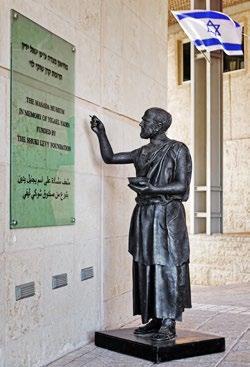
114 VOYAGER 6/2017
King Herod the Great, who had converted to Judaism, started to reconstruct the old towers in 30 AD. Suffering from paranoia, the monarch believed that he had to build an impregnable, double-walled tower that would be the ideal refuge and a place to hide in case of a conspiracy.

Herod the Great built his three-story royal palace on the northern slope of the visitors’ residence nearby, three palaces for his family, a synagogue, military warehouses, water and food storage facilities and ancillary facilities.
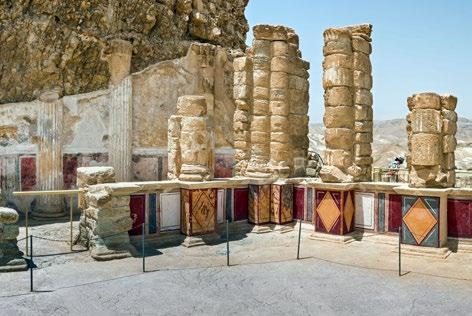
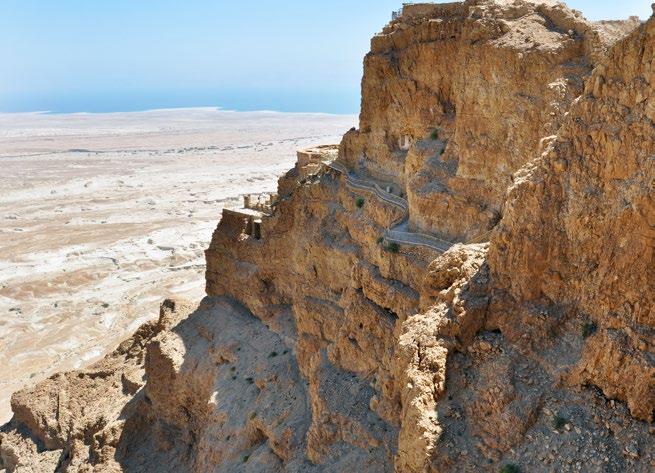
THE CASTLE RUINS WERE DISCOVERED IN 1862. EXCAVATIONS WERE CONDUCTED IN 1963-65. OF COURSE, ONLY FRAGMENTS OF THIS 2000-YEAR-OLD BUILDING REMAIN, BUT MAGNIFICENT MOSAICS, BATHS, PARTS OF THE ROYAL PALACE, STONE POOLS AND MANY MORE ARE PERFECTLY PRESERVED.

As soon as you reach the top, you can take a map that will help you go around the fortress and browse everything carefully. You can experience the life of a small group of militant Zealots. Archaeologists partially restored the old historical sections in 2000. You can see unique exhibits, ritual spaces, synagogues, and seating areas.
Masada is surrounded by hillsides. You can get here via cable car or along the path that the castle's defenders used. It's a difficult one-hour journey that begins 5.30 in the morning.
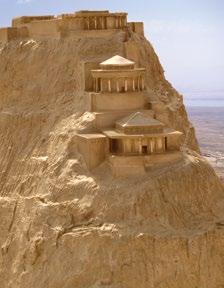
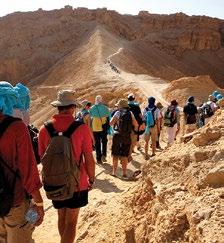

It is better to start the journey early to avoid the choking heat.
The monument is open to visitors from April to September every day8.00-17.00; it closes one hour early on Fridays and holidays. The funicular runs every day except Friday from 8.00 to 16.00 (15:00 in winter).
Ticket price: 75 NIS (including cable car fee of 47 NIS). Please keep the cable car receipt; bring a hat or headscarf, food and two liters of water (per person).
115 VOYAGER 6/2017 MASADA
UNESCO DECLARED MASADA A WORLD HERITAGE SITE IN 2001.
ONE OF THE FOUR HOLY CITIES OF ISRAEL, TSFAT USED TO BE THE CENTER OF KABBALAH. IT IS AN ANCIENT CITY STILL IMBUED WITH THE MYSTIQUE OF ISRAEL'S SPIRITUALITY.
SCIENTISTKABBALISTS LIVED, STUDIED AND TAUGHT HERE. THEIR GRAVES ARE PLACE OF PILGRIMAGE FOR FOLLOWERS OF THE FAITH.
TZFAT (SAFED)

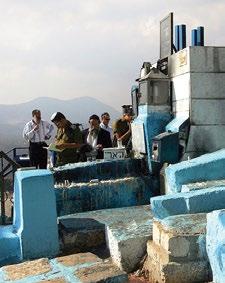
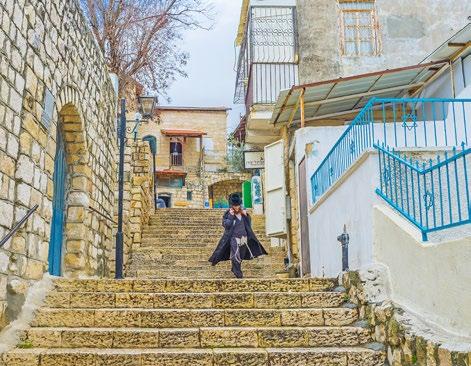
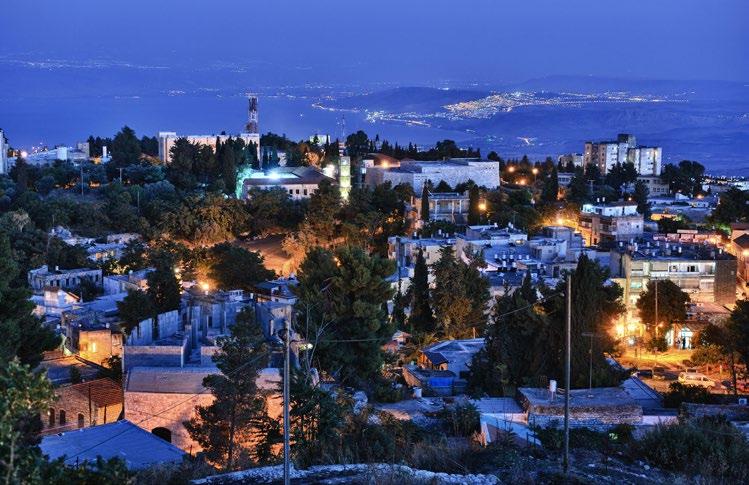
This beautiful city is located in Upper Galilee, at an altitude of 900 meters. Its rich historical and religious heritage, art and unique landscape attracts travelers from all over the world. Tsfat has a mild climate with a warm summer and a snowy winter. You can see not only the Mediterranean Sea but also Kinneret Lake.
After 1492, during the mass ejection of Sephardic Jews from Europe due to the Spanish and Portuguese Inquisitions, the whole Kabbalist Rabbi group moved to Tsfat, including Moshe Cordovero, Joseph Karo, Shlomo Halevi, Yitzhak Luria and others.
Tsfat became center of esoteric education in the XV-XVI centuries. In the XVIII century, Sephardic Jews were joined by Hasidic Jews from Central Europe. They have been looking for secrets in holy books for centuries.

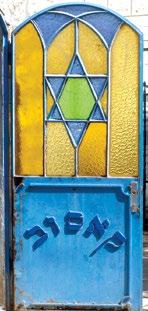
Tsfat’s architecture is unique. The streets are decorated with ancient structures as you go downwards. You will notice blue-colored doors as you walk the streets – this is thought to protect against the evil eye. You may also notice Hamsa signs at the entrance to houses, cars and on people. Hamsa translates as "five" and is the symbol of God's palm, which is often portrayed with a fish in the middle or the Star of David.

116 VOYAGER 6/2017
Synagogues are important landmarks here. Many synagogues are located in the city and each of them has a unique story. The most famous Sephardic synagogue, Arizal, was built in the XVI century. Rabbi Yitzhak Luria, founder of one of the Kabbalah movements, prayed here.
Joseph Caro's Torah Study House is a famous synagogue. According to legend, it was in the basement of this building where the angel revealed to the Rabbi the secrets of Kabbalah.
The Abuhav Synagogue is a 15th-century synagogue that was constructed after the Rabbi was expelled from Spain. He taught lessons here.
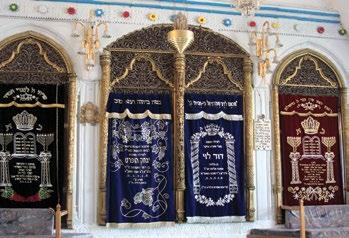

Many artists settled in Tsfat in the 1930s. They own most of the art galleries in the city center.
You have to visit these wonderful quarters. You can buy authentic works of artists as a souvenir of this mysterious city.
WINDING, NARROW STREETS, DECORATED WITH VINE-COVERED TERRACE STONE HOUSES, COLORED SYNAGOGUES, SHOPS, ARTIST WORKSHOPS AND STUDIOS ARE LOCATED IN THE FORMER ARAB QUARTERS IN HISTORICAL HOMES.

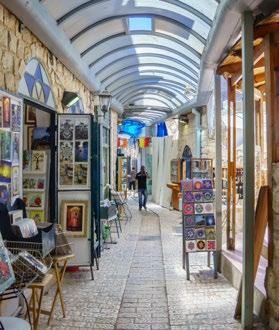
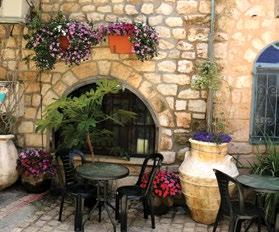
COUNTERS AND WINDOW DISPLAYS ARE FULL OF ART WORK. THIS IS A COLORFUL CITY OF RELIGION, MEDIUMS, AND ARTISTS, WITH ITS MYSTERIOUS ATMOSPHERE.
OUT
HAARI 8
This café offers nourishing meals: various steaks, grilled meat, and so-called minced fried meat and fish and fresh salads. The vegetarian menu includes fresh vegetables, salads, pasta and delicious soups.
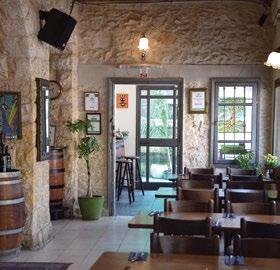
Open: Sunday to Thursday - 11.0023.00; Closed on Fridays, Saturdays and sometimes open after sunset.
HaAri st 8; Tel. +972 4 6920033
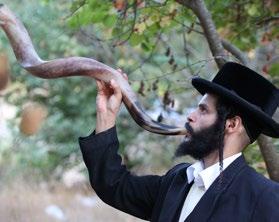


ARAB CHEESE FACTORIES, WHICH ARE LOCATED IN THE VICINITY OF TSFAT, ARE FAMOUS FOR THEIR SEMI-HARD CHEESE VARIETIES.
TSFAT CHEESE IS USUALLY MADE FROM GOAT OR SHEEP MILK (RARELY COW’S). IT STANDS OUT FOR ITS ELASTIC CONSISTENCY; IT IS LESS GREASY AND SLIGHTLY SALTY.
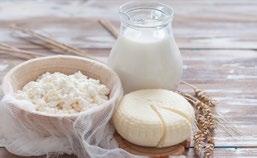
117 VOYAGER 6/2017 TZFAT
OF RESPECT TOWARDS ORTHODOX JUDAISM AND KABBALAH FOLLOWERS, WEAR CLOTHING THAT COVERS THE ARMS AND LEGS.
THE TSFAT CANDLE-WAX FACTORY PREPARES BEAUTIFUL DECORATIVE CANDLES.
SYNAGOGUE ARIZAL
SYNAGOGUE ABUHAV
SHOFAR SHEEP HORNS CALL BELIEVERS DURING JUDAIC HOLIDAYS.
BETHLEHEM
BETHLEHEM IS A VERY IMPORTANT PLACE FOR CHRISTIAN PILGRIMS FROM AROUND THE WORLD BECAUSE, ACCORDING TO THE GOSPEL, JESUS WAS BORN IN A MANGER IN THE CITY, WHERE THE HOLY FAMILY FOUND SHELTER, AS THEY HAD TO TRAVEL TO BETHLEHEM FOR A CENSUS. THE NATIVITY CHURCH WAS ESTABLISHED IN BETHLEHEM IN IV AD AND MASS HAS BEEN HELD THERE EVER SINCE.
BETHLEHEM WAS FIRST MENTIONED IN THE BIBLE AS THE BIRTHPLACE OF KING DAVID AND THE PLACE OF RACHEL'S FUNERAL. IT IS ONE OF THE MOST HOLY CITIES FOR CHRISTIANS, SECOND ONLY TO JERUSALEM. EVERY YEAR, MORE THAN A MILLION TOURISTS VISIT.
CHRISTIANS VIEW ISRAEL, JERUSALEM AND BETHLEHEM AS AN INTEGRAL UNITY. IT IS NOT ONLY INTERESTING FOR CHRISTIANS; ANY VISITOR WILL FIND ENJOY TOUCHING THE ENVIRONMENT, HAVING ADVENTURES, BROWSING THE INTERESTING SHOPS AND SAMPLING THE DELICIOUS CUISINE.

BEFORE YOU WALK TOWARDS THE HOLY PLACES, PAY ATTENTION TO YOUR CLOTHING. MEN MUST WEAR PANTS AND WOMEN MUST WEAR LONG DRESSES OR SKIRTS AND LONGSLEEVED TOPS.
The Church of the Nativity on the Manger Square
According to legend, the Basilica of the Nativity, a structure erected in the center of Bethlehem, was built on the place where Jesus Christ was born. The church’s low door is called the "humility” door. Visitors have to bend to enter it. Arches sit on 44 marble columns, with oil-painted frescoes of saints and prophets.

This painting technique is not present anywhere else in the Holy Land. A mosaic from the era of the Byzantine Emperor Constantine the Great (IV AD) is preserved on the floor.
Christ's birth place is marked on the floor by a star with 14 rays. A place where Christ was placed after his birth is in the southern part of the cave. Five constantly-lit lamps are placed above it. There is also an icon featuring the shepherds of Bethlehem worshipping Jesus.
ONE OF ISRAEL’S OLDEST CITIES, BETHLEHEM IS TRANSLATED AS "HOUSE OF BREAD" IN HEBREW AND “HOUSE OF MEAT” IN ARABIC. IT IS LOCATED ON THE TERRITORY OF THE PALESTINIAN NATIONAL AUTHORITY, ON THE BANK OF THE RIVER JORDAN, 8 KM SOUTH OF JERUSALEM.
THE SHRINE OF THE BIBLICAL CHARACTER OF RACHEL, JACOB'S WIFE AND THE MOTHER OF JOSEPH, IS CONSIDERED AN IMPORTANT SANCTITY. THIS PLACE ATTRACTS PILGRIMS OF THREE RELIGIONS AS IT IS A HOLY PLACE FOR CHRISTIANS, JEWS AND MUSLIMS.

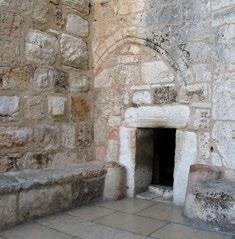
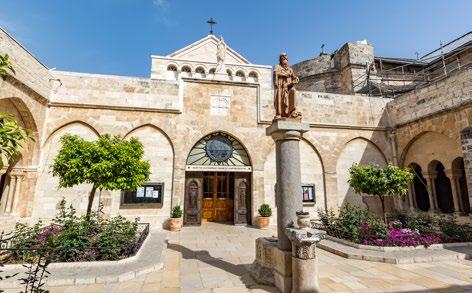
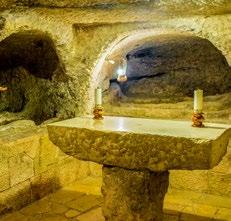
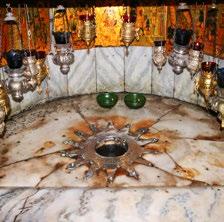
118 VOYAGER 6/2017
According to legend, the Holy Family escaped from Bethlehem to the Milk Grotto and the Virgin Mary nursed the infant Jesus there. The completely white cavern makes an unforgettable impression. Legend tells us that the place turned white after a few drops of milk dropped in the cave when Jesus was nursed.
COMMENT
IF YOU WANT TO MAXIMIZE THE SAFETY OF YOUR JOURNEY TO BETHLEHEM, WE RECOMMEND HIRING A PRIVATE TOUR GUIDE. YOU WILL NEED TRANSPORT TO REACH BETHLEHEM AND THE LOCAL SIGHTS.
TOUR FROM JERUSALEM TO BETHLEHEM INCLUDE A GUIDED EXCURSION, WHICH COVERS THE NATIVITY CHURCH AND THE BORDER FEE. AN INDIVIDUAL EXCURSION COSTS 50-70 US DOLLARS. A ONE-WAY TRIP TO BETHLEHEM FROM JERUSALEM BY TAXI, WITHOUT A GUIDE, COSTS 20 US DOLLARS.
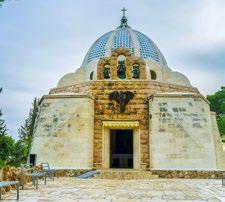
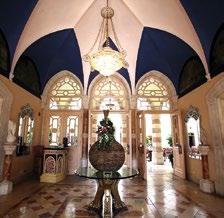
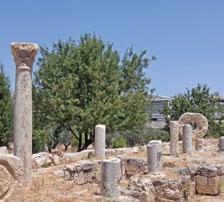
NOTE: BETHLEHEM IS PART OF THE PALESTINIAN NATIONAL AUTHORITY, THEREFORE, YOU WILL HAVE TO CROSS THE BORDER. DO NOT FORGET TO TAKE YOUR PASSPORT AND ID CARD.
The cave is close to the shepherds of the field, where the angel of the Lord told the shepherds about the birth of the Savior, and they abandoned their sheep and went to worship the infant. The Shepherd's Field Chapel with its rounded dome honors them.

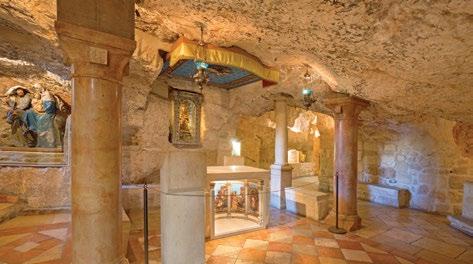
An ancient well, called the three wise men well, is located on the right side of the St. Elias Mountain. According to tradition, a star appeared during the birth of Christ, and led three wise men to Jerusalem and then to Bethlehem where they gave gifts of gold, frankincense and myrrh. They say that the faithful see stars in the depth of the well.
Modern art lovers will undoubtedly be interested in the wall that features Banksy’s graffiti.
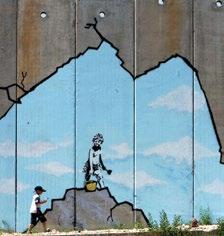
The wall separates Bethlehem from Jerusalem.
The small souvenir shops located on the Manger street offer a wide variety of diverse merchandise. Visit the olive wood souvenir factory on the Milk Grotto Street.
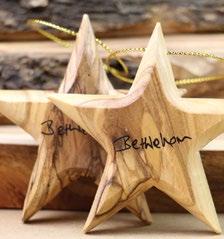
PALACE INTERCONTINENTAL

Followers of Haj Amin Al-Husseini (1895-1974), the Grand Mufti of Jerusalem, built this historical building and it still features an engraved swastika. It offers luxury, a gorgeous landscape, an outdoor pool and tennis courts - this is a true oasis of friendly atmosphere, top-class rooms and high level of service. Four local restaurants serve international cuisine; local cuisine is distinguished as well. Bethlehem’s church is within walking distance. We recommend that you book a hotel room one its website: reservation@jahipalace.ps or telephone: +972 2 2766777
West Bank 1167, Bethlehem, Palestine; www.jacirpalace.ps
THE SOLOMON POOLS ARE LOCATED JUST 5KM AWAY FROM BETHLEHEM, IN THE ARTRAS UPLAND PINE FOREST. THESE ARE THREE OPEN, STONE BASINS, WHICH HOLD 160 THOUSAND M3 OF WATER. FOR CENTURIES, THESE POOLS WERE CENTRAL TO THE REGION'S WATER SUPPLY.
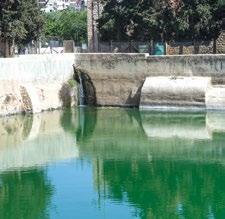
119 VOYAGER 6/2017
BETHLEHEM
NAZARETH
NAZARETH IS THE HOLY CITY WHERE JESUS SPENT HIS CHILDHOOD, ACCORDING TO THE NEW TESTAMENT. ISRAELI ARABS LIVE IN LOWER NAZARETH, WHILE ABOUT A THIRD OF THE POPULATION ARE CHRISTIANS OF VARIOUS DENOMINATIONS. THIS IS WHY NAZARETH IS CONSIDERED ISRAEL’S MOST CHRISTIAN AND MOST ARAB CITY. IT IS THE ONLY PLACE IN THE ENTIRE COUNTRY WHERE SUNDAY IS A DAY OFF.
Basilica of the Annunciation This temple is the main holy site in Nazareth and the most important Christian church in the Middle East. According to the Gospel, Archangel Gabriel descended to earth to announce to the Virgin Mary that she had conceived the Son of God. The basilica is considered to be built on the very place where she received this sign from God. The building consists of two levels. The first (lower) contains the Grotto of the Annunciation, which Christians believe to be the dwelling place of the Virgin Mary.
Open: In winter – 14.00-16.00; in summer – 14.00- 17.45
CHURCH OF ST. GABRIEL is a 15-minute walk from the Basilica of the Annunciation. Here, by the exit, is the spring of the Virgin Mary, which according to Orthodox faith is where Archangel Gabriel announced the Immaculate Conception to the Virgin Mary.

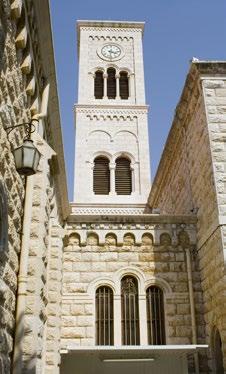

Open: From April to September – 08.30-11.45 and 14.00-18.00; Sunday – 08.00-15.00. Closed to visitors on Christian holidays. Admission is free.
THE ST. JOSEPH CHURCH
is the only church in the Holy Land named after Joseph. The walls are decorated with frescoes depicting the life of the holy family, the dreams of Joseph (foretelling the birth of the Son of God) and his death.
Open: 09.00-11.45 & 14.00-17.30
A reconstruction of a typical Galilee VILLAGE OF THE JESUS PERIOD. The buildings, fields, olive oil presses, winepresses and other minor details give one an impression of travelling back 2,000 years in time.

Open: Monday to Saturday – 09.00-17.00; Ticket price: 22 NIS
EL BABOUR MARKET – MARKET - GALILEAN MILL IS A TRULY UNIQUE PLACE, A MUST-SEE. THERE IS ALSO A HUGE STORE SELLING THOUSANDS OF SPICES, HERBAL AND AROMATIC OILS. THESE ARE IDEAL SOUVENIRS.
OPEN: MONDAY TO SATURDAY – 8.30-19.30
VILLA NAZARETH
This hotel is located in the heart of Nazareth. Here, you can feel the atmosphere of the old city through the hotel’s oriental features, sophisticated design, dining terrace and cozy restaurant and bar. The restaurant serves unique dishes as well as traditional Israeli cuisine, and you can enjoy delicious cocktails in the bar.
Room price: starting at 100 $
Mary's Well Square; Tel. +972 0 4 6000569
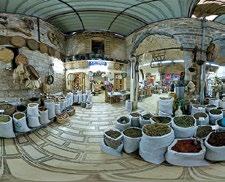
www.villa-nazareth.co.il
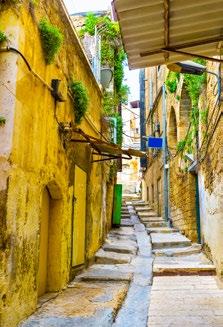

120 VOYAGER 6/2017 NAZARETH
CAESAREA
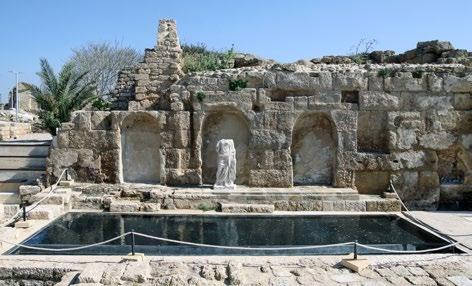
Caesarea is located on the western part of the Israeli Mediterranean, 50 km from Tel Aviv. This ancient city was founded by the Phoenicians. They erected a small fortress in 3 BC, called Straton's Tower. During the Roman rule, Emperor Augustus gave this land to King Herod who built a luxury town called Caesarea. At the beginning of the first century AD, Caesarea became an administrative center of Judea, a province of Rome, and remained so for 600 years.
The coastline has a pleasant, subtropical climate; the seaside season lasts from April to October.
Average temperature: September +25 C, October +21 C, November +17 C, December +12 C.
BARON EDMOND DE ROTHSCHILD BOUGHT LANDS AROUND CAESAREA IN 1948 AND GAVE IT TO THE CITY FOUNDATION. CAESAREA IS THE ONLY PLACE IN ISRAEL THAT IS GOVERNED BY A PRIVATE ORGANIZATION AND NOT A MUNICIPALITY; IT IS THE MOST PRESTIGIOUS PLACE TO LIVE IN ISRAEL.
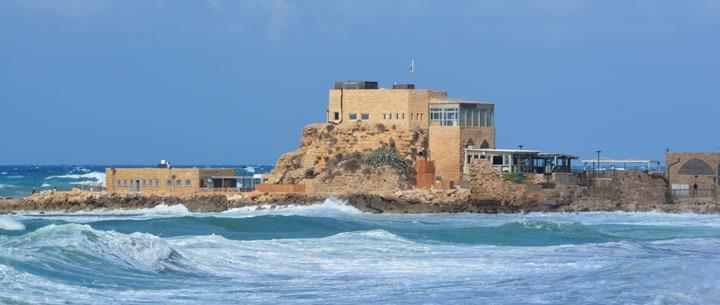
Caesarea has the best beach in Israel. The beach is only free of charge to access during non-working hours. Sdot Yam is one of the most beautiful beaches in Israel. It is located in the city that bears the same name and overlooks the old city ruins. The harbor is very well-equipped.
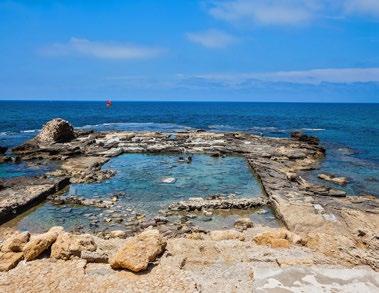
RALLIMUSEUMS
The Ralli Museum is a very popular private collection, a sizable part of which includes an exhibit on Caesarea’s history. Original Salvador Dali works and South African art are presented here.
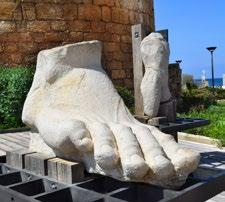
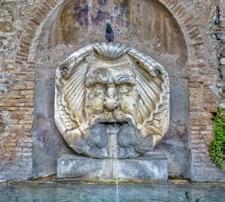

Open: Monday, Tuesday, Thursday, Saturday: 10.3017.00; Friday: 10.30-15.00; Museum closed on Sunday and Monday.

THEATRE _ THE CAESAREA THEATRE IS ONE OF THE MOST ANCIENT DISCOVERIES ON THE TERRITORY OF ISRAEL. IT WAS BUILT DURING KING HEROD'S TIME AND OPERATED FOR 100 YEARS UNTIL THE BYZANTINE PERIOD. THE THEATRE HAS TWO SECTIONS AND SEATS 4,000 PERSONS. THE INTERNATIONAL OPERA FESTIVAL IS HELD IN THE RUINS OF THE ROMAN THEATRE ANNUALLY. A POPULAR JAZZ FESTIVAL IS ALSO HELD IN CAESAREA.
AMPHITHEATER _ THE AMPHITHEATER WAS BUILT DURING THE ROMAN PERIOD; THE OVAL-SHAPED AMPHITHEATER HELD GLADIATORIAL AND ANIMAL GAMES.

121 VOYAGER 6/2017
Rotschild Blv.
PORT_ A LARGE MAN-MADE PORT WAS BUILT IN CAESAREA DURING HEROD’S RULE. THE MODERN PORT WAS BUILT AFTER THE FORMATION OF STATE OF ISRAEL.
CAESAREA
GALILEE IS ONE OF THE MOST BEAUTIFUL PLACES IN ISRAEL. IT APPEALS NOT ONLY TO TRAVELERS BUT RELIGIOUS PILGRIMS FROM ALL OVER THE WORLD TOO; THEY COME TO SEE JEWISH AND CHRISTIAN SANCTITIES. THE BEAUTIFUL NATURAL LANDSCAPE AND MYSTIC PLACES MAKE GALILEE UNUSUALLY ATTRACTIVE.
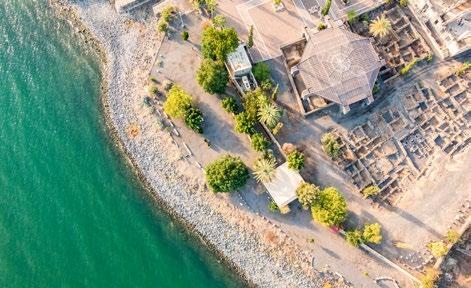
IT IS OFTEN CALLED ISRAEL’S TOSCANA. ITS HILLS ARE COVERED IN VINEYARDS AND WINE FACTORIES.
Kinneret Lake is located in Galilee – a reservoir of clean water that supplies water for the whole country.
MANY PLACES IN GALILEE ARE MENTIONED IN THE NEW TESTAMENT. HISTORIC TOWN, SUCH AS TIBERIAS, AKO AND CAPERNAUM, ARE LOCATED IN THE REGION.

GOLAN HEIGHTS
The Golan Heights are located on the furthest west part of Israel. It is a picturesque, beautiful place with natural parks, amazing views and historical and archeological objects. Gamla is the most striking, with a landscape that is home to eagle nests. Mount Hermon, the highest peak in Israel, is located here as well.
CAPERNAUM
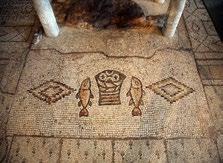
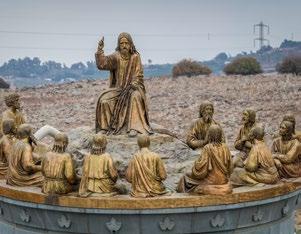
Several churches and national parks are located in Capernaum (Kfar Nahum). This is where the annunciation of the Blessed Virgin Mary took place.
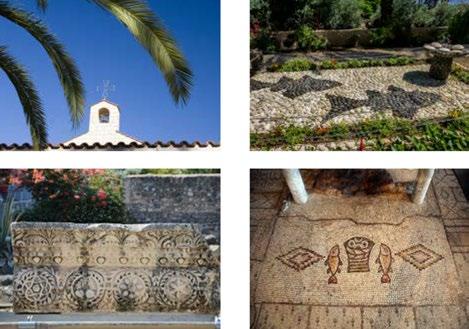
The Greek Orthodox Church of the 12 disciples is located on the north-west part of Capernaum, on the shore of Kinneret Lake.
ACRE _ Acre is an historic part of this coastline city (old Ako) and features on UNESCO’s world heritage list. This is a very beautiful place, with its preserved ancient fortress.
You will be able to witness the footprints of civilization that used to live here and see the structures they built: an ancient fortress, towers, synagogues, churches and mosques.
The city has colorful eastern markets, picturesque beaches, and a port; it hosts annual festivals.
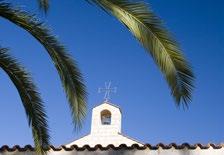
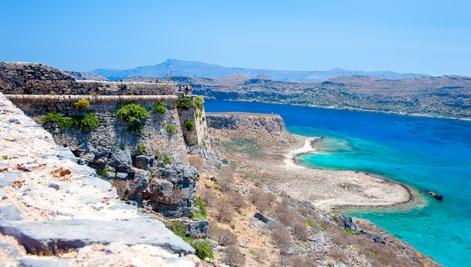
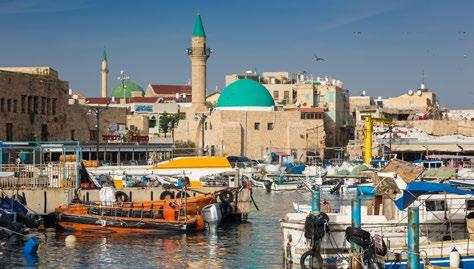
TVERIA, TIBERIAS
This beautiful town of Galilee is a holy city for Christians and Jews. Several churches are located here, including the Church of the Multiplication of the Loaves and Fish (according to the Scriptures, Christ fed 5,000 people here with five loaves of bread and two fish). The tombs of famous rabbis are located here also. Tiberias’ sights include the natural hot thermal healing springs and Turkish baths.
122 VOYAGER 6/2017
GALILEE
GALILEE
EILAT DESERT
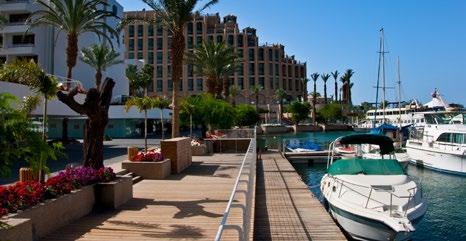
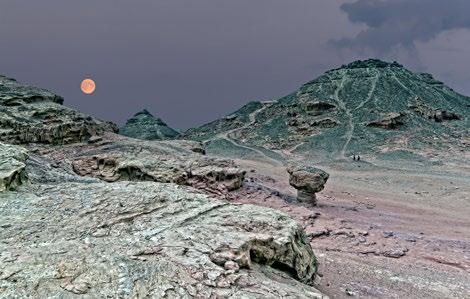

Spend a day in the desert if you are tired of the snow or sea. Unearthly golden beauty awaits you, with a four-hour trip including the amazing landscape, unusual Hidden Lake, and Hai Bar natural reserve. Day and night excursions are offered.
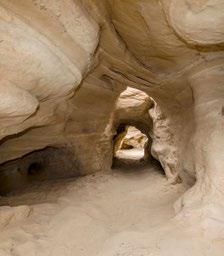

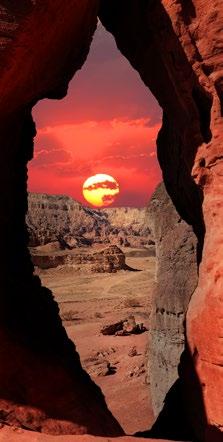
Eilat no longer looks like the old city-port of Ezion-Geber that existed here in the first millennium BC. Eilat is now the country's most popular year-round tourist destination. In the summer. when Israel’s other waters have the temperature of hot soup, the Eilat Red Sea coast remains attractively cool. It is popular even in winter, when the rainy and windy season begins but the weather remains warm and dry in Eilat. Fall, of course, is the velvet season. The sun is no longer hot and stays pleasantly warm, the sea becomes even cooler, though not so much to become uncomfortable – the temperature never drops below 21 degrees.
Diving _ There are wonderful places for beginners and complex sites for experienced divers, underwater currents, the steep undersea rocks,s and coral gardens. Some choose to stay in a hotel and explore the sea through daily boat rides, though it is possible to hire a specially equipped, comfortable diving ship and leave for several days.
CORAL COAST NATURAL RESERVE
This small 1,200-meter stretch of coast lies between Eilat and Taba. Coral reefs are located 20 meters from the coast. Some 2,700 species of fish, sea lilies and urchins live here. The sea bottom is not very deep at about 4 meters, and diving is possible for beginners.

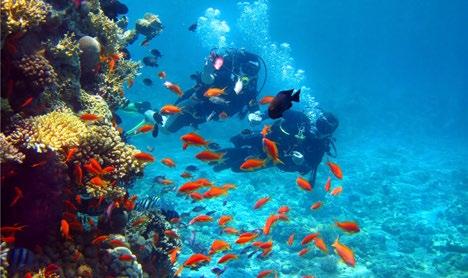
HERODS VITALIS SPA HOTEL
The Herods Hotel luxury spa resort complex has open and closed swimming pools and a fitness center for guests. Every room in the hotel has a cozy guest area and hydro-massage bath.
Standard room price starting at: 200 $
123 VOYAGER 6/2017 EILAT
A MEDITERRANEAN TOWN WITH A FIVE-KILOMETER, BEAUTIFUL AND CLEAN COASTLINE IS BUILT ON THE SLOPES OF MOUNT CARMEL.
HAIFA IS THE CENTER OF CONVENTIONS AND EDUCATION. TECHNION, THE ISRAEL INSTITUTE OF TECHNOLOGY, IS LOCATED HERE. THE INTERNATIONAL EXHIBITION CENTER AND MATAM SCIENTIFIC INDUSTRIES CENTER ARE LOCATED HERE ALSO. IT IS THE THIRDLARGEST CITY IN ISRAEL AND IS THE ARTS AND CULTURAL CENTER OF THE COUNTRY'S NORTHERN REGION. IN ADDITION TO THE MUSEUMS THAT INTRODUCE ISRAEL’S HISTORY AND ART TO VISITORS, HAIFA HOUSES THE JAPANESE ART MUSEUM (WHICH EXHIBITS WORKS OF WORLD IMPORTANCE) AND MARITIME MUSEUM.
HAIFA
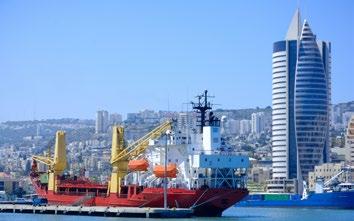
BAHAI GARDENS
The Bahai Gardens will remind you of the hanging gardens featured in the Bible. It is an artificially created zone separat ed into 12 terraces that cascade towards the Haifa shore. The terraces lead to the main symbolic place – a temple that has a 40-meter golden dome.
TIKOTIN MUSEUM OF JAPANESE ART
The Tikotin collection has more than 1,000 exhibits. It is reconfigured every three months, though the principle of Japanese minimalism is always kept intact.
Tikotin houses more than 7,000 modern and traditional Japanese art items, from paintings to prints, antique decorating books, interior objects, ancient weapons and other objets d’art.
Ticket price: 35 NIS
Open: Monday-Thursday
HAIFA MUSEUM OF ART
One of the most important museums in Israel emphasizes the uniqueness of Haifa as a diverse city.
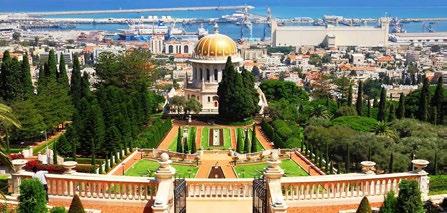


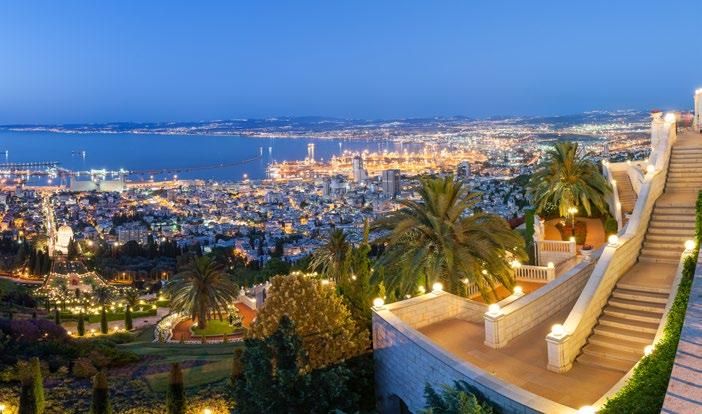
The Haifa Museum houses major works by Marc Chagall, Odilon Redon, Honore Daumier and Andre Mason.
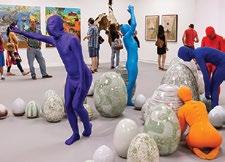
It has an amazing archive of print media and videos from the 1960 up until the present day.
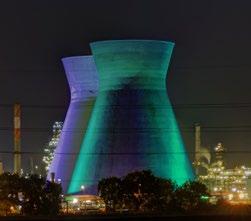
Ticket price: 45 NIS
This beautiful garden is symbolic of the religious doctrine of Bahai. Its founding tenet is a search for true love, peace and harmony. Persian-style terraces, flower beds, alleys and lawns reflect an important part of Bahai’s founder prophet. The gardens, designed by architect Fariborz Sahba, opened in 2001. It became part of UNESCO’s World Heritage list after seven years.
Open 7 days a week: Inner gardens – 09.00-12.00; Outer gardens: 09.00-17.00.
The gardens are open throughout the year and are only closed during rain for safety purposes
Sderot Hatsiyonut 80, Haifa; www.ganbahai.org.il
10.00-19.00; Friday: 10.0013.00; Saturday: 10.00-19.00
Hanassi Ave. 89, Haifa www.tmja.org.il
Open: Monday-Thursday 10.00-16.00; Friday: 10.0013.00; Saturday: 10.00-15.00
Shabbetai Levi St 26, Haifa
www.hma.org.il
124 VOYAGER 6/2017
HAIFA




NETANYA HAS UNUSUAL SANDY BEACHES, A VAST COASTLINE, AND FANTASTIC PLACES FOR WALKING, INCLUDING ITS GREEN PARKS AND NATURAL RESERVES.

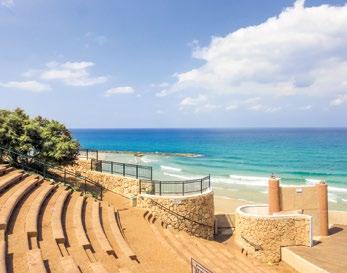


There is no other place in Israel which is equally spaced from any point of the country, so the travelling time is minimal.
Golden beaches stretch for 13.5 kilometers. The sea lift, which takes visitors to the coast, is a unique tourist attraction in Israel. Two high-speed transparent cars can accommodate up to 60 passengers. The walking shoreline is the longest in the country. Swimming season lasts for nine months in this part of the Mediterranean and the average temperature of the sea water is +350C
HAMEI GAASH
NETANYA
NETANYA IS CLOSE TO AN AMAZING PLACE, WHERE VISITORS ARE WELCOME TO AN UNFORGETTABLE VACATION. THIS RESORT IS CALLED HAMEI GAASH (GAASH HOT SPRINGS). THIS KIBBUTZ WAS TURNED INTO A LUXURY RESORT SEVERAL YEARS AGO.

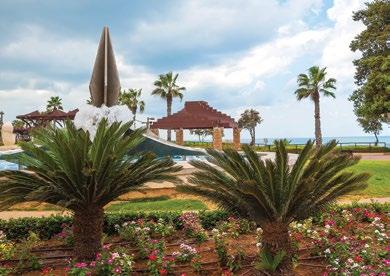

SEASONS TAMNUN BEACH
Hamei Gaash has 32 guest rooms at its customers' disposal; they are located in one-story and two-story cottages. The temperature of the hot mineral water pool ranges between 36°C and 40°C. There is a large swimming pool with 40 thermal mineral-water currents, a wet and dry sauna, a whirlpool center, spa, and swimming pools for adults and children.
www.hameigaash.co.il
The Seasons on the sea is a suites boutique hotel in the center of Netanya city, a few steps from the promenade, near the friendly family-"Seasons Tamnun Beach". The "Seasons" Hotel is an exceptional tourist pearl, within a short walking distance from the city main square (5 minutes), and 25 minutes from Tel–Aviv city. It offers different kinds of suites with large balcony overlooking the magnificent Mediterranean coast view.
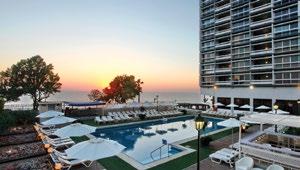
The Seasons hotel creates a spacious, comfortable and elegant ambiance in its facilities both public and private.
Nice Boulevard 1, Netanya
126 VOYAGER 6/2017 NETANIA
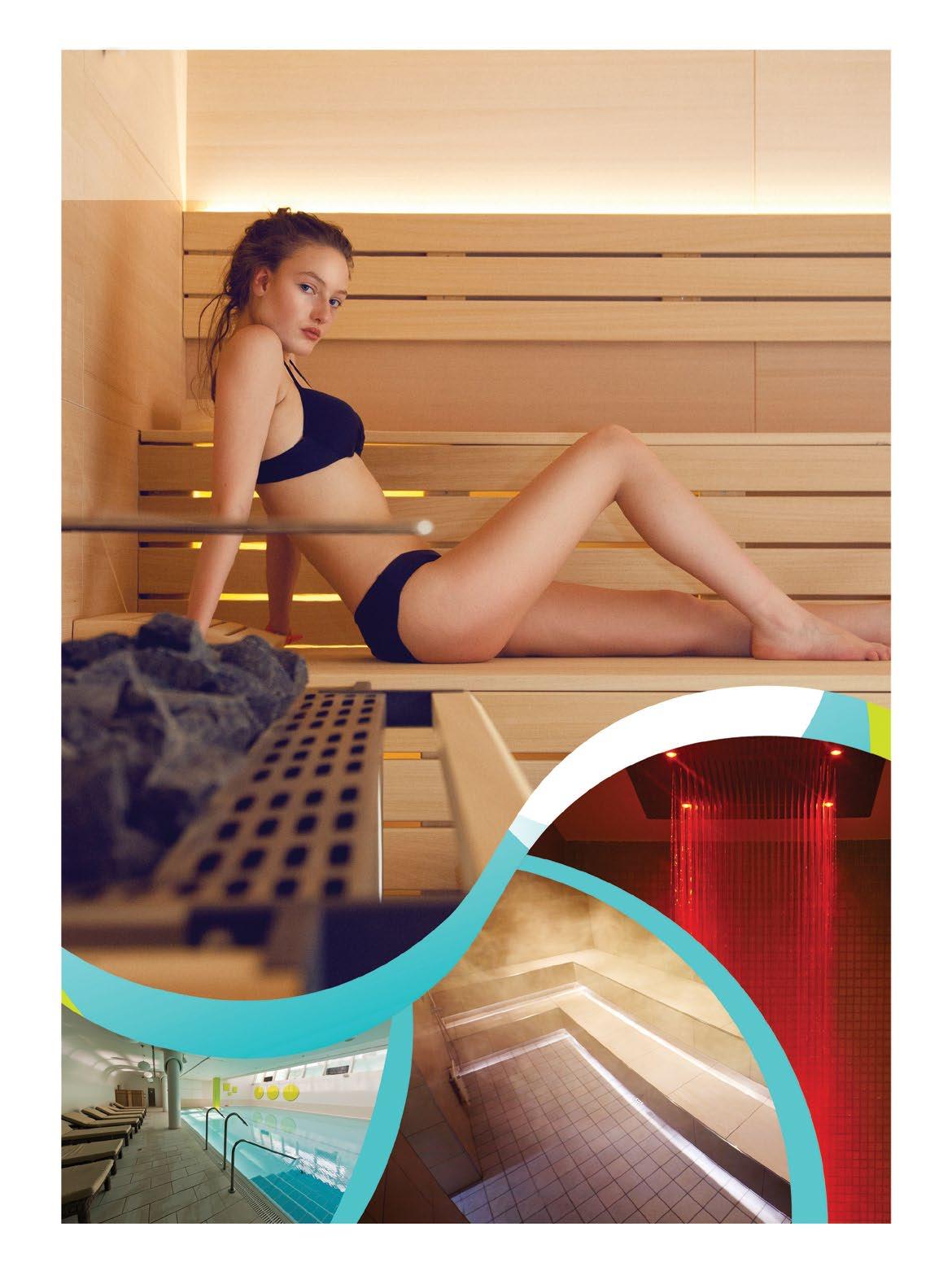
COMFORTABLE INTERIOR YARD 24H SECURITY AND CONCIERGE


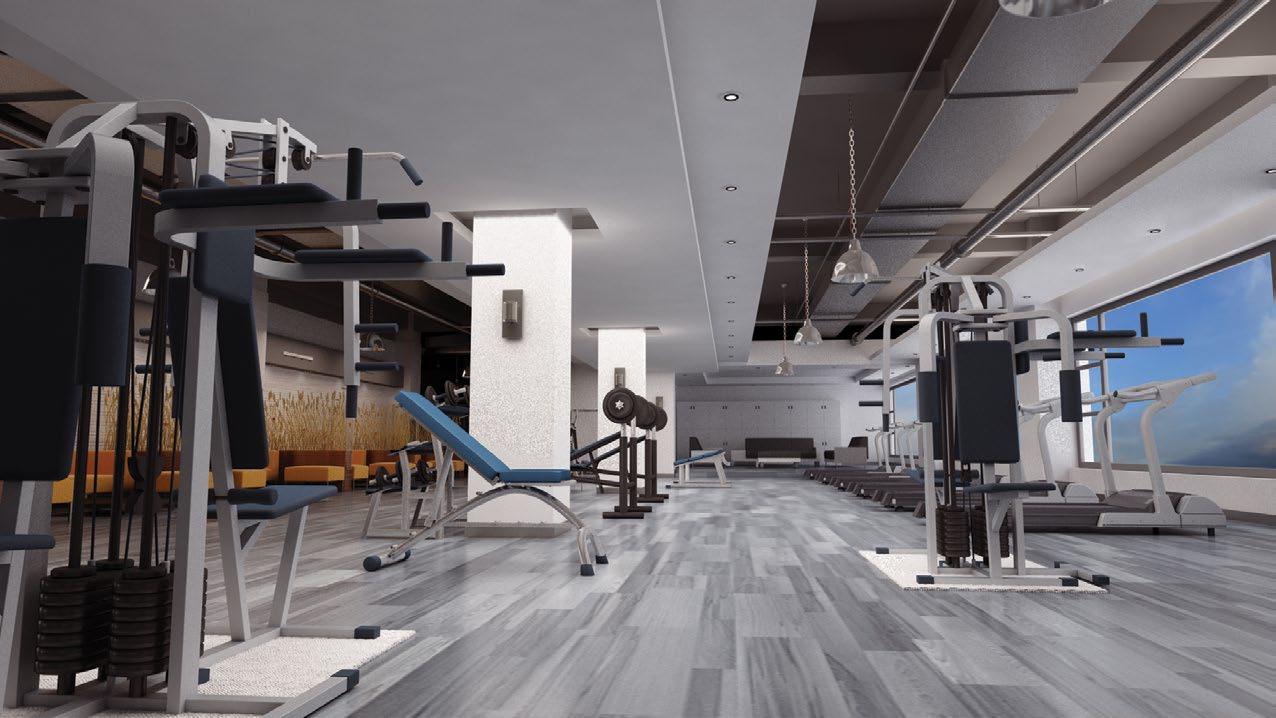
REHAU ALUMINUM DOOR AND WINDOWS
SCHINDLER ELEVATORS OF SWISS QUALITY
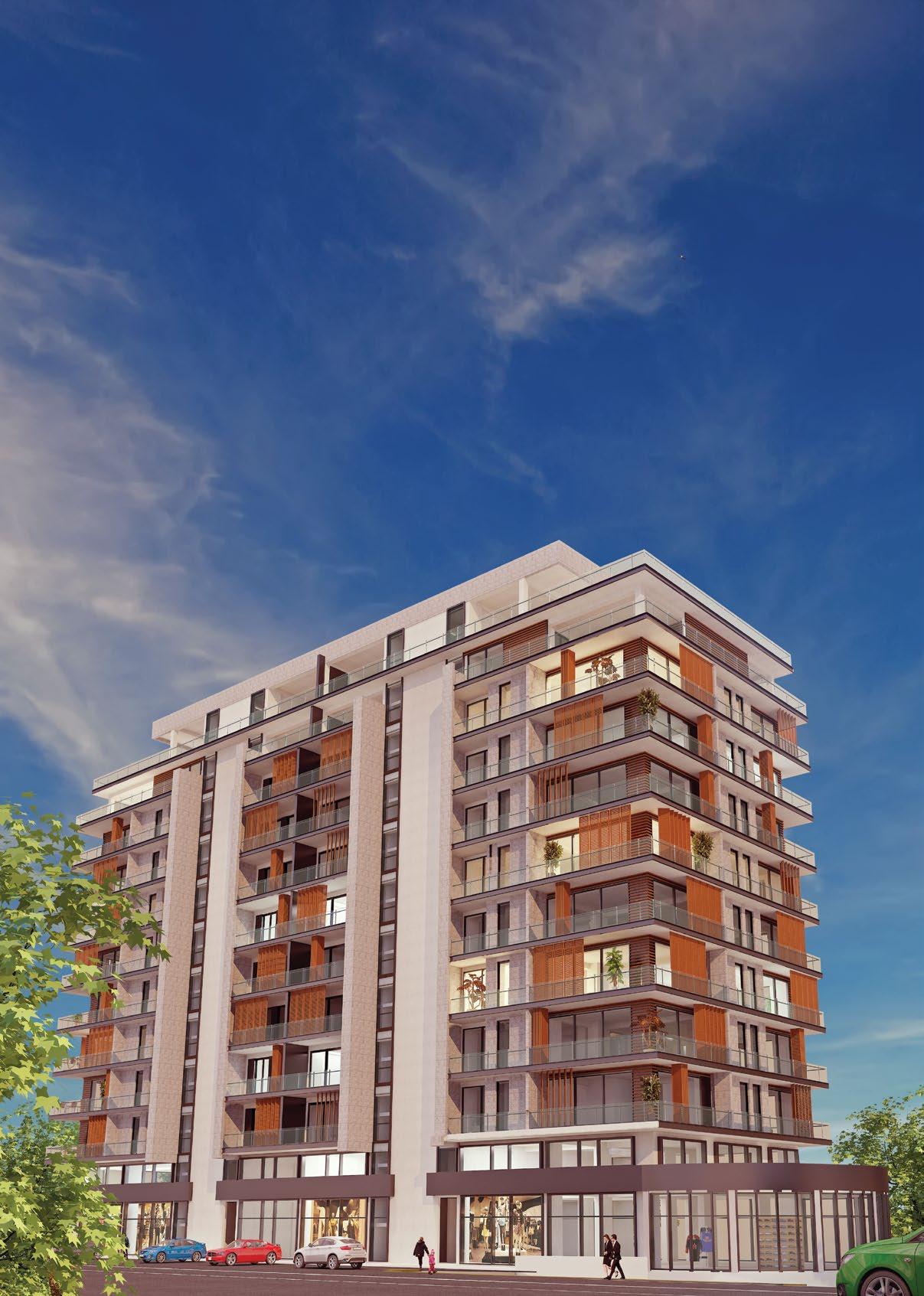
F I T N E S S C E N T E R F O R T H E R E S I D E N T S O F L I V I N G C O M P L E X




COMFORT AND WESTERN QUALITY STANDARDS w w w.vivadevelopment.ge +995 595 612 020 TSKNETI HIGHWAY N 15/17
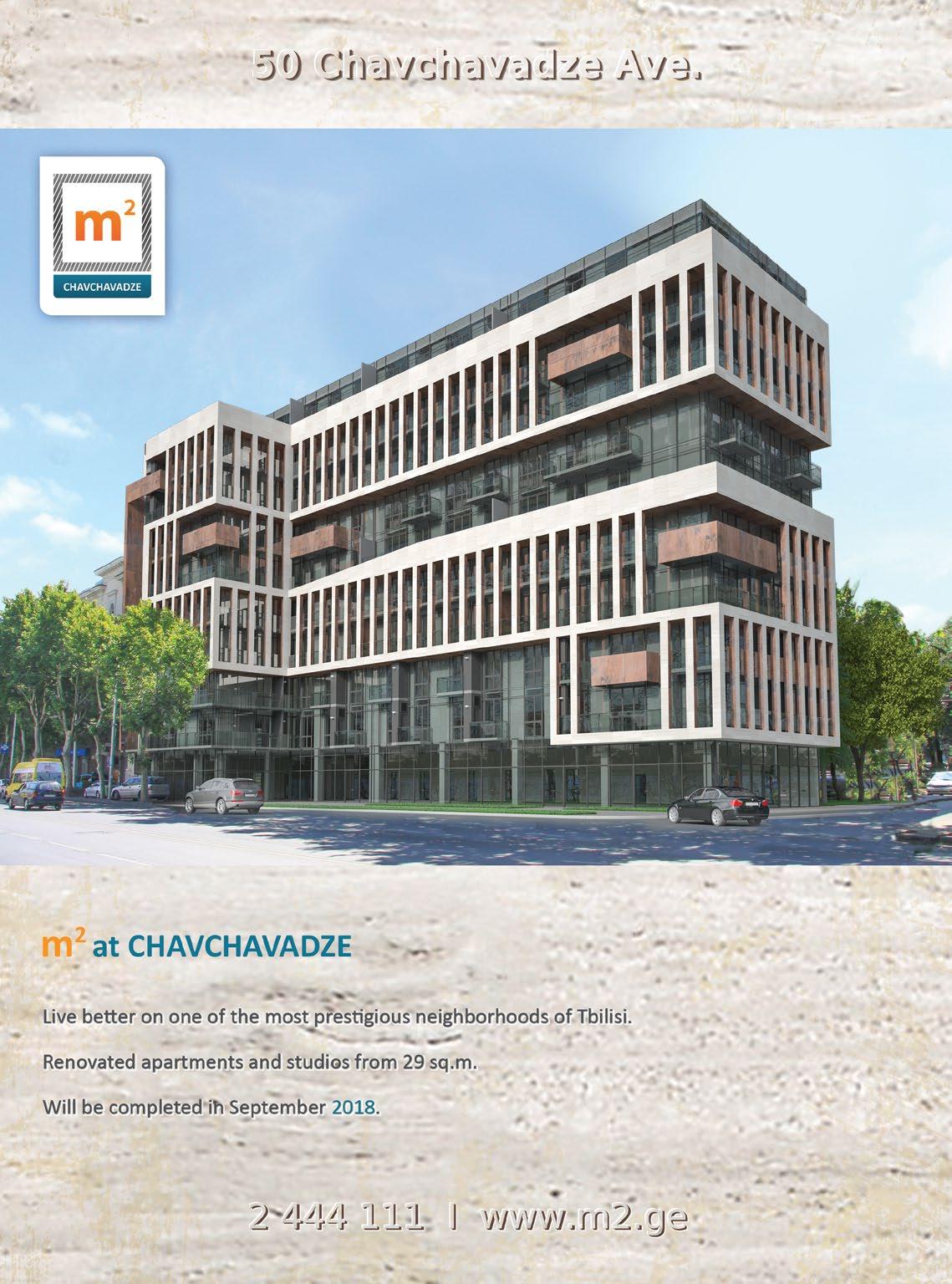

































































































































































































































































































































 BIDZINA BARATASHVILI
BIDZINA BARATASHVILI









 1. Theodor Herzl; 2. The work "Altneuland" ("Old New Land");
3. Flag sketched by Herzl
Tel Aviv Pioneers, 60 families began construction of a new city in the sand.
1. Theodor Herzl; 2. The work "Altneuland" ("Old New Land");
3. Flag sketched by Herzl
Tel Aviv Pioneers, 60 families began construction of a new city in the sand.








































 Zamenhof st 1, 1939. Arch. Yehuda Megidovitz
Derech Begin 35, 1935. Arch. Schlomo Liasowski & Jacob Orenstein
Dizengoff Square
Zamenhof st 1, 1939. Arch. Yehuda Megidovitz
Derech Begin 35, 1935. Arch. Schlomo Liasowski & Jacob Orenstein
Dizengoff Square


































































































































 A factory of the "Ahava" brand is located in the Ein Gedi kibbutz territory, producing cosmetic products from Dead Sea salts and minerals. It is considered the best place to buy body and skincare products.
A factory of the "Ahava" brand is located in the Ein Gedi kibbutz territory, producing cosmetic products from Dead Sea salts and minerals. It is considered the best place to buy body and skincare products.


































































































